











ULTIMATE PORSCHE 911 SIX RS ICONS ON GREECE’S FINEST ROADS






JOHN SIMISTER TAMES THE 1978 BRITISH MOTOR SHOW STAR BRITAIN’S MUSCLE CAR



ROWAN ATKINSON
ACTOR AND ENTHUSIAST ON THE GAUNTLETTERA ASTONS HE’S OWNED


























JOHN SIMISTER TAMES THE 1978 BRITISH MOTOR SHOW STAR BRITAIN’S MUSCLE CAR



ROWAN ATKINSON
ACTOR AND ENTHUSIAST ON THE GAUNTLETTERA ASTONS HE’S OWNED







Monte Carlo Rally veteran rediscovered after 56 years


WHY VALUES ARE BOOMING, SPOTTERS’ GUIDE AND MUCH MORE THE MARKET

DIMMA RENAULT 5 GT TURBO
Wildest take on France’s hot-hatch favourite
WORKS LANCIA FULVIA HF
Founder of a rally dynasty still thrills on the road



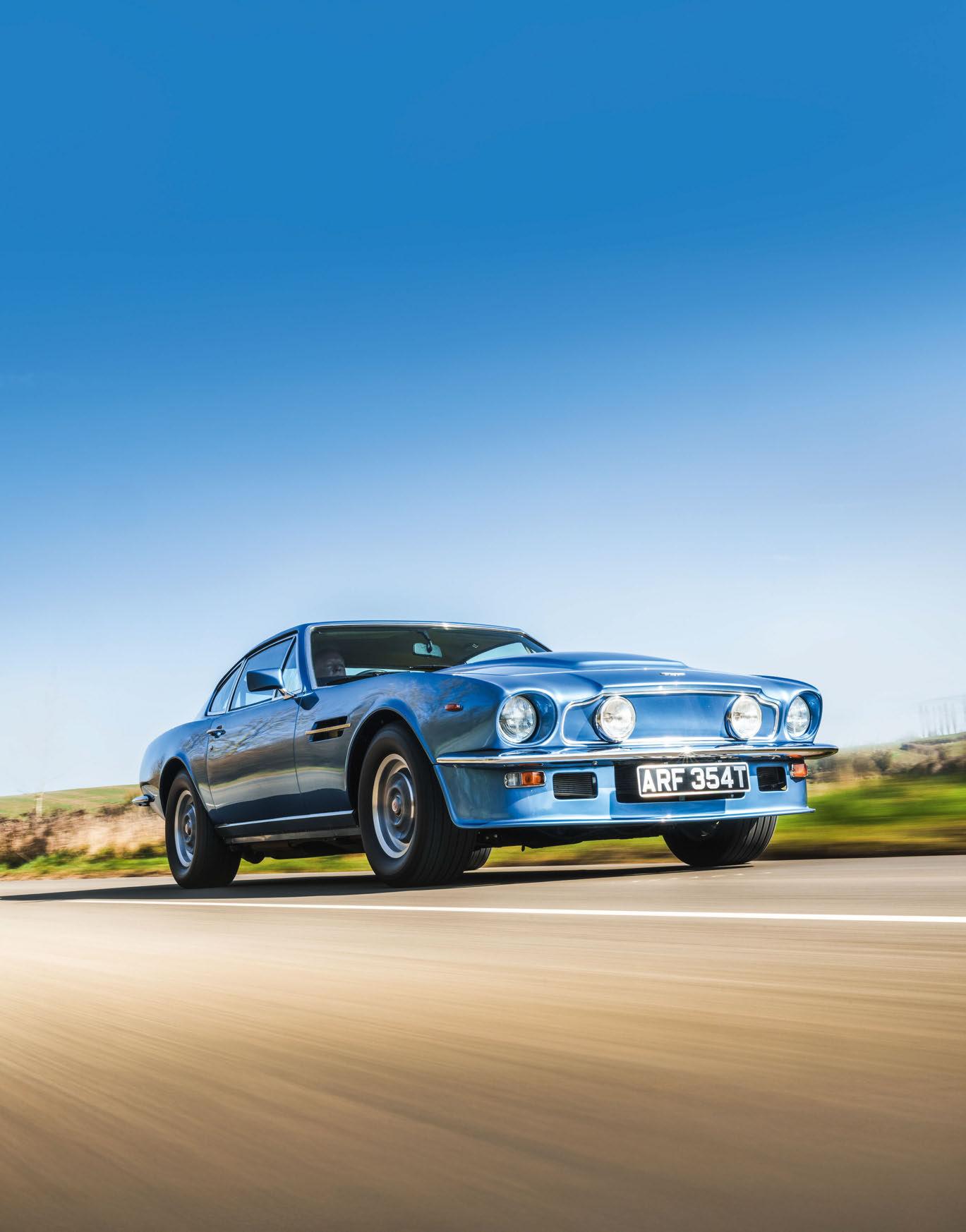
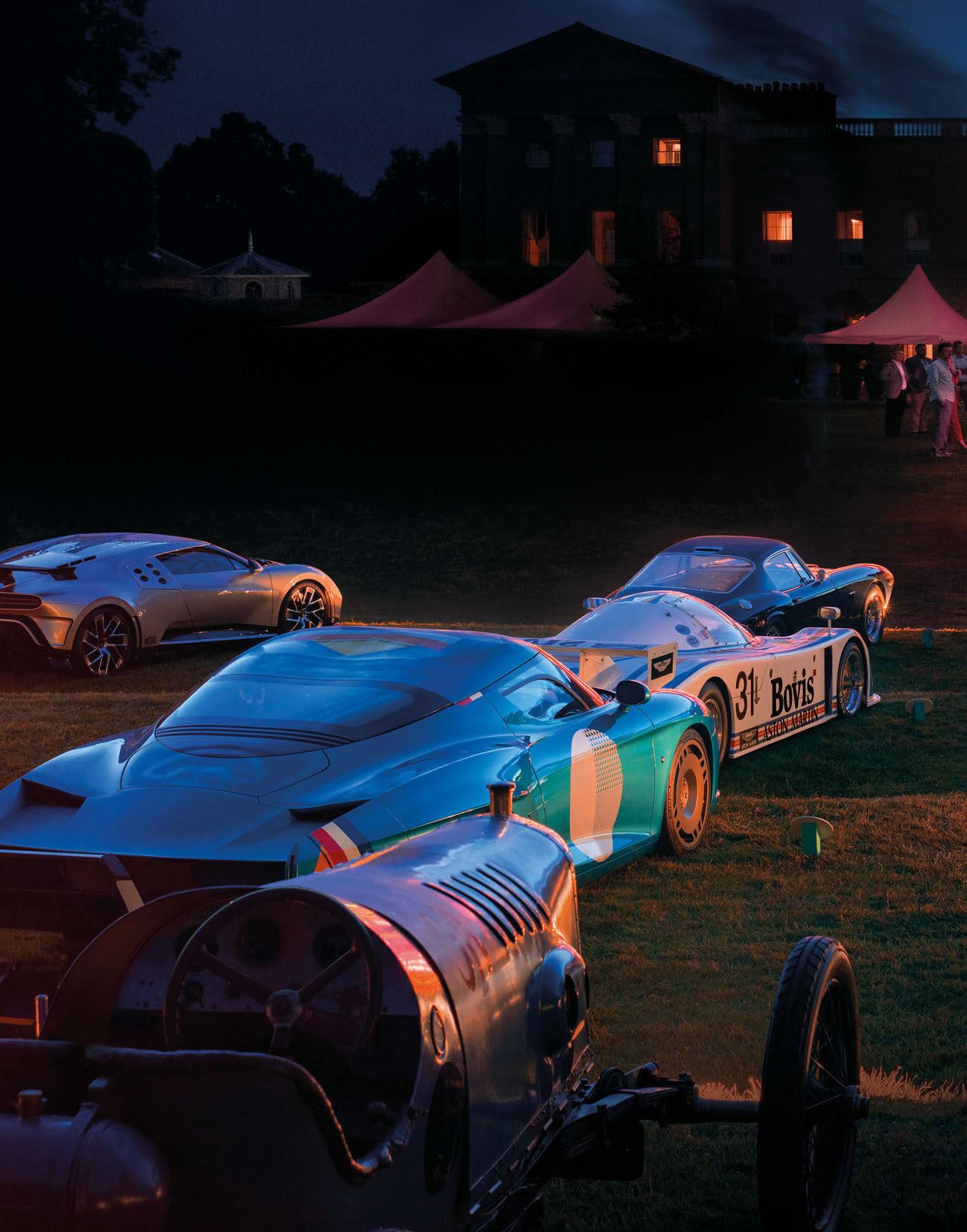











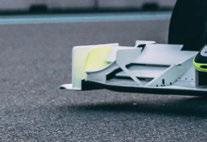






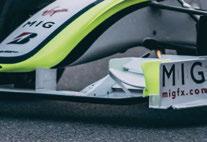





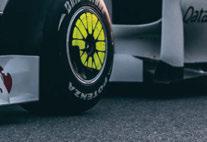







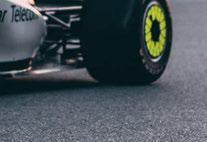













PAGE
‘THE GREEN HILLS OF MYSTRAS, IN THE PELOPONNESE, ARE OUR BASE FOR FOUR DAYS OF GREEK DRIVING ACTION’
PORSCHE 911 RS
ODYSSEY
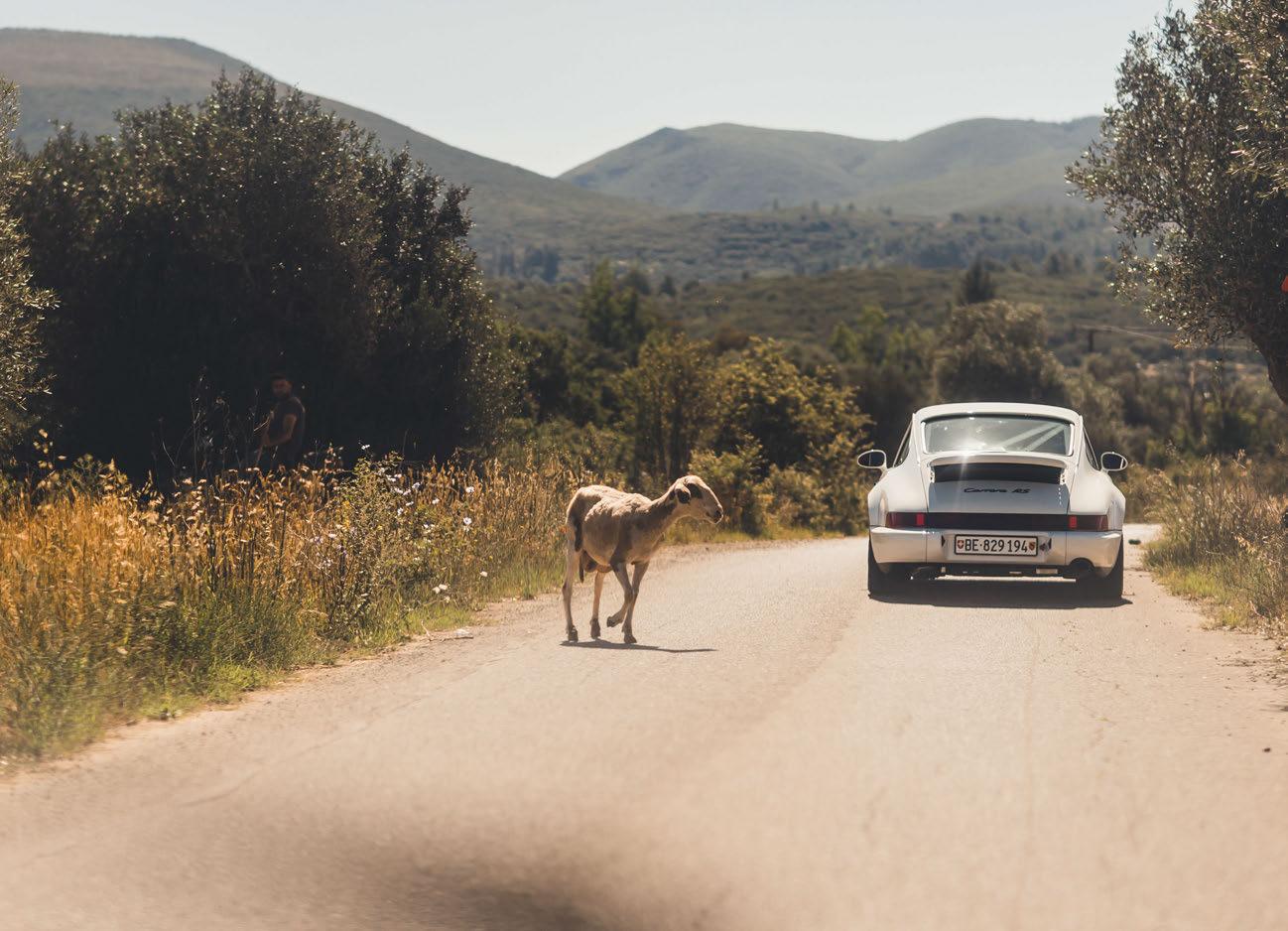






























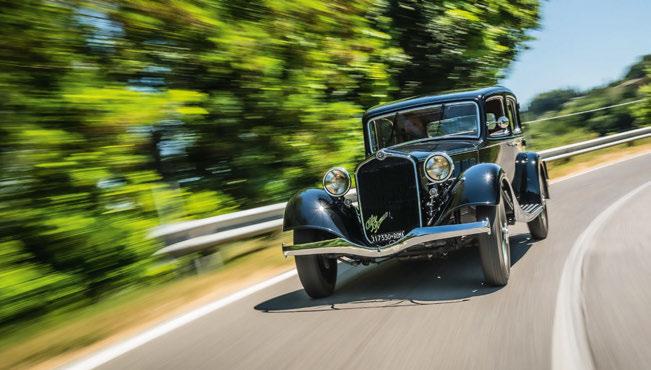

BESPOKE FINANCE FOR LUXURY, CLASSIC AND SUPERCARS.
Finance from £25k to £2m designed for collectors, enthusiasts and drivers.




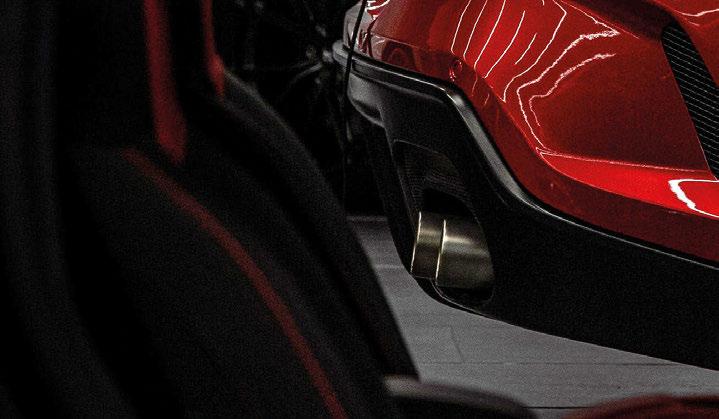
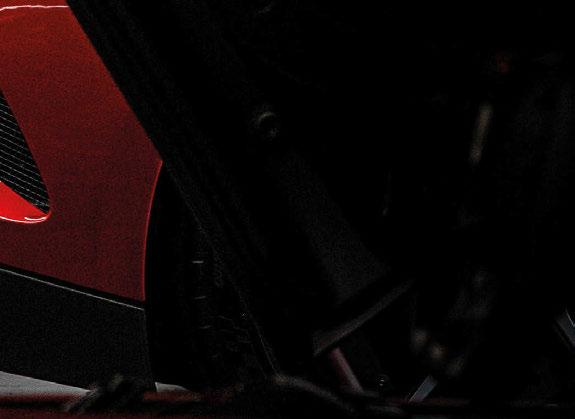

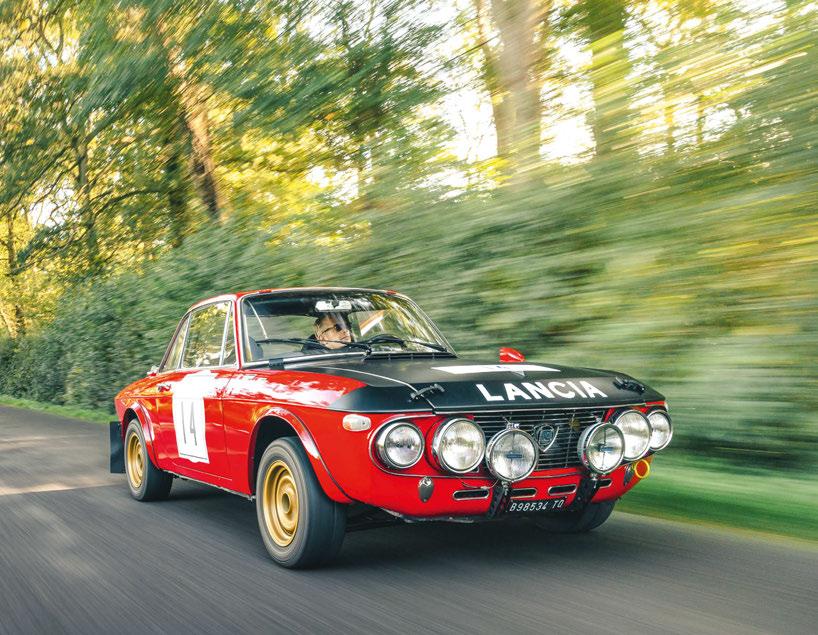
ASTON MARTIN
V8 AND VANTAGE 50
Getting to grips with the 1978 Motor Show V8 Vantage PLUS spotters’ guide, market movements and Rowan Atkinson on his cars
ALFA ROMEO 6C 68
Behind the wheel of the Bulgari 6C 2300 Gran Turismo, a now-rare saloon
DIMMA RENAULT 5 78
Wide-bodied hot hatch for wideboys PLUS crazy 500bhp Renault 5 Turbo 3E
AC ACECA BARN-FIND 88
‘Lost’ international rally car emerges from its 56-year garage slumber
INDIANAPOLIS MUSEUM 98
Exclusive insight into the reopening of this petrolhead paradise following a $60m refit
WORKS LANCIA FULVIA 104
Braving the ex-Sandro Munari veteran of the 1970 Rally Sweden and Targa Florio
THE OCTANE INTERVIEW 114
Ford, Chrysler and GM veteran industry executive, Robert ‘Maximum Bob’ Lutz
PORSCHE 911 RS ODYSSEY 118
Heavenly Greek drive of six ultra-rare, hardcore 911s with Porsche’s own engineering legend Roland Kussmaul
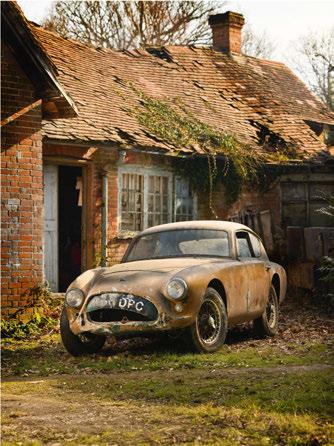











EVENTS & NEWS 16
Eyes on the best classic car events around the world; all the important dates for your diary; motoring impact of Trump’s tari s
COLUMNS 37
Jay Leno, Derek Bell, Stephen Bayley and Robert Coucher exercise free speech
LETTERS 45
Former Bentley designer’s vision for Bristol
OCTANE CARS 130
Alfa Romeo Due o gets closer to completion
OVERDRIVE 138
Thrilled by the latest Toyota GR Yaris
GONE BUT NOT FORGOTTEN 142
Ford design chief Eugene Bordinat
GEARBOX 144
Automotive sculptor Jonny Ambrose
ICON 146
London’s designer department store, Liberty CHRONO 148
Debunking apparently water-tight myths
BOOKS 150
Focusing on South Africa’s own BMWs
GEAR 152
Stu you don’t need but will definitely want
THE MARKET 156
Insider knowledge, auction news, stats, cars for sale, BMW M5 V10 buying guide
AUTOBIOGRAPHY 186




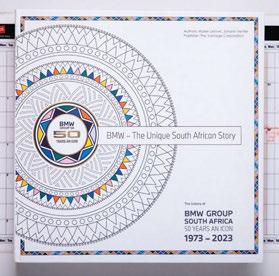
Belgian former F1 star Thierry Boutsen
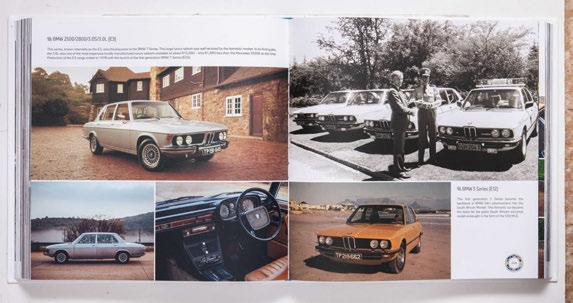


FEW CARS DEFINED upmarket British motoring better during my youth than the Aston Martin V8. Introduced when I was four and finally killed off just as I formally became an adult, it was an ever-present symbol of bespoke British brilliance, embodying a sense of cultural and social superiority that had otherwise evaporated along with those rusty UK cars further down the foodchain.
To some there was something a bit brassy about the Aston, while others mentally formed the perfect two-car garage with it sitting alongside an R107 Mercedes SL – unhelpfully, the highest praise or the greatest condemnation, depending on your perspective on who might own such a garage. There was certainly something rather louche about the V8 and V8 Vantage, and they were more likely to be seen wallowing into the Guards Polo Club than carrying captains of industry into The City on a weekday, but you have to remember that, back then, the top end of British motor manufacture was pretty barren. The E-type was limping towards its slow death as a V12 boulevardier, Bentley offered a taste of the same plutocracy but in a far less wieldy package, while Rolls-Royce saw no reason to stop ploughing on with overproducing the Shadow.
There was genuinely very little beyond the Aston that came with the same sense of sporting complacency as standard, nor was there much in the way of anything else that proudly declared its owner more edgy, more interesting, less uptight and more rakish than their well-heeled peers in British luxury cars. Even so, I honestly can’t recall the whole ‘British Muscle Car’ thing being quite so prevalent in period as it seems to be today. It was there for sure, because knowledge of the specs was serious playground currency, yet it never seemed to define the V8 Vantage as it does now.
What I do know is that, while the ailing and failing British motor industry floundered through two decades of calamitous decline, nothing waved the flag more vigorously for that – and for the standards, luxury and quality of engineering traditionally associated with it – than the mighty Aston Martin V8.

AMY SHORE
‘What could be better than working with rare Porsches on mountainous roads under blue skies and by warm seas? Roaring through the Greek hills with this incredible convoy reminded me that I have the best job in the world.’
Amy’s beautiful photographs illustrate Robert Coucher’s feature on pages 118-126

MATT HOWELL
‘I’ve been rebuilding cars since I was 15 but I’m definitely not brave enough to take on the AC Aceca in this issue. However, I’m hoping in a couple of years I’ll get to photograph it again – looking a bit smarter than it does now.’
This ex-Monte Carlo Rally AC was hidden away for 56 years. Turn to pages 88-96.

DAVID LILLYWHITE
‘I’m fascinated by the way car museums are evolving, and I’ve been following the plans for the Indianapolis Motor Speedway Museum’s complete revamp after a chance conversation with one of the team several years ago. It’s turned out even better than imagined.’
Full story: pages 98-102.

RM 43-01 FERRARI
Manual winding tourbillon movement
70-hour power reserve (± 10%)
Baseplate and bridges in grade 5 titanium and Carbon TPT®
Split-seconds chronograph
Power-reserve, torque and function indicators
Case in microblasted titanium and Carbon TPT®
Limited edition of 75 pieces
ISSUE 265, ON SALE 28 May
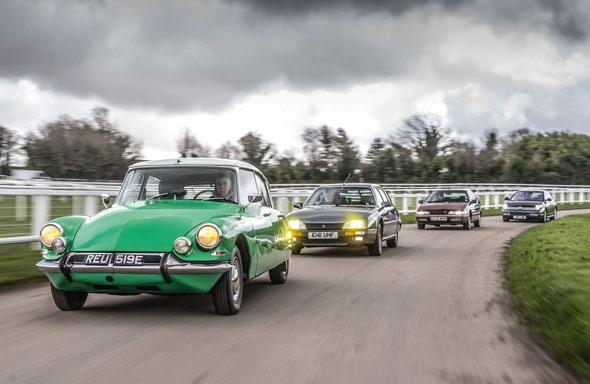

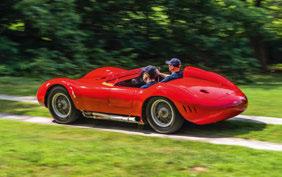
Celebrating the finest of France’s line in Space Age luxury machines
Maserati 200 S
Wonderfully preserved example of Modena’s racing hero
Tanks for the memories Mongolian manoeuvres with Czech military vehicles
Innocenti C
Continental charm with a British sports car heart
Jaguar Project 7
On the road in a D-type-inspired modern legend
(Contents may be subject to change)
Editor-in-chief James Elliott james@octane-magazine.com
Associate editor Glen Waddington glen@octane-magazine.com
Art editor Robert Hefferon roberth@octane-magazine.com
Markets editor Matthew Hayward matthew@octane-magazine.com
Founding editor Robert Coucher
Contributing
Inquiries to info@octane-magazine.com
Group advertising director Sanjay Seetanah sanjay@octane-magazine.com
Account director Samantha Snow sam@octane-magazine.com
Dealer account manager Marcus Ross marcus@octane-magazine.com
Lifestyle advertising Sophie Kochan sophie@octane-magazine.com
Advertising inquiries
Tel: +44 (0)1628 510080 Email: ads@octane-magazine.com
SUBSCRIPTIONS, BACK ISSUES, HELPLINES
Subscribe online at octane-magazine.com/subscribe
Tel: +44 (0)20 3966 6695
Email: customerservice@octane-magazine.com
Back issues can be purchased at octane-magazine.com
140 Years of the Motor Car
The Greatest Endurance Drive in History
7o Years since Stirling Moss won the 1000 Miglia
50 Years of the Porsche 911 Turbo
A showcase of the 7 generations of the Iconic Model
The Rolls Royce Phantom
100 Years since the successor to the Ghost was launched
The Aston Martin DB Era (1947-1972)
To celebrate 60 years since the DB6 was launched
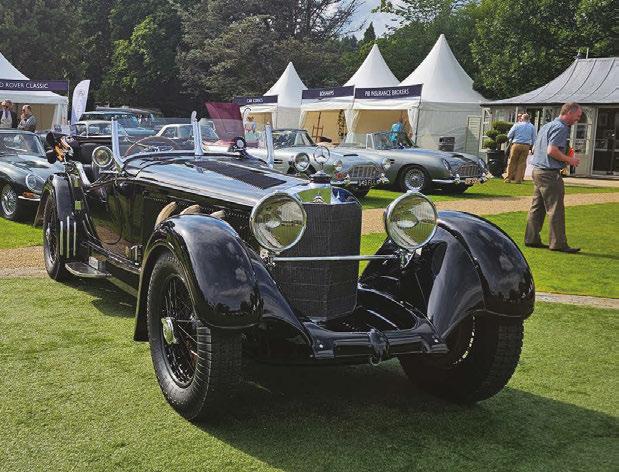




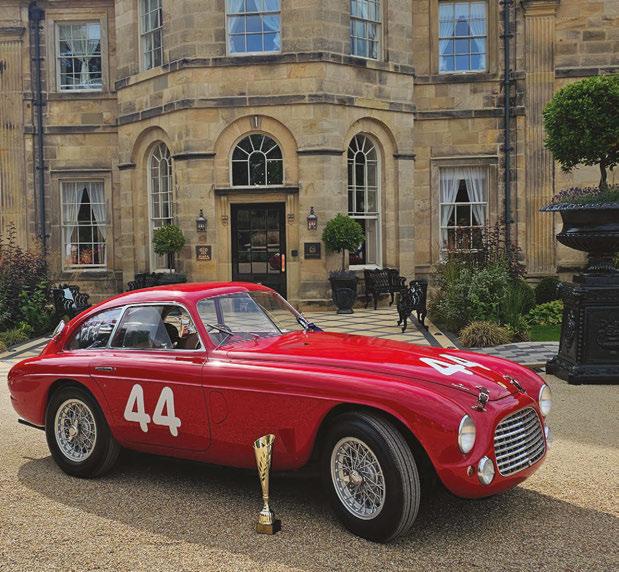

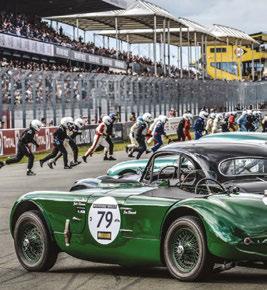
To take advantage of our special offer and get three issues of Octane for £5,either visit octane-magazine.com/subscribe or call +44 (0)20 3966 6695





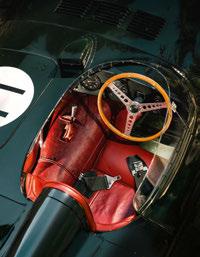













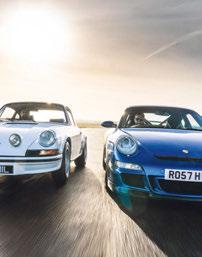


AND MANAGEMENT
Managing director Geo Love Editorial director David Lillywhite
Marketing and events manager Rochelle Harman
Marketing and events executive Jasmine Love
Accounts administrator Jonathan Ellis accounts@hothousemedia.co.uk
Magazine operations coordinator Elaine Briggs
Hothouse Media Unit 16, Enterprise Centre, Michael Way, Warth Park Way, Raunds, Northants NN9 6GR, UK www.hothousemedia.co.uk
Syndication and licensing Geo Love geo @hothousemedia.co.uk
Germany Ulrich Sa erling Japan Shiro Horie Netherlands Ton Roks France Yan-Alexandre Damasiewicz Hong Kong, China Chi Chai Chan
Octane is available for international licensing and syndication



Octane is available at the usual branches of UK shops, such as Tesco, Sainsbury’s, Waitrose and independents, as well as WH Smith High Street and Travel. You can order the latest magazine or a back issue, delivered direct to your door, by visiting octane-magazine.com
Download the Octane Magazine app on Android or Apple and you will be able to enjoy the new issue. Alternatively you can source the digital edition via either Zinio or Readly.
Subscribe
You can find superb offers on print and digital at octane.co.uk/subscribe . Order before 16 May to start with issue 265.
Problems with your subscription? Please email customerservice@octane-magazine.com
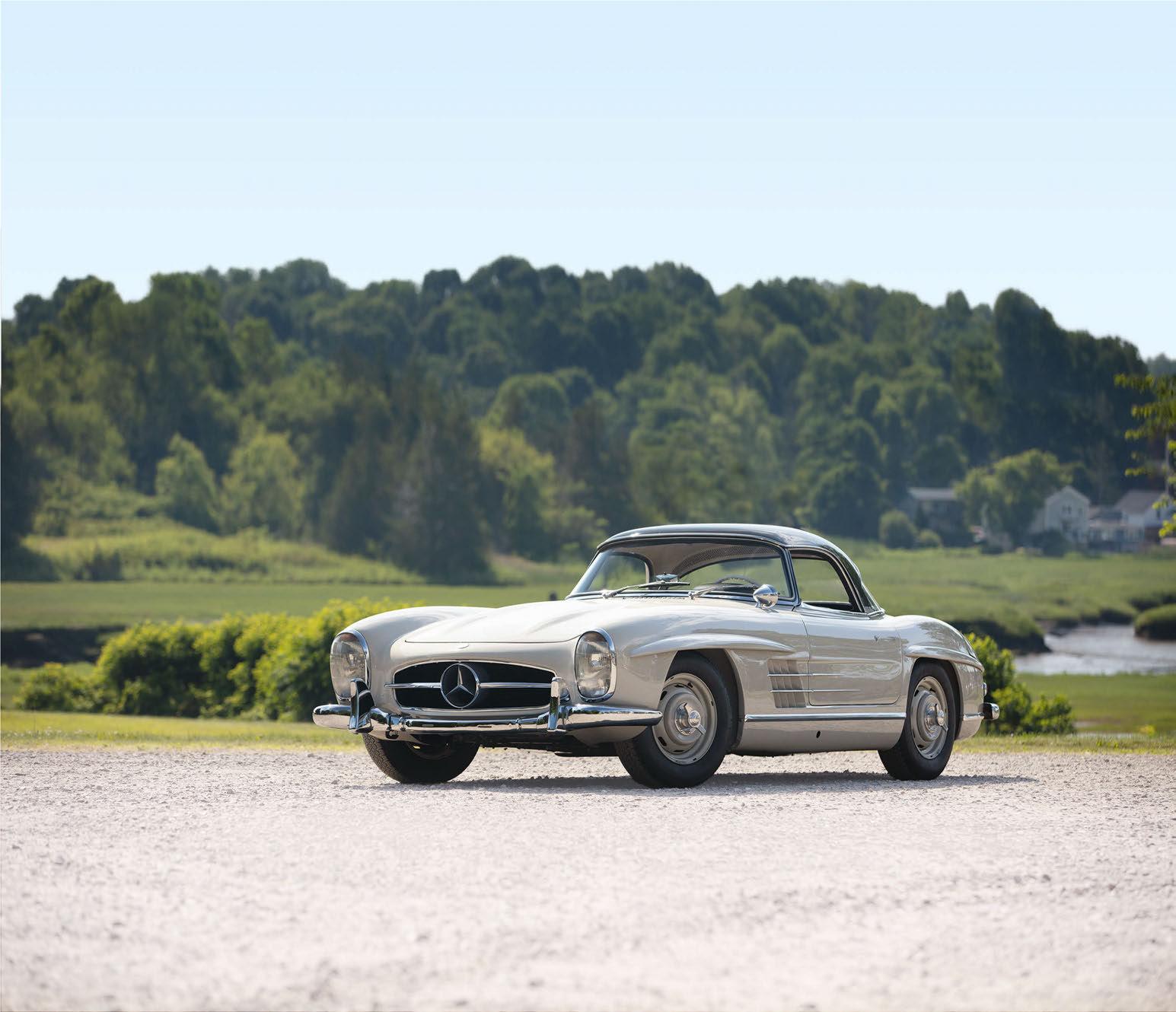
MERCEDES-BENZ 300 SL ROADSTER Late-Production, Disc-Brake, Alloy-Block Example I Among the Finest and Most Desirable 300 SL Roadsters in Existence
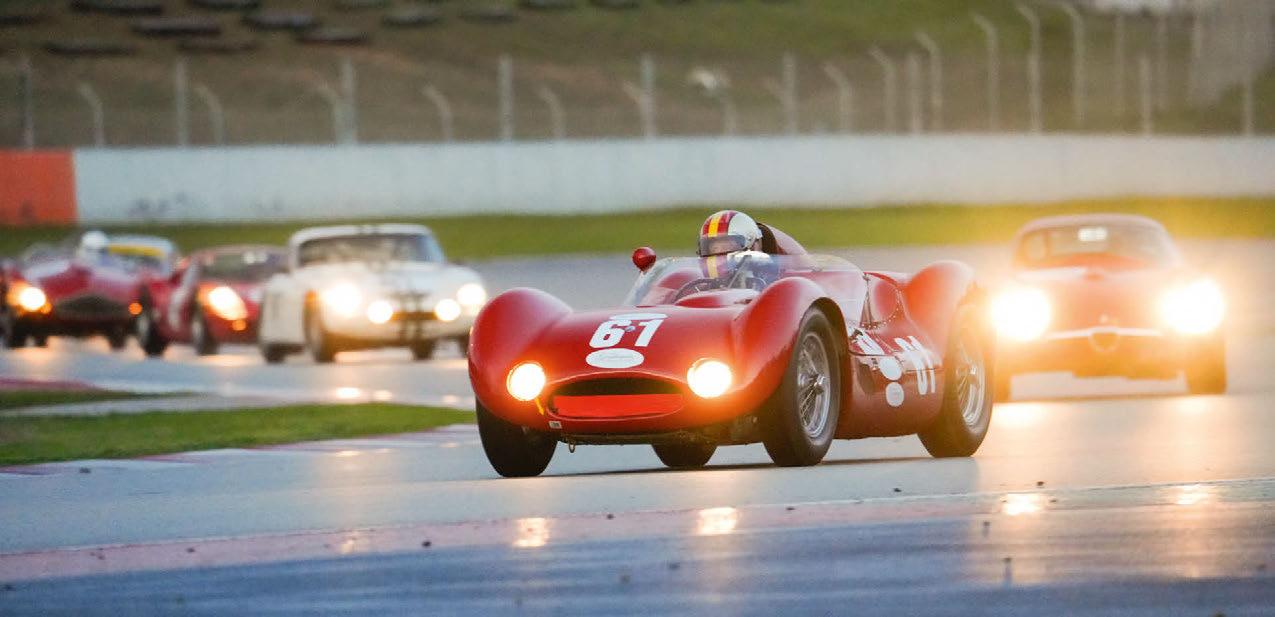
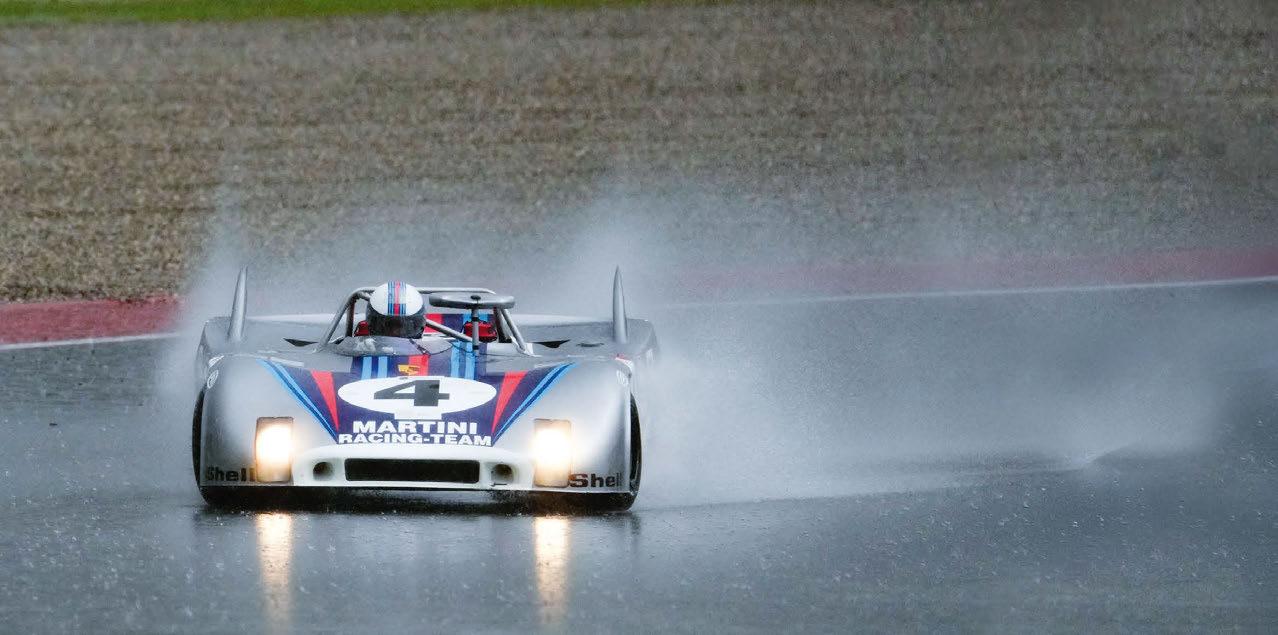
21-23 March
Peter Auto’s historic racing season kicked off at the 4.7km Barcelona-Catalunya circuit in Montmeló, Spain, in weather the origanisers charitably described as ‘capricious’. The ten grids ranged from 90-minute 2-Litre Cup to Group C, and featured some 300 cars and big-name drivers such as Emmanuel Collard (Ferrari 550 Prodrive) and Jan Magnussen (Lola T70 Mk3B GT). Winners included Oliver Bryant (2.0L Cup), Belgian Emile Breittmayer, who tiptoed through a late shower to win Classic Endurance Racing 1 in a Lola T70 Mk3B, and Emmanuel Brigand (Classic Endurance 2) in his Porsche 935. Porsche 962s dominated Group C, Ralf Kelleners and Ivan Vercoutère winning Race 1 and young Austrian Lukas Halusa taking Race 2. PhotoClassicRacing


Rally
The Globe Generations Rally 27-30 March

The event’s fourth running took place in Yorkshire,

Targa Classica 10-13 March
David Reidie beside his 1927 Bugatti Type 35B during the fledgling Australian rally that covered 1000km and 80 time trials in New South Wales and Victoria. Graeme Sedgwick
VSCC LCES Welsh Weekend 29-30 March
A GN Touring on the wild and (very) windy Welsh moors near Newtown, Powys, during the Light Car and Edwardian Section tour.
Peter McFadyen
Concorso d’Eleganza Japan 15-16 March
The event formerly known as Concorso d’Eleganza Kyoto made a welcome return after a six-year break. The impressive new venue was the Yakushi-ji Temple complex in Nara, and Phillip Sarofim’s 1970 Bertone Stratos HF Zero scooped both Best of Show and People’s Choice from the field of 60 classics, which included this 1953 Alfa Romeo 1900 SSZ Coupé. Wayne Batty
Classic Car & Restoration Show
24-26 March
The event at the NEC for enthusiasts who like to get their hands dirty (backed by Practical Classics) attracted more than 150 clubs and over 1300 classic cars.
Michael Stokes
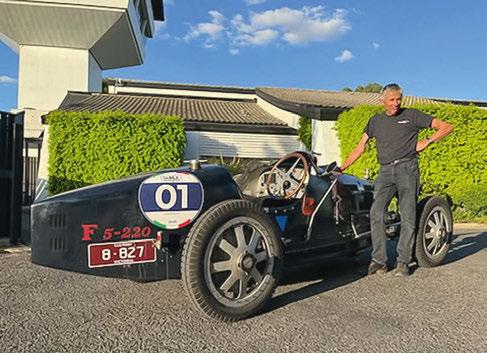
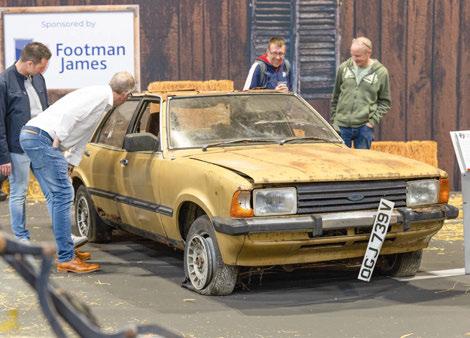
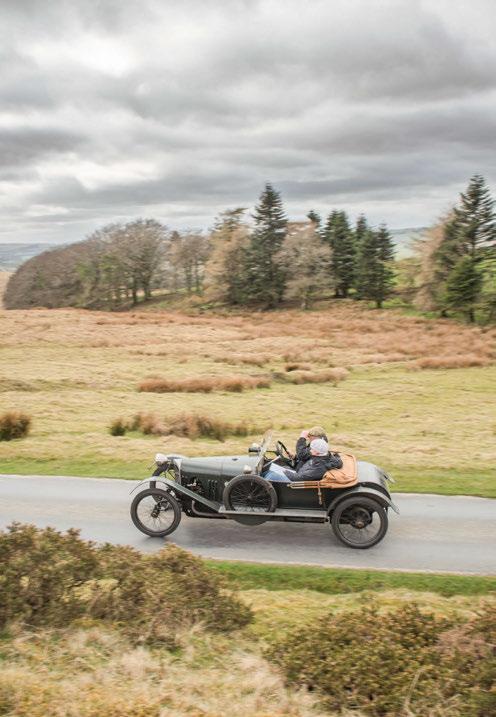
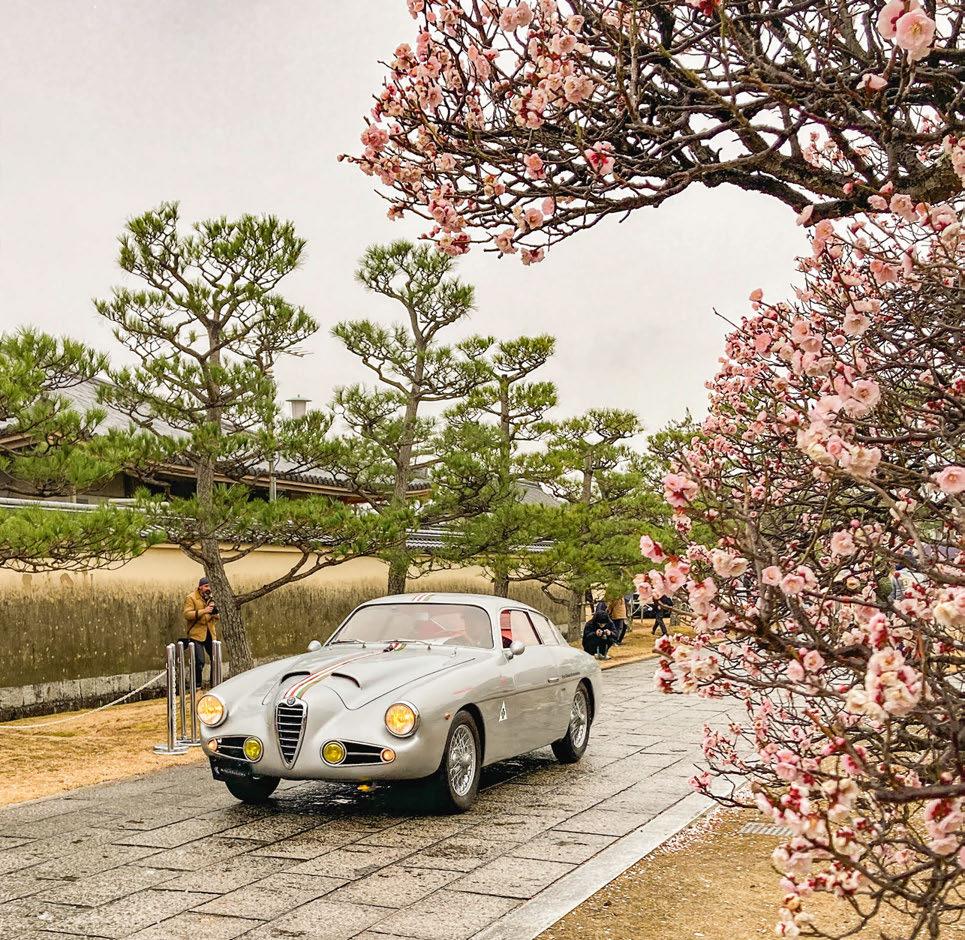

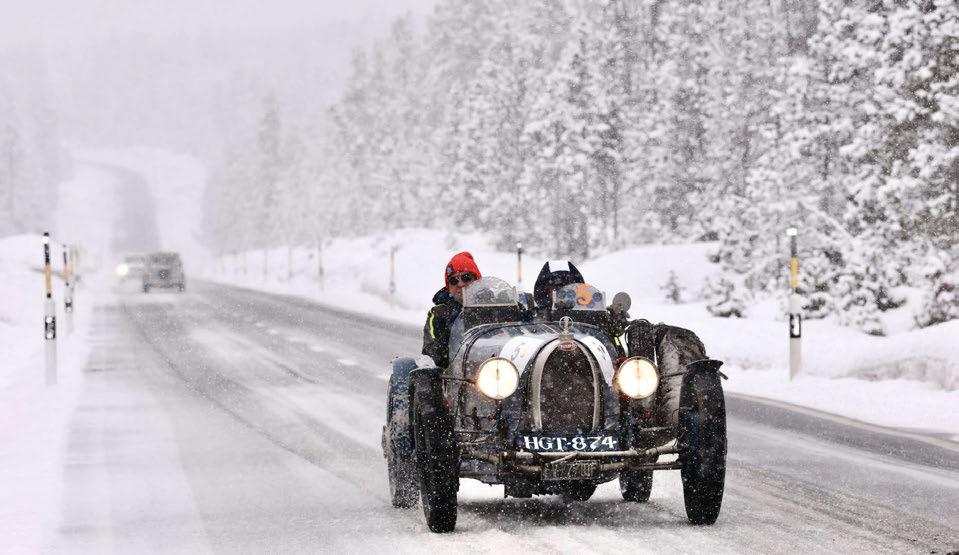
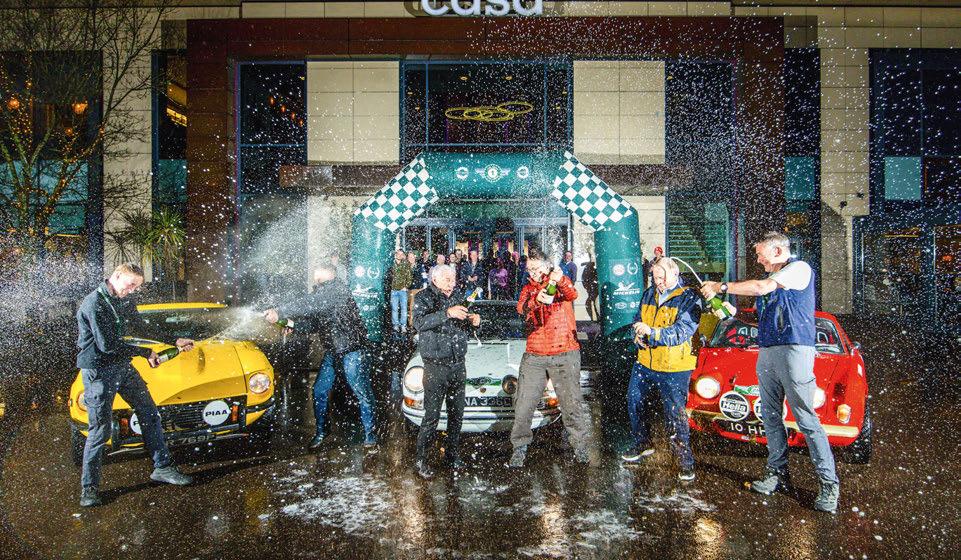

FROM TOP Coppa delle Alpi 13-15 March
There was plenty of snow for this 880km blue riband event, won by Alberto Aliverti and Francesco Polini in their 1937 Fiat 508C, with Ma eo Belo i and Ingrid Plebani second in their 1927 Buga i Type 37A (pictured), and another 508C, the ’38 example of Francesco and Giuseppe Di Pietra, in third.
1000 Miglia
HERO Challenge One: the Peak District
22 March
There were 105 entries for the first of 2025’s three events in this series, with 2022 HERO Cup Champion Stephen Owens, navigated by Iain Tullie in a 1965 Porsche 911, winning by 25 seconds a er six regularities and tests. John King and Mike Cochran had a superb debut to take second in their 1967 Lotus Elan +2, while Dave Alcock and Miles Fieldhouse were third in a ’76 Datsun 280Z.
Will Broadhead
VSCC
Herefordshire Trial
15-16 March
The Singer Juniors of Martyn Quilter (173) and Stephen Arkell with the house at Chandos that has its origins in the late 16th Century. The event was the final round of the VSCC’s 2024-25 Trialling season.
Peter McFadyen
Sea and Air Freight

Worldwide Customs Brokerage
Race and Rally Transportation
International Storage
UK and European Trucking
Vehicle Registration

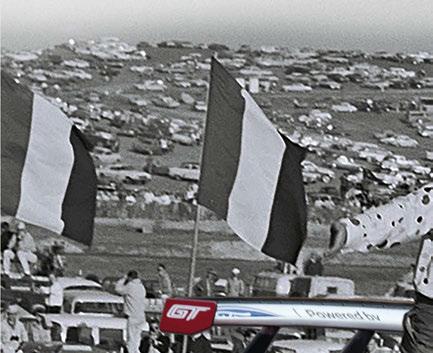

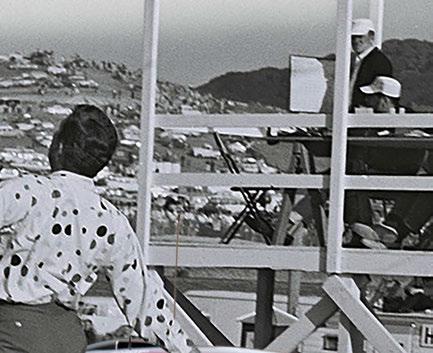





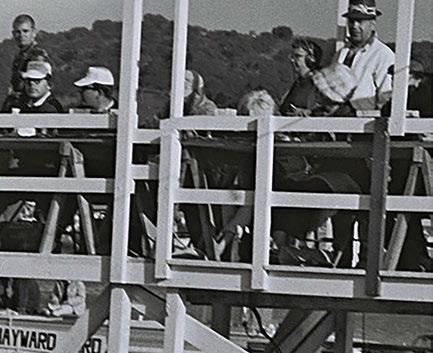
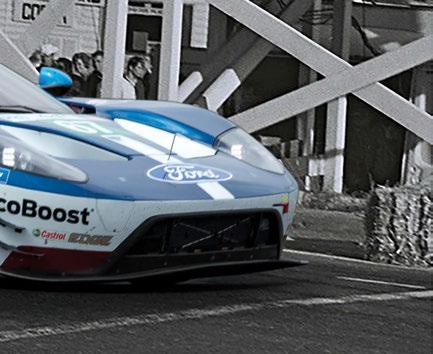

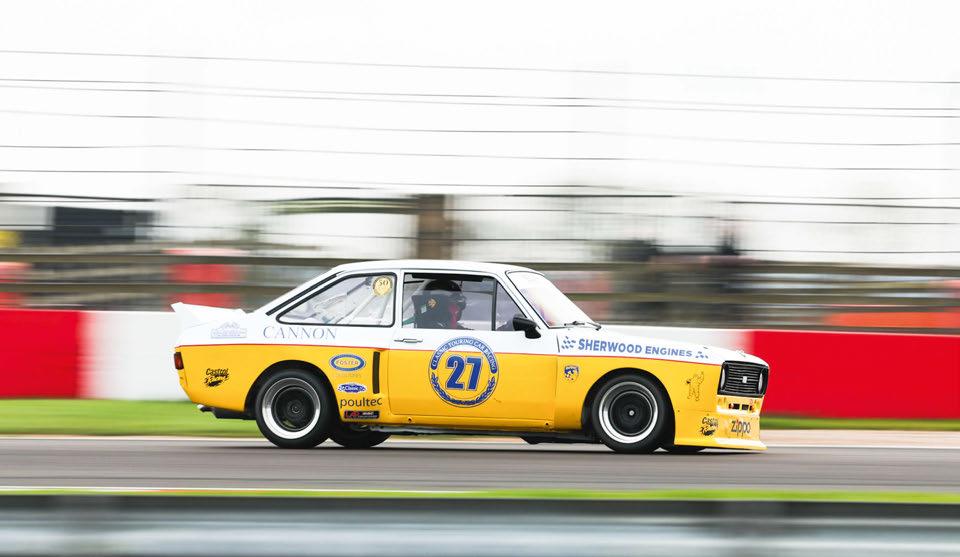
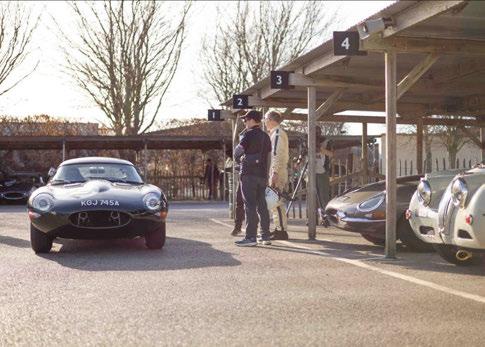

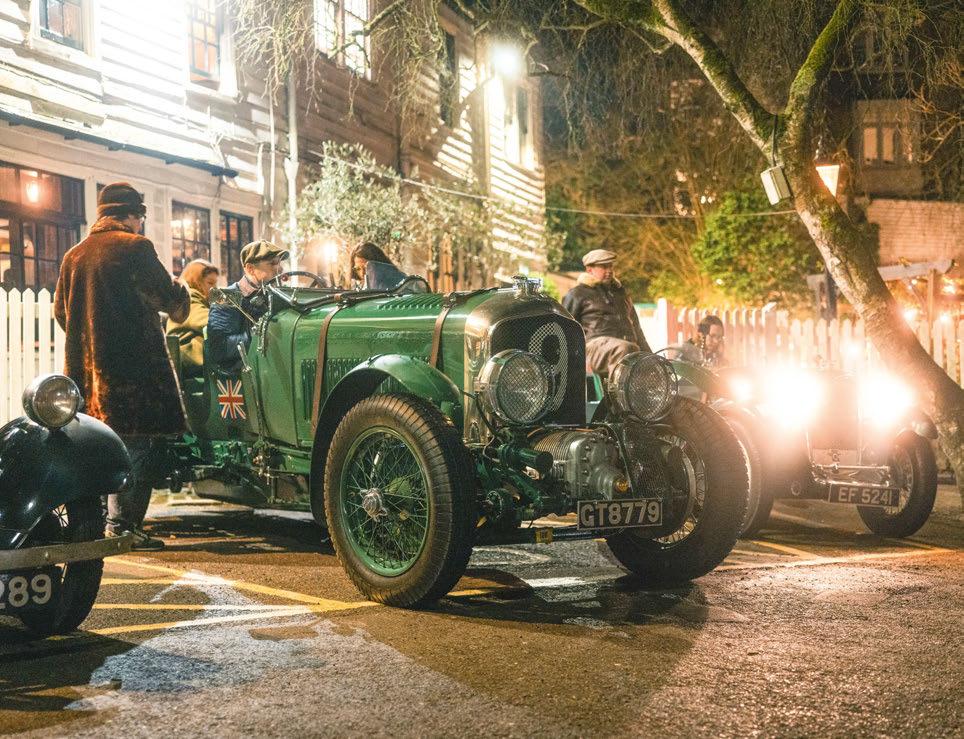
CLOCKWISE, FROM TOP
BARC
22-23 March
Martin Reynolds in his modified Ford Escort Mk2 helps kick o the Classic Touring Car Racing Club season at Donington Park during the BARC’s spring curtain-raiser.
Ben Lawrence
12-15 March
Two weeks a er its racing debut in Qatar, the THOR Aston
Martin Valkyrie of Ross Gunn, Romain de Angelis and Alex Riberas came home ninth overall, two laps behind the winning Penske Porsche 963. Harry Hurst
22 March
Organised by James Wheeler and Federico Gö sche Bebert, this dead-of-night tour through the British capital set o from The Spaniards Inn, Hampstead, and finished at Duke of London in Brentford. With participants coming from as far away as Belgium and France, it a racted a wonderful selection of pre-war cars.
Tom Shaxson
CKL Track Day 20 March
The CKL Classic Cars team and customers had brilliant weather and an unsurprisingly top-tier selection of classic racers and road cars for its spring track-day at Goodwood. CKL’s next Goodwood track-day is on 19 August.
Simon Aldridge



24-26 April
Manx Classic
On the Isle of Man, roads are closed to allow competition on three hillclimb courses. manxmotorracing.com
24-27 April
Anantara Concorso Roma
A new concours d’elegance for 2025, held in central Rome and open exclusively to Italian cars. anantaraconcorsoroma.com
25-27 April
La Jolla Concours d’Elegance
Classes this year include one for ‘Iconic American Hot Rods’. lajollaconcours.com
25-27 April
Veterama Hockenheim
Germany’s Hockenheimring hosts a giant autojumble that attracts upwards of 2500 traders. veterama.de
25-27 April
GP de France Historique
At Circuit Paul Ricard, with a special appearance by the R25 that helped Renault win the F1 Constructors’ title 20 years ago. grandprixdefrancehistorique.com
26 April
Air/Water
Porsches of all eras and types are displayed at the Orange County Fairgrounds in California. air-water.com
26-27 April
Classic Car Boot Sale
Pre-1990 vehicles and sellers of vintage goodies gather at King’s Cross in London. classiccarbootsale.co.uk
27 April
Drive It Day
Classic car owners take to the road to promote the historic vehicle movement and to raise money for Childline. driveitday.co.uk
27 April
Simply British at Beaulieu
Look out for a special display marking the 40th birthday of the Sinclair C5. beaulieu.co.uk
27 April
Bicester Motion April Scramble
With a central display of ‘Record Cars’ – which in this case means both record-breakers and cars
that appeared on album covers. bicestermotion.com
27 April – 1 May
California Mille
This year’s rally runs from Half Moon Bay to Calistoga. californiamille.com
1-4 May
Le Flair
Crews tackle regularity sections and time trials on the roads around Lake Geneva. le-flair.com
1-4 May
Simola Hillclimb
Furious hill-climbing action in Knysna in South Africa. speedfestival.co.za
2-4 May
Donington Historic Festival
With new grids including one for GT3 racing cars from the period 2006-2012. doningtonhistoric.com
2-4 May
NSRA Nostalgia Nationals
The hottest of hot rods put on a show at Santa Pod. santapod.co.uk
2-4 May
The Greenbrier Concours d’Elegance
Ferrari is to be the featured marque at the West Virginia concours this time round. greenbrierconcours.com
2-17 May
Best of Peru
An unforgettable drive through southern and central Peru that includes a stop at Machu Picchu. sceniccartours.com
3 May
Brooklands Italian Car Day
Italian cars descend on Brooklands and the track at the adjacent Mercedes-Benz World. brooklandsmuseum.com
3-4 May
Audrain Veteran Car Tour
Pre-1908 cars meet up at the Audrain Automobile Museum in Rhode Island for a 50-mile tour. audrainmotorsport.com
3-4 May
Keels & Wheels
Beautiful cars and boats share the limelight at Lakewood Yacht Club just outside Houston, Texas. keels-wheels.com
4 May
VSCC Curborough Speed Trials
The VSCC Speed Championship gets underway at Curborough. vscc.co.uk
7-30 May
Japan Classic
A marathon journey through Japan from Kobe to Nieseko. destination-rally.com
8-11 May
Terre di Canossa
Three loops through Tuscany, each bringing the crews back to the seaside town of Punta Ala. terredicanossa.canossa.com
8-11 May
Durbuy Rally
The pocket-sized Belgian city of Durbuy hosts a regularity rally for
cars built between 1920 and 1975. zoutegrandprix.be
10 May
Rattletrap
Pre-1942 hot rods and pre-1960 motorcycles blast along the sand at Crowdy Bay Beach in Australia. drag-ens.com.au
11 May
VSCC Suffolk Tour
The first of 15 regional tours set to be run by the VSCC in 2025. vscc.co.uk
12-15 May
Vintage Shamrock
Pre-1946 cars explore Ireland, tackling regularity sections and special tests along the way. rallytheglobe.com
16-18 May
Cavallino Classic Modena
A small but perfectly formed concours d’elegance for Ferraris, held in Enzo’s hometown. cavallino.com
17 May
Aston Hill Climb 100
The hillclimb after which Aston Martin was (partly) named is celebrated with a show featuring veteran, vintage and classic cars. astonhill100.com
17 May
Hagerty Hill Climb
‘Run what ya brung’ fun at Shelsley Walsh Hill Climb. hagerty.co.uk
17-18 May
Beaulieu Spring Autojumble
Vendors roll into Beaulieu laden
with spare parts, books, models and automobilia to tempt you. beaulieu.co.uk
17-22 May
Rallye des Princesses
Richard Mille
The ladies-only rally starts in Paris and ends in Saint-Tropez this time. peterauto.fr
17 May – 22 June
Peking to Paris
Motor Challenge
Endurance rallying’s ultimate test. New for 2025 is an invitation class for classic 4x4s. hero-era.com
21-29 May
Pyrenees XL
Around the Pyrenees, starting and finishing in Biarritz and crossing into Spain and Andorra. bespokerallies.com
23-25 May
Concorso d’Eleganza
Villa d’Este
At Lake Como, cars compete in classes including ‘Go Big or Go Home’ – reserved for exemplars of 1980s and 1990s excess! concorsodeleganzavilladeste.com
23-25 May
Spa Classic
First-rate historic racing at Spa, in front of a crowd of 20,000. peterauto.fr
24-25 May
Prescott Historique
Cars spanning almost a century of motoring history charge up Prescott’s hillclimb course. prescotthillclimb.co.uk
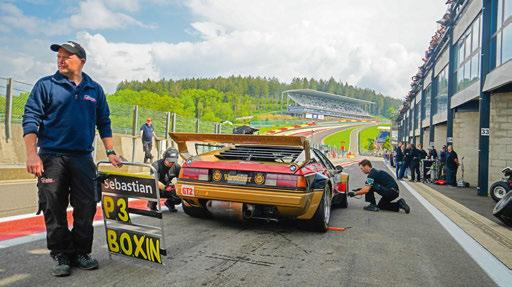

Secure your place; make travel plans
Alentejo and Extremadura Tours
September and October 2025
Bookings are open for these classic car tours in an MGA Roadster through Portugal and Spain’s fascinating border regions, from specialist guided tour company Vintage Tours. There are two routes, promising big landscapes, high-level gastronomy and top-tier accommodation. vintage-tours.com
Generations Rally 20-22 March 2026
No sooner has the most recent Yorkshire-based Generations Rally (see page 18) ended than entries are invited for the next. The event is open to any two generations of the same family, and for 2026 is based at the St Pierre Country Club, near Chepstow, with a route via the border country and the Cotswolds, and tests on military grounds and private estates. rallytheglobe.com
Magical Madagascar 5-28 June 2026
A 25-day touring rally, timed to slip between the rainy and tourist seasons, covering 3164km on a range of surfaces and including barge and ferry river crossings. Because of the terrain and conditions, the rally will use locally hired air-conditioned 4x4s. It promises spectacular scenery and some of the best wildlife on the planet. bespokerallies.com
Cape to Cape July-December 2026
An epic road trip by CarChallenge Classics for a maximum of 14 cars and running from the North Cape in Europe to the Cape of Good Hope in South Africa. It will cover around 20,000km in three stages: from Norway through Europe and Turkey, crossing the Middle East from Egypt to Oman, then navigating through East Africa to South Africa. Major attractions include the Fjords, Pyramids and Maasai Mara. carchallenge.nl





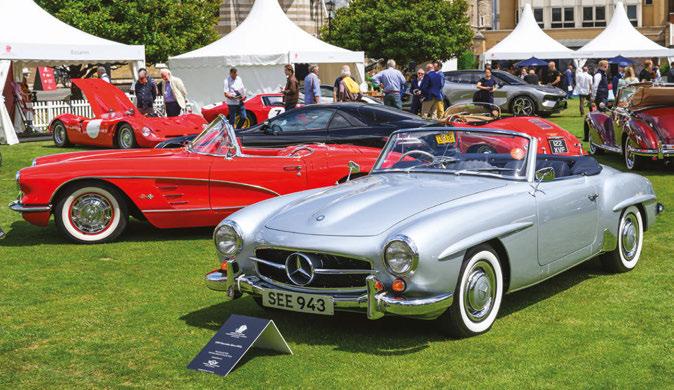

The London Concours is the capital’s leading automotive summer garden party, gathering together nearly 150 spectacular privately owned cars into one of London’s most beautiful hidden venues. Hosted at the Honourable Artillery Company HQ, a five-acre oasis of green in the heart of the City of London.
This year the London Concours will host – among many others – celebrations of Aston Martin, Mercedes-Benz and a dedicated Supercar Day to showcase the very latest performance innovations. Alongside these breathtaking displays, the London Concours is an occasion of pure indulgence, featuring luxury popup boutiques, champagne by Veuve Clicquot, catering by Searcys and a line-up of celebrity and expert guests as well as live podcast recordings
For tickets visit londonconcours.co.uk
TUESDAY 3 JUNE – A BRITISH ICON – ASTON MARTIN
WEDNESDAY 4 JUNE – THE GREATEST MARQUE – MERCEDES-BENZ
THURSDAY 5 JUNE – THE NEED FOR SPEED – SUPERCAR DAY
‘APRIL IS THE cruelest month,’ said TS Eliot in e Waste Land, and so it must have appeared to Britain’s luxury carmakers on 2 April, dubbed ‘Liberation Day’ by President Donald Trump.
It’s a strange description of an event that sparked fears of global trade meltdown. Britain got o lightly in comparison to other countries, but not its carmakers. While the UK’s whisky distillers, machinery makers, salmon farmers and pharmaceutical rms a racted just 10% import duties on their products and services to North America, carmakers must shoulder 25%.
It had been widely telegraphed that classic cars would su er the same 25% duty hike; it now appears not to be so, though the exact fall-out of Trump’s April axe-wielding has yet to be worked through and there are other rami cations.
And far from being ‘priced in’ by stock markets, Trump’s Draconian tari s had immediate
…but carmakers face turmoil and parts businesses are left in limbo
Words Andrew English
e ect on the share price of the world’s carmakers. Aston Martin, already struggling to keep its stock above junk status, saw an instant 6% fall. German carmakers, with only limited tari -free production in the US, were down, too; BMW’s stock fell by 4%, Volkswagen (including Audi, Bentley and Lamborghini) was down 3%, and Mercedes-Benz 2.5%. It had tried to hedge against Trump’s tari s by importing large numbers of cars in February and March.
Pity poor Morgan. It had only just quali ed to bene t from what’s known as ‘Obama’s law,’ which allowed it to access US markets with a maximum of 325 cars a year. Meeting the federal standards for the Plus 4 model has cost the company over £2m and now the cars will cost eager US customers 25% more.
Europe’s heads of state didn’t spare their thoughts.
‘Fundamentally wrong’ and ‘a universal a ack’ were some of the
reactions. Mike Hawes from the Society of Motor Manufacturers and Traders (SMMT) called it ‘a punitive tari ’ that ‘cannot be absorbed by manufacturers’. He suggested that costs will pass to consumers, which will impact demand and lead to a decrease in production.
‘ ere are signi cant negative consequences for the UK automotive industry,’ he added, ‘especially those companies in luxury, premium [and] sports car manufacture for whom the US is their most important global market.’
Britain’s luxury and sports car businesses have been stretching the elastic limits of the reversed supply and demand curves known as Veblen goods for many years. No one knows at what point the monied classes shun McLarens, Rolls-Royces, Bentleys and Aston Martins as being ‘too expensive’, but Trump’s taxes will have been sobering. JLR, which sells a
quarter of its 400,000 annual output of Range Rover and Defender models in the US, has suspended deliveries.
‘We are enacting our shortterm actions including a shipment pause in April,’ outlined a company statement, ‘as we develop our mid- to longer-term plans.’
e Sunday Times has reported that the company built up a two-month bu er of cars in the US and those will not be subject to the new tari s.
Dodging the bullet, however, was the classic-car business, which had been issuing dire warnings for the future should it be saddled with tough tari s. While the industry’s headline prices are stratospheric and the perception is of rich men indulging their multi-millionpound hobbies in much the same way that PG Wodehouse’s heroes bred pigs or collected cow creamers, the reality is more nuanced, with the majority
of sales and trades measured in five figures rather than six, seven, or eight.
But it’s more complicated than just the complete cars traversing the North Atlantic: there are parts, too. These will nominally be part of the blanket 10% tariff, but it’s more involved even than that. For popular marques such as Austin-Healey, Triumph and Mini, the parts supply lines are complex and multi-national.
‘In some cases, a part might have as many as ten different manufacturers,’ said a senior buyer for the US-giant Moss Motors, which supplies many different parts for a varied host of classic cars.
And because there’s a 25% tariff associated with steel and aluminium, there’s a concern about additional tariffs depending on where those materials are sourced. Suppliers are finding themselves being asked searching questions about the smelting and pouring of the steel and aluminium and the location of furnaces.
While gold prices have soared, the US dollar slumped and financial markets cascaded in the last few days, there are some who consider that the light tariff treatment of classic cars might even have a positive effect on what has been an uncertain market of late – though, as they say, the value of investments can go down as well as up.
The classics market certainly gained strength in the build-up to ‘Liberation Day.’ Simon Kidston, classic-car broker and collector, says that the US collectors have been busy in the days before Trump’s announcement, expecting something worse.
‘There’s certainly a sense of relief that common sense has prevailed,’ he says, confirming his belief that the US import rate will remain at 2.5%, though there are state taxes to consider, too.
‘The sales taxes will depend upon which state you are in,’ he says. ‘That is probably why there are seemingly a huge number of collectors based in Montana, where there are no sales taxes.’ He also points out that the import/export of classics is by
no means tariff-free even in Europe. The UK has a 5% tariff, France 5.5%, Holland 6.5%, Germany 7% and Italy 10%, with only Switzerland remaining at 0%, which makes it an important trading post for valuable classics.
Parts, however, are a different story and Kidston says he’s been contacted by several manufacturers concerned at the potential for higher tariffs for parts they supply for their older vehicles. Mercedes-Benz, for example, has set up its museum as the sole supplier of factory parts for its classics, a move designed to ensure a revenue stream for the maintenance and conservation of the company’s car and archive collections and to run its museum and activities.
With the EU facing a blanket 20% tariff, running a Mercedes
‘The light tariff treatment of classic cars might even have a positive effect on the market’
in the States looks set to become a lot more expensive.
‘And what will be the position of the US classic restoration business?’ asks Dale Keller, chief executive of the Historic & Classic Vehicles Alliance (HCVA). ‘There’s a lot that’s still to be determined.
‘It seems clear that vehicles over 25 years old will only attract a 2.5% import tariff to the US,’ he says, ‘but the position of old-stock parts, versus new parts, parts that are fitted to the car and parts that are in the boot, is more complex.’
He says the US import codes are almost impossible to read (‘they make no sense to a layman,’ he suggests), so will classic car parts be read as general car parts?
As ever with President Trump’s edicts, we’ll have to wait and see.

Low-volume British motor manufacturers have been thrown a lifeline after PM Sir Keir Starmer announced that they would be permitted to continue building new petrol-powered cars after the 2030 deadline set out in the UK’s Zero Emission Vehicle mandate.
Starmer specifically referenced Aston Martin and McLaren in the declaration, which means that the new rules should automatically apply to all boutique manufacturers, including Morgan, Caterham and Ginetta.
According to the Government, the exemption has been made because the volumes of cars being produced by these companies are not having a significant effect on the overall emissions seen as being caused by the motor industry.
The news came as part of a raft of changes to the existing UK pledge to kill off the manufacture of all fossil-fuel-powered cars by 2030, a date touted by the Labour Party after Rishi Sunak’s previous Conservative Government had set it at 2035.
At least partially as a response to President Trump’s recent announcements, while the 2030 ban on producing solely petrol or diesel cars is retained for larger manufacturers, the penalties for failing to comply or to meet targets have been relaxed, and hybrids, plug-in hybrids, plus petrol and diesel vans will now be permitted to be built until 2035.
Keir Starmer made the announcement on a visit to Jaguar Land Rover in the West Midlands. It came as JLR halted exports to the USA amid the row over tariffs and until it can be sure what the new trading landscape looks like.
He said: ‘Global trade is being transformed so we must go further and faster in reshaping our economy and our country through our Plan for Change. I am determined to back British brilliance. Now more than ever UK businesses and working people need a government that steps up, not stands aside. That means action, not words. So today I am announcing bold changes to the way we support our car industry.’
A Government press release stated: ‘The wide-ranging package of measures introduced today will also exempt small and micro-volume manufacturers – including McLaren and Aston Martin – from the 2030 phase-out, preserving some of the UK car industry’s most iconic jewels for years to come.’
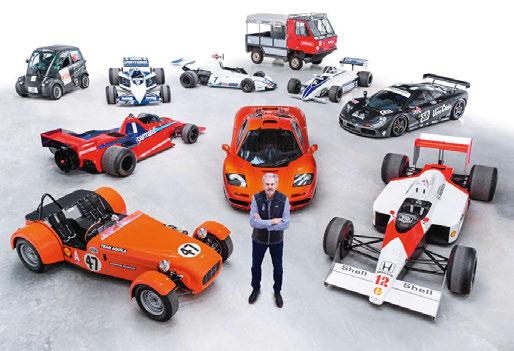
One of the most celebrated careers in motoring is to be honoured at the Goodwood Festival of Speed on 10-13 July, when the work of Professor Gordon Murray CBE is the focus of the Gerry Judah-designed central feature outside Goodwood House.
e South African genius behind so many Brabham racers, including the infamous Alfa-engined Fan Car, plus the McLaren F1 and now Gordon Murray Automotive (GMA) is to have his creations showcased at the event, including current GMA T.50, T.50s Niki Lauda, T.33 and T.33 Spider, plus a host of other Murray-designed road and race cars.
Professor Murray said: ‘For 60 years I have enjoyed the design and engineering challenge of pushing the boundaries of what’s possible –be that in racing or road cars. e supercars that GMA builds today are inspired by every car I’ve designed, raced, and owned. Lightweight design, innovative use of materials, the latest technologies, and even bending the laws of physics come into all we do.’
e Duke of Richmond added: ‘Gordon has been a part of the Festival of Speed since the very beginning and I’m delighted that he has chosen to celebrate his 60-year career here with us at Goodwood. His name is synonymous with engineering art and superlative automotive design, which has seen him triumph at the very pinnacle of motorsport with ve World Championships and create the most coveted supercars.’
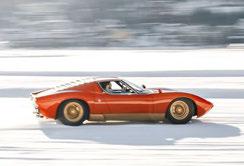
All change on the Ice e ICE, the celebrated concourswith-laps that takes place in St Moritz, has announced its dates for 2026. e event will move forward by three weeks to 30-31 January to ease logistics and travel planning for participants and visitors in a busy part of the season. See theicestmoritz.ch.
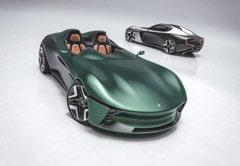
English electric
Sports car manufacturer Longbow (longbowmotors.com) has launched sub-1000kg speedster and roadster models priced from £64,995 and deliveries starting in 2026. e cars will be handbuilt with an all-electric powertrain. e company’s mo o is ‘Celeritas Levitas’ or ‘the speed of lightness’.

Beaulieu’s new exhibition is ‘We Had One of ose’, celebrating the cars, gadgets and everyday objects that shaped life from the 1960s through to the 2000s. Located just outside the National Motor Museum, it includes a Morris Minor and Austin Allegro, VW Beetle, Vauxhall Cavalier, Ford Mondeo and more. Entry is included in a general admission ticket; see beaulieu.co.uk.

All change for Cavallino
One of the xtures of the USA classic car season is moving venue and date for 2026. e Cavallino Classic (cavallino.com), the Ferrari-plus concours in Palm Beach, is moving to Boca Raton for next year, while a special showcase of past Best of Show winners will take place at the event’s traditional home at e Breakers Resort. e event will also move to 13-16 February, to avoid calendar congestion.

Brussels honours Goddess
A new ‘pop-up’ exhibition celebrating 70 years of the Citroën DS has opened at Autoworld in Brussels. Running until 29 June, the display honours everything from the rst ID19 to the latest DS N°8 EV.
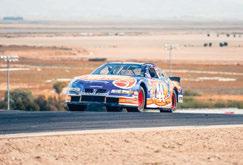
Pe ys a end Invitational
Tickets are on sale for the sixth annual Velocity Invitational, which roars back to Sonoma Raceway on 6-8 June. NASCAR legends Richard ‘the King’ Pe y and Kyle Pe y will be at the festival on 7 June for Q&As, autograph signing and more.
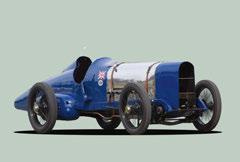
e rst Blue Bird, an immense Louis Coatelen-designed 18.8-litre aero-engined Sunbeam 350hp V12, is set to be one of the stars of this year’s Heveningham Concours, which takes place at Heveningham Hall in Su olk on 28-29 June. Tickets, including access to the country fair, are at heveninghamconcours.com.

Williams back at Haynes Haynes Motor Museum (haynesmotormuseum.org) has reopened its Williams Racing in F1 exhibition, o ering a ‘deep dive’ into F1 and Williams history. With exhibits covering a 30-year span, displays include a tub from Alex Albon’s 2022 FW44, Damon Hill’s 1994 FW16 – part of the team that won the Constructors’ Championship– and Nigel Mansell’s 1991 FW14. Also on display are the FW38 from 2016 and the FW23 from 2001.
Octane on Apple News!
Great news: Octane is now available on the Apple News app. This means that a full HTML version of Octane magazine plus more is at your fingertips, whatever your iOS device. Better still, it is free to subscribers, who need only input their email address in order to access it.

Continuation 1967 Shelby GT500s, fully licensed by Carroll Shelby Licensing and built by Hi-Tech Automotive, are available through Hillbank Motor Cars. The modernised GT500 features an all-new factory-assembled steel body with contemporary suspension, drivetrain and more. Sold as a fully assembled rolling chassis, it is not a restored vehicle but a reproduction.
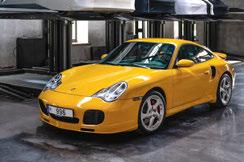
Following Octane’s article on fractional ownership (263), Commody, a Lithuanian startup with a digital-first platform, has raised €500,000 in pre-seed funding to allow enthusiasts the opportunity to become co-owners of rare and iconic vehicles by acquiring collectable car units. Founder Vilius Oškeliūnas said: ‘Commody allows car lovers to own a part of something legendary. Just like Spotify changed how we consume music, we’re reimagining collecting. Commody brings car-collecting into the digital age – with real ownership, zero logistics, and your entire collection right in your pocket.’ Units start at €25.
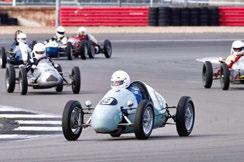
Silverstone Festival is promising the best-ever gathering of 500cc F3 cars from the 1950s for this year’s spectacular on 22-24 August. The first official pointsscoring Formula 1 Grand Prix took place at Silverstone 75 years ago, and the festival is promising a more epic racecard than ever before. See silverstone.co.uk.
Jaguar Classic has added more than 30 new body panels for all series of Jaguar E-type to its parts list, all engineered to original specifications. The mild steel parts are covered by a JLR aftermarket parts and accessories warranty and manufactured on new tooling built using CAD modelling and original drawings. They range from front frame assemblies to floors and sills. See jaguar.com/ about-jaguar/jaguar-classic/ genuine-parts.html.
The 37th special exhibit at Audrain Automobile Museum in Rhode Island, USA, is ‘AirCooled: Keep It Simple’. The display delves into the significance and evolution of air-cooled engines, from 1903 Franklin to 2024 Meyers Manx with Radial Motion three-cylinder engine. Other exhibits include 1968 Tatra T603, 1958 Porsche Diesel Junior 108K tractor and 1995 Porsche 962 Kremer K8 Spyder.
Dublin-born Eddie Jordan, who has died of prostate cancer aged 76, was a racing driver himself, a commentator and a businessman, but will forever be remembered as principal of his eponymous team that busted into Formula 1 in 1991 and survived 14 years in the top flight of motorsport with drivers such as Damon Hill and Michael Schumacher.








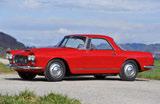


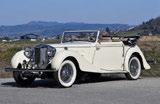


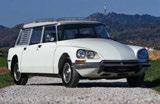


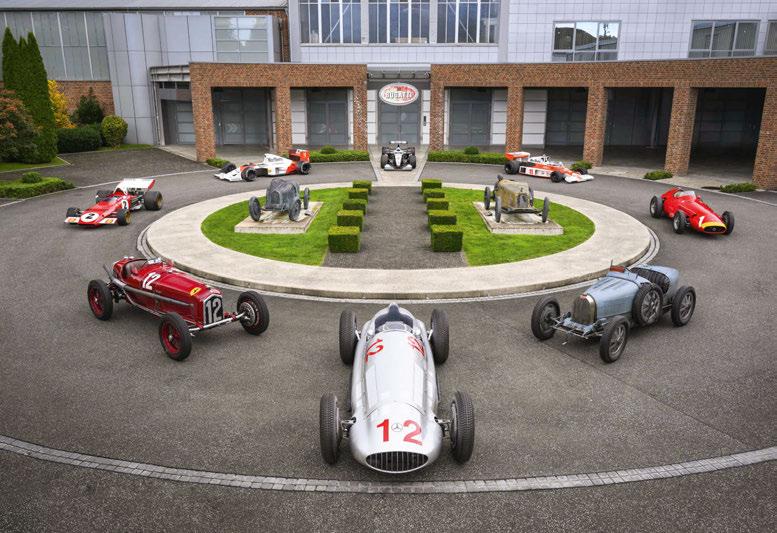
Legendary single-seaters star at The Loh Collection museum
THE MOST IMPRESSIVE motor museum to open in recent times has launched an astonishing exhibition of Grand Prix and Formula 1 cars.
The Nationales Automuseum The Loh Collection opened as recently as July 2023, and – impressively – this is only its third major exhibition since then. Located in the Central German town of DietzhölztalEwersbach, Hesse, the hometown of industrialist and collector Friedhelm Loh, and with over 7500m2 of exhibition space on a former industrial site, the facility displays around 150 vehicles from 1886 to the present day. Many are from Loh’s incredible personal collection.
Since it opened, the museum has always had a breathtaking special display, kicking off with ‘100 Years of the 24 Hours of Le Mans – the Myth, the Heroes, the Cars’ and ‘Ferrari – Masterpieces for the Racetrack and Road’. The latest is ‘Grand Prix – Icons of the Premier Class of Motorsport.’
The exhibition opened on 12 April and ranges from pre-war racers and innovators of the early Grand Prix years, via Silver Arrowsera monoposto cars – Loh is the former owner of a Mercedes-Benz W196 – to a unique cross-section from 75 years of F1.
The line-up is spectacular, starting with the wonderful, unrestored Bugatti Type 35B with which Grover Williams won the inaugural Monaco Grand Prix and including the most successful Ferrari of all, the car in which Michael Schumacher scored eight wins in the 2004 season. Ex-Nuvolari Alfa Romeo P3, Alfa 16C Bimotore, Auto Union Type D and Mercedes-Benz W14 also star, alongside Fangio’s 1957 Maserati 250F. More modern exhibits include Ferrari 312 B3-74 and 1984 Tyrrell 012.
‘Top-level motorsport has always represented the pinnacle of technology,’ said founder Prof Dr-Ing. Friedhelm Loh; ‘that’s what makes it so fascinating and is why it has captivated a huge global audience for more than 120 years. Each car has made history and continues telling many stories still today.
‘For us at the Nationales Automuseum, it’s all about sharing history, stories and the tales of people and engineering. The exhibition has been curated in exactly that spirit. It is unique. After all, it is only through the exciting combination of people and technology that the achievements of this outstanding chapter in the history of the automobile can be fully appreciated.’
See nationalesautomuseum.de for more.

THE FINAL DAY of this year’s London Concours, which takes place at the Honourable Artillery Company in the heart of the City of London on 3-5 June, will be dubbed ‘The Need for Speed –Supercar Day’ and will host more than 50 additional cars from benchmark manufacturers such as Ferrari, McLaren, Lamborghini and Porsche.
Concours director Andrew Evans said: ‘Assembling over 50 supercars in one of the City’s most prestigious and exclusive locations is no mean feat, and we’re looking forward to welcoming owners of some of the world’s finest supercars to London’s premier concours in June.’
The ninth edition of the concours will be packed with more than 100 cars in classes ranging from Ferrari V8s to dream cars, most categories with at least ten cars vying for honours, some with even more.
The hypercars class is especially strong, including the UK’s only Maserati MCXtrema, alongside the holy trinity of Ferrari LaFerrari, McLaren P1 and Porsche 918 Spyder.
Another unmissable class is a special Mercedes-Benz SL group, presented by the Goodwood Road Racing Club. It will celebrate 70 years of Super Leicht via cars ranging from 300SL Gullwing and Pagoda to more recent SLR McLaren.
Tickets from londonconcours.co.uk.
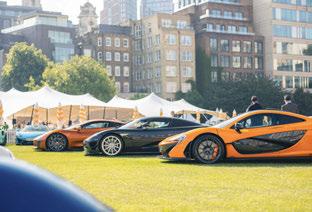











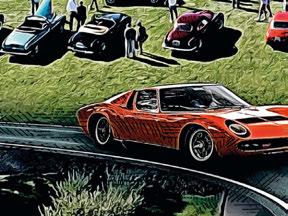
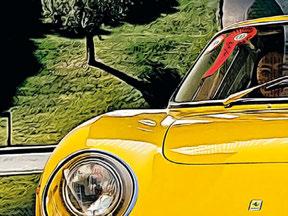





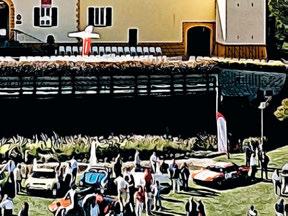

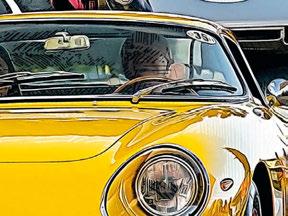
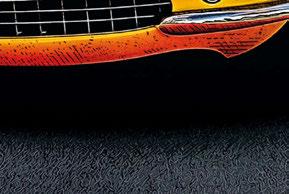






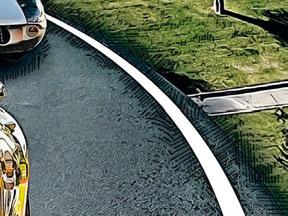

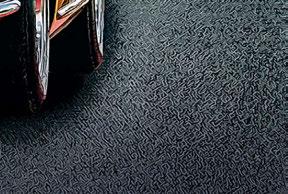

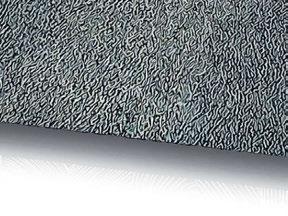

















• Pay just £1.66* each for your first three issues
• All subscriptions now include access to the magazine archive via the Octane digital app
• Nev er miss an issue
• Money -back guarantee –cancel and we will refund your remaining issues
• Unique subscriber -only covers
Please note the new website to order and manage your subscriptions, or call our customer service team on +44 (0)20 3966 6695












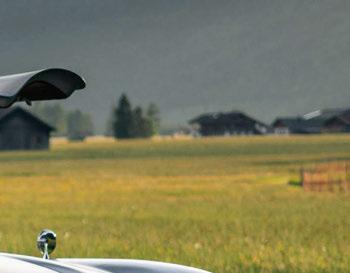


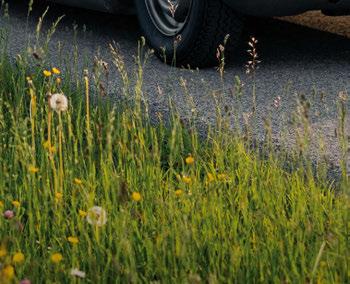

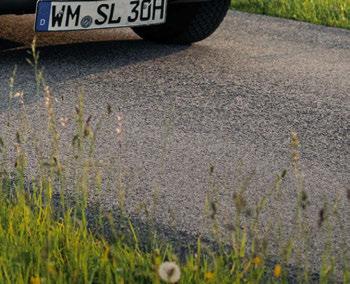







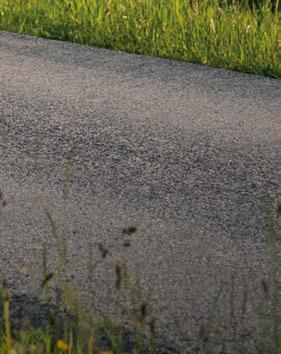

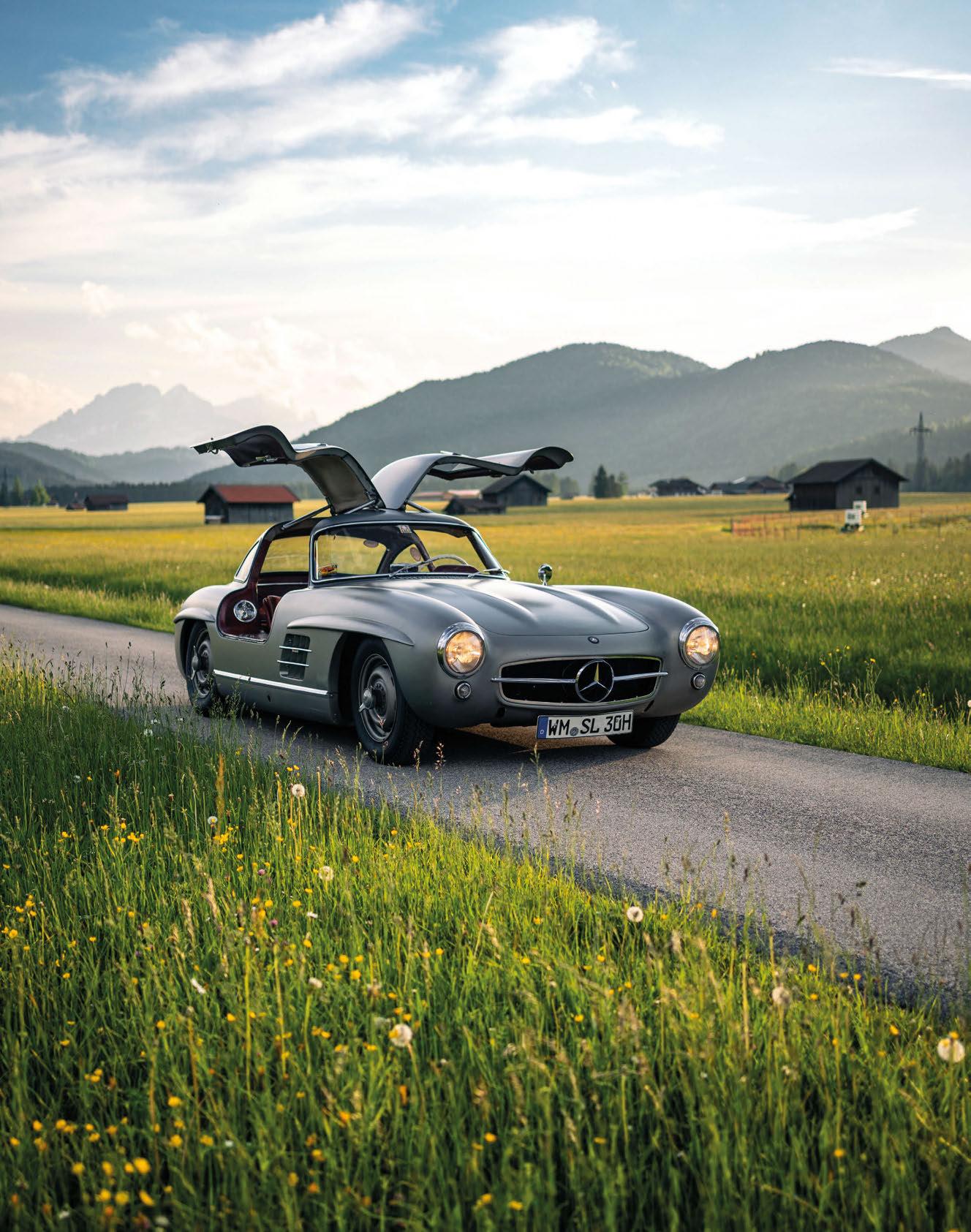

Afew months ago, I wrote a column about what a pleasure it was xing the electric seats on my 1989 Bentley Turbo R. I waxed eloquent about how beautiful the wiring was and how each wire was securely fastened without it straining or cracking. How the threads of the metal screws broke free with just the slightest twist of the wrist. I should have quit while I was ahead. You see, the Bentley went so well I decided to do some much-needed maintenance on my Lamborghini Countach. I’ve been told the name ‘Countach’ was some kind of Italian swearword. ey must have given it that name a er working on it.
Don’t get me wrong. is car has been reliable. I paid $70,000 for it back in the late ’80s when it was about two-and-a-half years old, and used it as my everyday car to go to work and run errands with. It seemed so fast and I guess it was. Nowadays 450 horsepower would put you in the hot hatch category.
I’m always amazed by how much money lowmileage supercars bring. My favourite phrase whenever I see low-mileage supercars coming up for sale is ‘may need some mild recommissioning’. I contend that a 30- or 40-year-old supercar with high mileage is be er than something that has been si ing in a garage and has less than 1000 miles on it.
My favourite story about this occurred a few years ago when a guy brought his ’90s Ferrari with 950 miles on it in for service. e owner deliberately kept the mileage below 1000 because he was convinced it would bring more money that way. e mechanic did a good job then took it on a legitimate 50-mile road test to make sure everything was OK. When the owner picked up the car, he hit the roof when he saw that the mileage was now over 1000 and sued the mechanic! I have no idea how that lawsuit turned out, but I hope the owner lost.
Back to my not-so-low-mileage Countach. I’ve always done the important stu : changed the uids, got rid of distributors, replaced them with electronic ignition, but the leather was starting to rip, the foam in the seats was turning to dust, and gremlins in the electrics were making themselves known.
Starting with the trim. How hard could that be? First o , the chassis is made up of countless tubes, and every surface had to be trimmed to hide the structure. So the interior is a complex pa ern of
dozens of small aluminium panels, hand-trimmed in leather, that t together like a jigsaw puzzle.
Much like the tombs of the Egyptian Pharaohs, electrical switches and relays were sealed so as never to be opened again. Wires were so short that to remove the switch, the wire must be pulled loose, making replacement a guessing game. ere is no accurate wiring diagram, but few consistent colours and switches that perform multiple tasks within the various integrated systems. Your only hope is to nd a guy named Tony.
You begin to realise that no thought has been given to serviceability. I decided to replace the starter motor with a high-torque gear-reduction starter. I had to remove the entire exhaust system to do it. e clearance lights are hidden beside the headlights, so you have to have the headlights up and remove the bezels to gain access. e fuse panel is accessed through the glovebox. In reality, you have to remove the glovebox door and the glovebox to check the fuses. And good luck ge ing the panel lined up so the knurled retaining knob can be threaded back in. Did I mention that the fuses are the old ceramic European style? e spring tension is so high it sends them ricocheting around the cockpit (twice hi ing me in the eye). Wounded and bleeding, I’m nally starting to make some progress.
I thought the seats would be straightforward. ink again. e beautiful leather has a complex perforation pa ern. We had to send the hides to a shop on the East Coast that has the machine to make the perforations. e seat panels then had to be stitched together from dozens of separate parts, much like a patchwork quilt. All of this took months and months to accomplish.
Another thing. All switches and controls are unique to Lamborghini – and this is not the e cient German Lamborghini we know today, where every part is catalogued and has a parts number. is is old-school, where you get sent a box with a bunch of stu in it and a note that says: ‘Try one of these.’ at being said, I have to admit that the blood, sweat and tears have helped me bond with the car. Owning a Countach is like being with the wrong woman. You really shouldn’t, but something about the experience makes it all worthwhile.
Jay was talking with Jeremy Hart.
‘The interior is made up of dozens of panels, handtrimmed in leather, that fit together like a jigsaw puzzle’

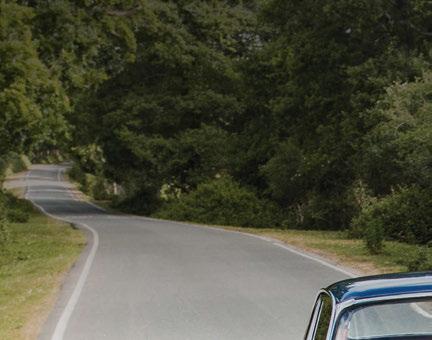


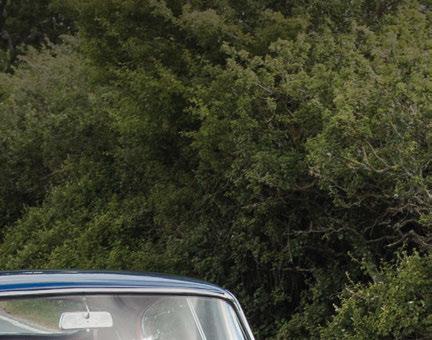
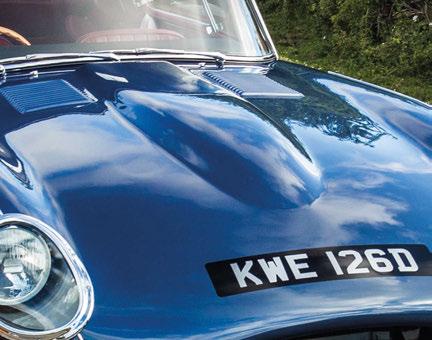



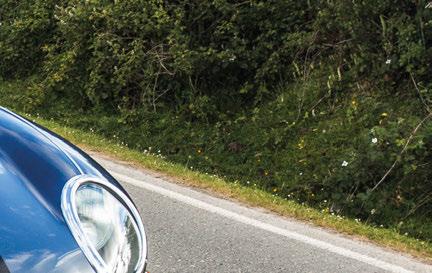


















Reflecting on a lifetime of competitive connections
It’s funny how you reach a point in life when you realise that you have become a silverback. You are one of the old guard. I was thinking about this in March when I a ended the Amelia Concours d’Elegance. I found myself on a panel alongside the likes of Hurley Haywood, Bobby Rahal, David Hobbs, and other racing drivers who have long since transitioned from active to retired. Obviously, I have done hundreds of such question-and-answer sessions in the past. I usually enjoy them, too, but this one was di erent in that I didn’t say much. is was in part because of the rather important gent who was among our number; a sometime racer but a man who is be er-known for having conceived the events in the rst place; the one who ran the show for so many years – Bill Warner. It was wonderful to see him being the centre of a ention for once, and even we big-time racer types are happy to play second ddle to a man who made things happen. Bill started the whole kit and caboodle because he wanted to raise money for a local hospital. Ma ers rather snowballed therea er.
I think – hope – Bill had fun. I enjoyed being a judge at the concours when he was at the helm, and I was the guest of honour way back when. It is di erent now, but the new regime isn’t lacking ideas and, tellingly, they have retained much of what worked well. I wish them every success and certainly hope to a end again for as long as I can. My eldest boy Justin does a lot of work with Hagerty, whose baby this is now, and it looks as though they are worthy custodians of an event that means a great deal to a great many people.
Which brings me without a segue to Formula 1. Inevitably, I get asked for my thoughts but, to be honest, I am not exactly there in the eld these days. I have my spies, though, and I know my own mind. I was delighted to see a resurgent McLaren winning rst time out in Melbourne, and I wish Lando Norris all the luck in the world. It was also great to see Sir Lewis Hamilton win the sprint race in Shanghai, even if he was nowhere in the main event a day later.
Ferrari o en used to produce a ‘Monza Special’ ahead of qualifying for the Italian Grand Prix. I thought about this a er the Chinese Grand Prix. Some friends quizzed me on why Lewis’s Ferrari was so quick in the sprint but so ordinary in the ‘proper’
race. My answer was simple: they were running a car that was optimised to run for 19 laps. e one thing it lacked was speed over long distance. As for all the drama over at Red Bull, I can’t add much to the ink that has thus far been spilled describing the failure of Liam Lawson as the number two driver.
It must be hell to be the wingman to arguably the greatest Formula 1 ace since Ayrton Senna. For the record, I think the Brazilian was be er than Michael Schumacher, Hamilton and so on. Max is in a class of one at the moment.
As such, you are always onto a loser, but I was surprised that Lawson folded so quickly. at said, it’s easy to judge from the outside, and I hope the Kiwi regains his mojo now that he has swapped seats with Yuki Tsunoda at Racing Bulls, while the Japanese driver takes his spot alongside Verstappen.
Moving away from ‘E One,’ I would like to take this opportunity to give a hearty ‘well done’ to Archie Clark, who won the GT Cup race at Oulton Park in March alongside Tom Canning. Archie is only 16 and a recent convert from karting. I only mention this because I have witnessed a lot of father/son (and grandfather/son/grandson) careers up close over the years, not least in my own family. Also, I used to be great friends with Archie’s grandfather, rally superstar Roger Clark.
ere was a time when Roger and I were very close, the weird thing being that I met him before I ever sat in a racing car. For reasons that are too longwinded to go into here, he and a group of people from Leicestershire would o en descend on Pagham, where I grew up and still maintain the ancestral seat, as it were. ey would be here for their holidays, much of which would be spent in the pub. We became great mates and remained so for decades. Roger and I got up to all sorts of shenanigans.
And, obviously, he was one hell of a driver. I remember going to a deserted air eld in 1965 and watching him slalom his Rover P6 rally car between cones, guiding it at great speed on its lock-stops. It made quite an impression.
Roger burned the candle at both ends, though, and in the middle, too, come to think of it. I was very sad when he died in January 1998. Nevertheless, he had crammed an awful lot of fun and adventure into his 58 years, and I am delighted that his competitive spirit lives on.
‘The weird thing is that I met Roger Clark before I ever sat in a racing car’


































· Elvis Presley tribute show · Special theme: “Niki Lauda”














Sim racing

















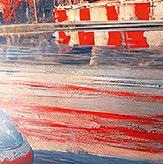








Ask
any Bristol nut: it’s all down to the way they smell
Iwonder if, like pets and their keepers, owners assimilate – or re ect – the values of their cars. It’s notable that citizens with marked criminal tendencies favour aggressive dogs. You wouldn’t nd any honourable Manchester crime family with a cuddly cockapoo. More likely a drooling, hissing, snarling and musclebound XL Bully.
Of course, television and cinema have made almost unbreakable connections between personalities and and their cars. Grace Kelly and her Sunbeam Alpine, smelling, I imagine, of warm silk and Chanel No5. Or Steve McQueen’s Mustang GT 390, aromatic with cigare es, sweat and Radcolube CLP Gun Oil. Morse’s Jaguar Mk2 obviously stank of leather, bi er and St Bruno. Peter Sellers had a magni cent Vio i-bodied Bristol 407, the elegance and poise of which were a counterbalance to a fractured, tormented and short life. is 407 would have smelt of Bri Ekland, Sellers’ second wife, who made it her own.
I know four extremely interesting people – happily all alive – with a nearly fetishistic relationship to their Bristols. First, Justin Marozzi, who is an adventurer, an Arabist, a supremely wi y dandy (we swap notes on trousers), a prize-winning historian and crack shot. He has spent time in Mogadishu and other very dangerous places, yet looks amusingly uneasy when given a lunch rendezvous in Soho. Justin worships his 405: there are photographs of her in his guest lavatory. She smells of Norfolk mud and wet dog.
Second, Stefano Pasini, who lost his 408 in the Bologna oods of two years ago. Stefano is one of the most various people I know: an eye surgeon who was once Umberto Eco’s private physician, he is perhaps the authority on Lamborghini, as well as being a thriller writer, a martini connoisseur of very high calibre, and the author of an authoritative study of orens audio decks. Like Justin Marozzi, he is the best company imaginable. His 408 immediately makes me think of espresso and vermouth, but the strange thing here is that, like many Italians of a certain class, Stefano is a passionate anglophile. Bristol in ames that passion.
en there are Jeremy King and Paul Smith. Jeremy is a restaurateur, whose Caprice and Wolseley caught and projected the taste of a generation. His
Bristol was o en parked outside e Beaumont Hotel, near Selfridge’s: a wordless yet articulate statement of his values as a host. Flamboyantly understated, digni ed and polite. I o en wave at him on my Sunday run along Chelsea Embankment as he bimbles by in his gunmetal Bristol with the dog as a cheerful passenger.
en there is Paul Smith, the man who put the 1980s into suits with brightly coloured felt undercollars, accessorised by shirts with small, quirky details. Sir Paul sold his 405 a er 43 years. Continuity of care is a characteristic shared by Bristol nuts. e thing here is that e Bristol E ect is not to be explained rationally, even if Mark Alford, chairman of e Bristol Owners’ Club, insists it’s ‘the thinking man’s choice, not a fashionable one’.
I have mentioned smell here because it is the one thing car designers never consider. Smell may be the sense least useful to Darwinian survival – smelling a rat won’t stop you catching e Plague – but it is disproportionately evocative because olfactory stimuli are processed in a part of the brain close to the area that deals with memory. is is mysterious and e Bristol E ect, like any sound faith, requires a large measure of mystery to be e ective.
Marozzi says: ‘Most owners are completely bonkers. I adore them. With few exceptions, no one takes themselves too seriously. People tend to hang on to their Bristols, too, which proves a point. e most eccentric thing about Bristols, for those who like old cars, is not having one.’
Production gures are hard to come by, but during ve years in the mid-1950s Bristol manufactured a mere 360 of the 404 and 405, and these were among its most popular cars. Was total production more than 3000? Ferrari has made perhaps 300,000 cars since 1947. Savour that 100:1 ratio.
Yet for all the glory that Ferrari represents, the Bristol nut enjoys an experience more intense. And this is the magic of any classic car, a machine that moves us not from the rst to the second le er of the alphabet, but a machine that moves us mysteriously. Like smell, it is inexplicable, but all the more profound because of that.
It is not sourced in technology nor even in design, but in sorcery and enchantment. Alas, my belief is that e Bristol E ect will never be resurrected in any future car.
‘The Bristol Effect, like any sound faith, requires a large measure of mystery to be effective’




The unique selling points of the great British marques
Last month I was banging on about Bristol Cars, that great British marque that is ‘on hiatus’. I suggested that the company was the rst to develop a ‘restomod’ with its total rebuilding and modernising of its venerable 411 known as the Series VI. I enjoyed driving one with the then-owner of Bristol Cars, Toby Silverton, and was impressed with its smooth V8 engine and relaxed gearing, and amazed at how well its agricultural live rear axle was tied down.
Silverton’s over-enthusiasm led him to develop the mad Fighter sports car with its ludicrous Dodge V10 and gullwing-type doors. I drove one of those more recently and again was impressed with its e ortless torque as well as its speci c Bristol a ribute of being narrow, making it, like the 411, an unlikely city car to be punted through tight gaps in the tra c.
is month we feature the Aston Martin V8, quaintly known as the ‘Saloon’. I had the good fortune to test drive a Vantage through the Swiss Alps, luxuriating in its well-behaved brutality. e de Dion rear suspension controlled the back end tightly, ge ing all the grunt down onto the tarmac. But the best bit was entering the tunnels – the Aston had straight-through exhausts, with its rear silencers totally omi ed. e roaring sound was, of course, primeval but the long ames that shot out of the fat pipes were hysterical.
I remember a young Peugeot 205 driver nearly went o -piste when the Vantage came blasting past out of a dark tunnel, seemingly on re. To be fair, the chap made a good recovery and manfully caught the Aston up again. Never have I seen so many mobile phones materialise from a small hatchback.
One of the nicest Aston V8 Saloons I drove was with Aston specialist Nick Mee. He had a bogstandard automatic, and we motored around Kensington and central London together. I was prepared to be bored and underwhelmed by the old slush-box, but the V8 was absolutely beautiful, quiet and re ned, another superb town car. Within, it smelt like the fastest Hermès handbag shop in town.
Every motor car has to have a USP, as we used to call it in advertising. I doubt Tony Crook gave a g about a ‘unique selling proposition’, but Bristols have narrowness, Aston has James Bond (or should that be Johnny English – hello Rowan), and Morgan has
lightness. In the old days, when I was supposed to be swa ing up on Pythagoras’ theorum and oxbow lakes, I was instead intently reading copies of Motor, Autocar and CAR. As well as the road tests of Astons and – very occasionally – Bristols, usually championed by LJK Setright, I’d be intrigued by all the performance gures and technical spec listings at the back. And Morgans always stood out with gures that punched well above their weight.
Weight was the thing: a 150bhp Morgan Plus 8, with its light steel chassis and ash frame, skinned in a mix of steel and ally, tipped the scales at just 850kg, so it was faster than a Porsche 911 of the day.
Today Morgan is going strong; contributors Simon de Burton and Harry Metcalfe were both impressed by recent drives of the Plus Four with its 225bhp turbocharged 2.0-litre BMW engine o ering sparkling performance, 50mpg economy and refreshing lack of nannying tech. And Morgan has since revealed its high-performance Supersport model, this time with a 3.0-litre BMW straight-six, eight-speed ZF ’box and all-new aluminium chassis.
Years ago, racing in the Historic Sports Car Club series and on rallies such as the Tour Auto in my Porsche 356, I was impressed by how well Morgans went. Well, they would – look up the Lawrencetune racing Morgan of the period at Le Mans and at other UK races. So I called my chum Bill Wykeham – top racing driver and proprietor of Wykeham’s in Reece Mews, Kensington, for decades – to have a chat. Bill raced with Charles Morgan in the FIA Sports Car Championships in a Morgan Aero 8, but the car I remember best was his light blue 1959 Plus 4 Super Sports. It was fast and always looked well-balanced and predictable on quick circuits.
As Bill says: ‘A Morgan is the polar opposite of a Lotus, which has a sti chassis allowing so , longtravel suspension. A Morgan has a exible chassis with limited suspension movement. All simple stu , but the wooden frame is essential: you have to ensure critical torsional “twang” in the wood to get the package to work. en a Morgan comes alive.’
I mentioned my CAR magazine distraction. e mag was created by Doug Blain. Doug bought Bill’s well-sorted, beautifully balanced Plus 4 Super Sports with its engine in the right place and did well in classic racing. I ventured out in my rear-engined Porsche 356 and did not.
‘A 150bhp Morgan Plus 8 tipped the scales at just 850kg, so it was faster than a Porsche 911 of the day’


Letter of the month

REGARDING the possible new Bristol mentioned in Octane 263, I really hope that Mr Wharton’s vision can succeed. I have always liked the brand, since spending many trips in a fellow student’s 400 in the ’60s, and admired the obvious aircraft influences in its exterior design and the BMW-derived engineering in its drivetrain.
Later on the marque lost some of its appeal when the body designs became a little staid, even though the huge power of the Chrysler V8 was fun. I once wrote to Anthony Crook about possible design work and he responded with a kindly note saying that he admired our work for the Bentley Continental R but that there were no plans for a new Bristol car at that time in the late 1980s.
Images of the somewhat retro-designed new car [right] are interesting but I feel that for Bristol to get its leading-edge image back a new approach is required – and this may mean working with either a foreign company such as Geely or a British newcomer like Gordon Murray. The days of the big V8 are over and a successor technology is needed to power a new Bristol for the low-emission future. My approach would be a very light structure based on high-tech composites and a hybrid powertrain – I do not think that Bristol customers
would tolerate an all-electric set-up, and it seems likely that the authorities will allow the use of hybrid power for the foreseeable future. The body architecture would allow for a compact four-seater about the size of a Porsche Taycan and priced at mid-Porsche or Ferrari level. Lotus is now a good example of a revered British name funded by the necessarily deep pockets of a Chinese company.
The sketch concept I attach [above] shows a somewhat retro-influenced approach with the vestigial fins referenced from my favourite Bristol, the 405 coupé of 1955. I hope something along these lines might revive a rightly famous name. John Heffernan, Surrey
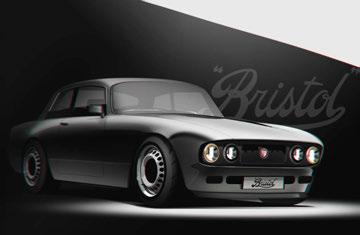
The R1 is perfectly proportioned, beautifully made and deceptively powerful. It’s the perfect bedroom, kitchen or workshop radio.
Your delightful article on the Maserati 3500GT in Octane 261 [below] reminded me of working with Bob Allinger’s son-in-law Roy Adams at his Foreign Car Service in Los Gatos, California, in the early ’70s.
I was an apprentice/part time shop kid and was tasked to drive one of these to and from the shop for service. There were four other 3500s in the Los Gatos area at the time, and Roy – having been service manager for Bob – was the only local person with knowledge of Maserati. I remember changing the Lucas fuel injection on some of them to Webers and then Roy working out the jetting.
Bob Allinger had worked with Offenhauser and Henry Miller, built hydroplane racing boats, rallied in Europe with Maserati, and was the first importer of VWs in the San Francisco Bay area. During his retirement he was doing special projects in Roy’s shop, including winged supermodified cars, and I test drove the last of these through the streets in Los Gatos right off the trestles.
Stewart Smith, Santa Cruz, California

I have never enjoyed a column by Stephen Bayley so much as the one in Octane 263 about the Stellantis group. I was laughing all the way through in agreement. I read most of it to my wife, who said: ‘This man needs anger management.’ He is right, however, and like

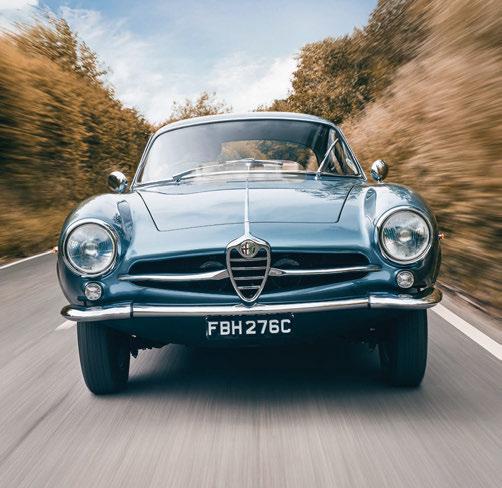
Robert Coucher in his excellent column, too, he alludes to the magic of older designs and also to the futility of such mergers in the long term.
I must pay tribute to Mr Bayley’s ability to draw comparisons with works of art that most people would recognise – namely, the Chrysler Building and the statues in the Piazza Maggiore in Bologna.
Dr Lanil de Silva, Swindon, Wiltshire
Not in love with Giulia It is good to see someone is prepared to spend so much money on a rare and unusual car such as the Alfa Giulia SS in Octane 263 [above].
However, your contributor is not alone in discovering that, despite the beautiful looks, all is not well in the driving.
Writing in Motor Sport in 1965, Bill Boddy was less than enthusiastic. He said it was ‘not at all impressive to anyone wanting to use it for other than impressing their girlfriends. The handling at anything over 80mph was terrible… unpleasant deflection of the steering… and oversteer under power changed disconcertingly to understeer with power off.’
Furthermore, ‘the springing was too supple, the brakes were heavy… The clutch pedal travel
I considered the two French contenders very poor in terms of fit and finish. By contemporary standards, the 205 and especially the Renault, with its yoghurt-pot plastics, didn’t seem to cut it in comparison with the Uno.
Mine had the optional digital dash, which was by no means a disaster and looked great; the loaded-dial dash looked even better. It also had such a smooth, willing engine, with a great slug of turbo-ness that always impressed.
The Uno Turbo is never mentioned as a contender even though, 40 years on, it still looks contemporary. Such a shame!
Russ Chadburn, Devon
The new BMW M5 weighs 20kg more than my four-year-old diesel Toyota Landcruiser. And it’s wider.
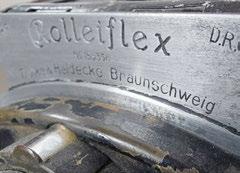
What a joy it was to read a report about Field Marshal ‘Monty’ Montgomery’s Voigtländer Bessa camera in Octane 261!
I was even happier that you mentioned my home town, Braunschweig (‘Brunswick’).
Being in a ‘zone border area’ after the end of the war, it had always been a bit sleepy – until we suddenly became a lively city right in the heart of a reunified Germany when the border was opened on 9 November 1989.
was excessive and the pedal was too close to the transmission tunnel.’ It was too noisy into the bargain – something that it could not be called, at £2394.
Boddy conceded that the car was fast, but it used four pints of oil in less than 1000 miles and petrol consumption was 21.7mpg. Nor did he like the ‘bulbous’ lines.
In my opinion, though, it looks wonderful – even if with my height I could neither get into it nor drive it.
Andrew Maw, Staffordshire

Your Hot Hatch Heroes feature in Octane 262 was enjoyable, and I appreciate you had to cover quite a period with limited space.
I’ve often noticed in magazine retrospectives down through the decades since the ’80s that the Fiat Uno Turbo [above] has been forgotten. As a private buyer at the time, I looked at the 205 GTI and the 5 Turbo and, though I believe both had the edge in terms of handling balance,
Can someone please remind me what the ‘M’ stands for?
‘Morbidly (obese)’?
Mark Brett, Surrey
Matthew Hayward’s drive from Land’s End to John O’Groats in four generations of MX-5 [below, and Octane 263] is a fitting tribute to a so-called ‘hairdresser’s car’.
Having owned an imported Eunos Roadster (the Japanmarket MX-5), I can vouch for the expertly balanced two-seater being as close to flying a Spitfire as most post-war generation drivers will ever get, without actually being airborne.
Be it Hardknott Pass in the sunshine, The Mall at midnight or heading north on the M6 at a ton, the MX-5 is the ultimate roadster – reassuringly quick, a tad uncomfortable, noisy but also perfectly suited to our A- and B-roads.
Never has £1800 bought me so much trouble-free fun.
James Anthony, Lancashire

Since Braunschweig is only 25km south-west of Wolfsburg, the location of Germany’s largest automobile manufacturer, VW, its proximity to this factory overshadowed the fact that our city was home not only to Voigtländer but also Rollei. Cameras from both firms –especially the twin-lens Rolleiflex – were exported worldwide and were highly valued.
As a lover of old technology – cars, watches, cameras – I look for such devices in every antique shop I visit in the world, and I am always touched when I find a tired Rolleiflex somewhere in deepest India, say, which proudly bears the name of my birthplace on the maker’s plate [at top].
Norbert Schroeder, Braunschweig, Germany
Surely there is a book to be had in the saga of the restoration of editor James Elliott’s Jensen, or even an opera – The Carriage of Figaro, perhaps?
Neil Wood, Kent
Send your letters to letters@octane-magazine.com
Please include your name, address and a daytime telephone number. Letters may be edited for clarity. Views expressed are not necessarily those of Octane.
2022 Ford GT

Offered at The Concorso d'Eleganza Villa d'Este Auction 2025
Estimate: €525.000 - €625.000



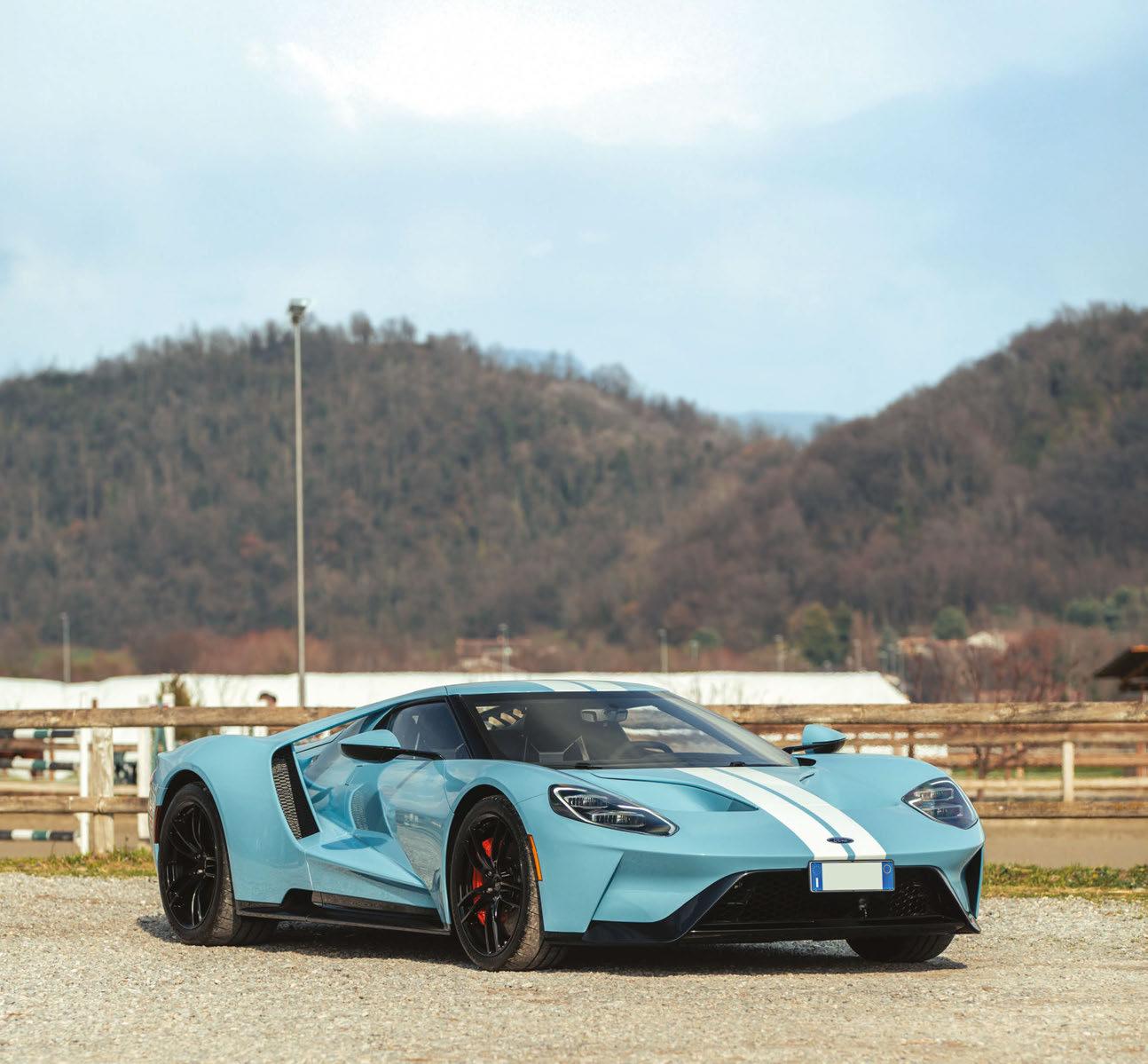
THE MEMORABILIA ONLINE AUCTION SPRING 2025 21 APRIL - 4 MAY | ONLINE, EUROPE
THE CONCORSO D’ELEGANZA VILLA D’ESTE AUCTION 2025 24 - 25 MAY 2025 | VILLA ERBA, ITALY
THE MONTEREY JET CENTER AUCTION 13 - 14 AUGUST 2025 | MONTEREY, CA




From ignominious beginnings via Britain’s fastest car to a dream ownership prospect, the Aston Martin V8 has finally found its place in history
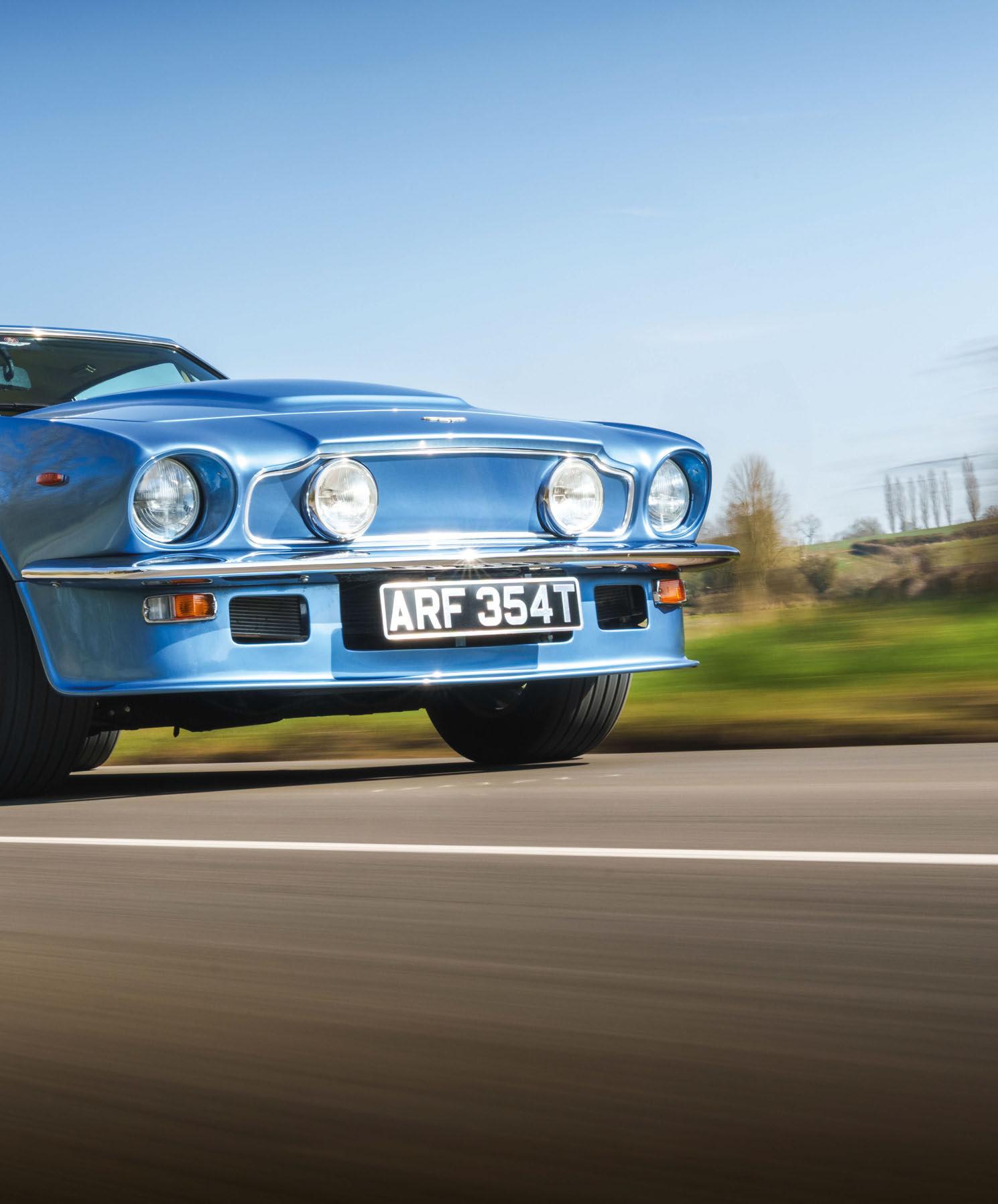

Aston Martin always called it a saloon.
Even when there was another saloon in the company’s range in the form of two flavours of Lagonda: one a stretched, fourdoor version of the shape you see here, the other, later one an outrageous wedge. But to the rest of the world it was a coupé, a muscularly handsome coupé that, in the peak Vantage form portrayed on these pages, became Britain’s quickest car.
An entirely home-grown one, too, despite the very transatlantic aural onslaught of its V8 engine. In a way the engine makes the car, even though the car predated the engine. The shape arrived in 1967, from the pen of new recruit William Towns, whose idea for Aston’s nextgeneration machine fired the management’s enthusiasm in a way the alternative proposal
from Italy’s Touring, shaper of the DB4 and its descendants, did not. The new V8 motor was meant to accompany the new, broader body but it wasn’t ready in time, a development version of it having ignominiously holed its pistons in a pair of Lola T70 MkIII GTs in the 1967 Le Mans 24 Hours. Team manager and driver John Surtees blamed the spark plugs.
The new car, named DBS, made do with Aston Martin’s existing 4.0-litre twin-cam straight-six, but it got new de Dion rear suspension. The DBS V8 was announced at London’s 1969 Earls Court Motor Show, though neither customer deliveries nor media road tests would happen until early 1971. Those road tests were mostly rapturous –‘dragster performance’ and ‘immensely fast by any standards’ enthused Motor – and the foundation was laid for a particularly British automotive ultimate that ruled up to 1990.
There have been further ‘ultimate’ Astons since then, of course, but the model names and derivatives have at times become bewildering
and the focus fuzzy. With the Towns V8 all is clear, and in 2025 that shape is as crisply and suavely captivating as ever.
Which is one reason why it has now navigated its way through the wilderness of neglect and decay, out from the shadow of its glamorous and ultra-valuable ancestors, and back into the bright light of status, covetability and a place at the top of the classic Aston canon. Another is that a good one is a riotously entertaining drive.
And a third is that time and demographics move on. The post-baby-boom enthusiasts don’t lust after a DB4, 5 or 6. They want a Towns V8. Preferably a Vantage.
THE V8 VANTAGE before you now shared Aston Martin’s stand at the October 1978 British Motor Show (its first year at Birmingham’s NEC) with a regular V8, a Volante convertible and a wedge Lagonda. All were in the same metallic Tourmaline Blue in a new acrylic formulation. The three Astons
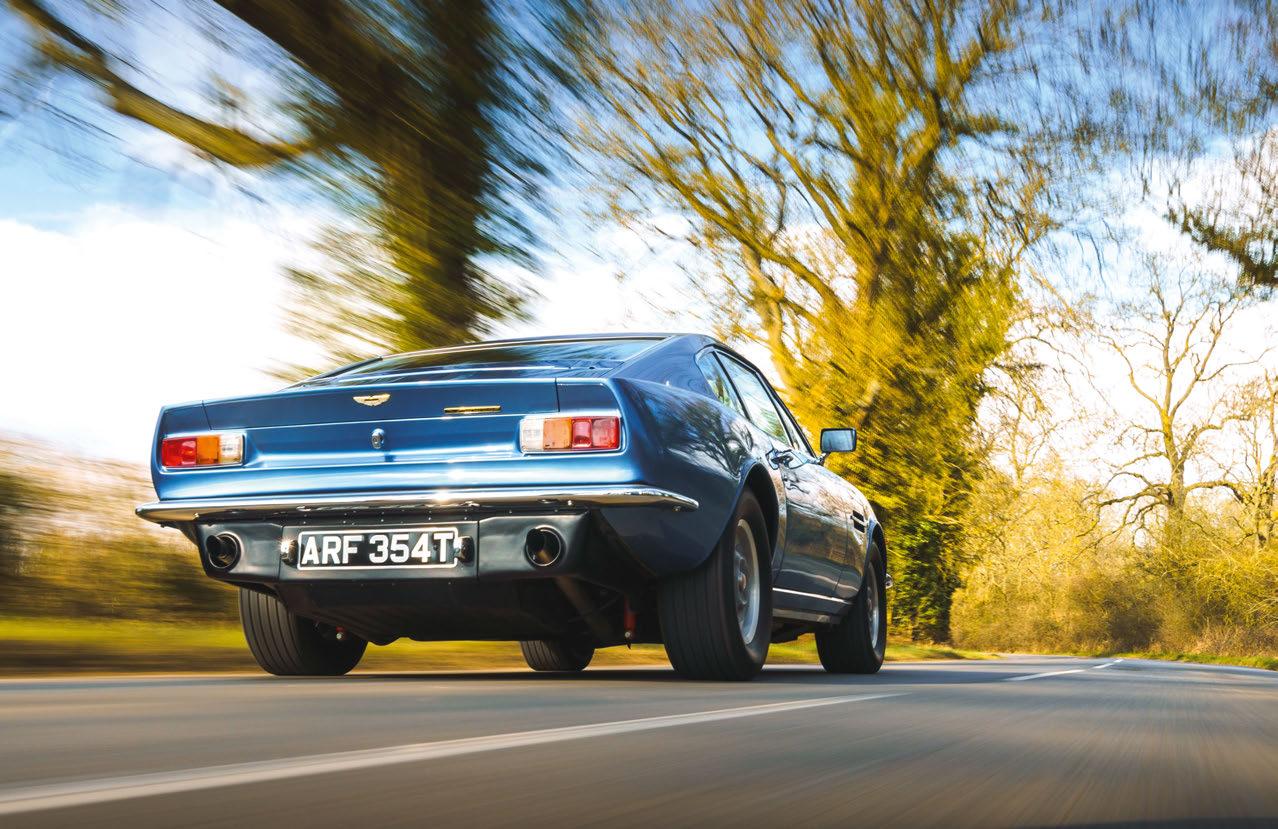
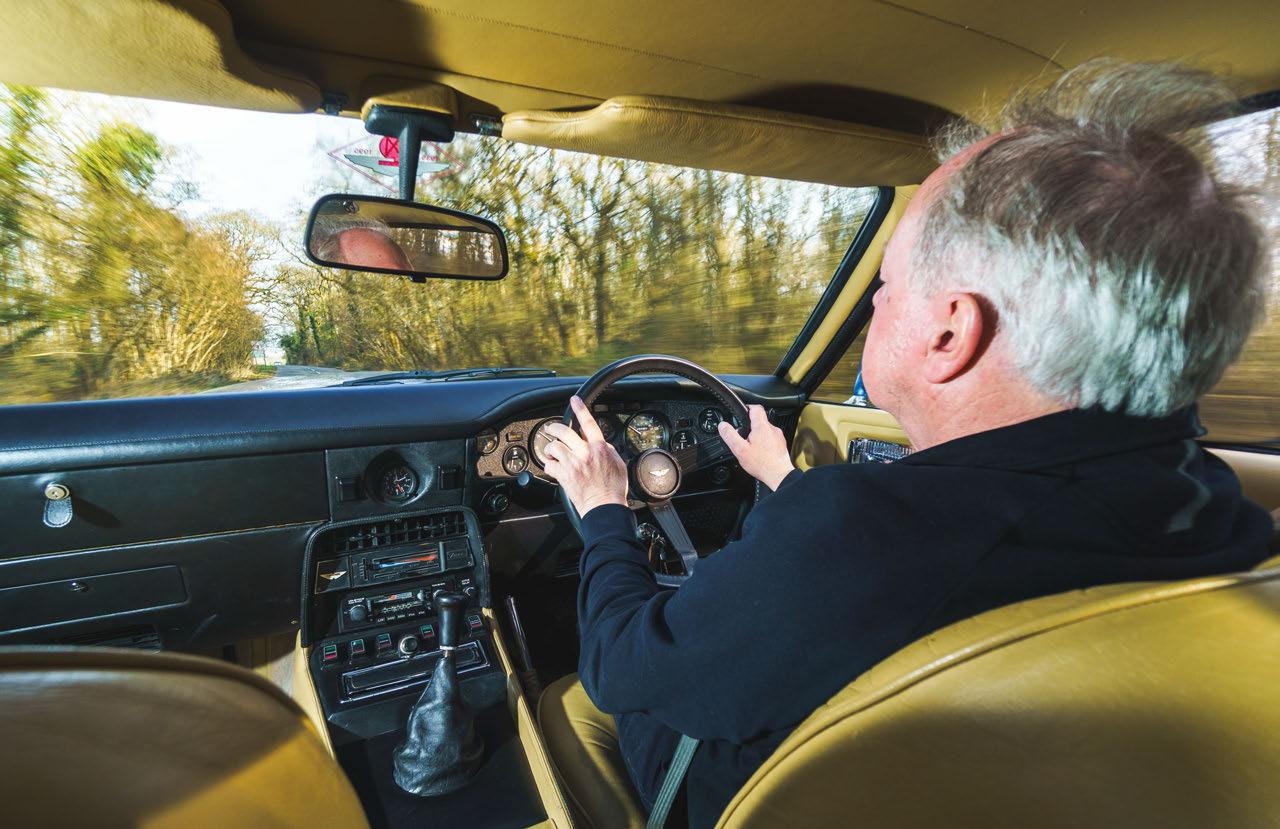
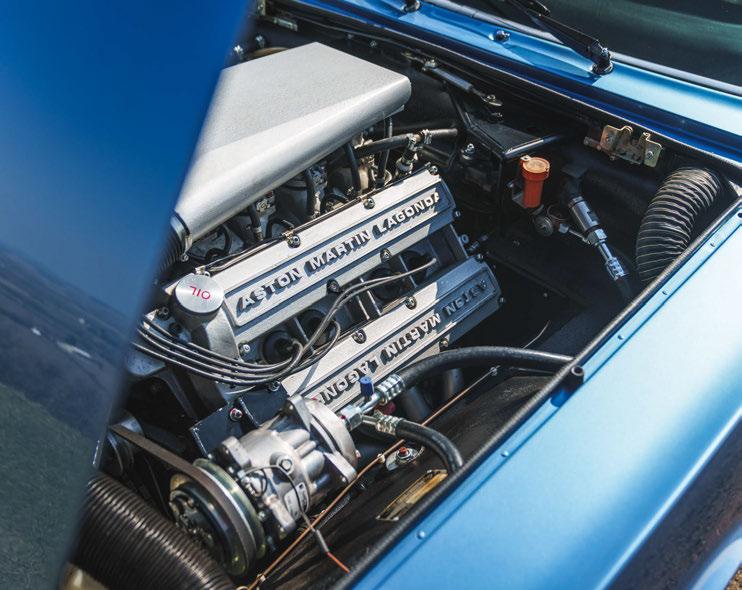
1978 Aston Martin V8 Vantage
Engine 5341cc 90º V8, DOHC per bank aluminium block and heads, four Weber 48 IDF2 carburettors
Power 380bhp @ 5800rpm
Torque 380lb ft @ 4000rpm
Transmission Five-speed ZF manual, rear-wheel drive
Suspension Front: double wishbones, coil springs, telescopic dampers, anti-roll bar. Rear: de Dion axle, trailing arms, Watt linkage, coil springs, telescopic dampers Steering Rack and pinion, power-assisted Brakes Vented discs
Weight 1815kg
Top speed 170mph (est) 0-60mph 5.4sec
Clockwise, from opposite Purist early Vantage shape includes integrated tail spoiler but the subtlest of wheelarch flares; ‘sporting’ black finish to dashboard; tuned four-cam V8 good for 380bhp.

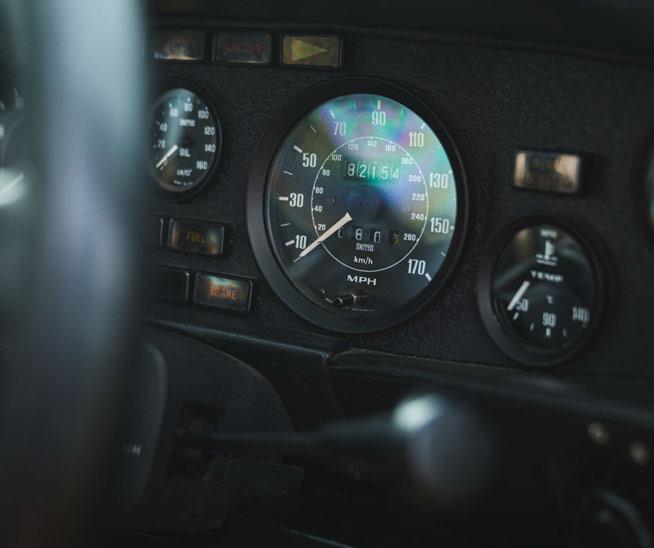
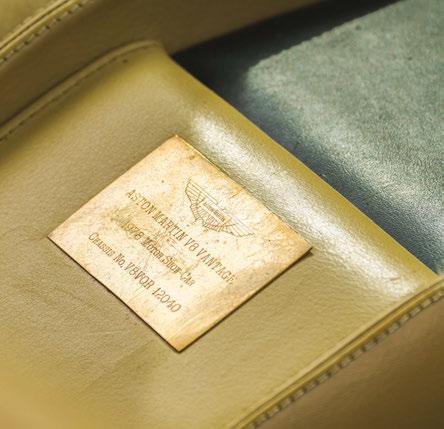
Clockwise, from left
Only just enough numbers on the Vantage’s speedo; iconic blanked grille reduced front-end lift; muscle-car shape at its peak before later adornment; plaque proclaims this example’s historic identity.
‘THE POSTBABY-BOOM
DON’T LUST AFTER A DB4, 5 OR 6. THEY WANT A TOWNS V8’
were the very first Series Two cars, known since in Aston lore as ‘Oscar India’ after the initials of ‘October Introduction’. Detail changes included an integrated tail spoiler (previously absent for the V8; an add-on for the 1977-introduced Vantage), a walnut fascia (though the Vantage retained sportier black) and a flatter, smoother bonnet bulge.
So how had we got to this point? Briefly, David Brown had departed the company in 1971 and the new owner, Company Developments, set about revising the range. The DB nomenclature was abandoned and the DBS’s slatted-grille front with four inset headlamps was replaced by one with two headlamps flanking a mesh-filled grille of more obviously Aston shape. The six-cylinder car, axed in 1973, was confusingly named Vantage while the eight-cylinder one became an AM V8. The V8 lost its Bosch fuel injection in favour of four Weber 42 DCNFs, matched to softer camshaft profiles. And, in late 1974, Aston Martin called in the receivers.
The rescue came via two transatlantic entrepreneurs, Peter Sprague and George Minden, very soon joined by Englishmen Alan Curtis and Denis Flather. Mike Loasby returned, after five years away, as engineering
director, and in early 1976 Aston Martin Lagonda (1975) Ltd restarted production. Work began on the ‘wedge’ Lagonda and, while investigating how to maintain its V8 engine’s power output given the new constraint of a lower bonnet line, an idea took root to offer a go-faster kit for the AM V8.
It began with with bigger valves and a reversion to the fuel-injection-spec camshafts, plus bigger Weber 48 IDA carburettors and freer-flowing intake and exhaust systems. To help deploy the power (around 370bhp, up from 310), the suspension gained Koni dampers all round (no more antediluvian lever-arms at the back), a wider rear track, lower and stiffer springs, progressive bump stops, a stiffer front anti-roll bar, more castor in the steering, vented front discs and fatter, 60-profile Pirelli CN12 tyres. An Olive metallic V8 thus upgraded was raced by Loasby at the 1976 Aston Martin Owners’ Club Silverstone meeting and caused much interest, not least because it still looked more-or-less standard.
Just one problem. Engineers already knew about the front-end lift that the standard body shape generated at speed, and the new higher speeds meant yet more. Aston dealer and racer Robin Hamilton, who ran a splendidly loud V8
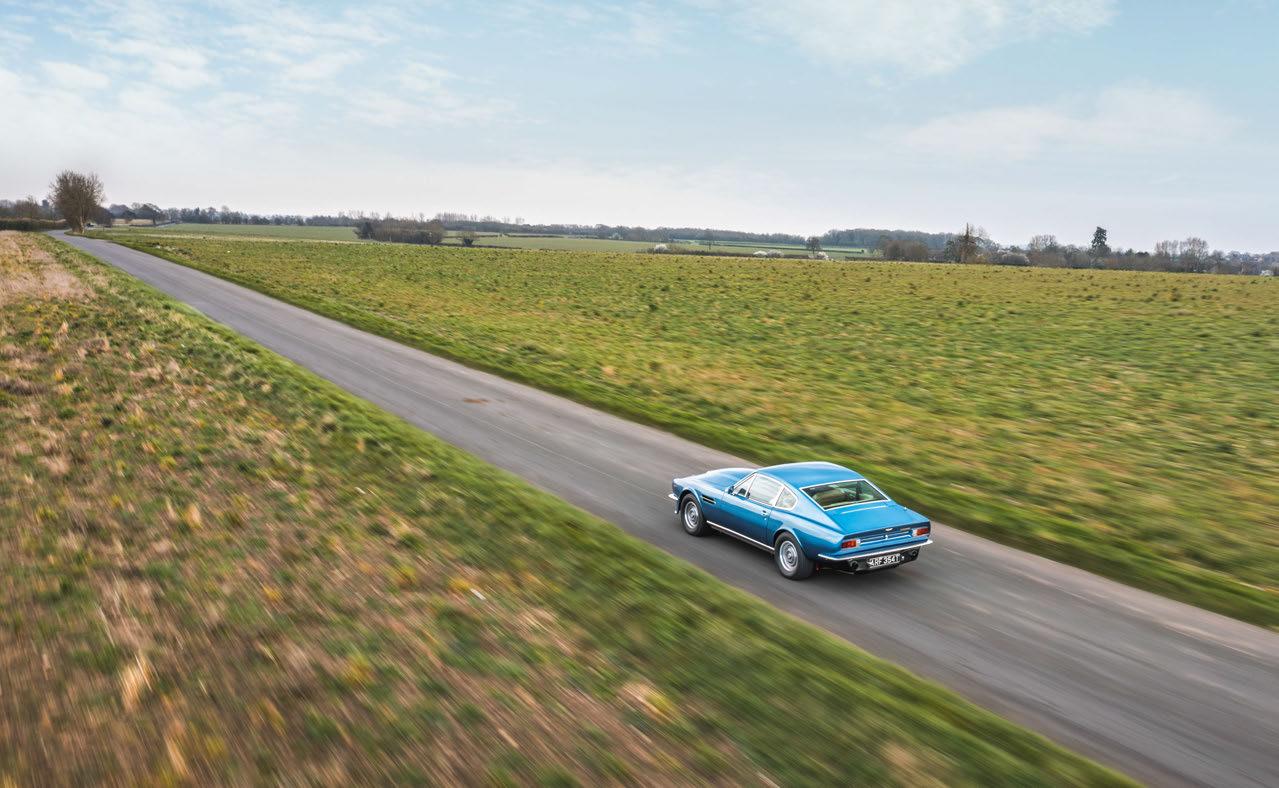

at Le Mans, had been funded by Aston Martin to use the Motor Industry Research Association’s wind tunnel while finding how to remedy this lift, resulting in a blanked-off front grille and a deep front spoiler. So Aston applied this knowledge to what it decided would not be a conversion kit but a new model, the V8 Vantage, reinstating the Vantage tag as the signifier of the hot version.
Two Cibié long-range lights added purpose to the new blank panel, while the spoiler morphed into a bluff air-dam with cooling apertures rather than Hamilton’s fierce blade. Another production AM V8 was fitted with all these Vantage parts, with a slight change in carburation to four Weber 48 IDF2s, and the resulting Tankard Grey car was duly roadtested by the press with very enthusiastic results. For its 9 April 1977 issue, Autocar recorded a 5.4sec 0-60mph time and estimated a top speed of 170mph. Britain’s quickest car.
THAT PROTOTYPE is alive and well and living in Scotland, wearing the vivid Imperial Blue metallic in which it was refinished after its prototype and media role. I drove it in 2016; it was wonderful. Tourmaline Blue is a little
more sophisticated, and again there has been refinishing involved. Twice. Geoff Bowlam, owner of our featured Vantage since 2013, explains that it was sold to a Peter Wren two weeks after the ’78 show, its short-lived reg number replaced by a personal plate.
Mr Wren kept it until January 1984, upon which new owner Mr Graham gave it a new personalised number and it was resprayed in cellulose paint, repairs to the acrylic finish proving impossible to achieve. Mr Graham then sold the Vantage after just three months to John Davidson, who re-re-re-registered it with the pleasingly anonymous number it retains. Mr Davidson maintained the Aston himself and kept it until his death in 2004, whereupon it was sold at one of Bonhams’ auctions at Aston Martin Works Service to a dealer, from whom it was bought by Steven James. Geoff was the next owner; he bought the Vantage at an auction in Broadway, Worcestershire.
He used his new acquisition regularly, including a trip to Le Mans, but snags were accumulating and bits of bodywork – notably the lower corners of the windscreen aperture and the bottoms of the A-pillars – were bubbling as the aluminium skin reacted with
the steel structure, the bane of many a classic Aston. In 2018 Geoff took the Vantage to Spray-Tec Restorations of Wellingborough, where removal of the sill finishers revealed further festering. A restoration and repaint ensued, plus a refurbishment of transmission, suspension and electrics. And engine, refreshed by Oselli Engineering, an Aston specialist for many years. It’s run by David Eales, who ran Works Service in the 1980s and ’90s.
The result is a truly lovely Vantage, so lovely that Geoff entered it in the AMOC 2023 concours at Duxford. And it might have won had it not been for three failings of which the judges took a very dim view. ‘They found dust in the glovebox and on the parcel shelf,’ Geoff reports, ‘and I hadn’t cleaned the underside of the spare wheel cover.’ So shocking was this negligence that they failed to mark the Vantage down for the silver-grey centres of its freshly diamond-turned alloy wheels, shod with the correct Pirelli CN12s, which are now available again. The centres ought really to be an insipid beige, but Geoff prefers them his way. So do I.
IT’S FAST AND fierce, but not frightening. The four-camshaft V8 is a muscle-car motor

Towns’ original shape was halfway to its ultimate evolution as this very example was displayed at the 1978 British Motor Show at Birmingham’s National Exhibition


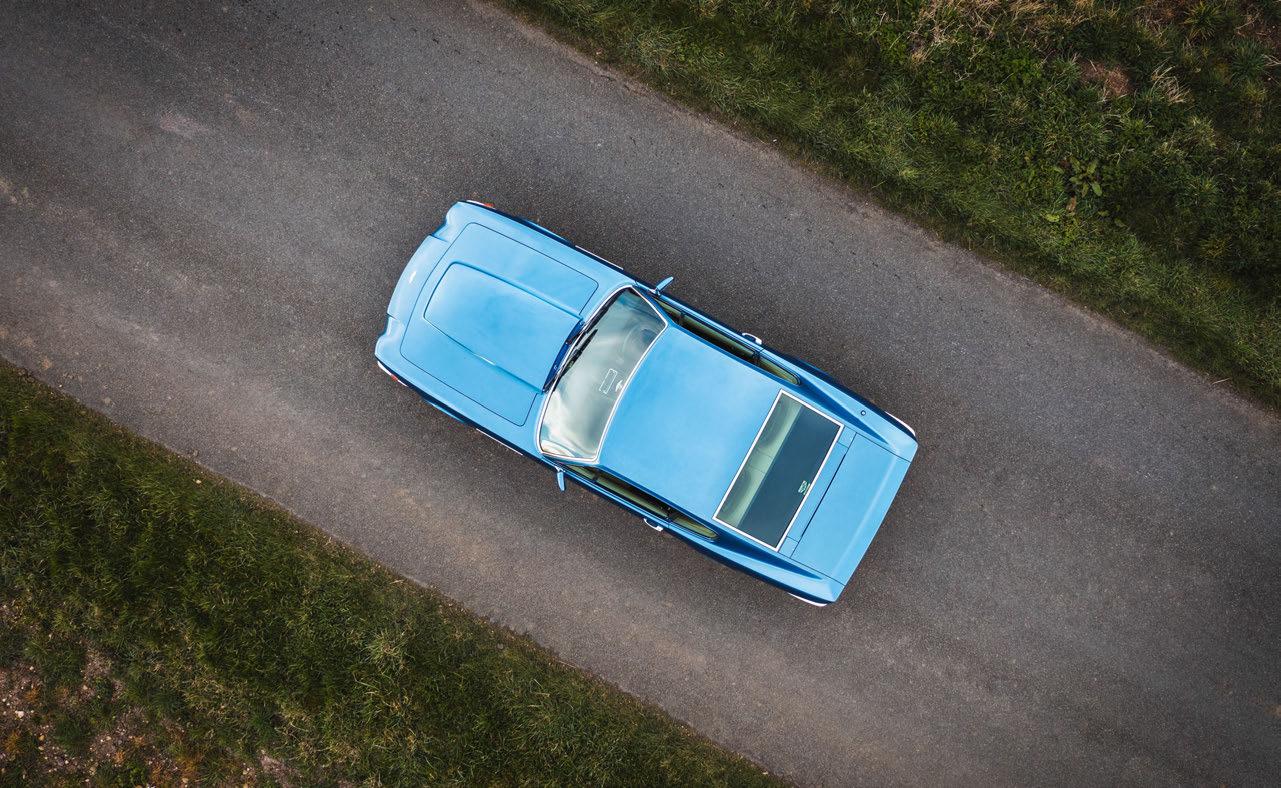
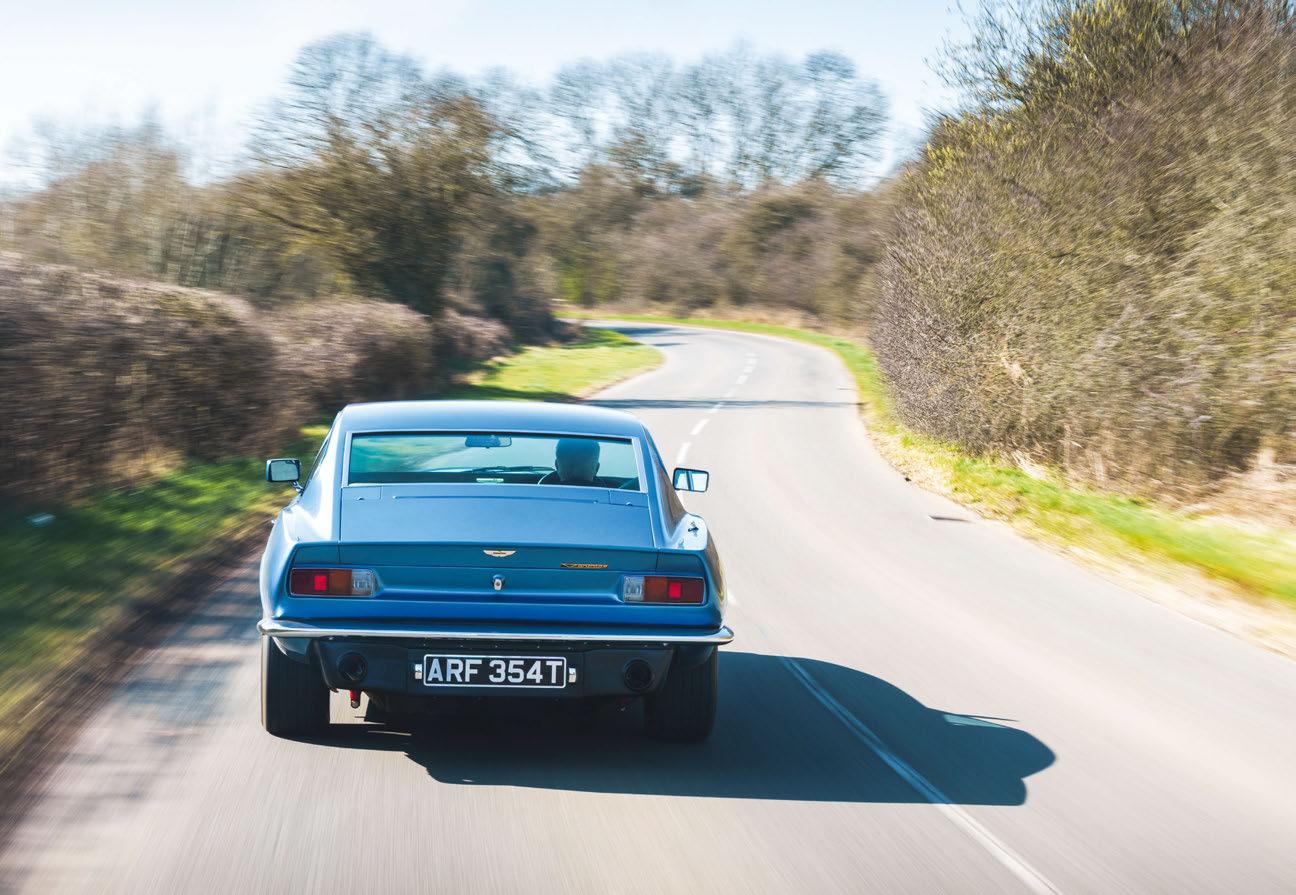
done the European way, designed by expatriate Pole Tadek Marek who moved from Austin to Aston in 1954 and also created Aston Martin’s DB4-onwards straight-six. That, too, was allaluminium in the static bits and significantly oversquare in the bore and stroke. The gruff, forthright Marek retired shortly before the DBS V8 was launched, but he drove a production car and said he was happy with it.
As a racer and rally driver in his youth, he would have loved the Vantage version. As your right foot enters the further reaches of lengthy throttle travel, the engine blusters and bellows, the bonnet rises as the tail squats, and off you hurtle. The torque, always strong, really piles on beyond 3500rpm – it peaks at 4000 – and it shrugs off tall gearing and the Vantage’s 1815kg mass. Production-spec power is 375-380bhp and that 170mph is credible. Maybe more.
This Aston might shrink continents but on first encounter it feels big and unwieldy, as though it might argue with your request to move it to a new heading. The floor-hinged pedals demand firm, deliberate movements; you might expect the same from the five-speed ZF gearbox with its dogleg first gear, but this one proves unexpectedly fluent. Which
does not describe my progress at first, but soon the muscle memory of past V8s and Vantages resurfaces. You just have to be firm and decisive with it. Then, like a continent, it shrinks as your confidence grows.
Now we’re thundering along some backroads, suspension damping a little soft (they’re Konis, so they can be adjusted) but steering accurate and with a plausible weighting. I’ve blipped a downshift for an imminent bend, I aim and we power through, the Vantage seemingly catapulted out on elastic as those ample Pirellis’ sidewalls deform deliciously. That’s a motion you just don’t get in a modern supercar, adding another dimension to the dynamics.
Meanwhile the air-con refrigerates us (it won’t turn off; on Geoff’s to-do list) and I discover a retro radio station on the retro Pioneer stereo radio/cassette player, the one mentioned on chassis V8/VOR/12040’s build sheet then mysteriously amended to a Toshiba. Once we’ve paused the drive for a bit, Geoff shows me the now dust-free internals of the glovebox, containing a fold-out map light and a pop-up mirror, and I can admire the new carpets on which the leather edge
binding, used only in Aston’s show cars, has been recreated.
This Vantage illustrates the life story of the V8 ‘saloon’ neatly. As an early Vantage it points to the glory days to come, while representing some of the gentler aesthetics of the preVantage cars such as more discreet wheels under more delicate ’arches. Geoff’s car has the original 540 camshafts; later cars had hotter 580 cams, and in 1986 an X-Pack option took power past 400bhp. More was available with a Works Service big-capacity conversion. I well remember driving the prototype 6.3 with 450bhp, a late-1980s David Eales creation, bearing the number plate 7 EXY. ‘It’s supposed to mean sexy,’ he said.
By that time the wheelarches were flared, fatter, lower-profile tyres wrapped blingy finespoked wheels, and walnut had returned to the cabin. The V8 Vantage’s role as a symbol of 1980s success and excess was assured, and its time might be coming round again. If you’re tempted, we hope the following pages will help advocate any devilment lurking within.
THANKS TO owner Geoff Bowlam, and to Steve Waddingham, Aston Martin’s official historian.

Stephen Bayley muses on the cultural rehabilitation of the Aston Martin V8
FINE DISTINCTIONS separate renaissance, revival, and rehabilitation. And there are very few certainties here. As soon as someone said ‘No one will ever revive chintz’, along came Laura Ashley.
Now comes the surprising rehabilitation of the Aston Martin V8. It was an evolution of the six-cylinder 1967 DBS, born again in 1976 a er a two-year halt in production caused by one of Aston’s frequent bankruptcies. is original DBS with its ne Bill Towns body was a leisurely car. One American critic described it as an English Lincoln Continental. A hypnotising place where, listening very hard, you could hear your hair going grey.
e V8 is a car of ambiguous character. To the manufacturer, it was a ‘V8 Saloon’. Indeed, it had some of the a ributes of a drawing room: fabric headlining was replaced by leather, wood trim reappeared. A sluggish three-speed auto denied it supercar status: cost-conscious Aston sourced Chrysler Torque ite transmissions for one tenth the price of a ZF manual. Very few customers speci ed the German gearbox. Not meaning to sound kind, people mu ered ‘boulevardier’.
Yet small, but continuous, styling changes altered the car’s character. A blanked-o front air intake was a conceit of pure genius, immediately conveying a fresh sense of purposefulness. It is as memorable as the nearcontemporary Golf GTI’s inset red detail in the grille. Four small headlights had in 1972 been replaced by two larger eyes, backed-up by Cibié driving lights. e bonnet-venting scoop disappeared, leaving an impressive power bulge undisguised. A small spoiler appeared
a . Towns, who died in 1993, always acknowledged his admiration for the Mustang and in the V8 we can see as many clever visual tricks as in the famous Ford.
I knew William Towns and was aware that ‘muscle cars’ were on his mind. e semantics require debate. Can a leisurely car really be muscular? Should well-dressed gentlemen not hide their physique?
Proof of the V8’s urbane character comes with scrutiny of the successor 550 Vantage, which lived from 1993 to 1999. No nice ambiguity here! With its twin Eaton M90 superchargers, it was loud and extreme. e one I drove scared horses, ra led windows, made kids in the prep school car park cover their ears while their mothers gave an appreciative, irtatious smile.
But the He ernan-and-Greenley-designed 550 Vantage had nothing of the poise or class of the Towns V8, which, in any case, had ample power in its later versions. e He ernan-andGreenley car looked like an obscenely overdeveloped muscle dressed in drenched sweats. e Towns V8 had decorum.
And here is the explanation of the V8’s rehabilitation. What is wrong with being a boulevardier? Not all driving pleasures derive from the tug and fret of dynamic forces. Many come from sensations more aesthetic than centrifugal. ere is another way of seeing this: the V8 rehab is an occult signal from classic world calling out ludicrous hypercars too wide to drive that mock all practical design disciplines.
A er all, rehab is a form of therapy to compensate for excess.
‘I KNEW TOWNS AND WAS AWARE THAT MUSCLE CARS WERE ON HIS MIND’
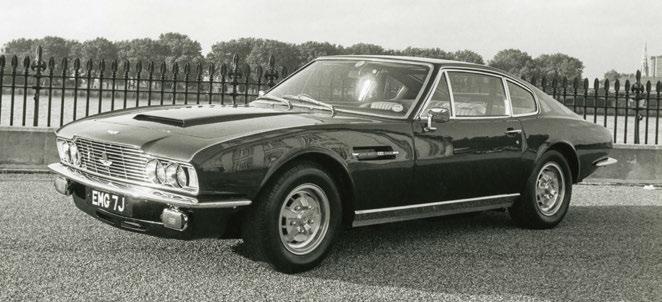
When the William Towns-designed DBS was launched in 1967, the Tadek Marek V8 – which had unsuccessfully raced at Le Mans that year – was far from production-ready. It would finally appear in 5.3-litre form as the flagship model in 1969, with an unquoted power output (which was somewhere north of 300bhp), with Bosch mechanical fuel injection and alloy wheels.
Prices from £50,000
From stop-gap DBS to flight-of-fancy Zagato via the four-door Lagonda and more
Words Matthew Hayward
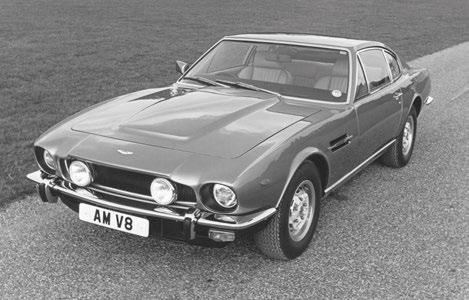
The AM V8 went through many changes over the years, but it remained the entry-level Aston Martin all the way through. Launched in April 1972, the V8 was initially powered by the same fuel-injected engine as the DBS V8. This version remained in production for just over a year, but in order to comply with US emissions regulations the injection was swapped for four twin-choke Weber carburettors – requiring a larger bonnet scoop. The much-improved ‘Oscar India’ model was introduced in October 1978, marked by a more elegant closed bonnet bulge and new interior trim. From 1986, the addition of Weber electronic fuel injection saw the introduction of the final version – identifiable by a new low-profile bonnet. Most were automatics, with five-speed manual cars fetching a premium.
Prices from £42,000
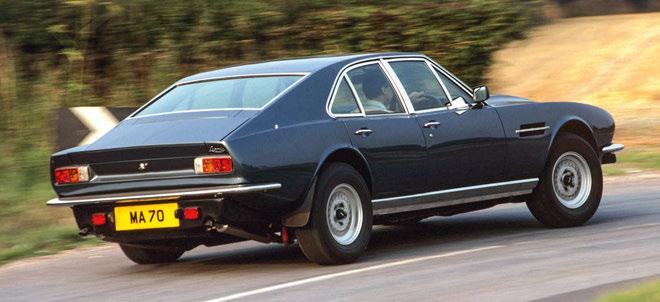
Towns built a four-door prototype Lagonda version of the DBS V8 in 1969, which eventually made it to production in 1974 as the V8 Lagonda. Hugely expensive when new, just seven of these long-wheelbase saloons were produced – paving the way for the far more commercially successful ‘wedge’ Lagonda. Coveted today.
Prices from £250,000
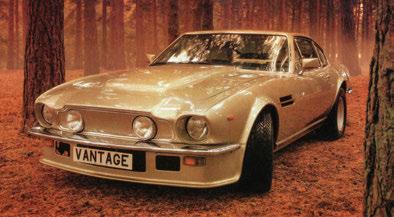
For the first Vantage, Aston Martin fitted uprated camshafts, exhaust manifolds, bigger valves and larger Weber 48s to push power to 375bhp.
Chassis tweaks included wider tyres, stiffer springs and dampers – with a larger front spoiler, rear lip spoiler, spotlights and blanked-off front grille completing the transformation. The ‘Oscar India’ update in ’78 brought in the same improvements as the standard V8, such as the improved interior, smoother rear lip spoiler and closed bonnet bulge. The final evolution – and the most desirable – of the V8 Vantage lineage came in 1986 with the introduction of the X-Pack, sharing its 410bhp engine with the Zagato.
Prices from £110,000
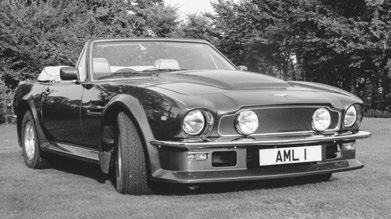
Despite the popularity of the previous DB6 Volante, it took until 1978 before the V8 was given a soft-top option. Spec was broadly in line with the saloon, meaning Weber carbs on the standard model until the electronic fuel injection came on stream in 1986. Extra weight due to the extra chassis strengthening blunted performance slightly, but the wide-’arch Vantage model remedied that problem from 1986. ‘Prince of Wales’ spec cars combined Vantage performance with the less extreme bodywork – initially requested by Prince Charles, but later offered as a special-order option.
Prices from £85,000
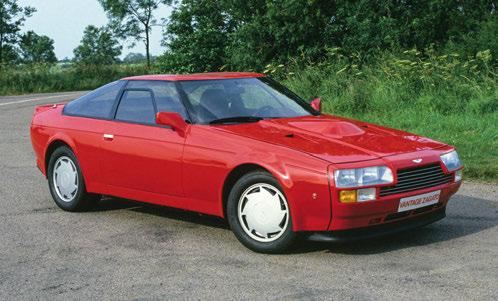
Revisiting the company’s well-established partnership with the Italian coachbuilder, the V8 Vantage Zagato was a shorter, lighter and more slippery flagship model that boasted a 186mph top speed. In order to hit the promised performance figures, the proposed fuel-injection system was ditched in favour of the taller carb-fed intake – resulting in a controversially prominent power bulge in the bonnet to contain the 430bhp V8. The Volante followed a year later; thanks to the decision to run with a lower-powered fuel-injected engine, it was fitted with the more elegant low-profile bonnet. A few were sent to Works Service to have a power upgrade (and matching bulging bonnet) fitted, and these are particularly sought-after.
Prices from £120,000
Oil exec Victor Gauntlett oversaw Aston Martin’s V8 revival during the 1980s
Words Mark Dixon Images The Gauntlett family archive
‘HE WAS A remarkable man, just remarkable,’ sums up former Aston Martin board director Kingsley Riding-Felce about his boss at Aston in the 1980s, Victor Gauntlett. ‘There’s a huge difference between management and leadership, and Victor had leadership. If he stood you on the pavement, told you to close your eyes and then cross the road, you would. He was that kind of a chap.’
It wasn’t just the white-collar staff who felt that way. Long-time Aston engine builder Michael Peach, who worked for the company from 1978 to 2018, puts it more simply. ‘He was lovely. I’ve never known a director like him. He knew everyone’s name in the factory, and he’d come into the engine shop and ask if I had any coffee on the go and then join us for a cup and a chat.’
Asked by a journalist how he intended to make a small fortune out of Aston Martin, Gauntlett reputedly quipped ‘By starting with a large one’. He certainly had no illusions about the company’s problems when he became chairman in 1980. The 1970s had been an even more troubled time than usual for Aston, which had shut its doors in December

1974 and did not reopen them until September 1975, after it was bought by a consortium of investors led by Alan Curtis as chairman. This brought about a temporary revival, including the launch of the ‘wedge’ Lagonda in 1976, but the writing was on the wall again by 1980, when the 450-strong workforce was slashed by 20%.
Enter oilman Victor Gauntlett, who had made his ‘large fortune’ from Pace Petroleum, the independent fuel distributor he’d founded in 1972. Gauntlett was a petrolhead in all senses of the word; his son Richard reckons that at one point he owned about 100 cars, 80 motorcycles and 15-20 aircraft – including a WW2 Spitfire – and he bought his first vintage Bentley at the age of 30. He was passionate, therefore, about Aston Martin’s place in Britain’s cultural heritage and, having invested £500,000 in the company in 1980 for a 10% stake, he became joint owner early in 1981 with industrialist Tim Hearley on a 50:50 basis.
As executive chairman of Aston Martin, Gauntlett was very much front-of-house, and his work ethos was tremendous, recalls Riding-Felce. ‘He would get to the

office at 5.30 or 6am most mornings, driving up to Newport Pagnell from Farnham; I remember him once asking me to come for a meeting at the Pace headquarters down in Hampshire and saying “Right, I need to see you on Tuesday morning and I’ll be kind to you – half-past seven!” And if he had to go to a dinner in London, he might drive straight back to the works afterwards, sleep on the bed in the medical room and be in the office by 6-6.30.’
Despite this incredible enthusiasm – and still having to run several other businesses in parallel – Gauntlett was also a great family man, who always found time for his children. When two of his three sons, Mark and Richard, were very young, Aston Martin was building some miniature V8 Vantage Volantes and their father invited them to try one for size outside the works. As they were sitting there, mesmerised by this exact child-sized replica, a police car pulled up to do a ‘spot check’, which included asking them for their driving licences… All carefully planned by Victor.
A showman as well as a businessman, Gauntlett realised the value of good promotion for Aston Martin – ‘Before he arrived, we didn’t even have a sales brochure,’ says RidingFelce – and via Pace Petroleum he was able to sponsor the return of Aston to Le Mans in 1982, where it finished seventh with the V8-powered Group C Nimrod. Pace, incidentally, had been involved with sponsorship of British motorsport throughout the 1970s and was the first company to sponsor Nigel Mansell in Formula 1, responsibilities that Gauntlett’s eldest son Michael says he undertook simply from a patriotic desire to see Britain and the UK succeed. Under Gauntlett’s stewardship of Aston there was also a side engineering business, a revival of the Tickford brand that David Brown had acquired back in 1955, to develop products for other manufacturers, the Tickford Ford Capri and Tickford MG Metro being the more obvious of many projects that often had to remain under the radar.
Perhaps one of Gauntlett’s greatest triumphs was in persuading the Bond movie producers to revive James Bond’s association with Aston Martin by having him drive

‘He was passionate about Aston Martin’s place in Britain’s cultural heritage’
a Vantage Volante in The Living Daylights – and for them to actually buy the cars used, rather than Aston pay handsomely for the privilege. Gauntlett was even offered a cameo role as a Russian general in the movie, but claimed he turned it down because he couldn’t spare the time.
By the mid-1980s Aston Martin was in better shape than before, producing its 10,000th car in 1984, but it needed more investment than Gauntlett himself could provide. His success in raising the company’s profile took an unexpected turn when, thanks to a chance meeting during a house party for the Mille Miglia in 1987 with Ford of Europe’s vicepresident, Walter Hayes, Ford agreed to buy a shareholding that led to an outright purchase in 1991, with Gauntlett handing over the reins to Hayes. From that came the DB7 and all that has followed since.
What is truly remarkable about Gauntlett’s tenure at Aston Martin is that, despite his relentless ambition for the company, no one seems to have a bad word to say about him. This single-minded focus came at a cost, though. On 31 March 2003, while returning from a trip to Ireland, he suffered a fatal heart attack at the age of just 60.
‘I spent hours in cars alongside him and he used to drive so fast,’ reflects Riding-Felce. ‘If I made any comment about that, he’d say “Well, I can always get another engine, but I can’t get the time back.” It’s almost as if he knew.’
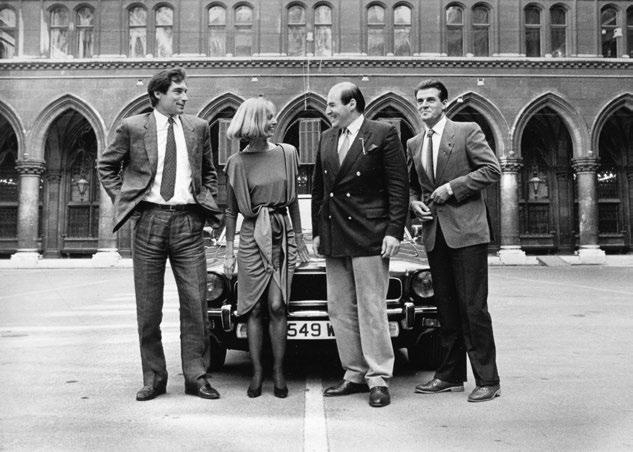
Rowan Atkinson on the Aston Martin V8s that have shared his life
Photograph Giles Keyte / Focus Features
WHAT ONE EASILY forgets about Aston Martin in the era of Victor Gauntlett is what a tiny, boutique car company it was. It made four cars a week: 200 cars a year. Today, the company makes 6000 a year but still can’t seem to turn a profit. Plus ça change…
My first Gauntlett-era car was a V8 Coupé, a relatively rare manual-transmission car that I bought secondhand from a young salesman called Nicholas Mee at Aston Martin Sales in Sloane Street, London, in 1981. Nick continues to sell Astons at his eponymous dealership in Hertfordshire to this day. ‘Previously owned’ my car may have been but the sole previous owner happened to be a Mr Sydney Norman, who was the most prolific Aston Martin buyer
of the time. In 14 years he bought 16 new cars, and his fastidiousness meant that a used Sydney Norman vehicle was a thing to be prized. Mine was a delight, in Storm Red with a beautiful honey-beige leather interior, and I used it as a daily driver, racking up 60,000 miles in three years.
I then bought a used Vantage in Dubonnet Rosso with a magnolia interior and, oh my goodness, it was a bundle of trouble. After I had completed a run in a play in London’s West End in 1985, my friend Sir Stephen Fry and I embarked in it on a three-week tour of Europe, unaware that it was one of a batch of cars with faulty piston rings, resulting in ridiculously high oil consumption, forcing us to replenish

oil as often as we did petrol. I recall that we set ourselves only one goal on that trip, which was to see if we could sit in a piano bar (in any of the smart hotels we visited) for half an hour without hearing the music of Andrew Lloyd Webber. In that quest, we failed.
That year, I placed an order for my first brand-new Aston, the newly announced, lightweight Vantage, to be bodied by the Italian coachbuilder, Zagato. It arrived in the summer of 1986. Mine was chassis No. 5 of the 50 made, in a light blue named Swift Azure (Victor Gauntlett named all the colours after RAF aircraft: Fury Yellow, Vulcan Black etc).
There were a lot of well-documented problems with the Zagato, with cars arriving from the factory in Milan in undeliverable condition, requiring much remedial work at the Aston factory in Newport Pagnell. Mine was stuck there for weeks but eventually it worked well and remains, for me, the bestdriving Aston of the era. I sold it a couple of years later after losing my licence for two weeks, having been caught doing 114mph on the M4 in Berkshire. The next owner, or nextowner-but-one, was Nick Mason, occasionally of this parish.
I was then tempted to order a Virage, the first all-new Aston Martin for 20 years. The car arrived in early 1990 but was a huge disappointment. It was slow compared to the glorious X-pack Vantages that the company had just stopped making and, in the rush to get it to market, the car was significantly under-developed. I never bought a new Aston Martin again.
I did, however, buy two more used ones: another Vantage Zagato that I raced in the early 2000s and an early 1979 Vantage, which subsequently became my character’s steed in the 2018 movie, Johnny English Strikes Again –a car that I still own to this day.
Left
Rowan Atkinson in his own 1979 Vantage for Johnny English Strikes Again; a second Aston was used for rocketlauncher stunts in the film.

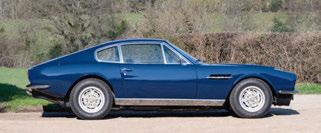

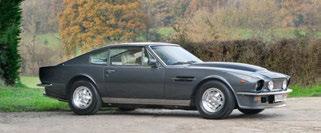
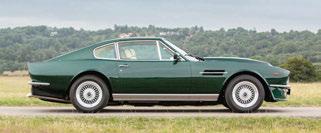
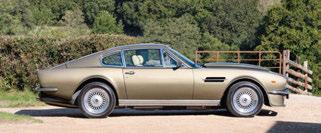
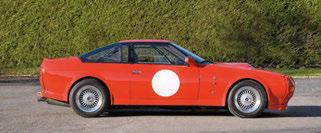

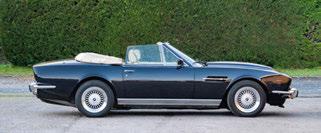


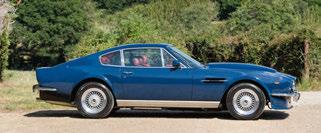

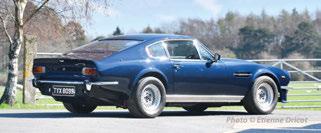
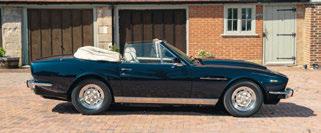
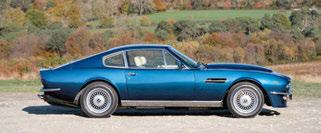
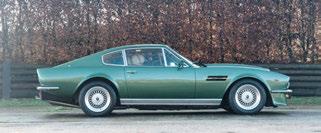
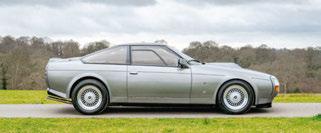
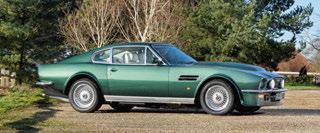

Hagerty’s John Mayhead assesses the Aston Martin V8’s market performance
TO CALL THE Aston Martin V8 a muscle car doesn’t do it justice; it’s like calling Muhammad Ali just a boxer. e V8 is a proper British gentleman thug of a car, a brick outhouse dressed in tweed jacket and cravat, equally happy entertaining at a dinner party or scrapping outside with its sleeves rolled up.
Developed from William Towns’ elegant DBS, the Aston Martin V8 lived for 18 years before being replaced by the Virage. Over that time, it was almost constantly reformed, generally losing power thanks to emissions regulations that saw a variety of di erent fuelinjection and carbure or variants but gaining re nement as each year passed.
e early cars have grunt but feel very much like the 1960s cars they are; from the 1978 October Introduction (‘Oscar India’) model onwards, they are gloriously luxurious grand tourers, mixing acres of piped leather with burr walnut dashes and various performance upgrades. In keeping with previous Aston Martin models, the standard coupé was joined by an uprated Vantage option and a convertible Volante. A handful of four-door Lagonda saloons based on the V8 were produced in the mid-1970s, and in 1986 a Zagato-bodied Vantage coupé was released.
e Aston Martin V8 was a rm celebrity favourite even before it starred in the 1987 James Bond movie e Living Daylights, with V8s representing seven of the 22 Aston Martins tracked in the Hagerty Power List of celebrity cars. at said, Timothy Dalton’s ice driving in that lm certainly cemented it in the cultural landscape of that era, and it’s no surprise that
Hagerty quote demographics show that it’s a rm Gen X favourite, with 46% of owners of that age group, against a 31% average across all cars. A return to the Bond screen for No Time to Die in 2021 didn’t hurt its pedigree, either.
Today, values vary signi cantly based on the year of manufacture, body style and speci cation. Early automatic base coupés tend to be the most a ordable, with one in ‘excellent’ condition listed at £70,640 in the current UK Hagerty Price Guide, higher at $121,000 (around £99,500) in the US version. Manual gearboxes and Ronal wheels add value to any car they’re on.
V8 Vantage and Volante models in the same condition are higher, around the £200,000 mark in the UK, around £25,000 lower in the US, although the UK analysts include the very desirable and powerful nal ‘X-Pack’ cars, which the US team separates. ese cars, in excellent condition, can be worth £350,000 and more, a price rarely reached even by V8 Vantage Zagatos. Two actual Bond cars have exceeded this – a 1973 V8 Vantage used in e Living Daylights that bid to just over $1m in 2023, and a 1981 example used in No Time to Die that sold in 2022 for £630,000. e outlook for the Aston Martin V8 is fair. Values have been largely at since Covid and this is expected to continue, with the very best remaining in demand and maybe earlier cars that need work struggling to nd potential buyers, many of whom are aware of the bills such a car can a ract. But for poise, power and st-in-a-silk-glove charm, you can’t beat this beast of a car.
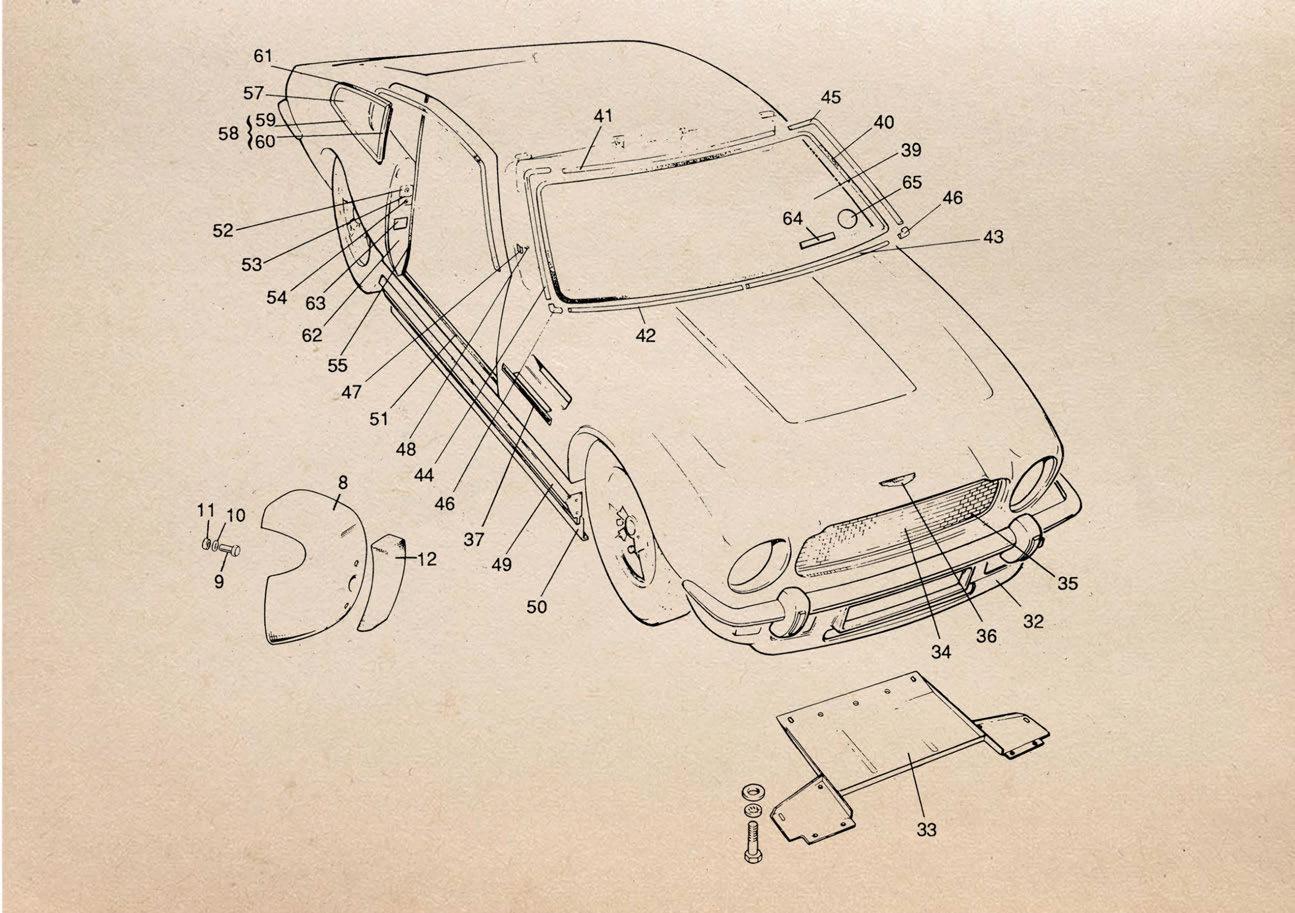
Here at Aston Engineering, we are one of the largest stockists of genuine Aston Martin parts, with thousands of products available in-stock, ready for same-day worldwide dispatch. We also offer an in-house re-manufacturing service. All Heritage models are covered, from the 1958 Aston Martin DB4 through to the 2007 Aston Martin V12 Vanquish. *15% discount only applies to first order, quote offer code: “FIFTEEN”. Trade accounts are available.
Tel: +44 (0)1332 374874
parts@astonengineering.co.uk
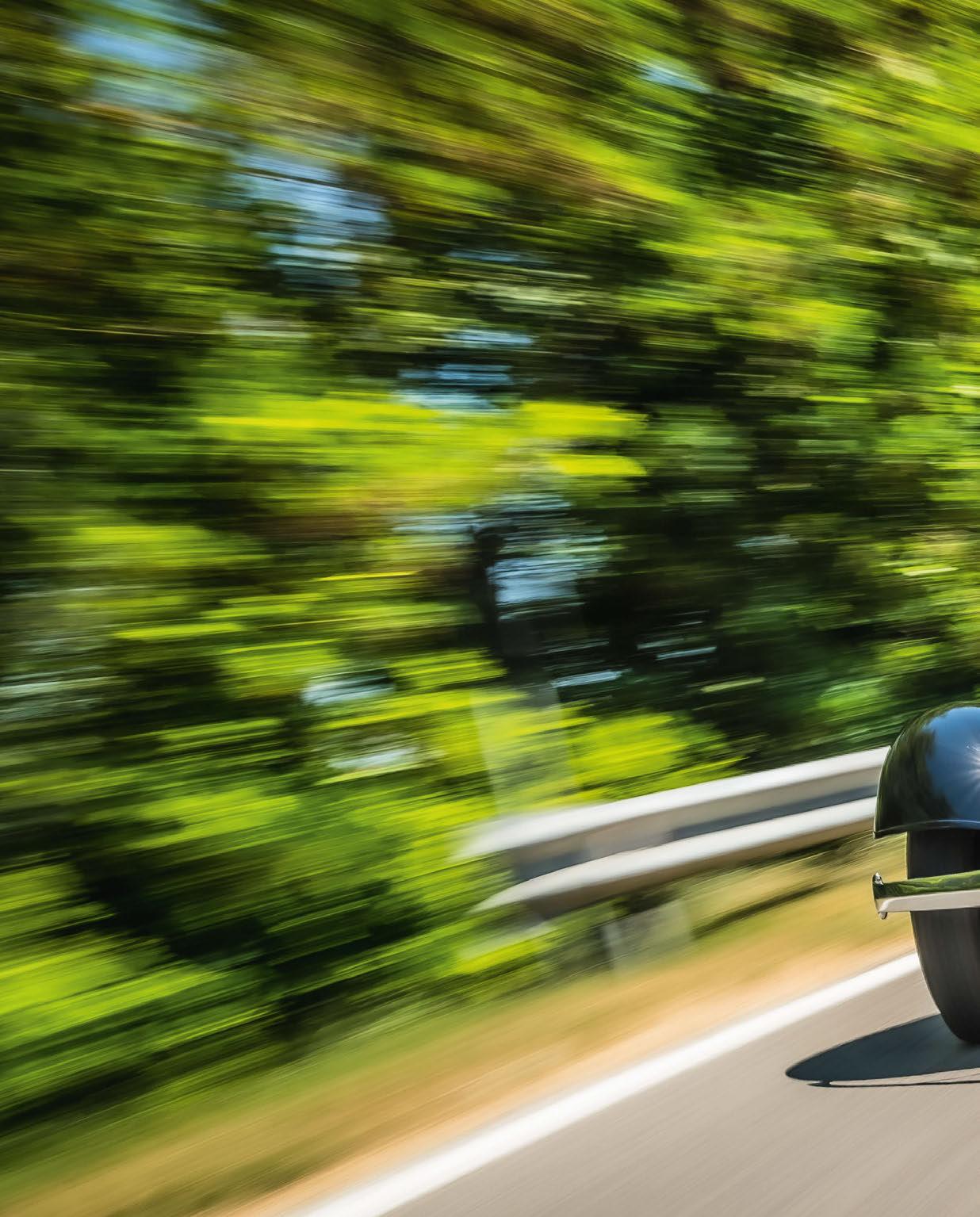
Most think of the Alfa Romeo 6C as a roadster, but one collector prefers his in more understated fixed-head form. Massimo Delbò investigates

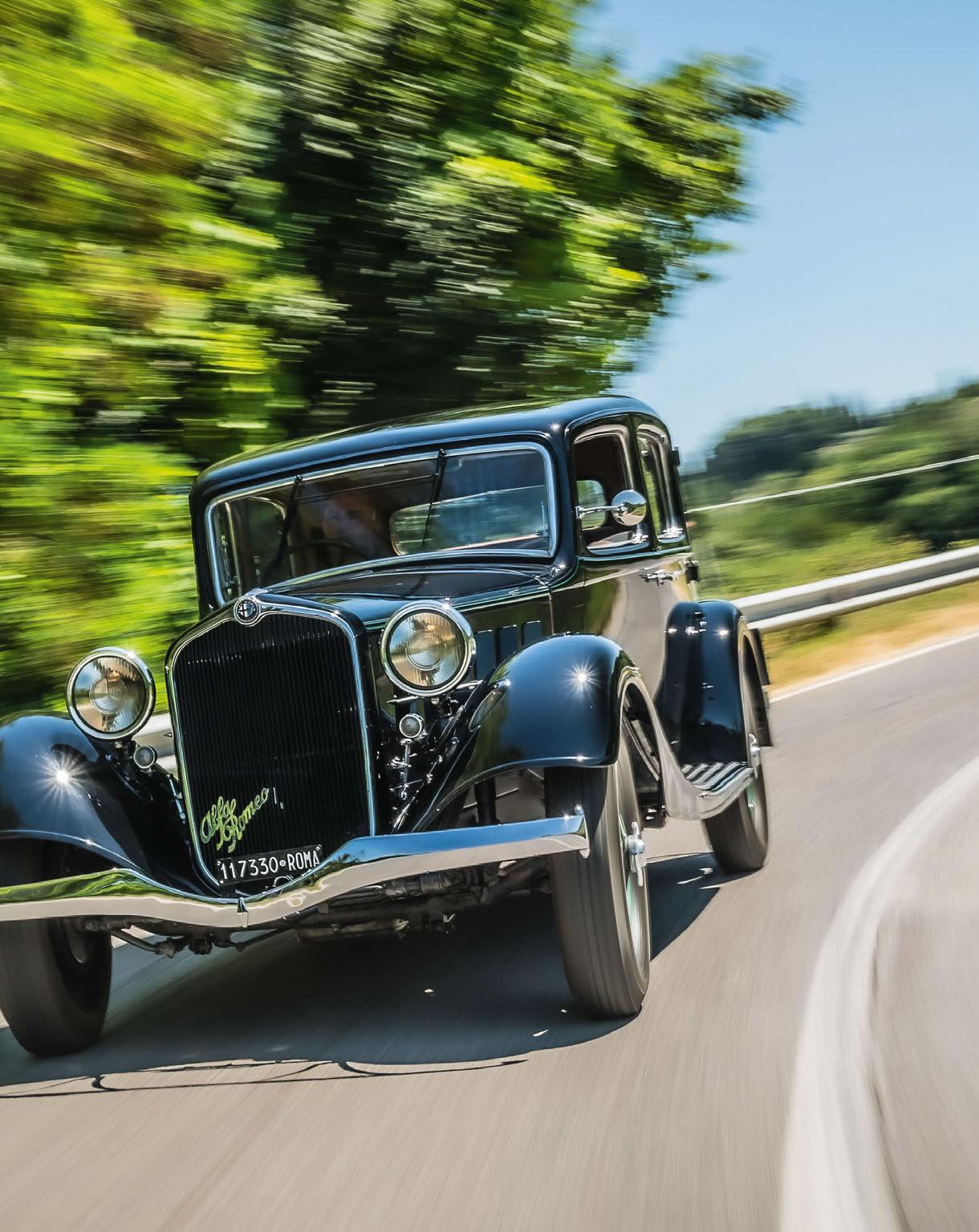
Every time I attend a classic car show, I see all the amazing racing cars, sports cars and convertibles and can’t help but think how much sexier the car-scape used to be. Only I’m wrong, of course: 90, 70, even 50 years ago, the car market was smaller than today’s, but those racing cars, sports cars and convertibles formed an even smaller proportion of it. What we see today is not how the market share was back then, more a survival of the fittest: cars preserved or rescued because of their beauty or sporting ability, rather than surviving through sheer volume. It may even be that these cars led a more pampered life than the more utilitarian saloons that suffered such attrition, hence their unusually high proportion in concours and shows.
‘This is exactly the point I’m trying to publicise every time I have the opportunity,’ says Italian collector Nicola Bulgari. His NB Center in Allentown, Pennsylvania, is like a nature reserve for endangered cars, complete with its own restoration facilities and a schooling programme for students who want to become specialists in classic cars. He also has Italian

subsidiaries in Rome and Tuscany, where he houses a spectacular collection of American cars.
‘After half a century trying to save the “forgotten” American cars, the most humble models, manufactured in their millions from the 1930s up to the 1950s, I see that some are now almost extinct,’ says Bulgari. ‘Buick, Hudson, Nash… in some cases there are examples that survive in running order only in my collection, or of which there are two or three left in the whole of the USA. It is an erasure of collective memory. But it did not happen only in the USA; every country is suffering similarly. If you look at Alfa Romeo, you see an incredible survival rate for the sports cars and a much lower one for sedans, such as the 1934 6C 2300 Gran Turismo we have here.’
To discover how and why an Alfa 6C ended up in a collection of American cars, we have to take a step back. After World War One, Italy experienced growth in the arts, technology, culture, finance, all moving forward at a speed never experienced before in a country that, we tend to forget, was still very young as a single nation, having been unified only in 1861. There was more money, greater wealth in circulation, and new classes of citizens had access to it. Alfa Romeo was one of the most visible symbols of a new sense of national pride, because



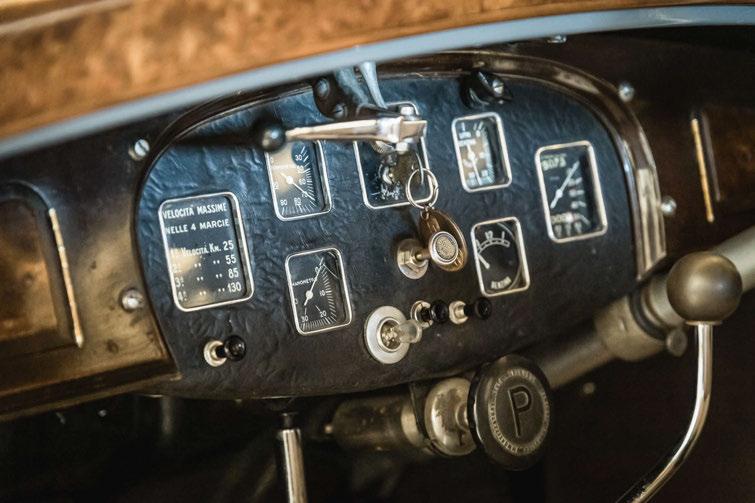
Subtle
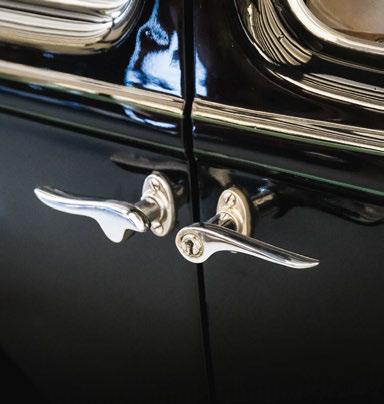
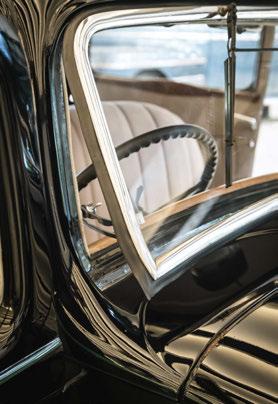
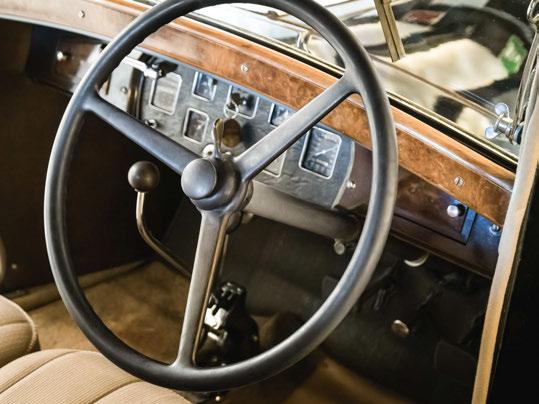
1934 Alfa Romeo 6C 2300 Gran Turismo
Engine 2309cc DOHC straight-six, two-barrel carburettor Power 76bhp @ 4400rpm
Transmission Four-speed manual, rear wheel drive Steering Worm and roller Suspension Front and rear: beam axles (live rear), transverse leaf spring, friction dampers Brakes Drums Weight 1280kg Top speed 80mph
it perfectly represented Futurism, the leading art movement of the period, embodied by speed, technology and advanced styling. Alfa Romeo made the cars to beat on racetracks and long-distance open-road races; with the 1924 P2, the creation of engineer Vittorio Jano, the marque was considered simply unbeatable.
Jano was born in Turin in 1891 and has long been considered the greatest automotive engineer of the period, and among the very best in motoring history. He is the man behind the six-cylinder 6C engine series, beginning with the 6C 1500 of 1925, which survived World War Two and would develop in cubic capacity until it became a 2.9-litre straight-eight.
The 6C 2300 made its debut at the Paris motor show of 1933, in rolling chassis form without a body, replacing the previous 6C 1750 and 6C 1900. The 2309cc engine put out 76bhp and featured a cast-iron block and an aluminium alloy cylinder-head, with twin overhead camshafts. A total of 225 Turismo versions were made, all with leaf-spring suspension and hydraulically operated drum brakes. You could tell it apart from its predecessors by the bigger, more rounded radiator grille. Several bodies were available, mostly from firms such as Carrozzeria Garavini, Carrozzeria Castagna or Carrozzeria Touring, the latter offering several shapes with two or four doors, including the futuristic ‘Soffio di Satana’.
However, the Gran Turismo four-door sedan of the type you see here was manufactured by Alfa Romeo’s own bodyshop. It was a huge commercial success, and between 1934 and 1935, Alfa Romeo built 535 with chassis numbers (and matching engine numbers) from 700101 to 700635. The price tag of 41,500 Italian lire, about €60,000 in today’s money, meant the car was the preserve of the most affluent people.
In October 1935 the 6C 2300B was launched, one of the first cars in Europe to be equipped with independent suspension on all four wheels, but the outbreak of World War Two was becoming ever more inevitable and the publicly owned company Alfa Romeo soon switched its focus to manufacturing war materials rather than cars.
‘The 6C 2300 Gran Turismo in our collection is chassis 700448, the 448th manufactured, equipped since new with a four-seater Gran Turismo body by Carrozzeria Alfa,’ says Bulgari. ‘It is, needless to say, a very rare car, as most of those equipped in such a way unfortunately had their body detached and replaced by something fancier, more valuable in terms of money but less interesting in historical terms. I bought this car in 1998 and vowed to keep it in its original form. I had known the car for many years, and always admired its amazingly original condition, down to even the smallest details.’
The car was sold new in Rome to a member of the Santovetti family, well-known timber specialists. ‘I know several members of the Santovetti family,’ says Bulgari. In fact, it is said that every construction site in Rome is made with their wood; the family owned villas in the Velletri and Grottaferrata areas, and the timber they traded came from forests in the area. Francesco Santovetti is a founder and the first president of RIAR, the Alfa Romeo Italian Registry, based in Rome and considered the most important Alfa Romeo club in the world.
The logbook recalls some changes of ownership, including one in 1951 to the forestry business SAA Bernardini & C, then in 1960 to Graziella Giuliani, a resident of Rome’s exclusive Via Francesco Denza. ‘I don’t have memories of the lady, but I do remember that I bought the car, in the late 1970s or early 1980s, directly from the Santovetti family,’ says Mario Righini, the
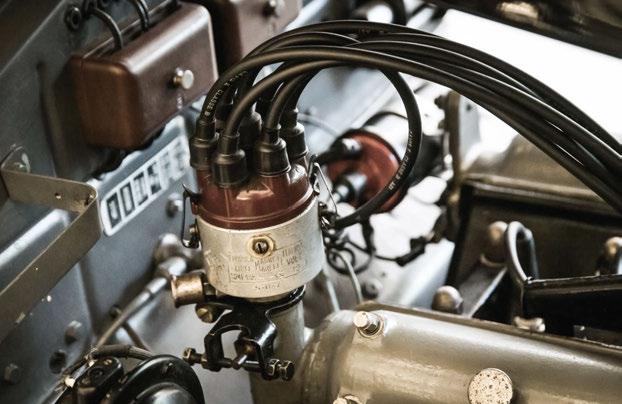
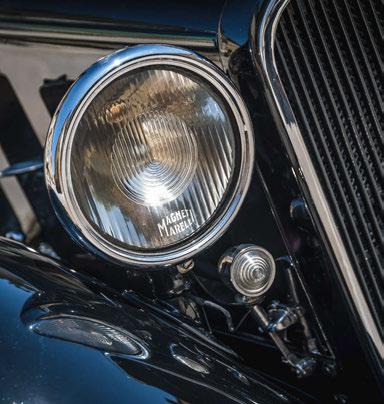
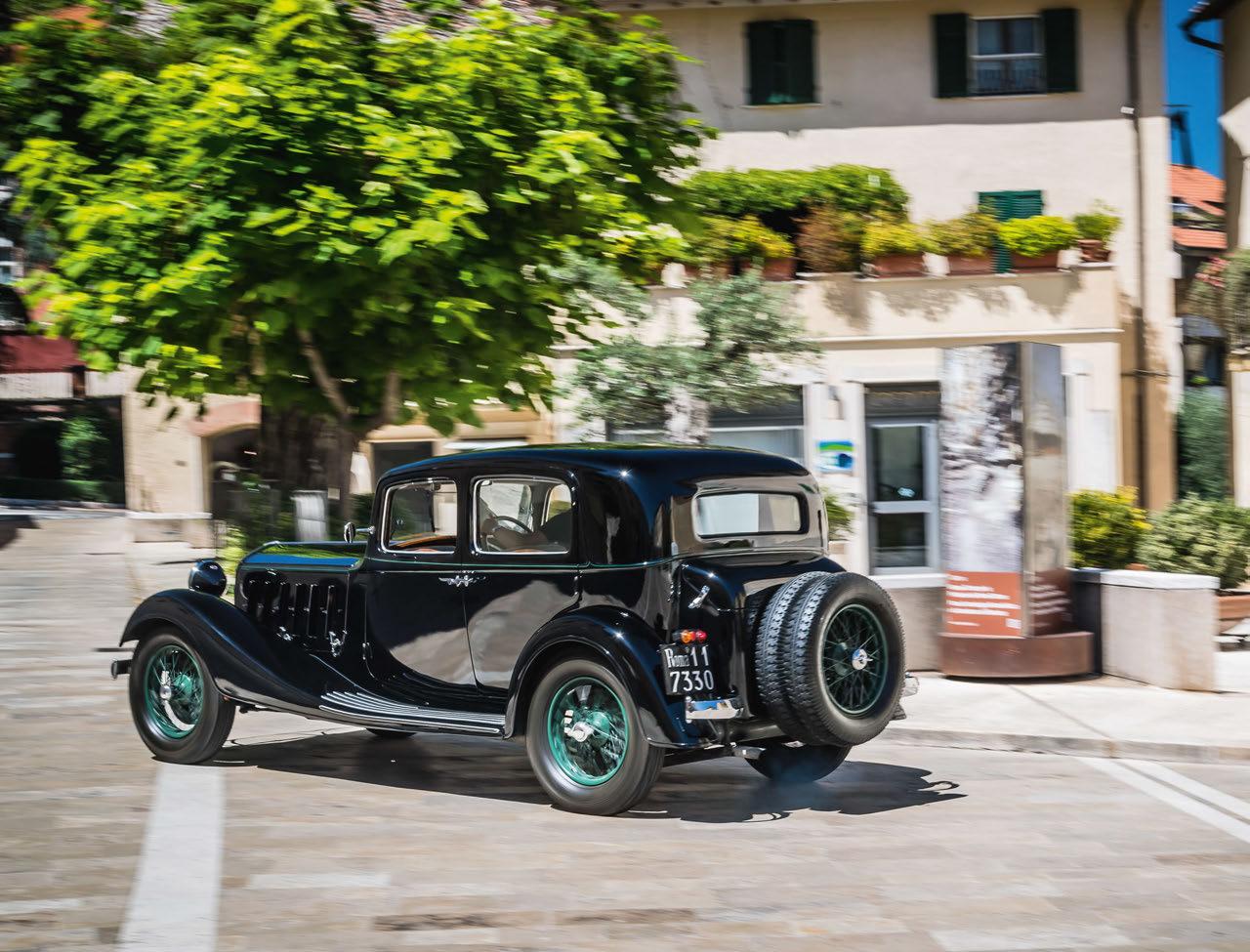

‘I always have my cars ready to be driven. What is the point of having them, otherwise?’
- NICOLA BULGARI

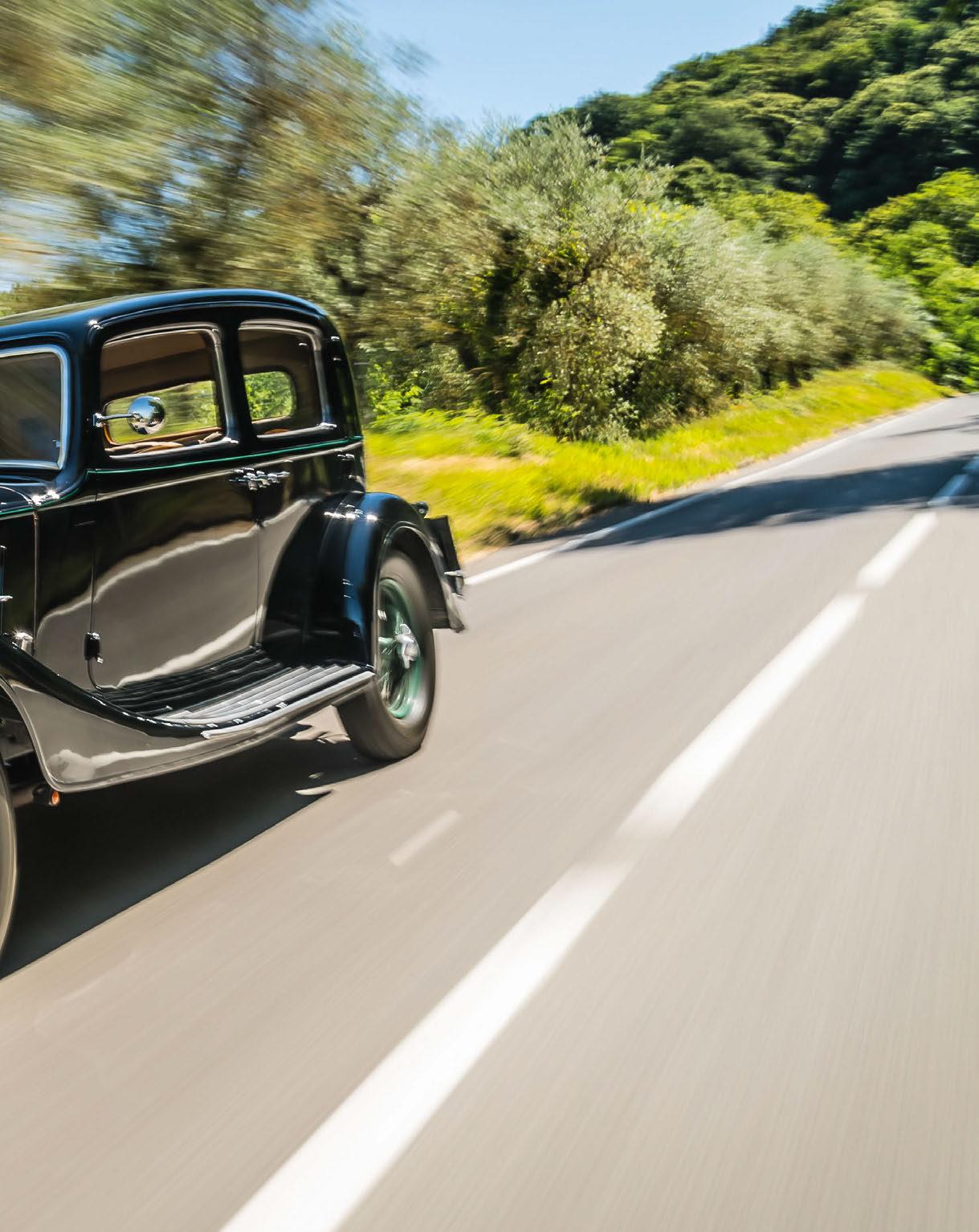
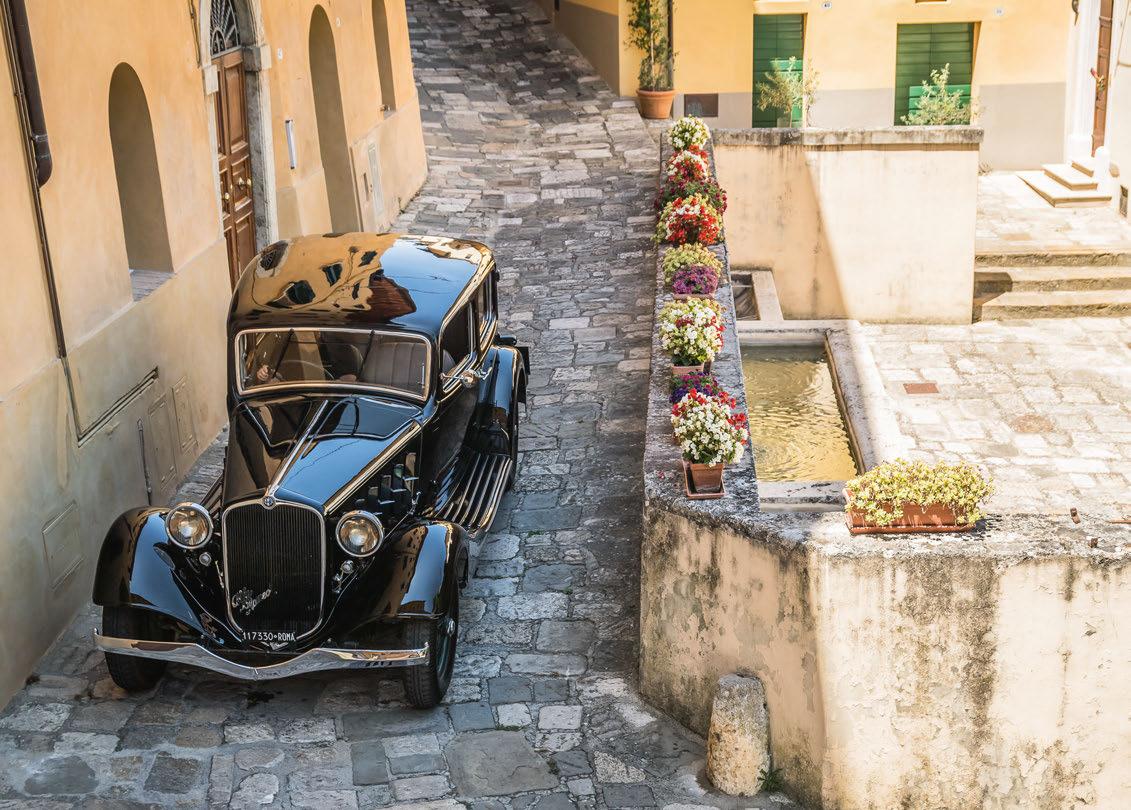
Modena-based Italian collector known for owning the Auto Avio Costruzioni 815 among many preserved, mostly Italian, cars. ‘It had been standing unused for a long time in the family garage. It was amazingly beautiful and charming, with such an untouched patina. I kept it for about 20 years, but I never used it much. I was just making sure it was preserved in good condition and started once in a while.’
In 1998 the 6C 2300 entered the Bulgari collection. ‘I’d known the car since it had been in Santovetti ownership, and I always regret allowing her to go away from Rome,’ says Bulgari. ‘When I got it, it was in need of some work to better preserve its originality and to make it drivable again, as I always try to have all my cars ready to be driven. What is the point of having them, otherwise?’
And so in 1999 all of the 6C’s mechanical parts underwent restoration, carried out by specialist Gianni Torelli, who also refreshed the bodywork, with the aim of preserving the car’s originality. The interior was entrusted to Rome-based specialist Fabio Massenzi for deep cleaning and small repairs. Since then the car has been maintained and driven on a regular basis – the best way to preserve a car.
When I sit behind the steering wheel, I feel immediately at ease, even though it is right-hand drive, as was typical for upmarket Italian cars of the day so that the chauffeured
owner could alight at the kerbside. There is also a central throttle. It is the first time that I have driven a closed Alfa Romeo of the period, yet I’m relieved to discover that vision out is very good indeed. The biggest difference is immediately noticeable and that’s the sound of the engine, made less obvious by the closed cockpit. But even if the sound it makes it softer on the ears, what you actually hear is pure because it is not affected by the flow of air over an open cockpit.
Steering feels precise and copes well with the uneven Tuscan B-roads, so following the twisting strip of tarmac is a real pleasure. Shifting down requires doubledeclutching and third gear suits these roads well. The 90-year-old brakes are extremely impressive!
When I express my admiration to Nicola Bulgari, he nods in agreement: ‘You are right, it is a fun car to drive, though you always need to remember the central gas pedal. If I compare it to a 1934 Buick, I would say that the Alfa is quite raw. I’m very proud of this car, not because of its performance but because it is so rare. Sedans are beautiful cars and should be valued more because of their historical importance, especially today when they are so difficult to find. Sometimes I wonder where all her siblings disappeared to. It is a beautiful car, and we all know that beauty knows no barriers.’
I couldn’t have put it better myself.
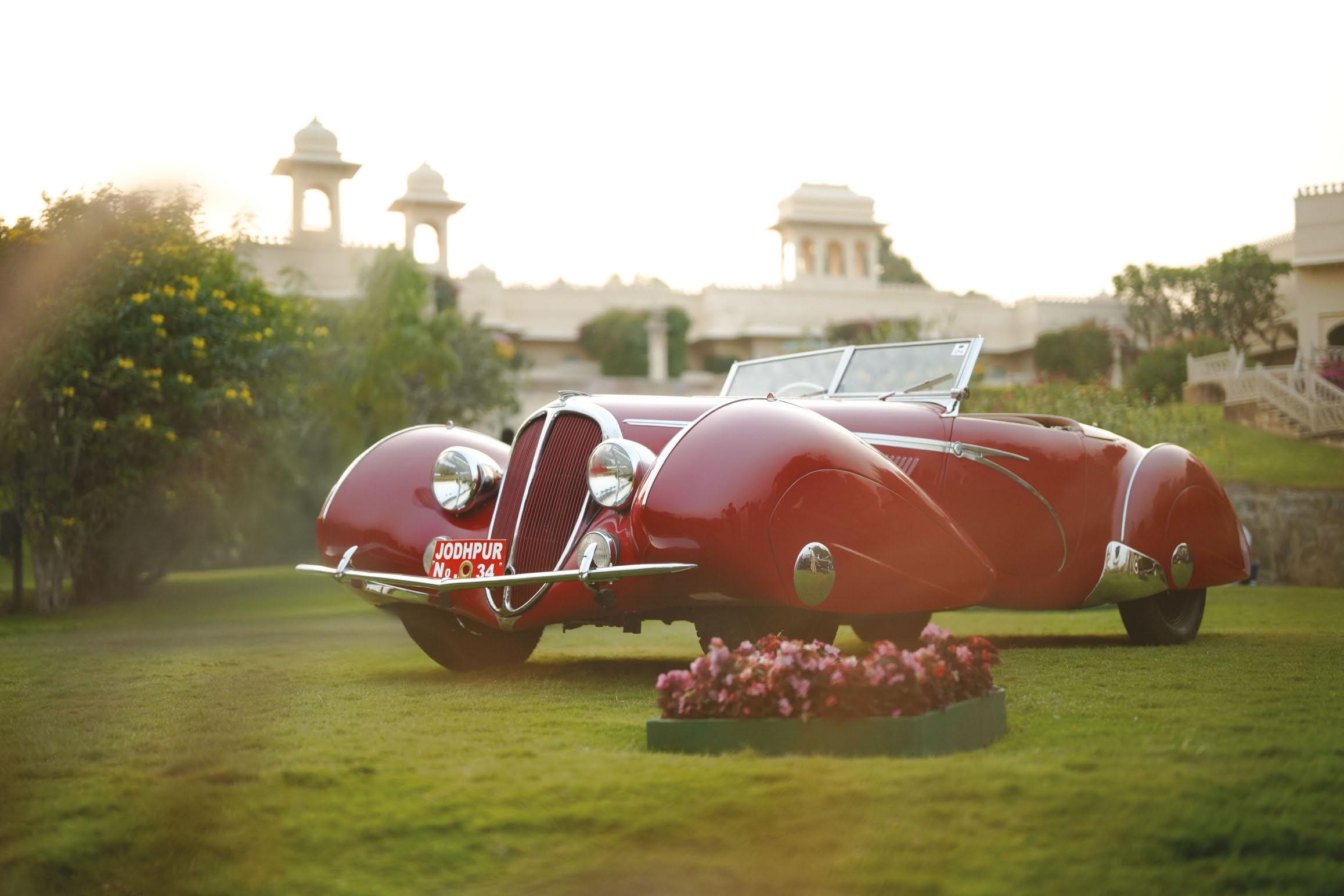














Few cars sum up the early 1990s like the Renault 5 Turbo – but Dimma’s wide-body version took things a stage further, as Ma hew Hayward recalls
Photography Tom Shaxson






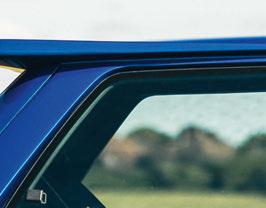

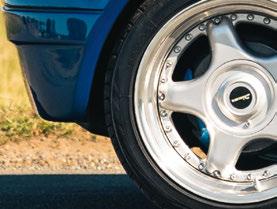














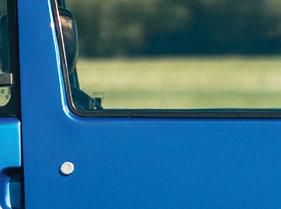
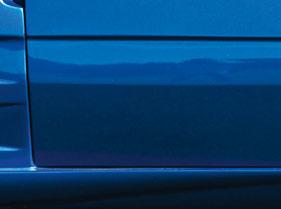




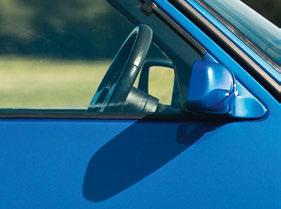















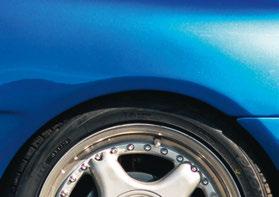
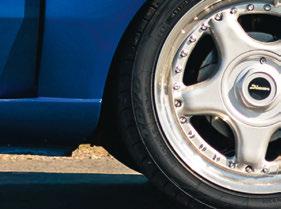

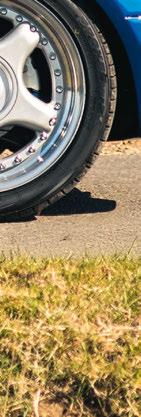


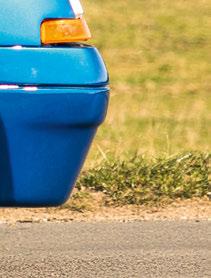





If you’re a certain age, and from the UK, then I probably don’t need to explain why the words ‘ robbing Purple Monster’ have just lodged themselves into my consciousness. For those who don’t t that demographic, I should probably explain… rough the 1990s to the mid-2000s, a particularly extreme tuning and car modi cation scene ourished, much of it fuelled by a magazine called Max Power. It was a cultural phenomenon that thrived on taking mundane hatchbacks (a ainable to young car enthusiasts) and pu ing a unique spin on them with big bodykits, even bigger wheels and and lairy paintwork. While huge power builds were the dream, many avoided the associated insurance premiums by sinking their money instead into sound systems. According to some, the partying that went hand-in-hand with the scene was even wilder than the cars. is feature is not about Max Power. And, while much of that era is best forgo en, it’s a landscape that sets the scene for this eyecatching car, one that could have made a compelling Max Power cover star: a Dimma-bodied Renault 5 GT Turbo. ose who remember the rst issue might still chuckle at the ‘ robbing Purple Monster’ coverline from time to time, which accompanied an equally memorable photo of a Dimma Peugeot 205 GTI.
Dimma-built cars featured regularly over the years, and it’s fair to say that the popularity of Max Power helped Dimma’s continued success in the UK. We’ve been invited to Windsor to drive this survivor, one of the rarer Dimma-built cars, and also to meet the legend that originally put it together: Terry Pankhurst. e story of Dimma is really in two parts. e original Belgian company, Dimma Designs, was founded in 1984 by Michel
Baudouin with the introduction of a T16-inspired widebody conversion kit for the Peugeot 205. Unlike the vast majority of a ermarket parts, Dimma’s stylish bodywork won the approval of PeugeotSport boss Jean Todt, who gave the kit o cial factory approval. Todt even ran a Dimma 205 as his company car.
Pankhurst was the man who brought Dimma to the UK. He started out at Ford in 1973, became a certi ed toolmaker and, having gained a decade of experience, started to put his talents to good use by building and running his own Escort rally car. With several Group 1 wins, his skill at building cars was matched by his ability to drive them. Now semi-retired, Pankhurst is still active within the Dimma community and, following this car’s restoration, was called in by its former owner Daniel Agnew to o cially authenticate it – the nal touch before its sale. Naturally, the man himself has turned up in something rather more extreme, his latest project, the 40th Anniversary Dimma 205-300ps ‘Carbon’. It looks like an original 205 Dimma on steroids, but in truth it’s even more extreme than that. ‘It’s not nished yet, so don’t look too closely,’ he jokes, ‘but it drives like an absolute dream, far be er than I imagined it would.’ Before we get distracted by his new car, however, a ention quickly turns to the Renault. ‘It’s exactly how I remember it,’ he exclaims.
Agnew is quick to explain the restoration, and I think we’re both impressed by the a ention to detail and the sheer level of work that have gone into it. is car started its life as a standard 1987 Renault 5 GT Turbo. Owned by a single family right through to 2021, it was sent to Pankhurst at Dimma on more than one occasion. e paperwork shows that the conversion was completed in 1996,
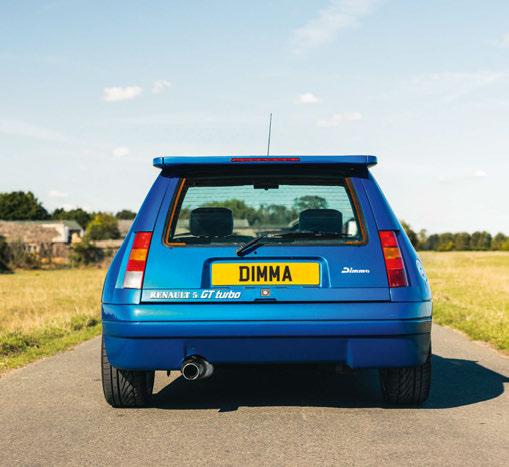

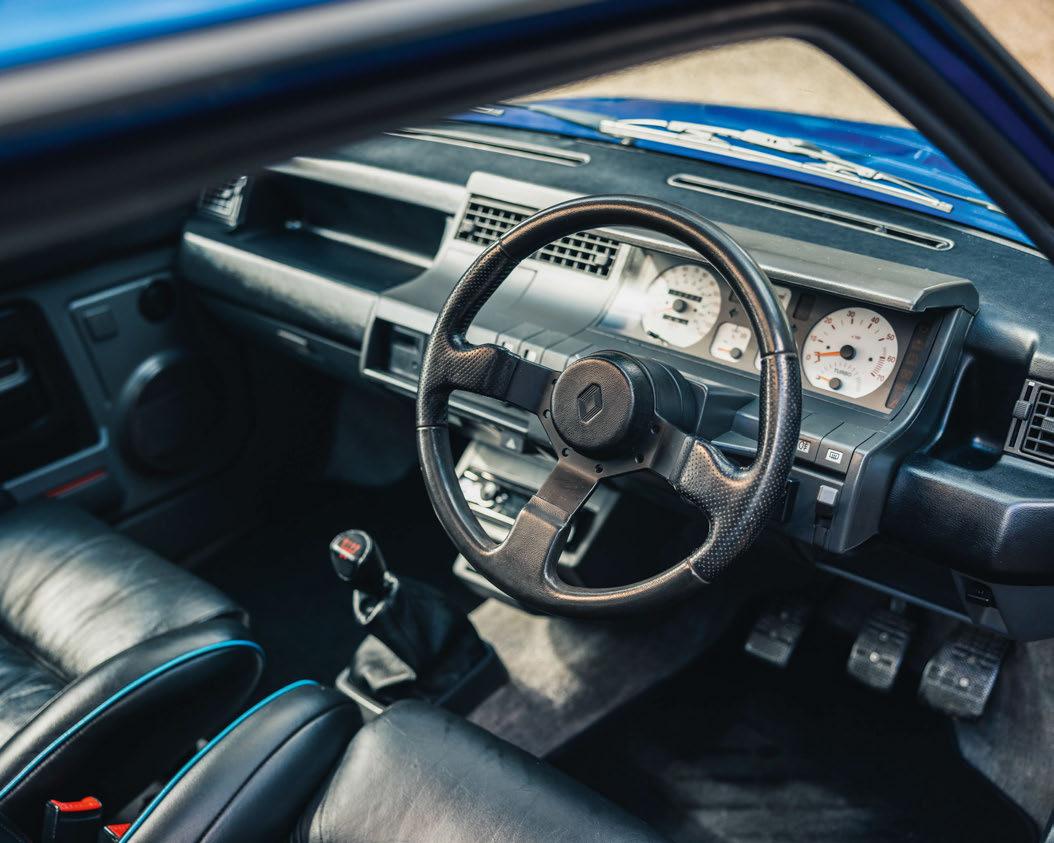
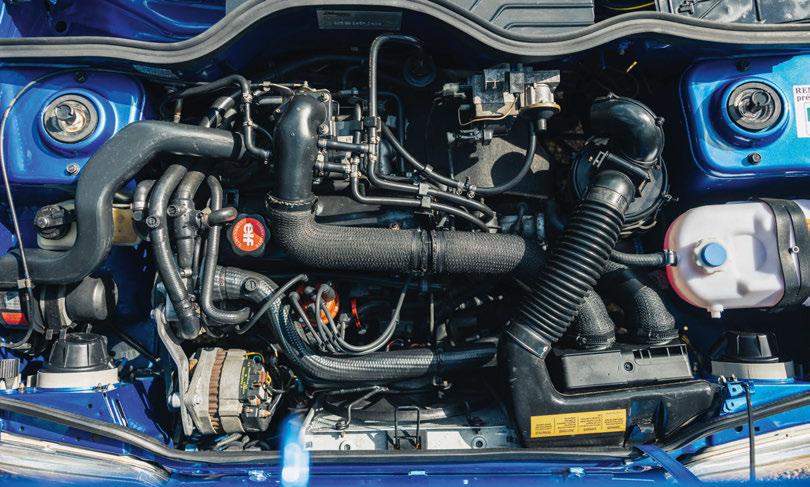
including the fitment of 16-inch Compomotive split-rim wheels, a black leather interior and Koni adjustable coilovers. The mechanicals otherwise remained standard. It returned for a number of smaller tweaks before being kept in dry storage for 20 years.
The car certainly looks the part today, and that’s because it has been fully repainted in the original shade of Sports Blue, including the underside – which was apparently in extremely good shape, requiring only two minor repairs. Just like the 205, Dimma’s widebody Renault 5 drew inspiration from its mid-engined brother, and its slightly softer, more rounded appearance is rather fetching. What’s clear is how well-finished the original Dimma conversion is. Fives weren’t the most painstakingly built cars to begin with, but the quality of the panel fit matches (or even betters) that of the original base car, which is no mean feat for a glassfibre kit of this magnitude. The leather-trimmed interior is clearly a cut above that of any regular French hatch of this era, too.
It’s also been mechanically overhauled, with many OEM parts sourced during the rebuild. Agnew opted to return the car to its most original form, leaving the quad headlights, clear indicators and DTM-style door-mirrors – all added by Dimma later in the car’s life – in a box in the garage. A wise decision. He even went to the extreme of sourcing and reconditioning the correct original spare wheel, although one of the hardest things to find was a parcel shelf without DIY holes cut in for a pair of 6x9in speakers. All the suspension has been refreshed, with polybushes all around, while the braking system has been entirely replaced with new parts. During the restoration, a pack of original Dimma stickers was found in the car and fitted as a finishing touch.
Pankhurst explains how he came into the business of building Dimma cars: ‘I worked for Skip Brown Cars, which was a Peugeot tuner, mainly rally cars including Sunbeams and stuff. I was a sales manager there, and Dimma Belgium sent me some leaflets.’ Pankhurst saw the potential of selling these as conversions into the British market, and decided to take on the task himself, starting up his own business in 1986.
‘I contacted Dimma Belgium, and I said, “Look, I think I can do something with this, would you let me be the importer for the UK
1987 Renault 5 GT Turbo by Dimma
Engine 1397cc OHV four-cylinder, Solex 32 DIS 931 sealed carburettor, Garrett T2 turbocharger
Power 118bhp @ 5750rpm
Torque 122lb ft @ 3750rpm
Transmission Five-speed manual, front-wheel drive Steering Rack and pinion Suspension Front: MacPherson struts, lower wishbones, coil springs, anti-roll bar. Rear: trailing arms, torsion beam, transverse torsion bars, telescopic dampers, anti-roll bar Brakes Discs
Weight 855kg (standard)
Top speed 120mph 0-60mph 7.3sec

and do a proper job of marketing?” Well, I sold 250 of the original 205 kits, all of which were fitted by me one way or another – either in our workshop or at a Peugeot garage. We tried to do the same with Renault, but by the time we got it up and running it was really too late with the 5. The last of the new cars were sold, and the Clio had just been launched, which is why so few were done. That was a kit I designed, which we then sold back through Dimma in Belgium as well. We also helped them with the 306 and 106 Maxi kit.’ The latter was used by Peugeot on the official Super 1600 rally cars.
This explains why I can’t remember seeing a Dimma 5 before, and Pankhurst confirms that only ten were built. During the restoration, Agnew has spent hours searching for leads to other surviving cars and could find evidence of only one plus a couple more rumoured to be in a field, rotting away. Either way, this is an exceptionally rare survivor.
After Pankhurst has carried out his final checks on the 5, and the authentication plaque is suitably mounted under the bonnet, we head out for a drive. Firing up the engine, I quickly remember the last time I drove a standard GT Turbo. In spite of the turbocharger, the engine is a fairly uninspiring 1.4-litre eight-valve pushrod unit


that breathes through a carbure or, albeit this one is a pre y sweetsounding example of the breed. e clutch is he y, but the steering is what really takes me by surprise – an unassisted rack with 215-section tyres requires a serious amount of upper arm strength at manoeuvring speeds.
As soon as you’re on the move, though, everything begins to make more sense. e engine is gutsy even from low revs, but when the turbo starts to spool up from 2500rpm it wakes things up with a useful surge of performance, and you whip through the ve ratios with very li le fuss. at steering isn’t super-alert like a 205’s, but there’s a reassuring sense of stability and composure that gives you more scope to push its limits.
It’s amusing to see just how these two cars stand out in this leafy and reserved corner of England, though not in a bad way – bystanders look on with either smiles or mild bemusement. Neither car is anti-socially loud, and the Dimma 5 is positively understated in the presence of Pankhurst’s 205.
Originally he had intended to build a run of cars underpinned by modern Peugeot 308 GTI underpinnings, but the Covid-19 pandemic meant plans never progressed beyond the rst stage. ‘ e
‘WHEN THE TURBO STARTS TO SPOOL UP FROM 2500RPM IT WAKES THINGS UP WITH A USEFUL SURGE OF PERFORMANCE’

idea was that this was going to be the prototype, and we were going to build at least ten. After the investors pulled out, I got to the point where I wanted to get out of that workshop and retire, so I built myself a smaller workshop at home. At that point it looked like this, pretty much, and I thought “It’s just too good to leave it.” Even though I knew how much work it was going to be – about 2000 hours at that point – I thought “I want it for myself.”’
Pankhurst transplanted the full suspension, subframes, running gear and electrical system from a Peugeot 308 GTI into the much smaller 205 ’shell, which required significant surgery to make it all fit. He remarks: ‘If you make any changes to the wiring, you just upset the ECU, so that’s why I basically put everything in – even the 308 door locks so that the remote works. The beauty of it is that it’s got DAB radio, telephone, sat-nav, air-con and cruise control! It’s got 300bhp, and on the way down here it’s done 42mpg.’
Impressive figures indeed, and they’re not the only big numbers. ‘There are about 4000 hours in it at the moment, but I’ve been tracking it and driving it around and testing it and doing stuff, so it’s got a very temporary paint finish. This is my car, but I could build another when this one is done. It would still take 2000 hours to build, so it wouldn’t be cheap!’
Food for thought… but as we head back, it’s the 5 that’s stolen my heart. I’ve driven and owned my share of French hot hatches over the years, yet few have transported me to a different era quite like the gleaming Dimma 5 today. While I was too young to be fully
immersed in all aspects of the Max Power scene, a healthy obsession with French hot hatches when growing up certainly saw me exposed to many a modified Citroën Saxo, AX, Peugeot 205, 306 and (of course) Renault 5 GT Turbo. They were absolutely everywhere on our roads. Until one day, seemingly overnight, the world moved on. The majority of the crazy modified stuff simply vanished and, just like the magazine (which officially closed in 2011), the scene largely vanished, too.
There’s a very hungry market for 1980s and 1990s hot hatches today, but buyers generally favour originality above all else. To my mind, cars such as this Dimma sit in their own bracket with the likes of Gemballa, Gutmann, Koenig et al, and as such the normal rules don’t apply. While it’s certainly extreme in stance and presence, seeing this Dimma 5 in its purest form actually reveals it to be a very nicely executed car; given the popularity of the converted 205s, I’m surprised more buyers didn’t go for one at the time.
What’s perhaps most impressive about this example is that it managed to survive that crazy Max Power era without falling into the wrong hands and succumbing to crazy power tuning, being crashed or the simple neglect that saw many into an early grave.
Like many of you, I suspect, I never cared for the less salubrious aspects of that scene, but it’s hard not to be impressed by the creativity and the sense of fun that cars like this brought to the roads. And it’s heartwarming to see that, with Terry Pankhurst’s latest creation prowling the streets, Dimma lives on to this day.







BLENHEIM PALACE, OXFORDSHIRE
27–31 AUGUST 2025











Experience the thrill of the open road with Salon Privé’s exclusive Rally and GT Tour – a once-in-a-lifetime drive through Britain’s most breathtaking landscapes, culminating at the iconic Salon Privé Blenheim Palace. Whether you’re piloting a modern GT or a classic masterpiece, join a curated convoy of enthusiasts for three unforgettable days of driving, luxury, and celebration.
LIMITED PLACES AVAILABLE






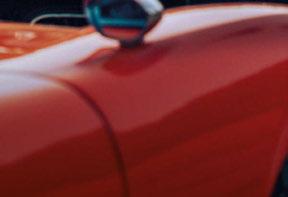














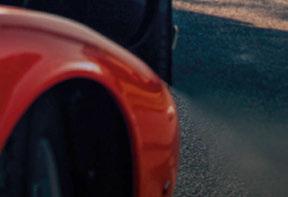


SCAN THE QR CODE TO FIND OUT MORE
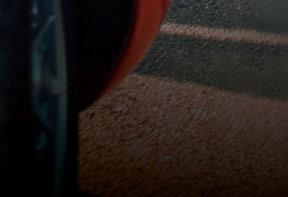






Renault has created a baby electric supercar – to go on limited sale in 2027
Words David Lillywhite Photography Renault
IT DIDN’T ALWAYS take a ermarket companies to make Renaults wild; the company did a pre y good job itself. And if you think its crazy days are over, then meet the Renault 5 Turbo 3E… aluminium chassis, carbon composite body, 540bhp, 1300lb , limited edition, likely to cost £120,000-plus.
It pulls on Renault’s turbo heritage: Louis Renault patented the rst turbocharger in 1902; the turbocharged Renault A442 entered Le Mans in 1975; the A442B won Le Mans in ’78; the 1977 Renault RS01 was the rst Formula 1 car with a turbocharged engine; and the RS10 was the rst turbocharged F1 car to win a Grand Prix, in 1979. You get the picture.
And clearly it’s inspired by the bonkers 1980 mid-engined 5 Turbo, which entered public consciousness in 1978 as a motor show mockup, followed by near-identical production models weighing just 970kg and producing a heady 158bhp from rear/mid-mounted 1.4litre turbo fours. ey achieved huge successes in both racing and rallying in various states of tune, right up to the 350bhp 5 Turbo Maxi.
Other than the similarly mad mid-engined Clio V6, that was it until 2023, when Renault
released the EV Turbo dri concept, a cartoon interpretation of the Turbo Maxi. And, yes, the Dri Concept was all-electric – so all this build-up around Renault’s turbocharging history leads us back to the new production 5 Turbo 3E – also an EV. Quelle horreur!
But wait a moment, s’il vous plait, because though it’s electric, this new model is quite something, as the claimed performance gures more than hint at: a sub-3.5sec 0-100km/h (062mph) time, under 9.0 seconds to 170km/h (105mph) and a top speed of 270km/h (168mph). at’s not to mention a range of 248 miles, with ultra-fast charging capability thanks to 800V architecture.
It’s a full 2m (79in) wide but only 4m long, and it currently weighs 1450kg (3200lb), which by today’s standards is positively lightweight. e bulk of that weight is low down, because the 700kWh ba ery sits between the axle lines, and it’s distributed 47:53 front-to-rear thanks to the twin in-wheel 200W electric motors at the rear.
e advantages of the still rarely seen inwheel motors layout are even fewer moving parts, reduced transmission power loss, more
instant torque reaction, lower overall weight and less room taken up in-car (the Turbo 3E’s boot space is impressive). e disadvantage is higher unsprung weight potentially a ecting the ride. Renault is still working at reducing the weight of the motors, and is aiming to reduce the Turbo 3E’s weight to 1400kg.
ere aren’t many parts shared with the hit new 5 EV (driven, see right) other than rear lights and dashboard, but the Turbo 3E does use the steering wheel from the 5’s hot hatch equivalent, the Alpine A290, complete with its red ‘overtake’ bu on and a blue bu on to adjust regenerative braking.
e Turbo 3E can also be switched between four driving modes – Snow, Regular, Sport and Race – and there’s a dri -assist function to go with the outsized handbrake.
Only 1980 Renault 5 Turbo 3Es will be built, all to bespoke interior and exterior speci cations, with suggested colour schemes inspired by historic Renault motorsport liveries and even a tasteful ‘gentleman drive’ interior option of dark green with tan leather. Has Renault created the rst truly collectable EV? Quite possibly…
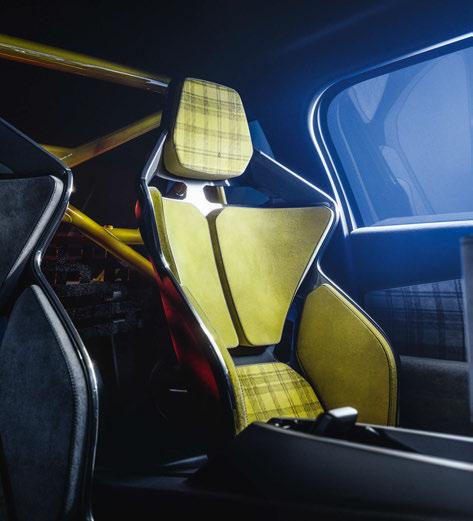


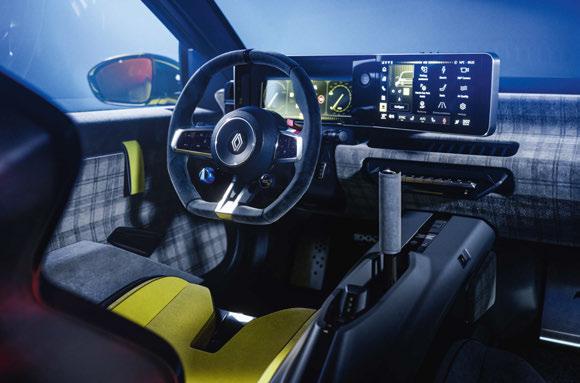

Can it really be true? Do we have a new EV that’s not just keenly priced but also combines great design with a fun driving experience – and some good old-fashioned common sense?
If you follow petrolhead types on social media, you can’t have failed to
notice how every one of them has been raving about the new Renault 5. And with good reason. This could well be the ‘sensible’ daily driver that wins you over to EV ownership, as Octane found out on the country roads around Goodwood.
It’s a great-looking thing, both inside and outside – actually a four-door, although it looks like a ‘two’ thanks to cunningly concealed rear handles – with some amusing design quirks, such as the retro-styled padded roll-top to the passenger-side dash that recalls Renault interiors of the 1970s. It’s amazing how much goodwill can be generated by such simple touches.
Currently you can choose between 120bhp or 150bhp versions, and soon, with the Alpine A290 GTS, a 220bhp option, priced at roughly £23,000, £27,000 and £38,000, respectively. Real-world range is likely to be around 200-250 miles, the more powerful models with the bigger battery offering higher potentials.
Even the least expensive version does not feel like a cheap car. Interior plastics are of good quality and there are proper switches for the heating and ventilation functions, whereas its more expensive MINI Cooper E rival
still relies on a gimmicky and fiddly circular touchscreen: less costly to make but much harder to operate.
Our test R5 was a 150bhp model in top-spec Iconic trim, which starts at £29,000. It’s more than fast enough – about 7.5sec for nought to 60, top speed 93mph – and it has a decent, well-controlled ride; the steering is typically EV-light but that’s par for the course these days.
It also has a fantastic turning circle, which underscores its intended city-car market, although you could certainly do long trips in it. For those longer journeys, kids will be happier in the back than adults, but it’s not unbearable for the latter.
We’ve saved the best until last, though. After a bit of initial set-up, you can disable most of the irritating ‘driver assistance aids’ with the single press of a button. Hallelujah! Why can’t all manufacturers offer this feature? Chapeau, Renault! Mark Dixon






Stored in lock-ups since 1969 and only recently brought to light, this ‘lost’ AC Aceca has Monte Carlo Rally and Tour de France history. Mark Dixon investigates
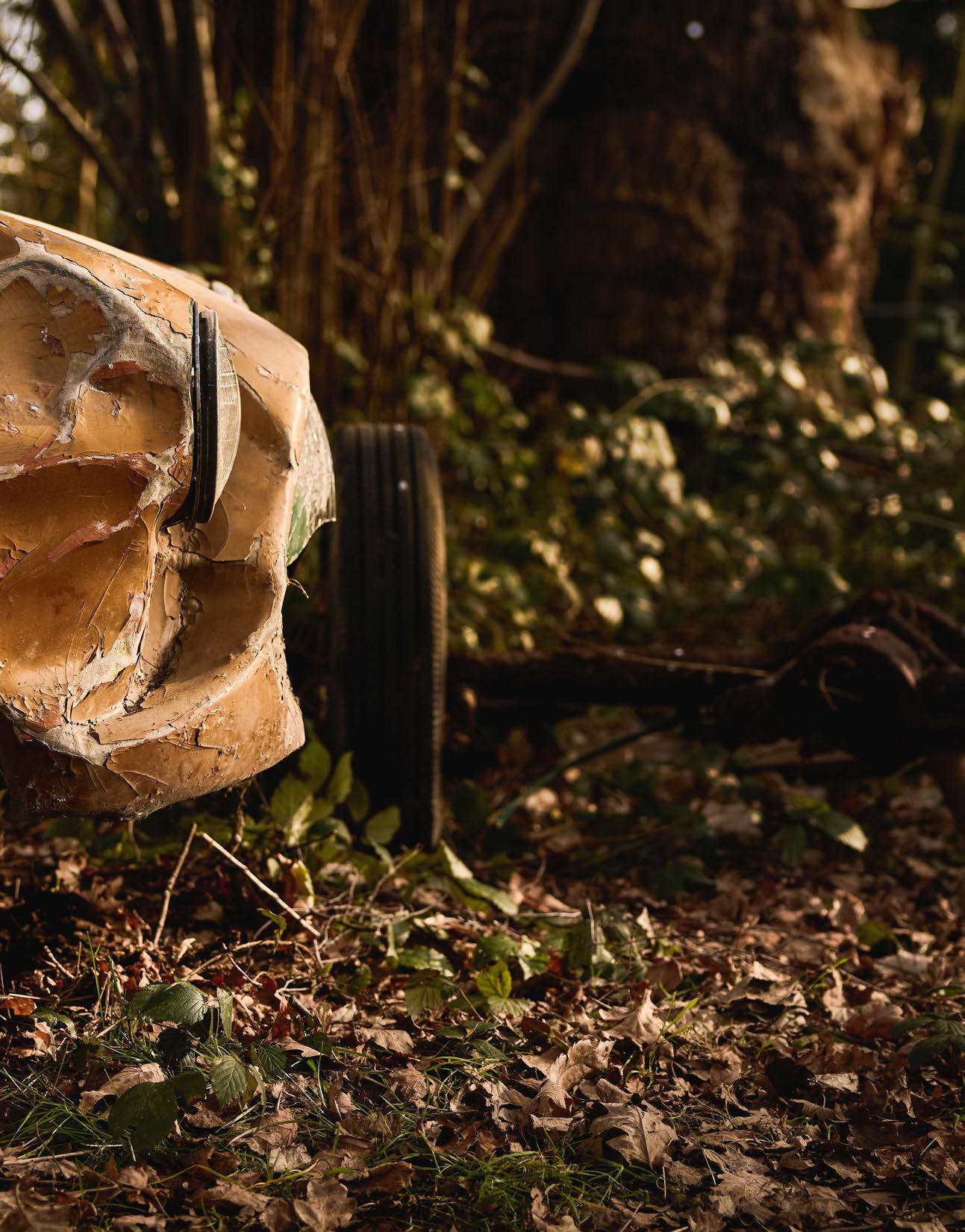
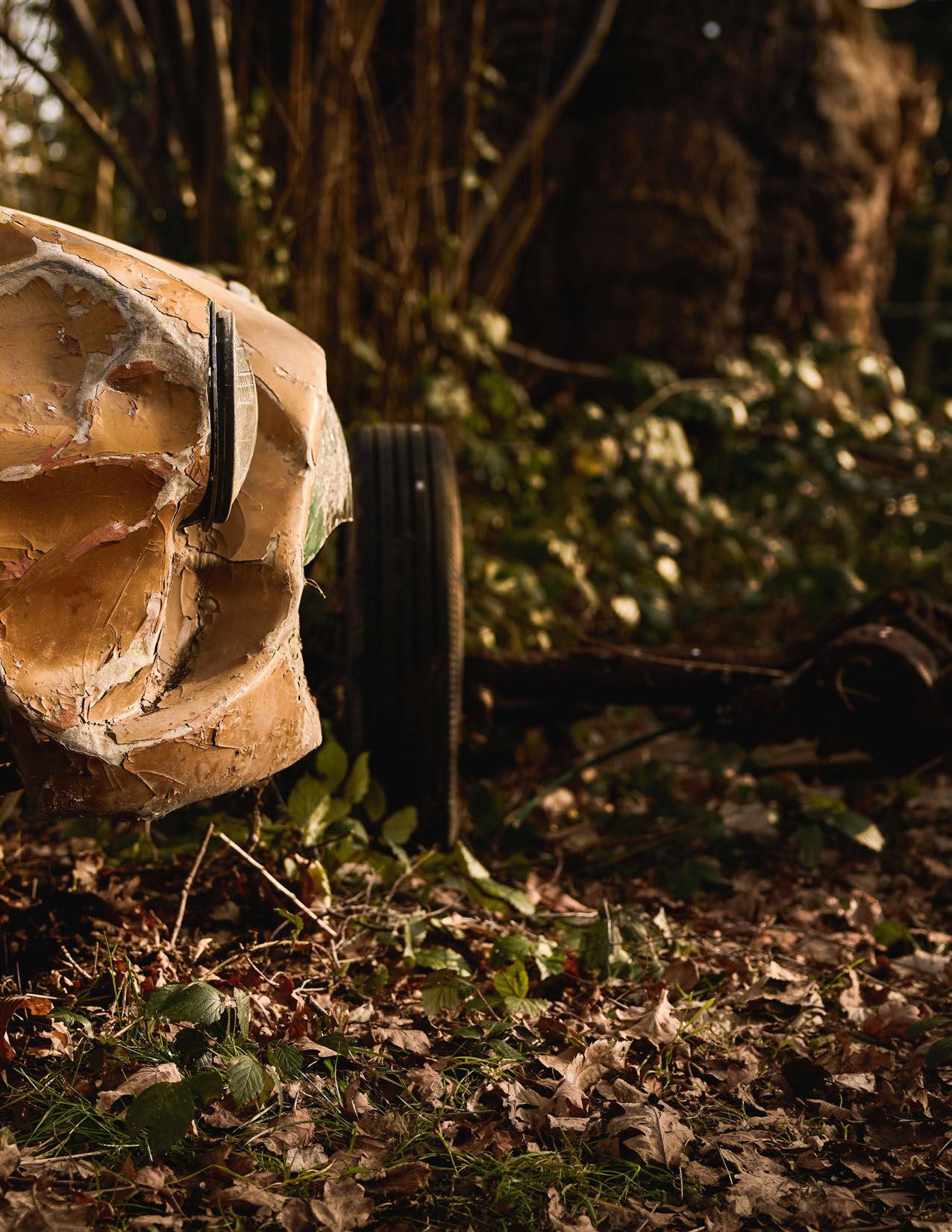
Everyone loves a barn-find. Whether or not the vehicle was actually found in a barn rather than a lock-up or domestic garage doesn’t matter; there’s something uniquely intriguing about seeing a car that has literally not turned a wheel – or received the slightest bit of love and attention – for decades. When Octane took the bold decision to feature the derelict 1961 Ferrari 250 California Spider from the Baillon Collection on the cover of issue 140, it turned out to be one of our best-sellers, and ‘barn-finds’ are regular attractions at car shows and auctions.
The news that a 1957 AC Aceca had just been unearthed in a garage after being off the road since 1969 would be exciting enough, therefore – but what makes this an even more thrilling find is that it has period competition history on the 1957 Tour de France, the 1958 Monte Carlo Rally, the ’58 Tulip Rally and more besides. It even still has the detachable cowling inside the front grille aperture that it wore for those events, with the painted registration ‘150 DPC’.
Earlier this year, Charlie Gray of AC Heritage & Brooklands Cars Ltd, which is based – yes – inside the famous Weybridge racetrack, received a phone call about some cars that needed clearing quickly from an elderly man’s property on the South Coast.
‘The son-in-law of the car’s owner explained that his relative was going into a nursing home due to ill health, and there were three cars that needed taking away – but they all had to be removed together. I was told there were two Bristols and this Aceca, which he said had been locked away since the late ’60s. When he mentioned the AC’s registration I was immediately hooked, because ‘DPC’ is an AC factory registration and there was an Ace registered 170 DPC that raced at Le Mans. I sped down to the property the next day.’
The Bristols turned out to be interesting cars in themselves, both of them early 400 models, although one had virtually disintegrated due to exposure – which is unfortunate because it now seems it may have been the Vienna motor show car. The other one was in a garage on axle stands and was in much better condition.
Thankfully, the cars’ owner, Eric Genrey, is still sharp as a tack (and with a dry sense of humour, too) and he was happy to be recorded on video talking about their history. He remembers exactly how he came to buy the Aceca – and how much he paid for it.
‘My brother was in the motor trade in London, and somebody had traded the AC in against a Fiat 124. I went up to see it with cash in my pocket and bought it for £225. Initially it was only running on five cylinders because the spark plugs were past their best, but we fitted



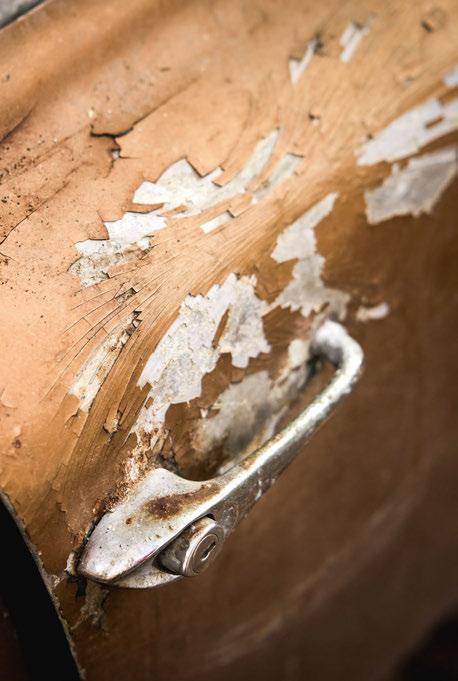
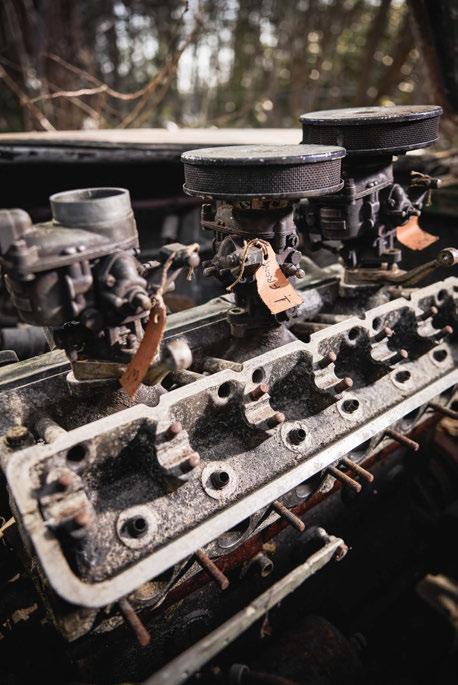
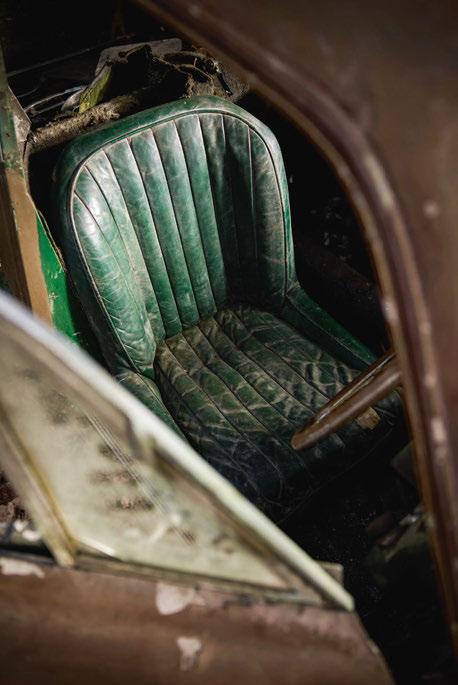

a new set of KLG plugs, roared around South London in it, and then I drove it home.’
This was in October 1967. Eric used the car extensively and toured around Wales in it. ‘It was still a fast car, and fairly healthy,’ he recalls. He also became on first-name terms with the parts counter staff at AC’s Thames Ditton factory. ‘I went up there so often, they started to recognise me. When I bought the car, it had a cracked leaf in the rear [transverse] spring, which made it sit a bit oddly. I rang up, not actually expecting them to have them on the shelf, but they said “Oh yes!” and put my name on one. I drove up to collect it and I don’t think I paid more than ten quid. I suppose they were looking to clear their stock.’
Less than two years later, however, in autumn 1969, disaster struck. Or, rather, a Ford Ten van did. A traffic collision crumpled the offside front wing of the AC and damaged its nose, so Eric thought this would be a good opportunity to strip the car and give it a proper overhaul. You can guess what happened – or didn’t – next.
‘I always had good intentions, and even bought a few spares, but that didn’t translate into any action. Other things came along – domestic expenses, divorce, buying houses… and, as you’ll know if you’ve ever had kids, they last for years!’ Since 1969, therefore, the Aceca has been stored in a variety of garages and lock-ups. Eric reckons it had been in its most recent resting place for at least 35 years, until that fateful phone call to Charlie Gray.
The Gray family business, which is run by Charlie and his father Steve, has in effect become the official AC archive and so Charlie is well used to unearthing the history of the cars. It didn’t take long for him to discover that 150 DPC had until now been a ‘lost’ Aceca, but one that had some particularly interesting early history.
The car’s logbook shows that it was registered on 1 June 1957, colour described as ‘green’, and factory records add that it was supplied by Ken Rudd (of Ruddspeed fame) on 4 June to a J Sunley. It was fitted with a Bristol 2.0-litre straight-six to 100D specification– as Charlie Gray explains, that was a relatively high level of tune, producing 128bhp. Developed from BMW’s pre-war 327/328 design, taken by Bristol as post-war reparations, this engine looks like a twin-cam but actually has a single side-mounted camshaft and a clever drivetrain of pushrods and rockers to operate the valves, meaning it can feature a hemi-head combustion chamber without using twin camshafts.
From old race and rally reports in motoring magazines we know that J Sunley’s first name was John, and he was frequently given a passing mention in event write-ups. For example, several photos were taken of 150 DPC during the 1958 Monte Carlo Rally, with its crew listed as ‘J Sunley and T Pigott’ (the latter probaby a typo for ‘Piggott’). The pair did well to get to the deciding stage of the rally, which was exceptionally tough, but never made the start of this last test. Motor Sport noted that ‘…some of the qualifiers didn’t so much as start, Sunley’s AC, for example, having severe gearbox trouble.’ Nevertheless, the rally organisers charitably agreed to class all the cars that had got this far as finishers – including 150 DPC.
These early years were a busy time for the Aceca. As mentioned earlier, another event on which it competed was the 1957 Tour de France, something of a baptism of fire for both car and driver: Sunley bought 150 DPC in June and the road-race took place in midSeptember. It would be one of the car’s most successful outings,
Opposite page
Although the last owner started to dismantle the car after its 1969 accident, it’s still almost entirely complete and original – a rare find.
however, with Sunley and his co-driver finishing 14th overall. Next was the 1958 Monte and then, a few weeks later, Sunley raced it on 5 April in the 3Hrs for GTs at Pau. This time, the Aceca caught fire and, while Sunley managed to extinguish the blaze, he finished last in class.
The car didn’t have much luck in the Tulip Rally of 30 April, either. The ‘J Sunley’ driving it was not John but Joan, presumably his sister, who was partnered with another female Sunley family member in an attempt to take home the Coupe des Dames. Unfortunately, as mentioned in Rinsey Mills’ book AC Six-Cylinder Sports Cars In Detail: ‘Her hopes came to naught, however, when she crashed on the first section in the Eifel Mountains while trying to keep within the schedule on the twisty roads leading to the Nürburgring, which had been made treacherous by heavy rain.’
Mentions of 150 DPC in period magazines and competition programmes seem to dry up after that, and the logbook shows it passed to a new keeper in October 1961. It had another couple of owners between then and Eric Genrey’s buying the car in October 1967. At some point in the 1960s the original green paint was given a respray in the gold colour it wears today but, as Charlie Gray points out, the alloy bodywork is still ‘thin’, without layers of filler under the paint.
None of the old magazine references tell us any more about John Sunley – but a single photo caption relating to another car does. A picture of a Sunbeam Alpine Series I on the 1960 Monte Carlo Rally names the crew as ‘John-Bernard Sunley / Thomas Piggott’ – and that mention of ‘Bernard’ is the vital missing piece in the jigsaw.
It seems likely that John Sunley was the man whose obituary ran in The Daily Telegraph in 2011. As its subhead summarised: ‘John Sunley, who died on February 14 aged 74, was chairman of the charitable foundation founded by his father Bernard, and head of his family’s hugely successful businesses in the construction industry.’ This John Sunley was born on 31 May 1936, so he would have turned 21 less than a week before the Aceca was sold new on 4 June 1957. Surely the perfect 21st birthday present to a young man from a wealthy family?
There’s more, too. According to the obituary, John Sunley ‘was a considerable sportsman’ who played cricket, rugby, tennis and golf, and was also a Cresta runner, a member of the Royal Thames Yacht Club and active in horse and greyhound racing! Exactly the kind of adrenaline junkie that you’d expect to go car rallying and racing, too. We know that ‘J Sunley’ was a keen rallyist before taking delivery of 150 DPC, since there are mentions in late-’50s issues of Autosport and The Autocar of him and Tom Piggott doing club events in a Sunbeam Rapier – indeed, The Autocar credited them with scoring the first-ever
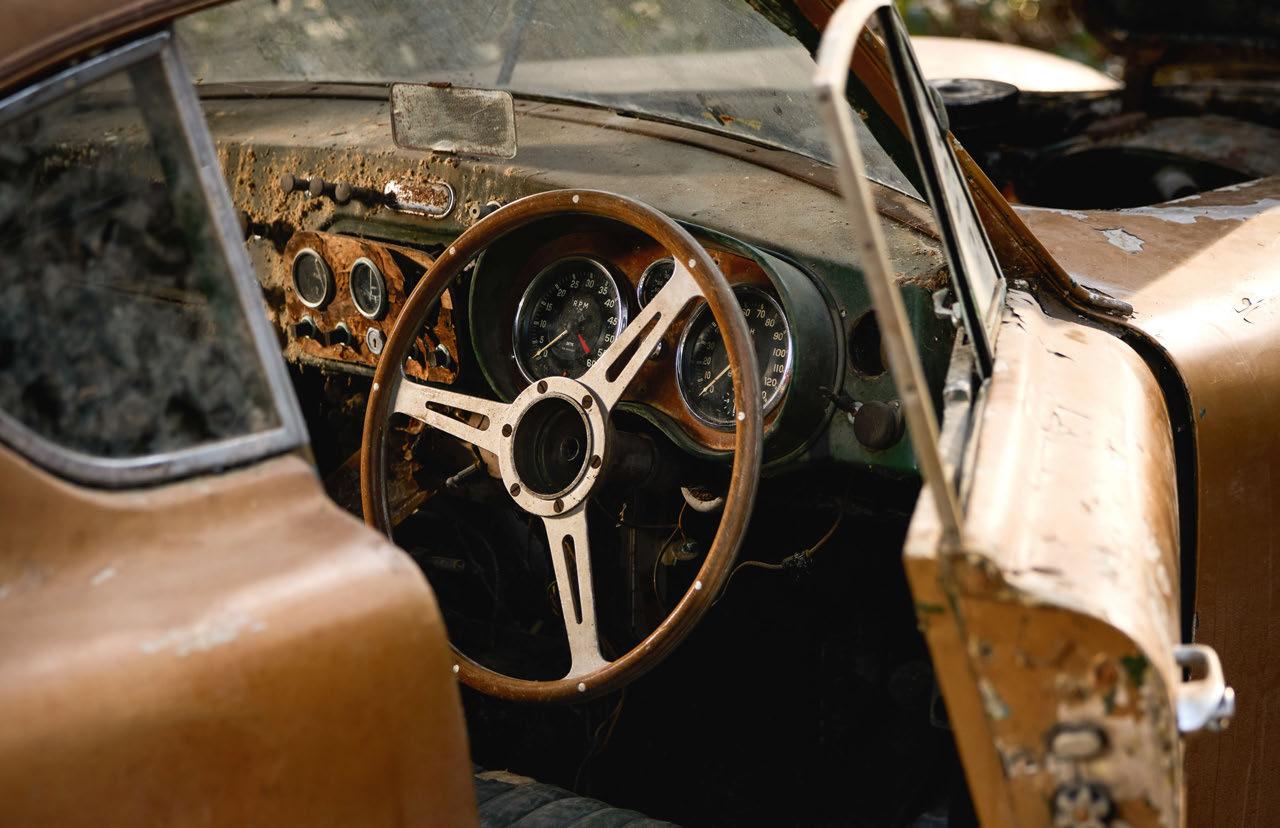

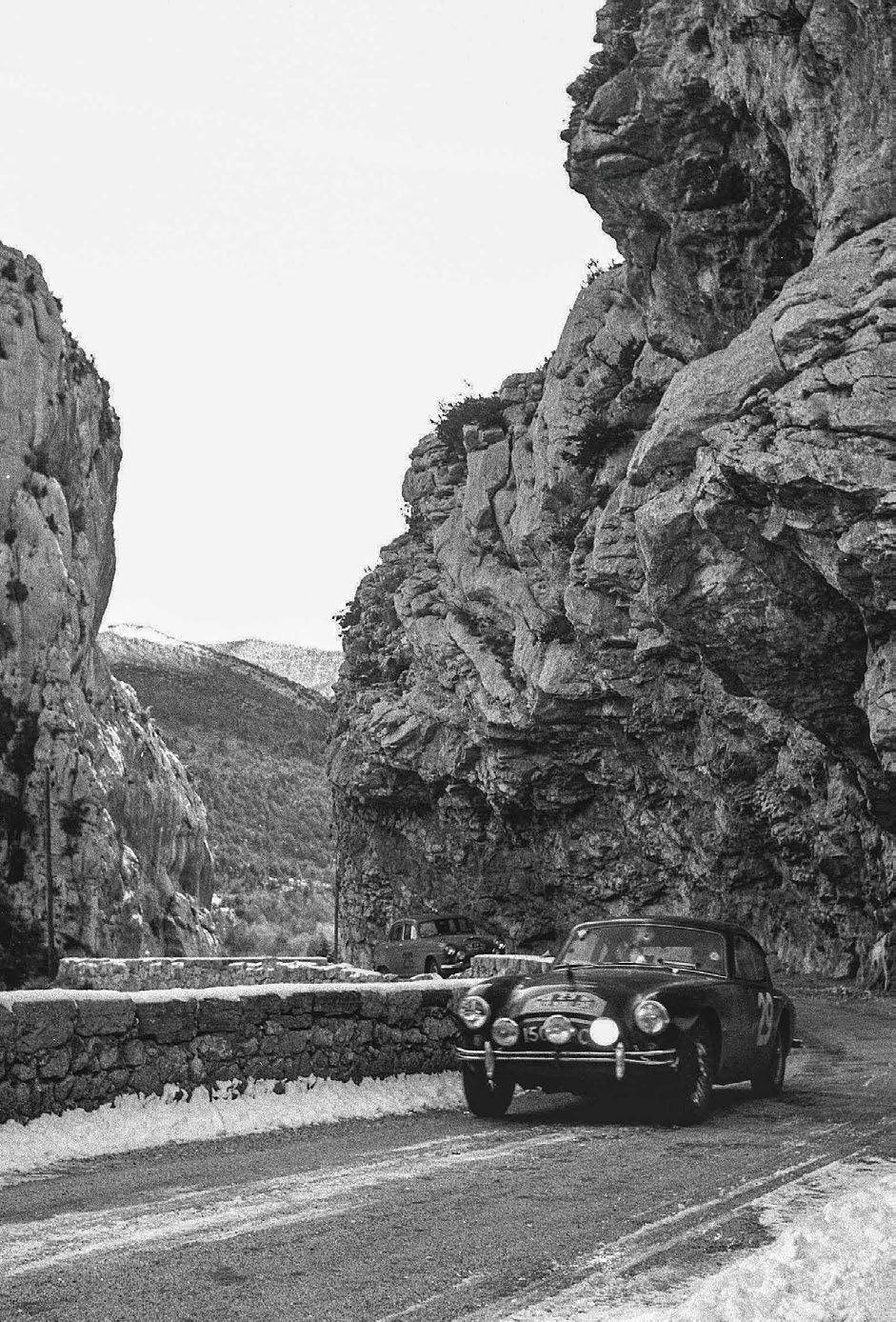
competition win for the then-new model, on a club rally early in 1958.
The good news is that the Bernard Sunley Foundation charity established in 1960 by John’s father is still very active – and, since John was married three times and had six children, there’s a chance that someone, somewhere may be able to shed more light on his ownership of 150 DPC and, who knows, even produce some family photos of it.
That’s just one of the tasks that Charlie Gray will be undertaking now that Brooklands Cars has custodianship of the Aceca. For, to Charlie and his father Steve, custodians are how they see themselves; it’s very important that they find the ‘right’ new owner for such a relatively untouched and original car.
‘The ash framing in the doors hasn’t rotted and they actually close better than on some of the up-and-running cars you find for sale!’
Charlie enthuses. ‘The twin fuel-fillers are a unique feature, too. I’ve seen a lot of Acecas, and owned three works examples by the time I was 28, but I’ve never seen twin fillers like this.
‘Because 150 DPC is in such sound overall condition, after a sensitive restoration the buyer will have the satisfaction of knowing that they have the actual car that did these major events, in all its original metal, rather than something that’s been largely recreated.’
And if you think that someone could turn out to be you – well, you know who to call.
‘JOHN





The
Indianapolis
Motor Speedway Museum has reopened following a $60m refit. David Lillywhite is our guide
Photography Zach Dobson/IMS Museum and Rick McIntyre
OVER 300 CARS. More than 55,000 artefacts. In excess of 140,000 visitors a year. Attached to the highest-capacity sports venue in the world. Does that sound like a museum that needs fixing? The faint sounds of museum curators falling to the ground in shock or slapping their foreheads in frustration would suggest not. But that was where the revered Indianapolis Motor Speedway Museum was at two years ago.
And then it was closed for refurbishment. Completely shut, not just restricted in parts or only open at weekends. Nope, it hadn’t been open to the public since November 2023. Not only that, but while it was closed it did the seemingly unthinkable, selling some of its star cars at auction.
We’ve been following this from well before the closure, and we’ve been fascinated. The IMS Museum (if you’ll excuse the abbreviation) is an institution. It has its roots in 1945, when Anton Hulman Jr bought the Indianapolis Motor Speedway – which itself had opened in 1909 as the world’s second purpose-built, banked oval racing circuit after Brooklands and the first to be called a ‘speedway’. But it had been closed during World War Two and left to fall into severe disrepair, to the point that it looked likely to be demolished to make way for housing.
Hulman worked with the museum’s first curator Karl Kizer and threetime Indy 500 winner Wilbur Shaw to save the speedway and revive the Indianapolis 500 race. Shaw died in 1954. Two years later Hulman formally opened the museum on a non-profit basis to showcase historic race cars – just 12 of them initially – and memorabilia. Over the years it grew and grew, gaining exhibits and a safe home under the current watchful eye of landlord and legendary team owner Roger Penske. It’s kept independent from the Indy 500 as a separate 501(c)(3) charitable organisation, but don’t think for one minute that means Penske isn’t deeply involved. Little escapes his eye for detail and, like the museum’s board of directors, he was keen for the museum to expand and evolve.
But what was wrong with it? Well, if you’ve ever been there, you’ll know that you’d walk in and almost immediately see almost the entire museum, with the result that some visitors simply nipped in to buy tickets for their tour of the track then left again. The legions of cars would swim in front of your eyes, feeling overwhelming and arguably confusing to those who aren’t so familiar with racing machinery. There was none of the ‘journey’ that modern museums like to provide for visitors and, confusingly, not all the exhibits were related to Indy in any way.
There was also little to encourage younger visitors to engage with the exhibits or hang around, and even less that might guide them towards careers in motorsport, despite the proliferation of teams locally. Don’t misunderstand us, this was still an important museum. But something had to be done to bring it into the current age – and beyond.
Now, it’s almost unrecognisable, after a remarkable 17-month, $60.5m rework. The journey – and it really is a journey now – leads visitors through almost twice the floor space of the previous layout, achieved through adding a mezzanine level and opening up the basement that had previously been out of bounds to most visitors. Penske had stipulated
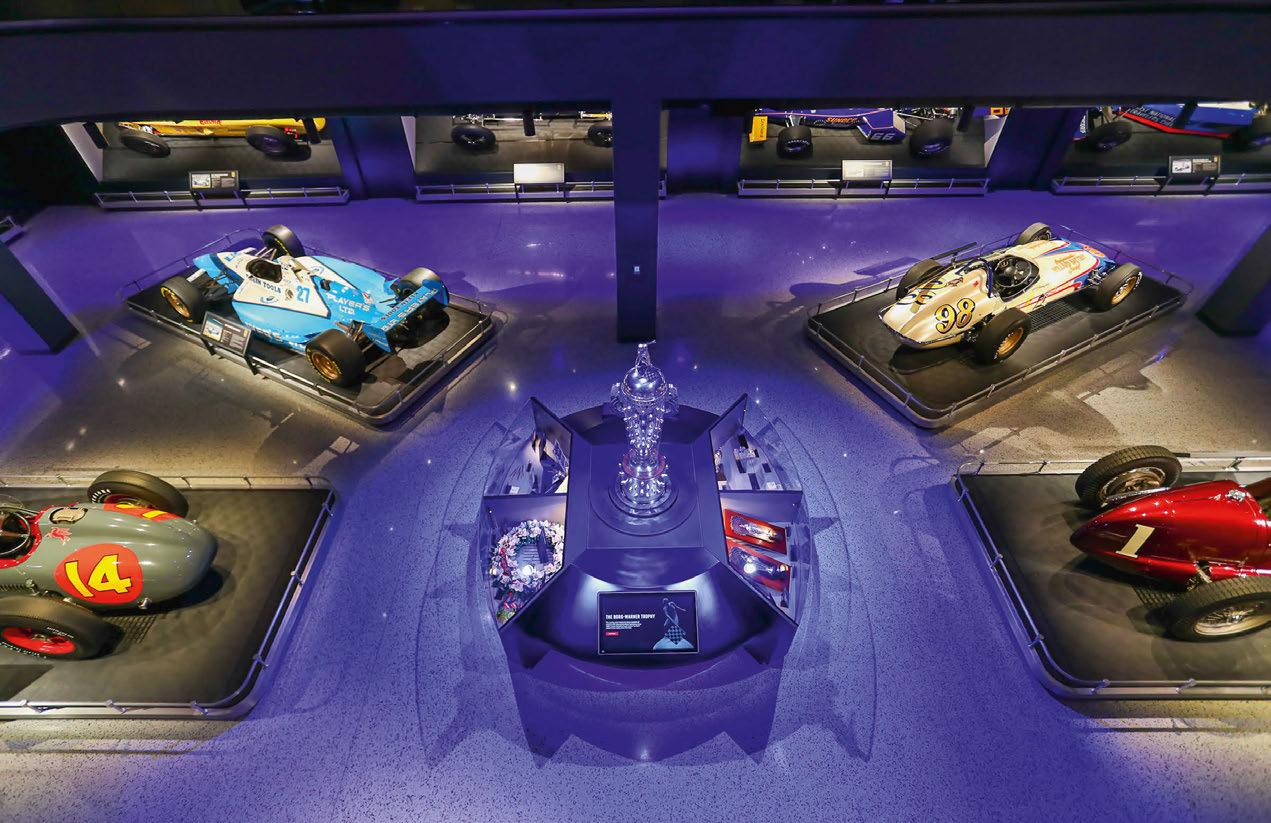

Clockwise, from right Penske Gallery, showcasing the team’s 20 Indy 500 wins; kids in the Starting Line Experience immersive video room; Winners Gallery, centred around Borg-Warner trophy.
that the museum should double in size without extending outwards or upwards, and that’s exactly what’s been done, adding 3700m2 (40,000sq ft) of extra space. The museum is now divided into seven permanent and three rotating galleries, with simulators, immersive exhibits and some of the most significant Indy cars and artefacts in existence.
It starts in Gasoline Alley, where visitors walk through time, at least in terms of Indianapolis progression. There are seven garage recreations, each representing a significant period of Indy history and packed with period tools and accessories – even old TVs on which to watch the associated race footage. Opposite each garage are related items from the time, as varied as the original 1909 Articles of Incorporation for the Indianapolis Motor Speedway Company and the bucket hat that Janet Guthrie wore in 1978 when she finished ninth in the Indianapolis 500.
So this sets the scene for the history of Indianapolis but then visitors are propelled into the middle of a current race start (see opening photo); or at least as close as possible to that, inside an immersive room with huge LED video walls and ceiling, and three race cars in the middle. A flypast roars overhead before the race starts, and then the sound system conveys a fair impression of how it would feel to witness a race start close up.
The video runs for seven minutes and then visitors can filter through into the main gallery, around which the bulk of the collection was previously centred. Now it’s been transformed into The John H Holliday Family Indianapolis 500 Winners Gallery, with significant cars from the 1911 Marmon Wasp to Dan Wheldon’s 2011 William Rast Dallara fanning out from the famous (and huge) Borg-Warner Trophy in the centre. More cars are mounted at angles within glass cases around the perimeter, including a 1934 Delage, the 1971 Johnny Lightning Special, Mark Donohue’s 1972 Sunoco McLaren M16B and so many more.
Up, next, to the new Mezzanine Gallery, which shows off more cars alongside glass cases of memorabilia, videos and interactive displays. What really brings it alive, though, is the view through the windows onto the track outside, which puts everything into context wonderfully. Looking out on that famed 2.5-mile oval is truly spinetingling.
From the Mezzanine, the view down into the main gallery adds a different and unusual perspective on the cars below. But the journey continues, back down the main staircase and then down again into what was simply ‘the basement’ but is now the Penske Gallery. Of course, it’s perfectly laid out, with the team’s 20 Indy wins marked by the winning drivers’ helmets and trophies immaculately displayed in glass cases. What will happen when the 21st win is clocked up? Oh my OCD!
After the busy main and Mezzanine galleries, the basement galleries are simpler, to allow for the displays to be changed at regular intervals. That’s the case for the Penske Gallery and the Bobby Rahal Family Gallery that follows, which will host rotating featured exhibitions, with the theme changing every three to nine months. It’s currently ‘NASCAR at the Speedway’, with eight Brickyard 400 winning cars showcased.
And that’s not it, because next up is the Chip Ganassi Gallery, currently honouring each of the four four-time winners of the Indy 500: AJ Foyt, Al Unser, Rick Mears and Helio Castroneves. In-between these galleries are other new features, including the Qualifying Zone, where visitors can try simulators, a strategy challenge and hands-on activities – or where the younger ones can just escape it all in the soft play area.
Talking to museum president Joe Hale and chairman of the board Chuck Jones over the months leading up to the reopening, it was clear that the educational side of the museum was much more than mere
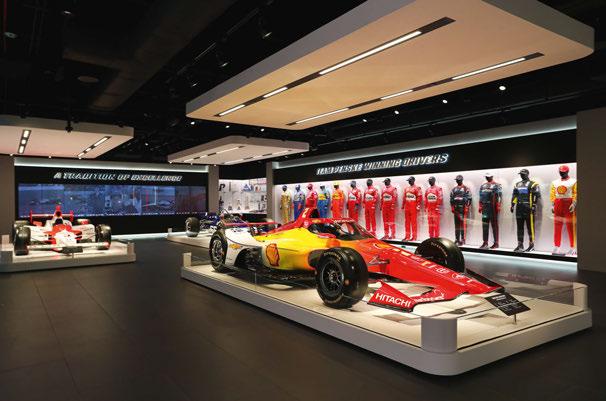

‘WHAT REALLY BRINGS IT ALIVE IS THE VIEW ONTO THE TRACK OUTSIDE, WHICH PUTS EVERYTHING INTO CONTEXT WONDERFULLY’
box-ticking; both are passionate about it and adamant that the previous ‘Don’t touch that!’ feel of the museum should be banished. The new Allen Whitehill Clowes Foundation Innovation Workshop, adjacent to the Qualifying Zone, provides classroom space for the new education department to offer hands-on STEAM (Science, Technology, Engineering, Arts and Mathematics) experiences for students. The idea is to encourage students to consider careers in motorsport and engineering, and help guide them to find jobs within those areas. With a new education director appointed at the museum, it feels serious and plausible.
The museum isn’t perfect yet: some of the detailing and display lighting are yet to be honed and the gift store feels a little generic. Overall, though, the revamped museum is exciting, inspirational and thoughtful in the way it’s laid out. A great example of that is the QR codes on the information boards, which direct visitors to extra videos and information.
And how has this huge transformation been achieved? The museum raised more than $100million by selling off 11 of its non-Indy cars, including the 1954 Mercedes-Benz W196R Streamliner and the 1964 Le Mans-winning Ferrari 250LM, but that money can’t be used for capital investment (building work and so on) due to American Alliance of Museums rules. Instead, the interest from the funds will be used each year to buy new and more varied Indy-related exhibits.
So, remarkably, the refurbishment has been paid for largely by donations and fundraising of $69million so far. The revamp came in under budget at $60.5m; the aim is to raise another $20m to add a restoration workshop, where visitors can watch historic Indy cars being maintained and rebuilt.
As museum chairman of the board Chuck Jones pointed out: ‘Fundraising for a not-for-profit is like a race without a finish-line. It never stops, because once we have the funding to build the museum, then we have to operate the museum. But for the construction of the museum, we’ve achieved our goals.’
VISIT imsmuseum.org.

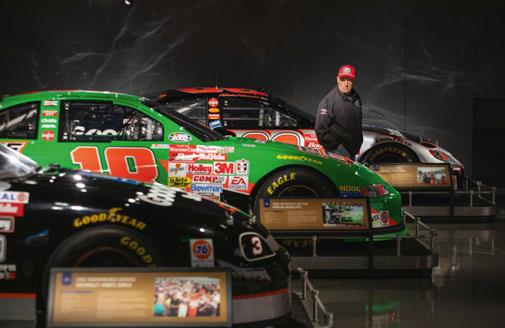
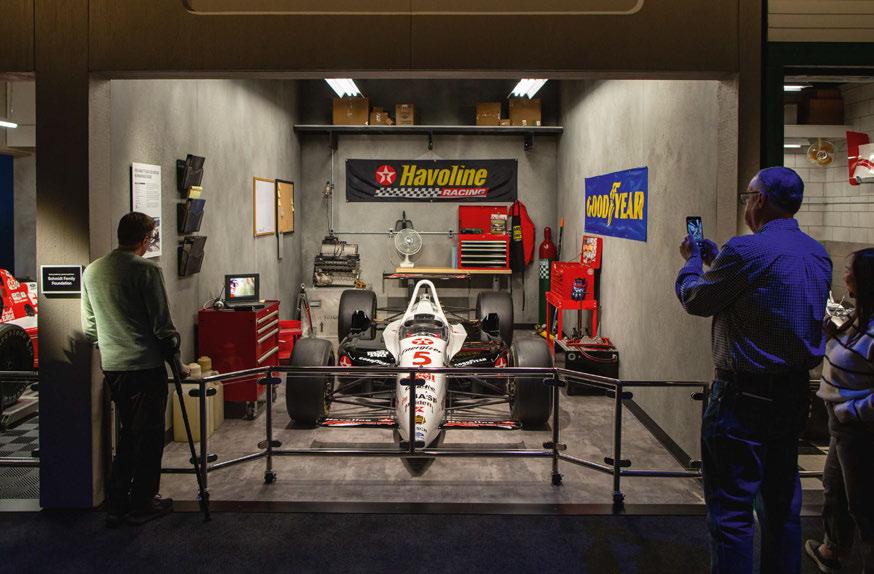



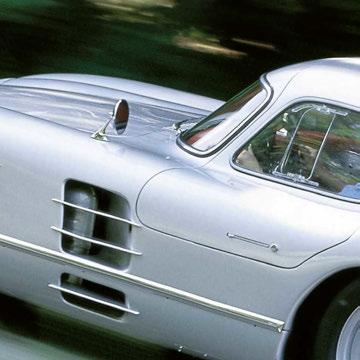



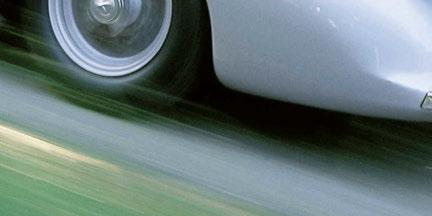



Lancia’s delicate-looking Fulvia coupé kicked off decades of rallying dominance for the marque. Richard Heseltine drives a rare works survivor
Photography Jonathan Fleetwood
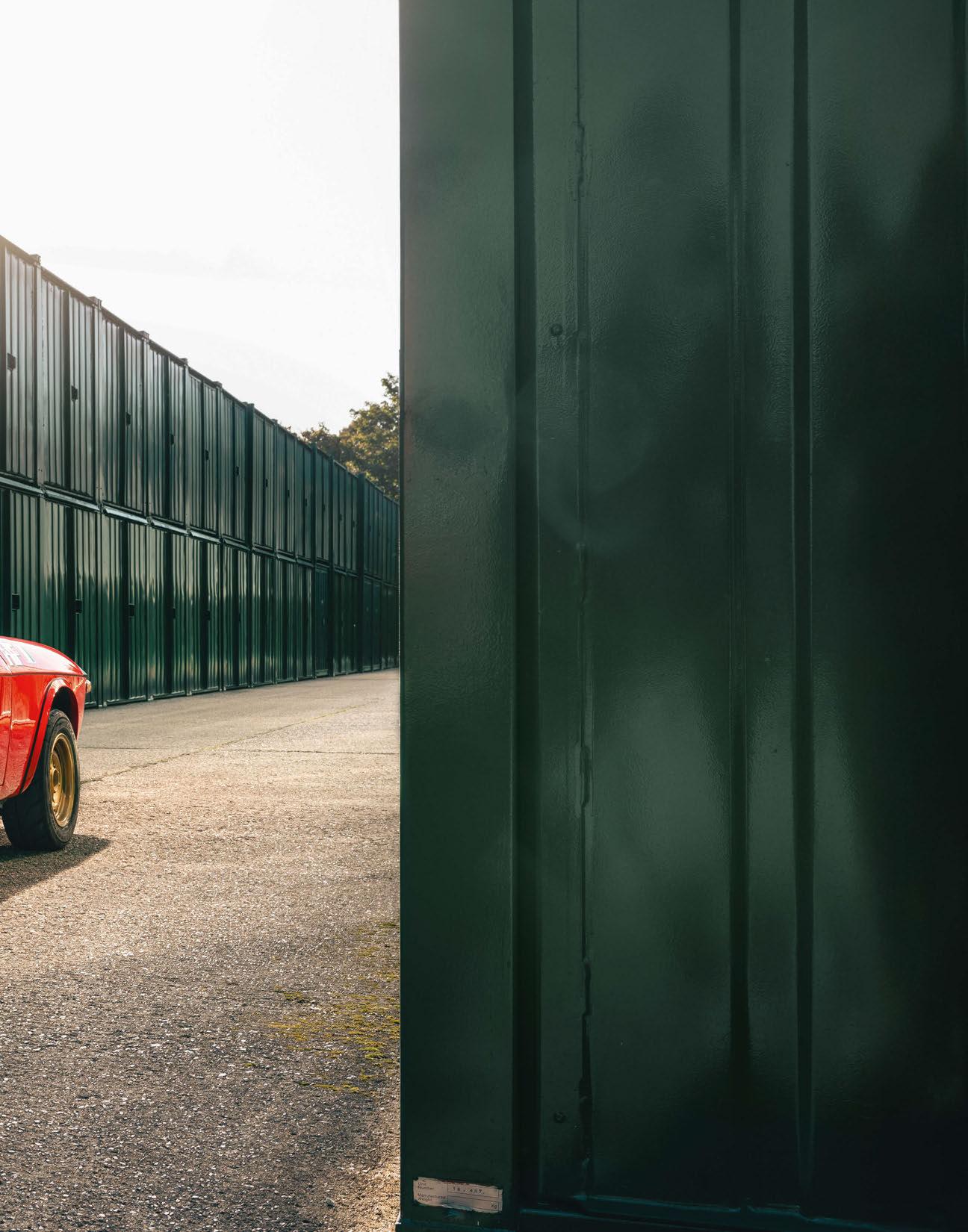
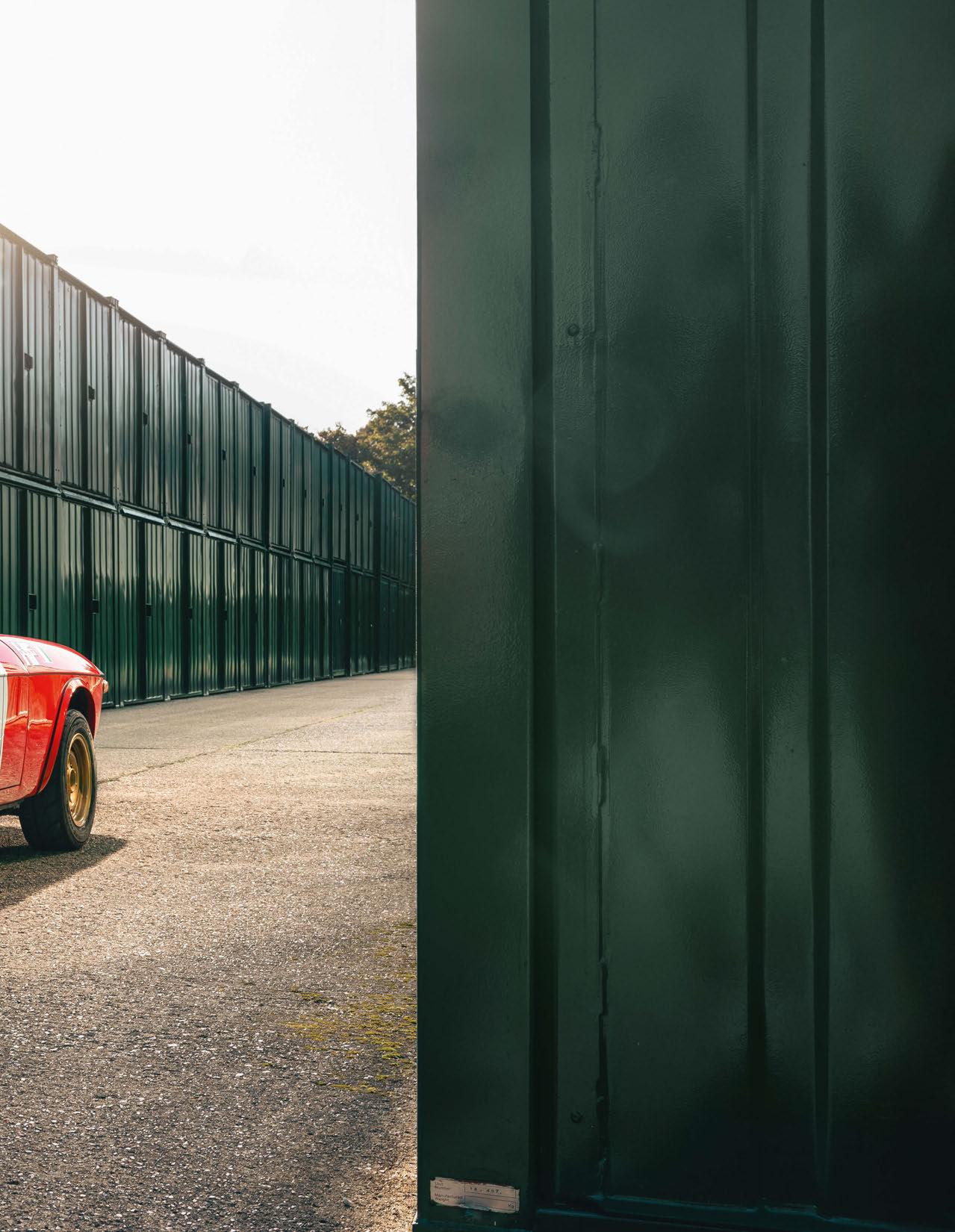
With the benefit of hindsight, this was a bad idea. After becoming separated from the photographer’s car, and with hopes fading of being reunited short of applying the handbrake and twirling the tiller, salvation appears. In something of a navigational quandary, and desperate to find somewhere to spin the car around, I find the entrance to a big country pile provides welcome relief. It is only while performing a 27-point turn that the wedding party further down the drive becomes apparent. The bride and groom are having their photographs taken and heads turn in unison. Sorry, nothing to see here! Oh, and good luck!
At the point of its fullest fury, this ex-works Lancia Fulvia has the quality of a sonic boom. It will rattle windows three or four miles away; maybe further depending on wind conditions. Even while cruising, conversations are conducted at high volume and with emphatic gestures. Gunnar Häggbom must have talked himself hoarse as he read pace notes to Harry Källström on the RAC Rally in November 1970, this being the car that won outright against expectations. It marked the denouement for chassis 1411 as a frontline weapon, if not quite the end of its career.
It is worth recalling that, while there had been prior rallying successes, not least Louis Chiron and Ciro Basadonna’s Monte Carlo Rally victory in 1954, Lancia didn’t establish itself as a powerhouse until the end of the following decade. Cesare Fiorio, son of the firm’s PR chief Sandro Fiorio, established the Hi-Fi Club in 1963, which subsequently acquired semi-works status and morphed into HF Squadra Corse. The Fulvia Coupé’s unveiling at the Turin motor show in November 1965 coincided with the Tour de Corse, and a 1216cc car was fielded for Leo Cella and Sergio Gamerana. It came home in eighth place.
Two years later the Fulvia won this event outright, along with the Spanish Rally. In November 1968, the svelte coupé received a displacement hike to 1584cc via the ‘Tipo 540’ version of the narrowangle twin-cam V4. According to the factory figures, competitionspec cars packing the ‘Variante 1016’ unit produced 158bhp at 7200rpm, the car pictured here being among their number. However, the Fulvia in this spec wasn’t homologated until the autumn of 1969, though this didn’t prevent cars being fielded on the Monte Carlo Rally at the start of the year.
New regulations allowed prototypes to compete in the Rallye Mediterraneo, which ran concurrently. Källström and Häggbom emerged victorious aboard their Fulvia Coupé 1.6 HF. The works team then descended on the Nürburgring for the Marathon de La Route, which was born of the old Liège-Rome-Liège Rally. This gruelling event comprised 84 hours of the historic venue, the circuit comprising the Nordschleife and the Sudschleife to form a 20-mile lap. Again entered as a prototype, the 1.6 HF of Källström, Sergio Barbasio and Tony Fall completed 322 tours of ‘The Green Hell’ to claim outright honours.
‘Our’ car made its competition debut on Rally Sweden in February 1970, Källström and Häggbom running second until they were forced to retire in the closing stages after the diff failed. The car’s next outing was the Targa Florio in May, Sandro Munari and Claudio Maglioli bagging a class win. It’s worth recalling that they finished ninth on the road, ahead of an Alfa Romeo Tipo 33/3, a couple of Ferrari 206S Spiders and a factory Porsche 908. A month later, Barbasio and Mario Manucci placed second on the Rally Alpi Orientalle behind the Fulvia of Amilcare Ballestrieri and the future Lancia team principal, Danielle Audetto.
According to Reparto Corse Lancia by Lancia’s former sporting director, Gianni Tonti, the car was damaged shortly thereafter, most likely during testing. He recorded in his notes that a new body arrived from the Chivasso factory on 02 July 1970 and it was subsequently modified to Group 4 spec. The re-shelled Fulvia then participated in the Gran Premio di Mugello, Raffaele ‘Lele’ Pinto winning his class, before




‘THEY FINISHED AHEAD OF AN ALFA ROMEO TIPO 33/3, A COUPLE OF FERRARI 206S SPIDERS AND A FACTORY PORSCHE 908’


Källström and Häggbom drove it to fourth place on the 1000 Minutes Rally in October of that year.
Then came the big one. The Swedish duo had won the 1969 RAC Rally for Lancia, albeit only after Porsche’s dominant run ended abruptly. The chances of them repeating the feat appeared slim halfway through the 1970 event. Lancia endured a torrid time early on, with Sandro Munari and Tony Nash cartwheeling into retirement. At the halfway point, and amid plummeting temperatures, more than half the field had been eliminated and the Saab of Stig Blomqvist and Bo Reinicke held sway. With 2½ days still left to run, the remaining Fulvias headed to Wales with seemingly little chance of claiming the spoils.
It was at this juncture that the service van broke down, as did the team manager’s car. They were stuck in Blackpool. To make matters worse, the engine in ‘our’ car ran its bearings following a catastrophic oil leak. Then the gearbox in the third works entry of Simo Lampinen and John Davenport failed (their car had previously blown a head gasket). Somehow, amid the chaos, some mechanics managed to make it to the service halt at Machynlleth, where they swapped the bearings between engines, which ensured the demise of the Lampinen/Davenport car on the following stage. All hopes of glory rested solely on Källström and Häggbom.
Then matters took a turn for the legendary. The single remaining Fulvia was an hour behind and it was 100 miles to the next time control. Källström, known affectionately as ‘Sputnik’ on account of how much time he spent airborne, drove a blinder, the previous year’s European Rally Champion defying the odds as well as gravity to arrive with barely 30 seconds to spare. And then, having seemingly achieved the impossible, he was obliged to take avoiding action after a lorry reversed into his path. In doing so, he hit a bank and damaged the car. Häggbom then extricated himself before sprinting to the control to check in.
If this wasn’t remarkable enough, the car was then manhandled into the service area, where two mechanics replaced the steering box, driveshafts, and more besides. They did so in the pouring rain. To cut a long story short by missing out more tales of derring-do, the heroic Scandinavians went the distance. They completed 82 stages, covering 2300 miles across five days including transits to win by 2½ minutes. It was a bravura performance, and ‘1411’ was retired from works participation thereafter. It subsequently earned its keep in hillclimbing.
As for the Fulvia in all its various flavours, it continued to shine into 1971 when Lancia claimed six rounds of the European Rally Championship. A year later, Munari and Mario Manucci won the 1972 Monte Carlo Rally, with Lancia clinching the International Championship for Manufacturers title. The little coupé was still in the hunt as late as 1974, by which time Lancia dovetailed a mixed programme with the Fulvia and the Stratos. One of the highpoints was third place on the Safari Rally for Munari and Manucci aboard their 1.6 HF, which proved the naysayers wrong. The Fulvia was tough. It had staying power in this, the most arduous event on the calendar.
Which brings us to today and a backdrop of leafy Hampshire. This old warhorse wears its years well, having been one of the stars of a large collection of Lancias in Italy since 1985. The base HF was known colloquially as Fanalone in period (literal translation is ‘big headlight’), and here there are two purposeful-looking spotlamps, no bumpers and wheelarch extensions to cover the 13in Campagnolo wheels. If anything, it appears under-equipped in this later regard, but then it hasn’t been touched since an appearance at the 2024 Vernasca Silver Flag hillclimb. The period-correct RAC Rally-era items haven’t been substituted.
Inside it is stark, as is to be expected, though not as cramped as you might imagine, despite the intrusive roll-cage. True to form, the sizeable Veglia rev-counter dominates the small cluster of gauges (there is no redline as such, only an arrow pointing to where one should be). The speedo, meanwhile, is positioned down by the co-driver’s right shin, and a Halda Tripmaster is sited where you might expect to find a glovebox lid.
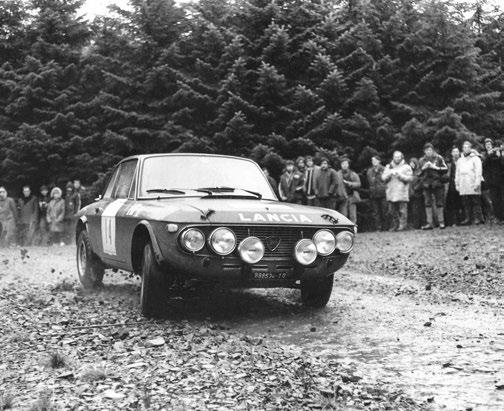
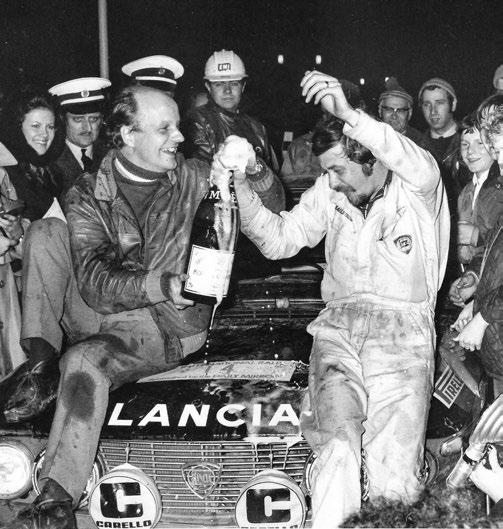
This page and opposite En route to winning the RAC Rally in 1969; Häggbom and Källström (on right) celebrating at the finish; delicate styling belies the Fulvia’s toughness; bare interior is tightly focused.
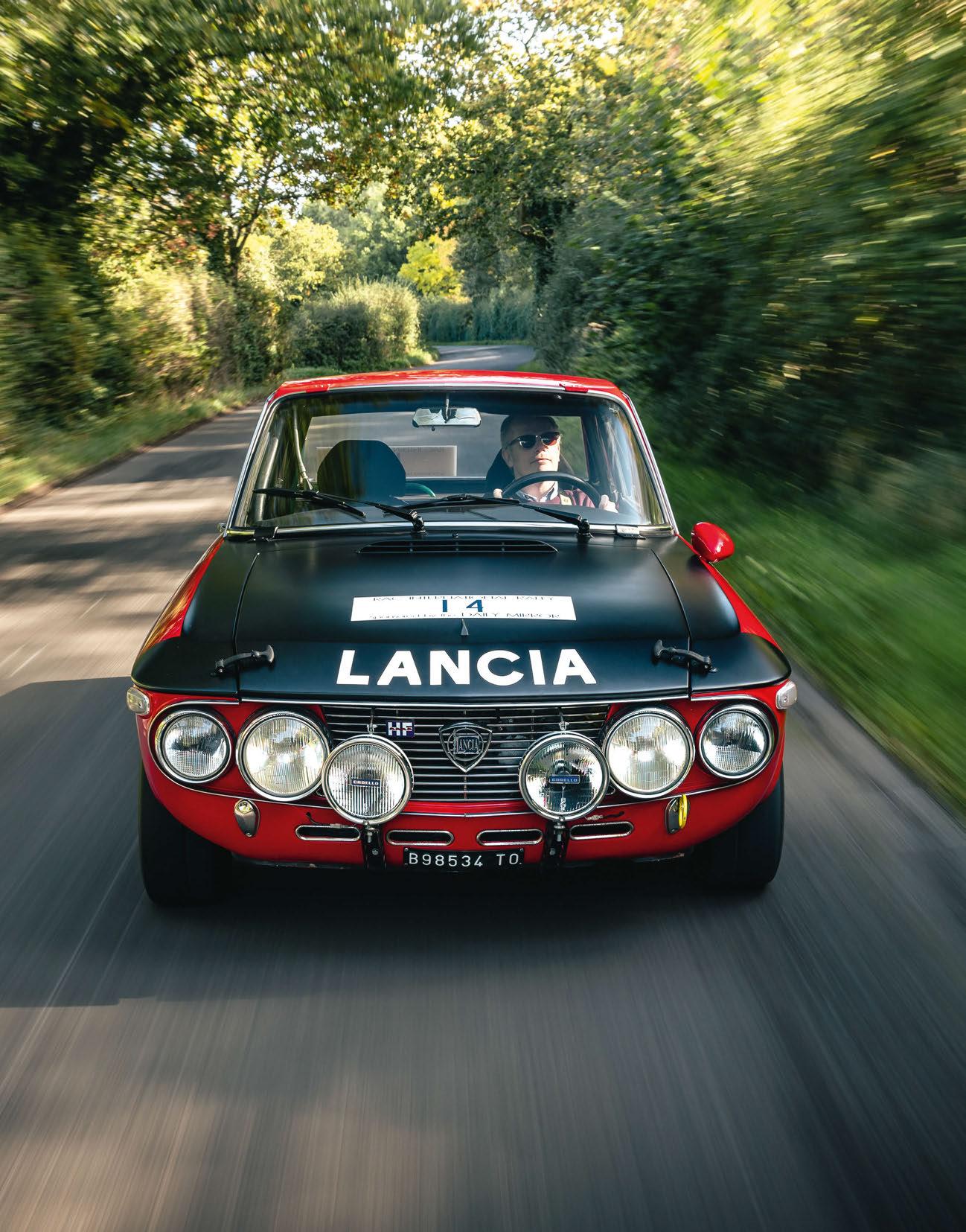
1969 Works Lancia Fulvia
Engine 1584cc DOHC V4, twin 48mm Dell’Orto carbuettors
Power 158bhp @ 7200rpm Torque 144lb ft @ 4500rpm
Transmission Five-speed close-ratio manual, rear-wheel drive
Steering Worm and sector Suspension Front: unequal-length double wishbones, coil springs, telescopic dampers. Rear: live axle, semi-elliptic leaf springs, telescopic dampers, Panhard rod
Brakes Discs Weight 900kg Top speed 125mph


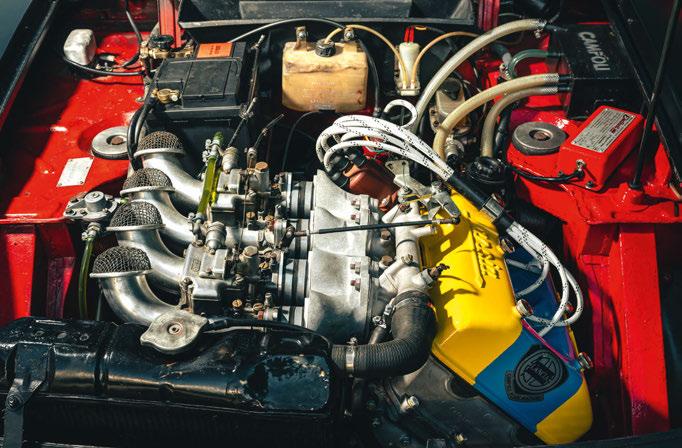

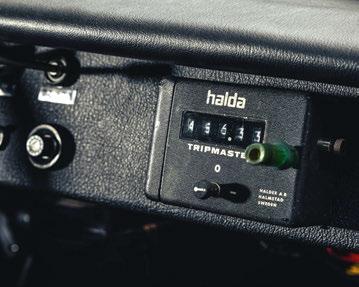
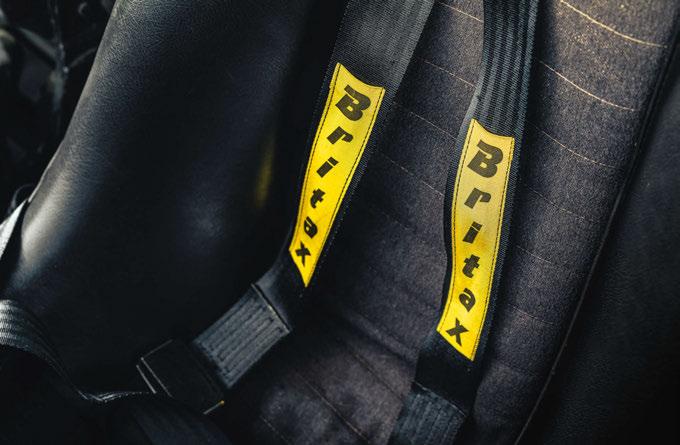
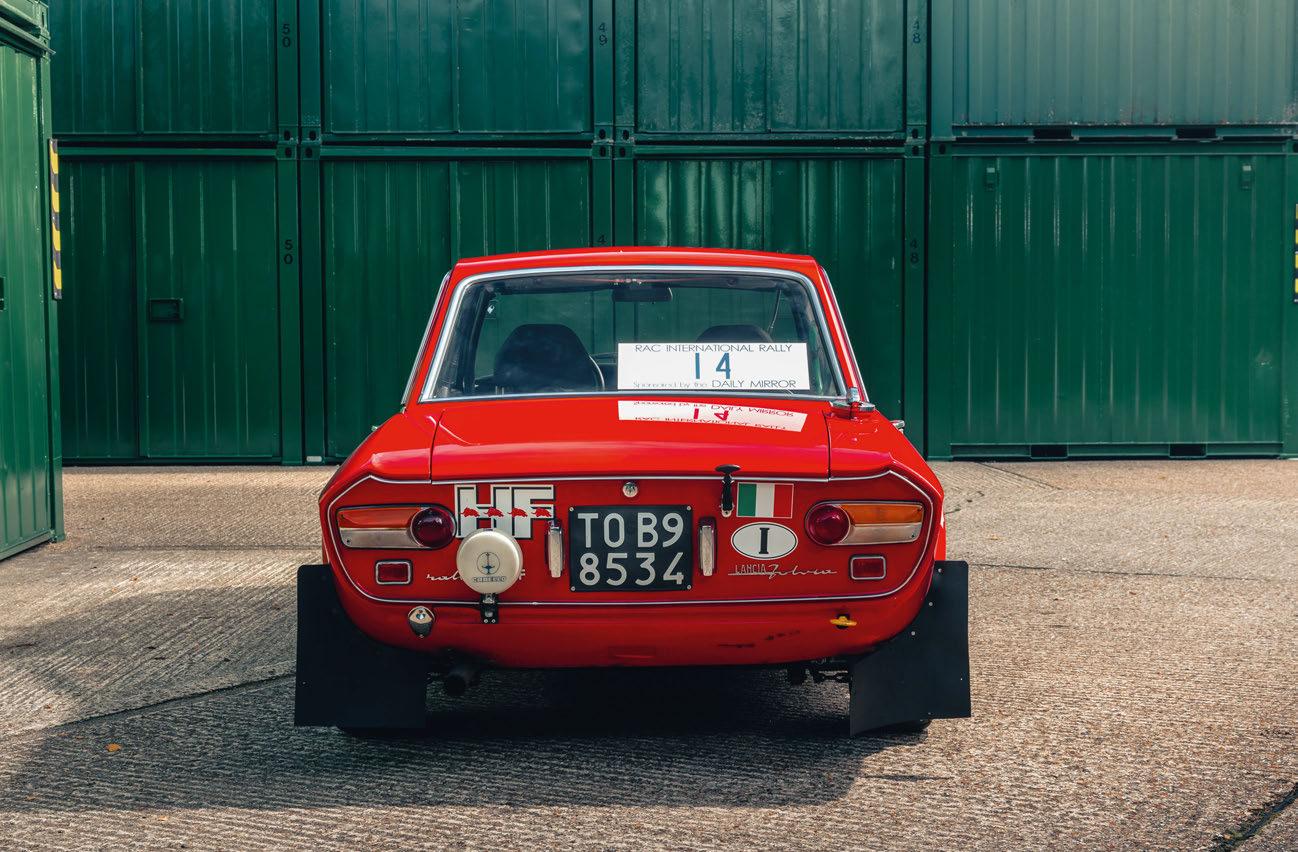
It’s all very no-nonsense in here, right down to the harnesses and the double-width middle pedal (in place to aid left-foot braking).
Fire up and the 1.6-litre V4 sounds implausibly potent. And thus begins a sledgehammer assault on the senses, the enormous 48mm Dell’Orto carbs popping and gobbling before the Fulvia settles down to something vaguely approximate to tickover. Passers-by stare in an appraising manner, and you almost feel like apologising. Almost. It certainly raises the adrenaline quotient and we haven’t even left the garage forecourt yet. Clutch in, move the gearlever across to the left and down to find the dog-leg first, pile on some revs and the Fulvia bolts off the line and into traffic.
The Lancia isn’t well-suited to a rush-hour car conga and it doesn’t shrink from letting you know that it isn’t happy. However, once free of hectoring commuters and into open countryside it’s away. And how. It gets to 7000rpm in an instant (instructions were ‘not to exceed’ that) and sets your soul spinning. The gearing feels short, as befits a hillclimber, and acceleration is immediate but then it weighs only 900kg, or thereabouts. What really impresses is how there are no flat-spots, the V4 here having been rebuilt by Ezio Campoli of Scuderia Tricolore. The Roman is something of a tuning wizard in Lancia and Abarth circles. Hold it in first gear and it will whizz up to 45mph, second to 60mph and perhaps a bit more, by which time you won’t be able to hear. The five-speed transmission offers a sweet change, even though it’s all too easy to go from first to fourth to begin with. There’s barely any movement across the gate; it epitomises the rifle bolt cliché, and double de-clutching on the way up and down the ’box ushers in more
commotion. Cars & Car Conversions tested a rally Fulvia in period, and commented: ‘The gearchange demands strong-arm karate tactics to get results, but it rewards all the effort amply.’
It does, too, although the steering with its five turns lock-to-lock is meatier than you might imagine. At low-ish speeds, the Fulvia tramlines appreciably, but you simply drive through it. With familiarity comes confidence. The Lancia feels incredibly agile, the steering meting out accurate feedback for all its relative heft. What is telling is that this doesn’t feel like a front-wheel-drive car, let alone one that is more than 50 years old. There is no plough-on understeer; if anything, the back is likely to go first. That said, the car’s limits are a lot higher than can be properly explored in the Stockbroker Belt without your fun leading to a prison sentence.
This is such a sweet car, and non-threatening once you have become accustomed to its foibles. It thrives on being spanked. It also serves as a kinetic monument in the history of rallying. This car matters not so much for what it did – which was a lot – but more for what it represents. The Fulvia served as the jumping-off point for a period of dominance for Lancia that lasted for decades. The marque still tops the list for most constructors’ titles despite it having departed top-flight motorsport in 1993. Without the Fulvia, there would have been no Stratos, no 037, no Delta S4 and no Delta Integrale. It may be small but the Fulvia has always cast a long shadow.
THANKS TO Nick Benwell and David Goodwin, www.phoenixgreengarage.com.


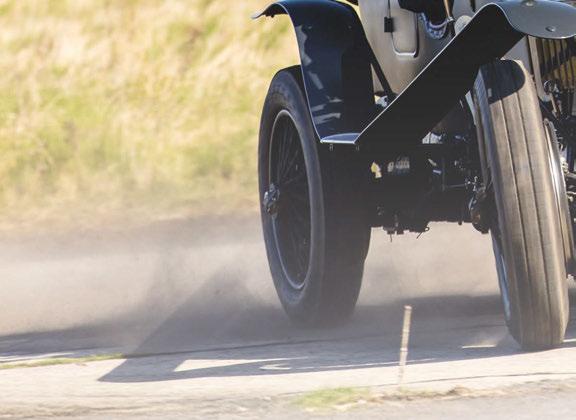


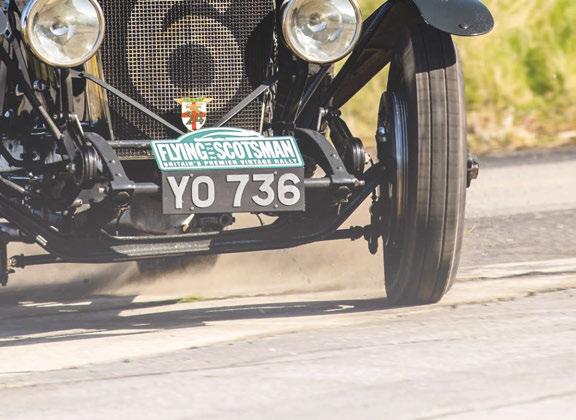


From BMW’s 3-Series to landmark aero Fords and the brutal Dodge Viper, few automotive bosses have been more influential than this Swiss-born American veteran
Words Nathan Chadwick
Photography The Bob Lutz archive/ Stellantis/BMW/GM/Ford
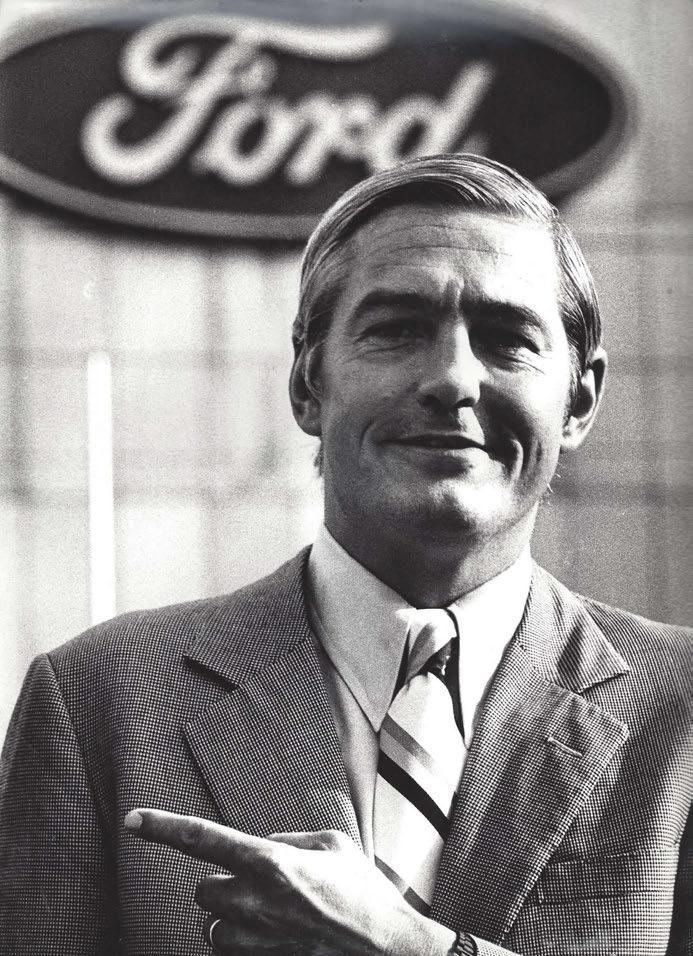
‘IF YOU HAVE a strong personal belief in the superiority of the product, it’s easy to convey that to the customer,’ says Bob Lutz, a man who’s played a leading role in the likes of GM, BMW, Ford and Chrysler. That first lesson came from his time selling Hoover vacuum cleaners in California.
It’s also where he learned a second very valuable lesson: office politics. ‘I was selling ten Hoovers to every one Sunbeam the shop’s owner’s son was selling; I was making him look bad,’ Bob chuckles. ‘I learned that, if you perform too well in any job, it’s going to engender hostility from those who perform less well.’
Born in Zürich, Switzerland, in 1932, Lutz moved with his family to Scarsdale, New York, in 1939 and became a US citizen four years later. He returned to Switzerland to study in Lausanne, later achieving qualifications in production management and marketing while serving in the US Marine Corps. He saw military action in Korea.
His first automotive job was with GM’s overseas operations in 1963. ‘They were impressed I spoke and wrote German and French as fluently as I did English, so after 18 months in New York, they shipped me out to Germany to Opel,’ Lutz explains.
There he was caught between two automotive cultures, as cars were still considered a luxury in Europe. ‘For many families it was the first time they’d owned a car. The US market was very mature. New models had an almost mystical effect on sales every year. European customers and the media were resistant to annual changes, so I was not only a translator of words, but also of cultural realities. The Americans grudgingly accepted it.’
His next role was as executive vice president of sales and marketing at BMW. ‘I went from the world’s largest automobile company to one a tenth of the size,’ Bob recalls. ‘Unlike at GM, executives were expected to do their own homework and make their own decisions. I found that refreshing.’
Clockwise, from opposite Lutz’s mission at Ford was to scale back the British arm’s European influence in favour of Germany; a keen rider and driver, seen here during the BMW years; he was instrumental in how BMW’s styling developed in the 1970s via his GM contacts; Sierra’s svelte shape was Lutz’s solution to its outdated underpinnings.
Job one was to arrest outdated practices, notably in sales outside Germany. ‘They had to give the importers 12-15%, and the retailers got another 20% – all BMW’s profits were generated within Germany,’ Lutz explains. ‘It was insane not to have BMW’s own sales companies in other countries, so I set about changing that.’
Lutz got into other areas, too, notably when the CEO, Eberhard von Kuenheim, engaged a firm to create a more modern BMW emblem. ‘I told him the BMW badge was among the most recognised and prestigious in the world.’
The badge stayed, and then came a key role in developing what would become the 3-Series – plus a radical change in how BMWs would be designed. ‘My team told me to take a look at the successor to the 1602’s styling model. They said it was an aesthetic disaster. I told the head of design – who was not a designer, but the “head body engineer” – to start on a new model. He said no, this model took eight months, it’s finished. I said “What the f*ck? You can whip out a clay model in three weeks!” He said they didn’t use clay…’
Lutz convinced von Kuenheim to set up a design studio and found clay in short supply, so he turned to his old friend David Holls,
head of design at Opel. ‘He sent me some, then asked if there was anybody at BMW who knew how to make the wooden armatures that go under the clay. I said no, so he sent some of his guys down. Then he asked if I had any clay sculptors… So he sent some sculptors. The entire BMW design group was set up by GM.’
BMW Motorsport also got the Lutz touch. ‘German enthusiasts paid a lot of attention to Touring Car racing, and Ford was dominating with the Capri, stealing BMW’s thunder. It turned out that Jochen Neerpasch wanted to leave Ford, so we gave him wide-ranging autonomy and a very generous budget – he and I worked well together.’
And then Lutz went to Ford himself, as CEO of Ford of Germany. ‘I took a pay cut and a hit on the quality of my company car, but I was glad to be back into an American corporation.’
Bill Bourke was chief executive of Ford of Europe and hired Lutz to use his influence to get Ford of Germany a stronger seat at the Ford of Europe table. ‘He granted Ford of Germany a lot more autonomy. Responsibility for exterior design was 90% transferred to Germany,’ Bob explains.
In a reflection of his time at BMW, there came a battle over brand iconography. ‘Every

‘I took a pay cut and a hit on my company car, but I was glad to be back into a US corporation’
Ford car had different badging,’ he recalls. ‘I told Bill Bourke, and Ford USA, that next to Coca-Cola we had the world’s most recognised brand symbol. Yet our cars had no brand symbol – I desperately wanted it back. That was a six-month fight, but I won.’
Another battle came in the form of the radical-looking Sierra of the early 1980s. ‘We didn’t have the money to do an all-new frontwheel-drive architecture, so I argued that the way to counter Renault and Opel’s frontwheel-drive architectures was to do an

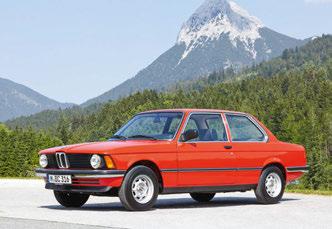


aerodynamically efficient rear-wheel-drive car, keeping current engines and transmissions. We’d use independent rear suspension, for a prestige chassis with a conventional layout.’
As Lutz anticipated, the Sierra got off to a slow start in the UK – in customer clinics, British customers voted for the existing model. ‘In Germany, France and Italy, they voted for the new one – we knew it was going to be a tough sell in the UK, but a smash hit in Europe. That’s exactly how it turned out, but in the fullness of time it was successful in the UK.’
Ford’s market share in Germany more than doubled from 7% to 15% within only a few years, yet Lutz claims product planners at Ford of Great Britain didn’t like him. ‘Diehard Cortina fanatics were convinced the Sierra would be a monstrous flop,’ he says. ‘I had an exact repeat in the US with the Taurus and Sable. Red Poling, head of Ford North America and who would later become CEO, told me that when Ford went bankrupt after their launch it would be my fault.’
Lutz had returned to Ford USA in 1985, and the Taurus and Sable turned out to be hugely popular. ‘I knew they would be – if the research is judged on a five-point scale and it comes back with 3.5, you’ve got a 75% approval rating, which means it’s going to be everybody’s second choice,’ Lutz says. ‘The Taurus/Sable was 50%, love or hate. When your new car comes out, you’re not living off an average, you’re living off people who absolutely have to have it.’

His relationship with Red Poling would further deteriorate. ‘For all his financial acumen, he didn’t understand the business,’ Lutz muses. ‘Bean-counters are as necessary as brakes on a car. But if you’ve got nothing but brakes and no engine or proper steering, you’re not going to go anywhere. He said I was a misfit because Ford was very procedural, whereas I trusted my gut instinct. I could tell I wasn’t going to be president or chairman.’
Instead, Lutz was then recruited as executive vice-president of Chrysler by Lee Iacocca. ‘We were opposites in the sense that I was the marketing professional who mainly focused on product, and he was an engineer that mainly focused on marketing,’ he says, and yet: ‘We were very similar: intuitive, outspoken, strongwilled. When we went to Italy to visit Fiat, he was hailed as the Italian returning from the US. Problem was, he didn’t speak any Italian –and I did.’
At a time when Chrysler was seen as little more than a producer of economy cars, Lutz started developing a long-harboured pet project: the Dodge Viper. ‘The common belief was that we’d lost so much engineering talent and cut back on product development. With one stroke, the Viper eliminated that,’ he explains. ‘I firmly believe in halo cars, because they don’t cost much if you go about it intelligently. The benefit they give you in changing the media’s attitude towards a company is huge. For the $70m the Viper cost, all that would have given you otherwise was one shortlived advertising campaign.’
It’s a time Lutz looks back on with fondness, and one day with the late François Castaing, executive vice president of engineering at Chrysler, amuses him in particular. ‘We were having terrible problems with the side-exit exhausts on the Viper, and I kept telling him people were going to burn their legs on the rocker panels,’ Lutz recalls. ‘He told me people would just have to be careful.
‘We did some hard laps on track and then returned to the staging area. While he was standing next to the car, his polyester trousers burst into flame. He struggled out of his trousers, and stood there in his underpants. He said, “OK, I see your point…”.’
Though Lutz was in the running for the top job, Iacocca eventually gave Bob Eaton the nod to replace him at Chrysler’s helm, something Iacocca would later publicly regret. ‘Iacocca
Left, from top Lutz wearing two of the emblems he fought hard to keep; Solstice was a passion project that kept Pontiac alive – until the credit crunch; Lutz’s greatest achievement is the Dodge Viper, dreamed up while driving his own Shelby Cobra.
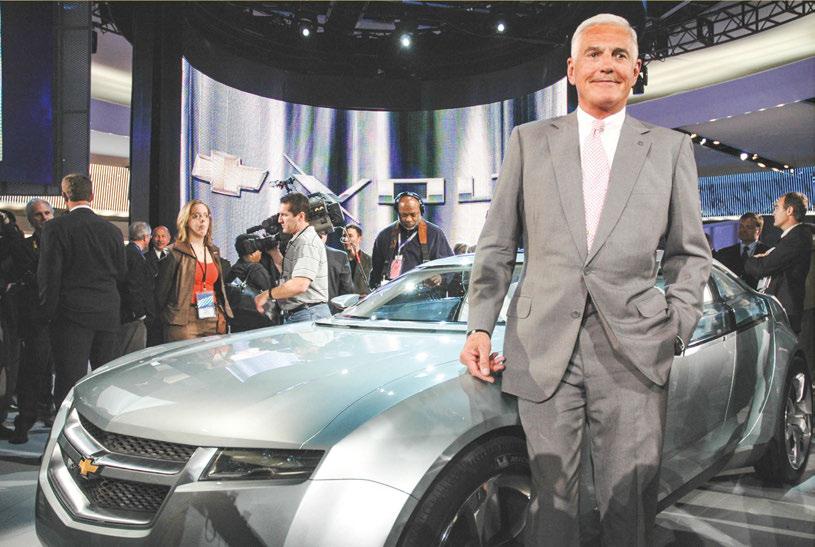
and I had violent disagreements – my big mistake was that he was easier to reason with one-to-one, and I didn’t use that,’ Lutz muses. ‘I challenged him in open meetings; he didn’t like having his authority questioned in front of his subordinates. Maybe if I had been in Iacocca’s position and it had come to succession time, I might have punished the upstart, too.’
Lutz was permitted to stay at Chrysler only until he was 66, and, after three years with Exide, GM’s Rick Wagoner approached him to act as a consultant on product development. But that wasn’t enough: ‘I needed to have a bulletproof title.’
And so he sent a hand-written letter explaining his plan to fix GM’s product programme. ‘First, I’d use my credibility with the automotive press to make the cars I had no influence on seem better than they are. Phase two, I’d see what can be changed to make programmes in gestation better. Phase three would be programmes that I’d initiate, profoundly different from what GM had been doing for the past 20 years,’ he recalls. ‘I was hired as vice-chairman at 70.’
Lutz played a key role in bringing the Holden Monaro – ‘Other than the Corvette, it was GM’s only high-performance rear-wheel-drive car’ – to America as the Pontiac GTO. ‘However, the most important thing it did was make global product development possible. GM was not a global automotive company, it was a conglomerate that owned several fully
independent companies around the world and wasn’t drawing any benefit.’
Lutz had found that many millions of dollars were being spent on developing individual models in the same market segment in separate regions. ‘The Monaro taught the US group that guys in other parts of the world knew how to make good cars, and it led to uniform standards. We went from 92 different seat frames around the world to two.’
He then turned his marketing nous to fitting each GM brand into a psychological niche. ‘No brand stood for anything. Cadillac had almost no brand value and Chevrolet, Pontiac, Buick and Saturn were variations of a GM product mishmash,’ he says.
Another halo car was the plan, in this case the Pontiac Solstice. ‘Bean-counters will never understand – to them, every programme has to make money. To them $3bn of advertising for just a single year in North America is justified, but $210m for a car that will change a brand’s perception is not.’
Lutz got the Solstice approved; it was a twoseat, rear-drive coupé and roadster, launched in 2005 and marketed in Europe as the Opel Speedster and elsewhere with Saturn and Daewoo branding, but the joy was shortlived. Pontiac would not survive the aftermath of the 2008 credit crunch, a time Lutz describes as one of the most difficult of his career.
The problems facing the US car industry resonated politically, resulting in a ‘Presidential
‘The Monaro taught the US group that guys in other parts of the world knew how to make good cars’
Left
Chevrolet launched the production version of the electric Volt as part of its centenary celebrations in 2008 – Lutz proclaimed it to be his favourite project.
Task Force’ that delivered a ‘framework for General Motors to achieve viability’. As Lutz recalls: ‘The Obama team knew nothing about cars, but the more we invited them out to Detroit, and to the design studio, and showed them the stuff that was about to happen, the more supportive they became.’
Still Lutz had high-tech future projects in mind, not least the lithium-ion battery-electric Chevrolet Volt programme. ‘It was significant from an image standpoint, but it was never going to be worth what we put into it from a profitability standpoint. We thought the Obama team were going to cut it, but they were smart enough to see the value in it.’
While the Sierra, Escort Mk3 and Viper are among Lutz’s favourite projects, and he dearly loves the visceral quality of his personal 2010 Chevrolet Corvette ZR1, it’s the Volt he’s most proud of. ‘Every other car was a better version of what somebody had done before, but the Volt was new – the technology, the software, the motors, the battery, the integration; even the tyres were new,’ he says. ‘It was a remarkable automotive engineering event.’
Given his remarkable career, what advice would ‘Maximum Bob’ offer to those starting out in the industry? ‘If you want to be successful, you have to have a passion for cars and a burning desire to make a contribution to building better automobiles. You gotta have a love of the product.’
Some lessons are fundamental.

Heaven is a winding Greek road and a collection of RS Porsches, as Robert Coucher finds out
Photography Amy Shore
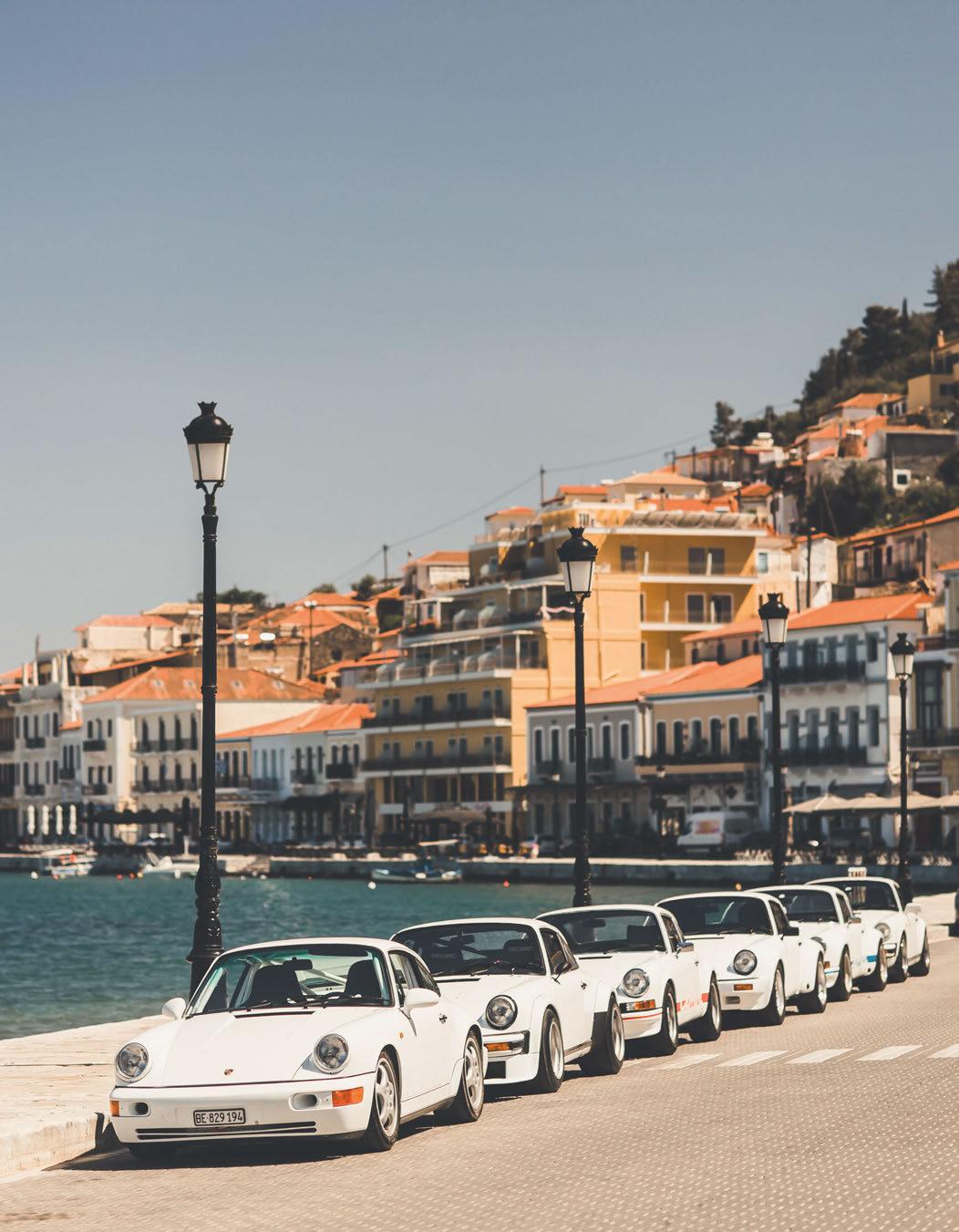
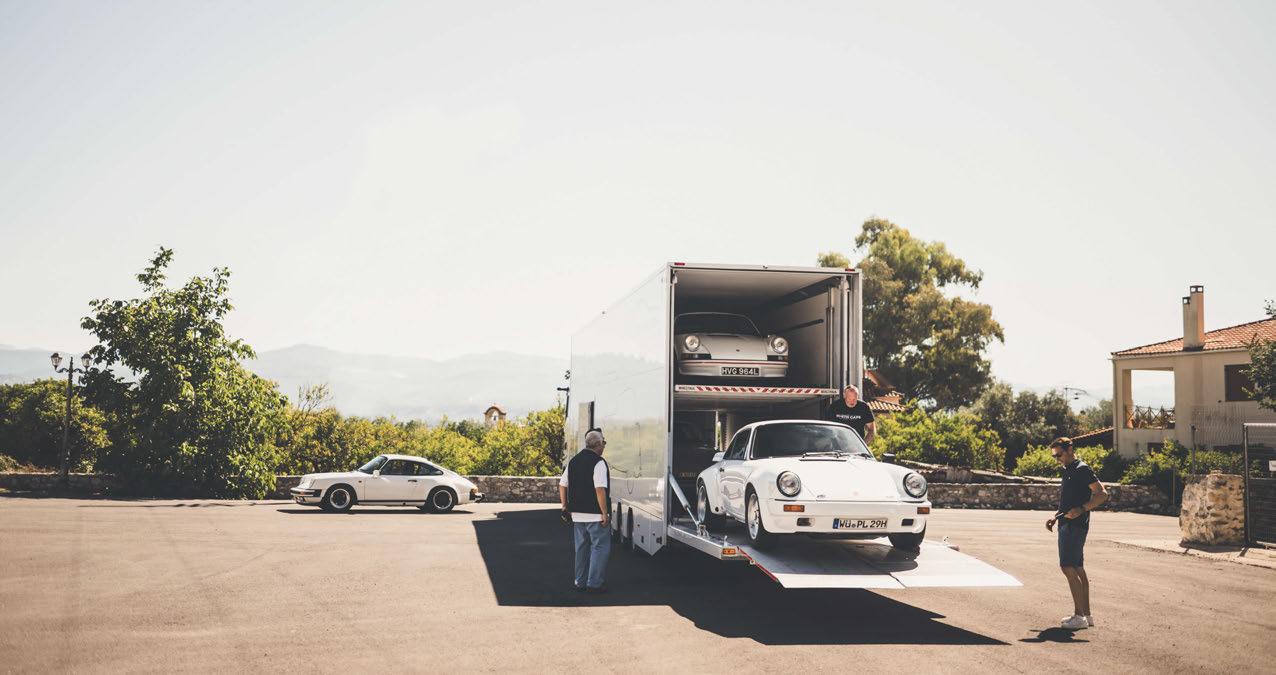
Peter Livanos – racing driver, rally driver and navigator, car manufacturer (he was the owner of Aston Martin Lagonda in the early ’80s), team principal (Aston Martin racing), enthusiast and Greek shipping magnate –throws a birthday party in some style. ‘Be at Athens airport and I’ll take it from there.’ Not the sort of invitation you turn down.
From there, we proceed in a black Mercedes minivan, driven gently in air-conditioned comfort. That’s soon to change to a very much hotter, far more intense and physical exercise in raw power overcoming mechanical grip amid strenuous effort to control lateral g-force.
Our host has secured the beautiful Euphoria Retreat in the green hills of Mystras, in the Peloponnese, as the rally base for our four days of Greek driving action. Meeting for sundowners on the veranda, we are issued with bespoke Tulip-style road books and maps suggesting five alternative routes, specially charted by rally supremo and clerk of the course Kim Bannister of regularity fame. Then we descend to the garage to take a look at our weapons: the full line-up of the best air-cooled Porsche 911s in captivity.
They are immaculate, all in white and each a special example. Our impeccable host introduces his cousin Philip Radziwill, who has flown the ultra-rare 2.8 RSR over from Bridgehampton, USA, and twins Philippe and Antoine Cornet, who’ve brought the fierce-looking 3.0-litre SC Group 4, with its massive tyres and spoilers. Five other RSs are from Peter’s own collection, although he insists he’s not a collector but an enthusiast. Indeed, when his cars are not winning awards at Pebble Beach, he’s driving hard and fast on the Peking to Paris, the Rallye Monte-Carlo Historique and the Flying Scotsman, often with Franco Lupi, the multilingual mechanic and rally driver who looks after them.
Those other cars include an original 2.7 Lightweight (one of the first batch), a rare SC RS, a standard SC, here as a sweeper car but otherwise used as a daily driver around
Athens, a 964 RS NGT and 993 RS Club Sport. Over a twilight supper it becomes apparent why we are here.
A fellow guest is Roland Kussmaul, who joined Porsche in 1969 as an engineer, went on to become a test driver in the car division, then joined the racing department and took part in the 1979 East African Safari rally as a driver. In 1981 he built a 924 Carrera GTS for Walter Röhrl, who said: ‘Roland’s the best mechanic, engineer and driver I’ve known.’ Which is some praise. In the 1980s, Kussmaul managed Porsche’s Paris-Dakar Rally entries and, in 1986, drove a 959 support car laden with spare wheels, parts, jerry cans of petrol and so on, taking the lead before turning back to rescue Jackie Ickx. Still, he finished sixth in the service vehicle. Legendary stuff. He then developed and honed the 911 SC RS, 964 RS and RSR, 993 GT2, 996 GT3 RS and the mid-engined V10 Carrera GT supercar.
Also with us is Armin Knüpfing, who worked with Kussmaul at Porsche’s Motorsport department and ran his own racing team in the Porsche Carrera Super Cup in the 1990s, before setting up Knüpfing Motorsport.
When Peter decided he needed a rare 911 SC RS, he turned to Roland and Armin, the two who developed the car originally. Only 20 were built in 1984 to be homologated for the FIA Group B series. Stripped, lightened (to 980kg), strengthened and producing 290bhp from air-cooled flatsixes, six Rothmans-sponsored RSs proved to be rocketships in the European Championships, winning that year’s Ypres 24 Hours and Madeira Rally, the Middle Eastern Championships in 1984 and ’85, and finishing fourth on the ’86 Acropolis in Greece. So, Roland oversaw the detailed development of this SC RS and Armin built it. With the car just completed and as a celebration of a recent significant birthday for Roland, Peter and Franco arranged this fourday driving trip, along some of the best roads in the world.
Next morning over breakfast, Peter suggests: ‘Robert, you start by driving the 2.7 RS, I’ll do the maps. This is the 911 that began it all, so use it as the benchmark.’ This rare,

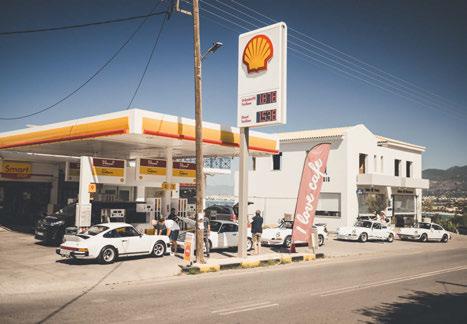

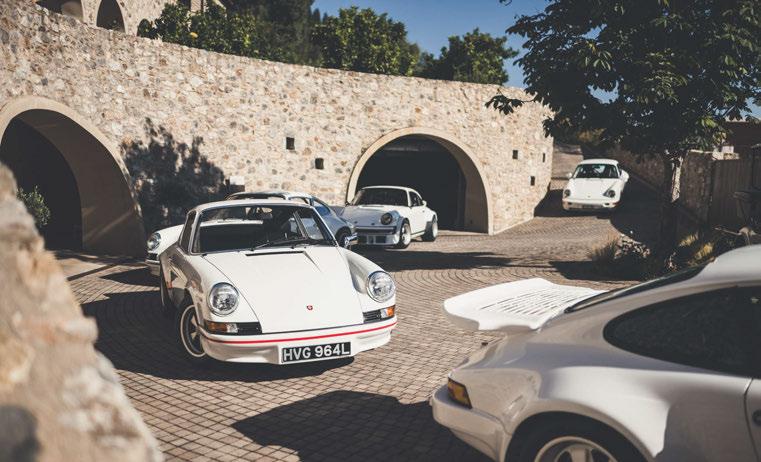
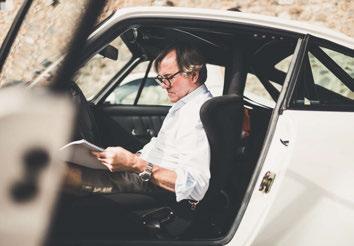
This page and opposite Robert Coucher familiarises himself with the route book; the full set of RS Porsches is prepared ahead of four days of glorious driving.
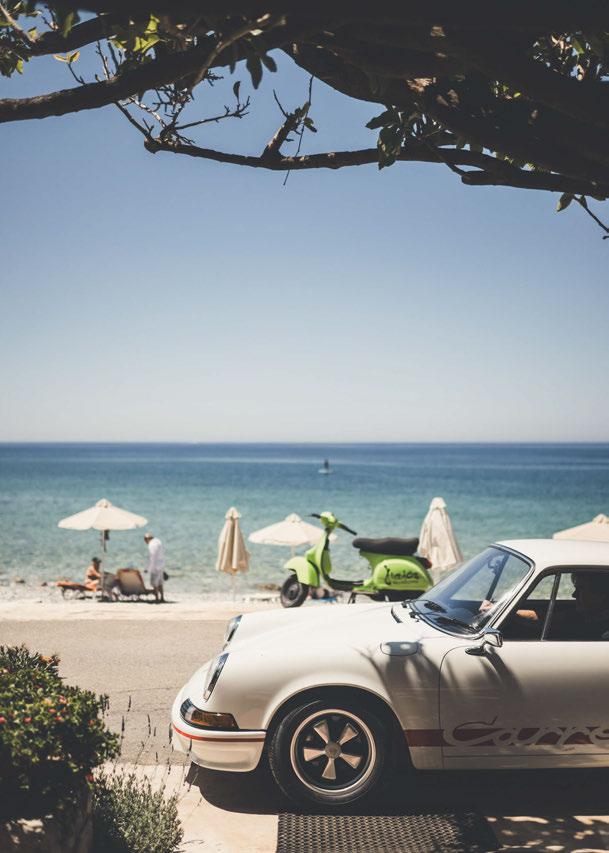

early Lightweight M471 has a thinner steel bodyshell than the RS Touring, and thinner cabin glass, glassfibre bumpers and racing seats so the kerbweight is just 960kg versus the Touring’s 1075kg. It has staggered 6x15in front and 7x15in rear Fuchs alloy wheels, and they originally featured red centres to match the red decals. But Peter didn’t like them so – this is serious attention to detail – he sourced correct replacement alloys with black centres that are date-stamped within a few months of the RS’s delivery date, making it possible that the original owner could have ordered this extra set. Oh, and the steering wheel has just been swapped for a smaller, more attractive Prototipo model.
The black cloth racing seats are a tight fit but comfortable and you notice the clock has been removed from the instrument cluster (by the factory), the doors are opened by a simple pull-strap inside and the glovebox lid is absent: lightness is all. The cold MFI (mechanical fuel injection) engine churns, catches and whangs into life – one of the best-sounding engines ever, and this one is particularly snarly. Driving gently out of Mystras allows time for the magnesium alloy engine to warm through properly.
Once it’s up to temperature we leave inhabitants behind and enter a magnificent gorge where, I discover, the road twists and turns for a heavenly 47.8km, according to the route book. The Lightweight feels sharp, accurate, precise and firm, mostly like any other classic 911, and I sense my navigator is becoming impatient so it’s time to give it a squirt. Coming up to a tight corner, I do the necessary 911
four-step: brake early in a straight line, change down, clip the apex, add power. Actually, I’ll give the throttle a naughty poke to see what happens: oh my! The rear end snaps out sharpish, but I hold my nerve and keep the power on. The RS responds instantly, gathers up the slide, the rear end bites and restores mechanical grip and we slingshot out.
Suitably chastened, I make the intellectual leap that discretion will be the better part of valour and settle into a responsible eight-tenths, to my co-driver’s annoyance. (Peter, I don’t have a spare couple of hundred grand to drop in the case of ‘you bend, you mend.’)
What’s remarkable about this Porsche factory racing car for the road is how effective it is on rough and sometimes broken mountain tarmac. The engine is glorious, with a good slug of mid-range torque that makes it easy to drive: in essence a stretched version of the period 911’s 2.4-litre engine, it offers 210bhp and 188lb ft (the 2.4 mustered 187bhp and 159lb ft). We make it to the lunch stop in one piece, for delicious Greek salad and grilled octopus.
Slightly out of chronological order, host Livanos then suggests I hitch a ride with Roland Kussmaul in the SC RS – a driving lesson and wake-up call with one of the best Porsche test drivers ever. As ever, Roland is relaxed to the point of zen. He quietly buckles himself in and gives me a quick overview of this car he built with Armin for Peter. It’s based on a 1978 911 ’shell, so it’s eligible for most historic rallying, and the 3.0-litre engine has sports camshafts and high-compression pistons so puts out a useful 265bhp. The
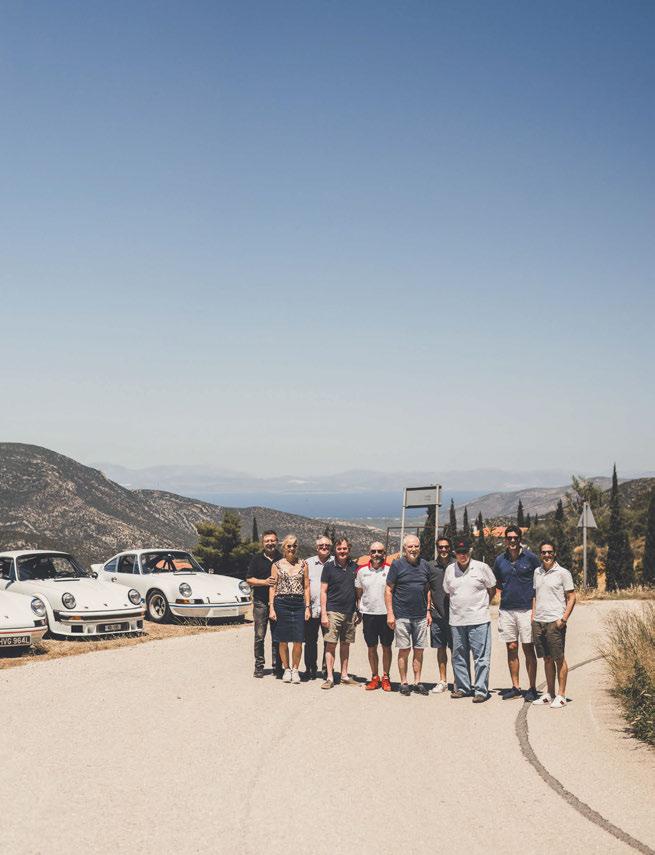
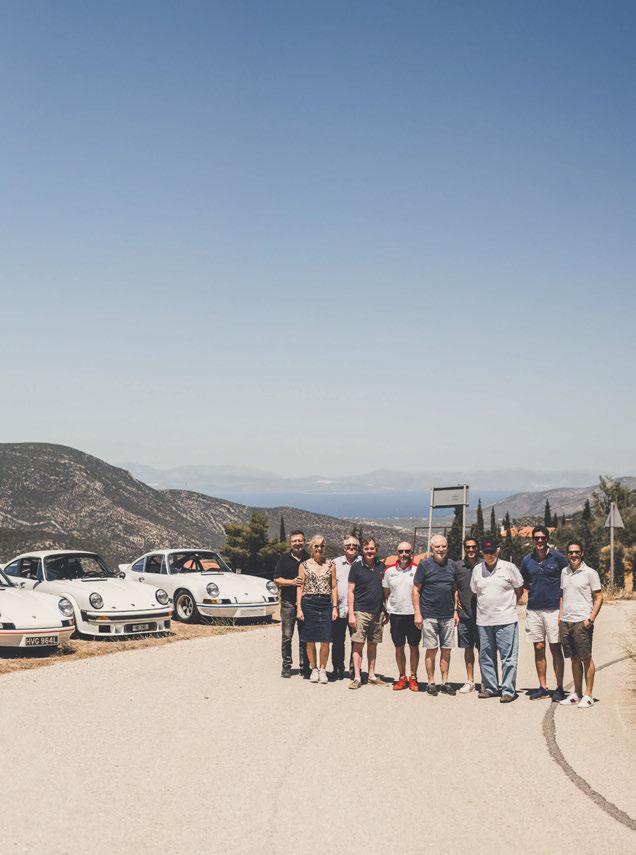
suspension is uprated, a coil-over-damper set-up so it can be more easily adjusted, and the brakes are 917/930 Turbo adaptions. The ’shell is all-steel and nicely plain, with only the whale-tail and fat alloys giving the game away. Roland points out that the rear wings (housing wide 245/45x16in Yokohama tyres) are steel and not glassfibre, as the latter can blow off when hitting standing water at speed. The full rollcage is a work of art, there’s a Monit trip-meter on the dash, the steering wheel is that fat, attractive SC job and, on startup, the twin-piped exhaust is purposely not too loud.
Roland goes to work on those twisting roads and winds the Porsche up firmly. I notice he’s grasped the steering wheel with his hands at quarter-to-three and does not remove them, other than for gearshifts. Please excuse the namedrop, but I’d noticed this trait with our other expert Porsche driver and columnist Derek Bell. Roland then somehow slows things down around him: the Porsche is whipping along spectacularly quicky, but his movements remain unhurried. No flailing arms, massive throttle thrusts or going heavy on the brakes. No, he just carries speed deep into the corners, brakes as little as possible and gets the power down. Into tight, switchback hairpins he deftly double-declutches into first, flicks the heavy tail around in a perfect pendulum action, and the instant the car is lined up straight, he drills the throttle for max attack. No showy power-sliding.
Roland has recently turned 80 years young! Unbelievable to watch him drive with such skill and precision, pushing a very fast 911 to ten-tenths with authority. These guys inhabit
‘THE ROAD TWISTS AND TURNS FOR A HEAVENLY 47.8KM’

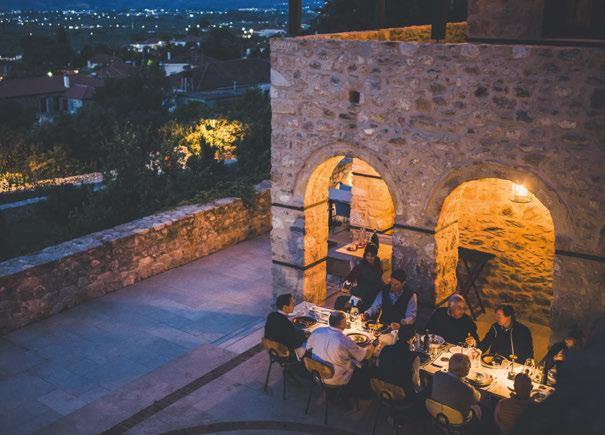
‘THE 911 SC RS PROVES A DELIGHT: FIRM, ON-SIDE AND PLAYFUL, A SUPER ROAD-RACER’
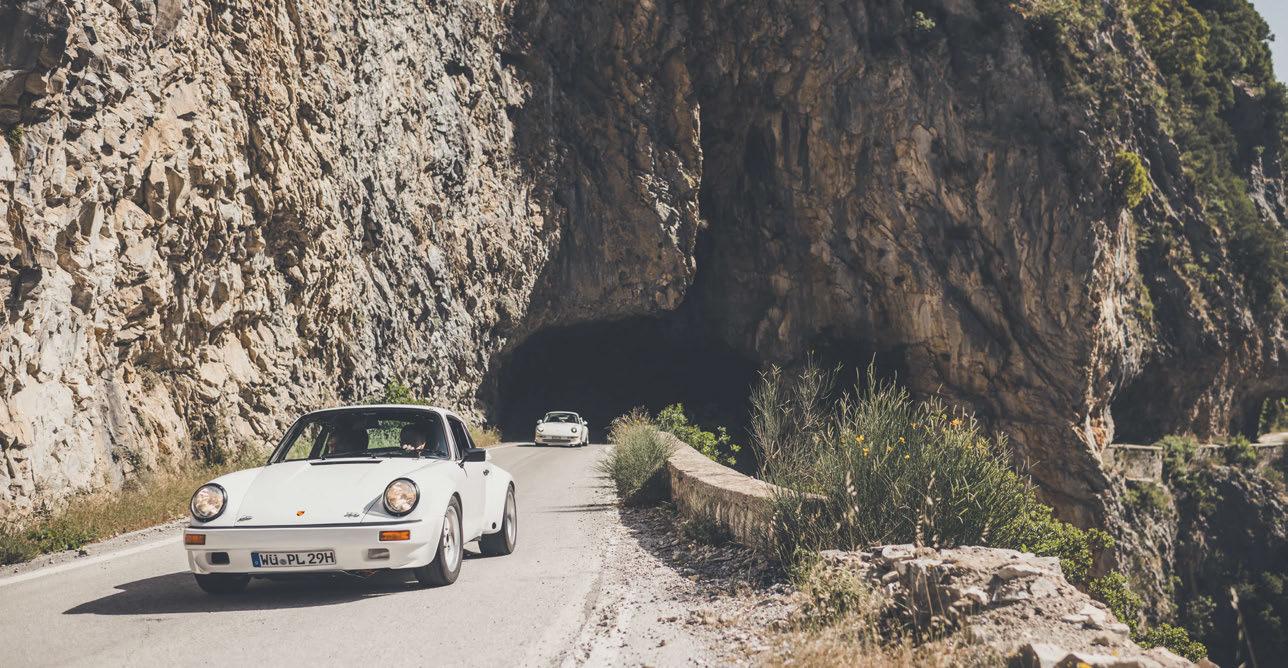
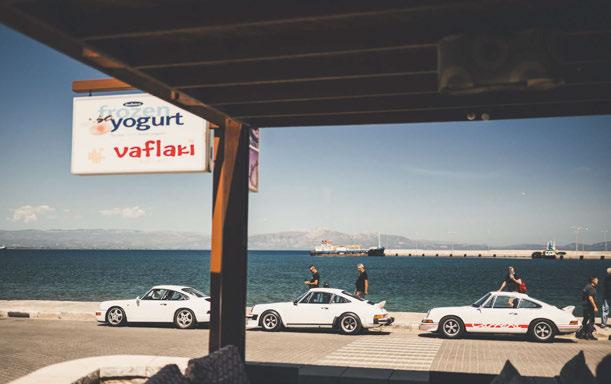


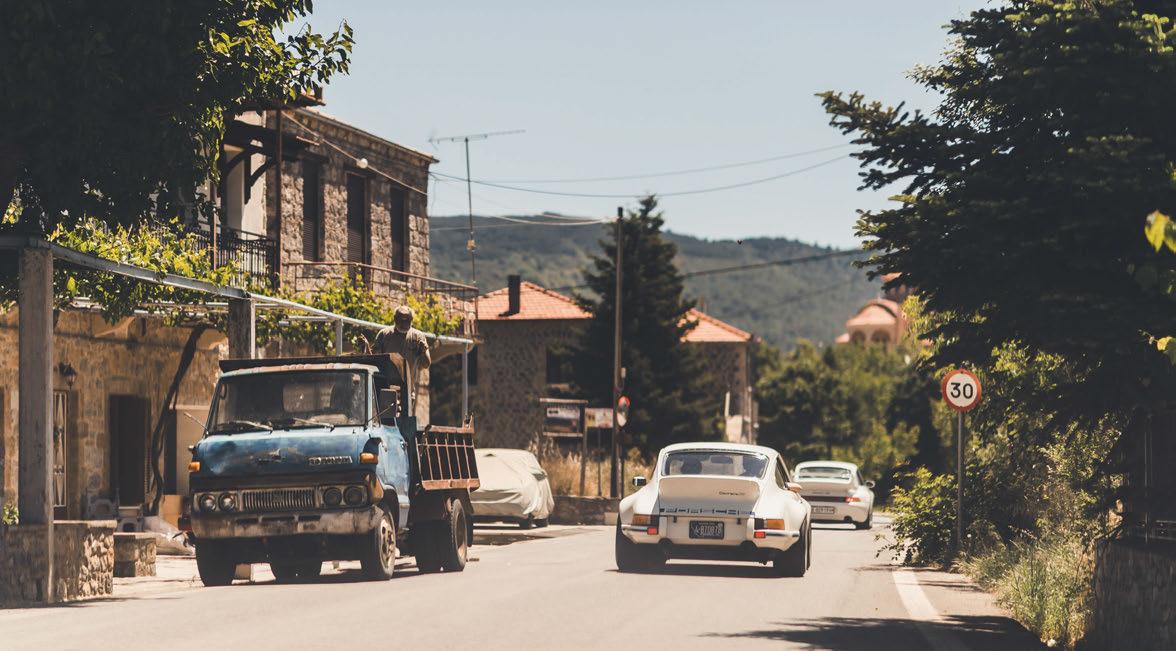
a different stratosphere no matter how old they are. Then I take the wheel and the SC RS proves to be a delight: firm, low-geared but communicative, on-side and playful, the 265bhp flat-six sounds seductively guttural, the suspension is pliant enough to handle the rough mountain roads, and the Turbo brakes, although non-servo, are immense.
Roland and Armin have built a super road-racer, well worthy of its RS nomenclature.
NEXT MORNING owner Philip Radziwill generously offers me the seat in his insanely special 2.8 RSR. One of only 50 constructed by Porsche, this 1973 RSR was first bought as one of a pair – the other raced hard, this one kept as an unmolested road car. It has a full, known ownership history, including collector and friend of Octane Chip Connor, so you know it’s going to be something special. Sitting on wide, 9in and 11in Fuchs alloys, with blue decals and those enormous Gatling gun-looking silencers poking out from the rear valance, the RSR looks animal. Again the MFI takes a few churns to light up on all six cylinders but soon it’s throbbing contentedly. The steering wheel is standard original, the clutch throw is firm but not unduly so, and the gearshift is tight and mechanical thanks to its short shift linkage. Back out on the quick and deserted roads, the RSR proves to be a very well-sorted and very fast 911, but is not the animal expected. The steering is a bit heavier than the RS’s thanks to wider 225/50x15in rubber up front and the suspension is much firmer, but let the red VDO rev-counter needle march up towards the red paint at eight thou’ and things erupt. The wide-hipped RSR lunges from corner to corner, its huge brakes shaving off speed
as required, while its drum-tight ’shell proves a rock-hard platform from which to operate. It’s understandable why this example is worth multiple millions of dollars.
After lunch at yet another perfect seaside restaurant, where we are the only people to be seen, I get the chance to back-to-back the brutal-looking 911 SC Group 4 brought along by Philipe and Antoine Cornet, previous Rallye Monte-Carlo Historique winners. The 911 is based on a 1979 SC and was originally built by Marc De Siebenthal, Porsche specialist based in Switzerland, and then prepared by our duo Roland and Armin for Walter Röhrl to drive, competing in the 2020 Historique.
Looking like a beast with its huge spoilers, blistered wheelarches and butch roll-cage, the Group 4 runs on Bosch K-Jetronic fuel injection so is actually a pussycat. Start-up is instant and the 3.0-litre has loads of mid-range torque but really comes alive at the top end. The suspension is firm and the hard driver’s seat is unyielding, but the chassis grip is immense and, with carpeting and trim, the Group 4 is not that noisy. It’s a properly dialled-in rally car that flatters the driver and remains surprisingly obedient.
Time is running out, so the final drive offers a choice between the 964 RS NGT (it’s a weapon, trust me) or the 1995 993 RS 3.8 Clubsport, the bookend to the air-cooled 911 range that began with the 2.7 RS. It has to be the latter, then. Totally stripped-out but sporting a roll-cage, this RS weighs in at 1256kg, pushes out 300bhp and hits 172mph. Apparently it’s track- rather than road-focused. No kidding! The rear wing looks more whimsical than the other, simply functional RS ducktails, while inside, the steering wheel looks like an aftermarket Momo addition.
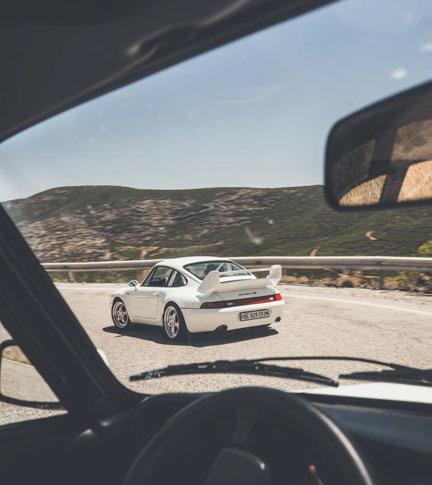
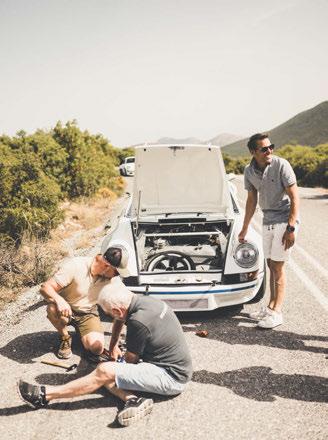


The big 3.8-litre fires smartish, its noise resonating around the tin-can interior. The clutch pedal is short of throw, like a switch, the throttle is a soft fly-by-wire affair, and the six-speed manual shifter is light. Get moving and the Sachs limited-slip diff’ rattles noisily; also noted is that, with coil-sprung MacPherson struts up-front and multi-link rear suspension, this doesn’t feel like a classic 911. Over the last few days, we’d determined that the fast back-roads through most of the Peloponnese are slippery: these older surfaces have a very high marble content to stop them melting in the sun. So attacking them in powerful, rear-drive 911s is a challenge as grip is minimal and there’s a high probability you could end up involved in a bit of unexpected olive pressing in a nearby grove!
With that in mind, the 993 feels twitchy and hyperreactive, those wide 265/35x18in rear tyres notwithstanding – this racing car is nervously pointy and gives much less feedback than the earlier RSs as to where the point of no return might be. A car best left to Roland and Walter…
Quite the experience, though. Spending four days with these air-cooled Porsche 911 RSs, examples from inception to fruition, it’s clear why driving enthusiasts love classic 911s. A Porsche 911 is a Porsche 911 is a Porsche 911… but not. This exercise has shown how you can take a proper 911
2.7 RS; celebratory cake for Kussmaul – after performing a roadside fix in the sun.
and dial it into exactly what you want it to be. Hence the rise of all the restomods, reinterpretations, reimaginations and various iterations of 911s available today. All the 911s here are pure Porsche and none has a showy interior. These are cars for driving fast: tough, capable, no fuss. So, of course, deep discussions go on long into the night as to which one is the best and which is the one to choose.
Having the benefit of extra driving lessons with amateur rally ace Franco in the 2.7 RS Lightweight and Armin in the SC RS, they are all incredibly impressive. Of course, costs have to come into things in the real world and the 2.8 RSR and Lightweight are valuable collectors’ items, though that doesn’t detract from their ability one jot. The Group 4 is a fantastic road-racer, as is the SC RS, whereas the superfast 993 RS Clubsport is best kept for use on racetracks with large run-off areas.
I have to agree with Peter Livanos: the car here that offers the best combination of value for money and stunning performance has to be the 911 SC RS created by our birthday boy (and Porsche legend) Roland Kussmaul. Happy birthday, indeed.
THANKS TO our generous host and owners, and to Knüpfing Motorsport, knuepfing-motorsport.de.

















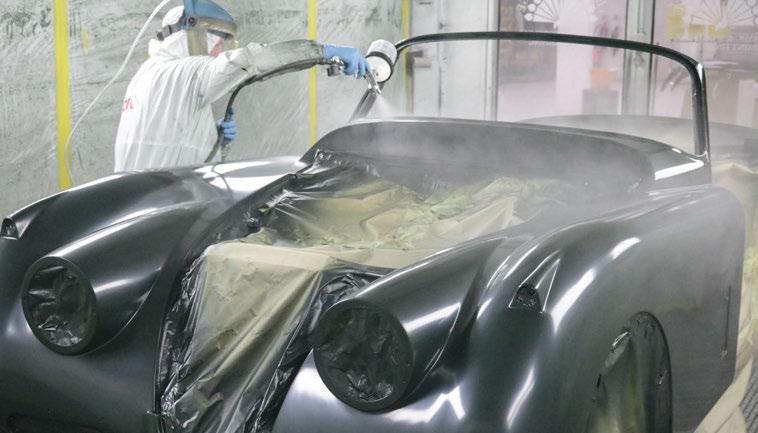

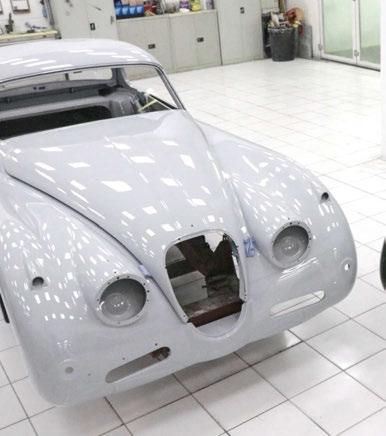
THE OLD SAYING ‘Let your colours shine through, like a peacock’s feathers’ could have been coined for Coventry-based specialist bodyshop Peacock Prestige, which breathes new life into classic cars via the highest standards of automotive painting. As its two owners explain: ‘This is very much a passion project. Nothing leaves here until it is as perfect as we can possibly make it.’
Peacock Prestige serves some of the country’s most widely renowned restoration companies, from its location in the historic heart of the British motor industry to the South Coast of England and beyond. Its team of wizards offer paint perfection for anyone who seeks it for their pride and joy.
Not surprisingly, Coventry-built cars such as Jaguars and Triumphs are a particular
specialism. Peacock Prestige’s shop floor has worked its magic on a number of early E-types, each taking about five weeks to finish using revolutionary paint products and hundreds of hours of highly skilled labour.
As this magazine went to press, an XK120 Open Two-Seater was in the spray booth ahead of a mammoth road trip later this year to the South of France and around Italy.
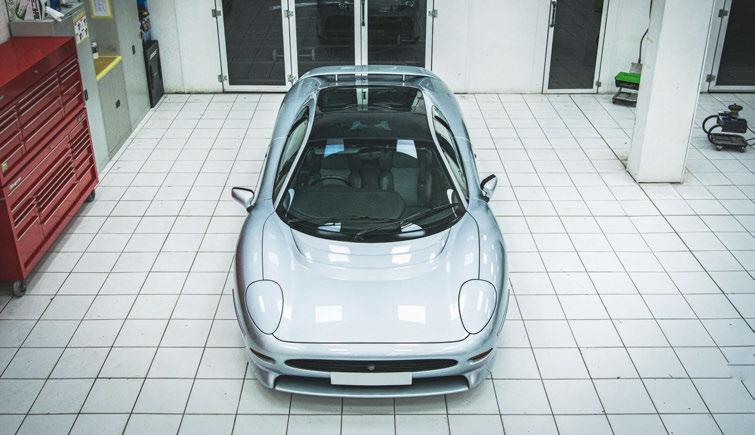

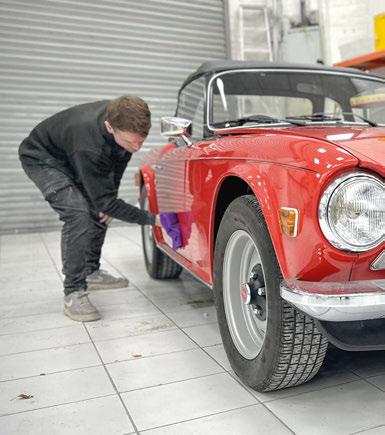
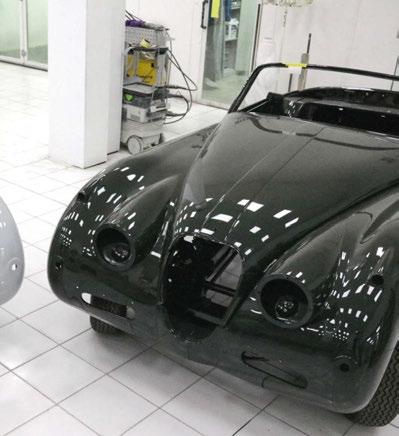
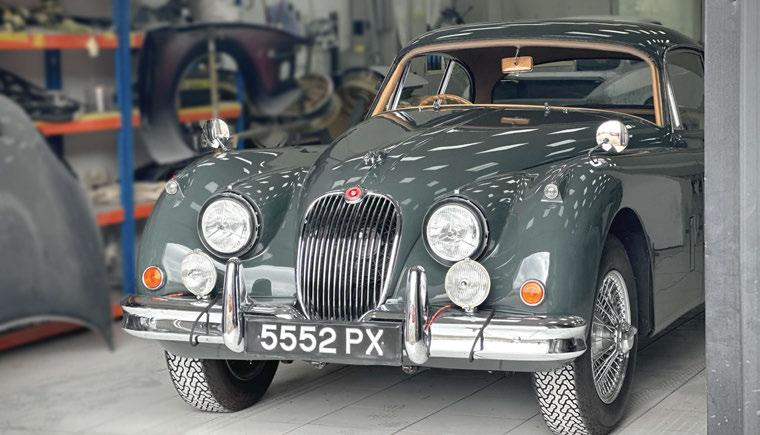
It will have been treated from the chassis up with an abundance of anti-corrosive measures, in line with the company’s focus on e ective long-term preservation.
A select team of eight skilled cra smen and women work on a wide variety of cars from all eras, and are experts in applying paint to glass bre and carbon bre as well as to steel and aluminium. Aside from spectacular pearlescent nishes and TVR ip paints, they use both water- and solventbased coatings, and even cellulose when it is required for, say, localised paint recti cation on an older classic.
Whether your car is an Aston Martin Vanquish or a Rover SD1 Vitesse, Peacock

Prestige will welcome it, regardless of classic status. e business is managed by a team of dyed-in-the-wool car enthusiasts with the aid of over a hundred years’ trade experience, and cars that leave its HQ will almost certainly be in ner condition than when they were despatched new from the factory.
Perhaps the last word should go to Octane editor James Ellio , whose 1965 Triumph 2.5PI was painted here.
‘Visiting Peacock Prestige’s set-up in the shadow of Coventry City Football Stadium was a bit of an eye-opener,’ he wrote in issue 252. ‘ ey have done a magni cent job that just brings the car alive and I can’t recommend them enough.’
‘Peacock Prestige’s team work on a wide variety of cars from all eras’




peacockprestige.com
+44 (0)2476 688888 sales@peacockprestige.com
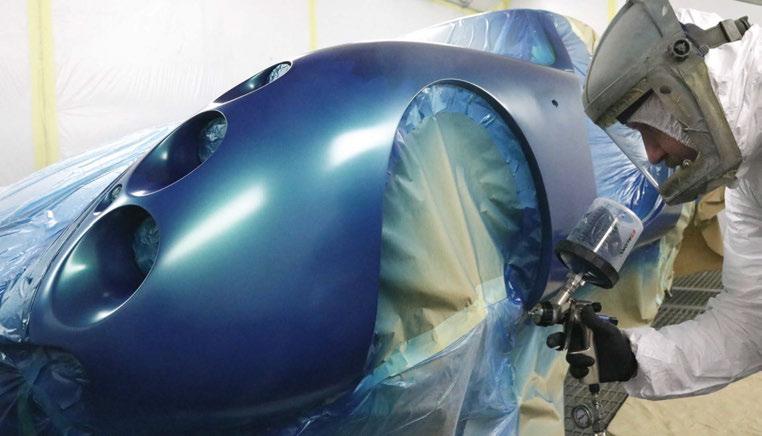
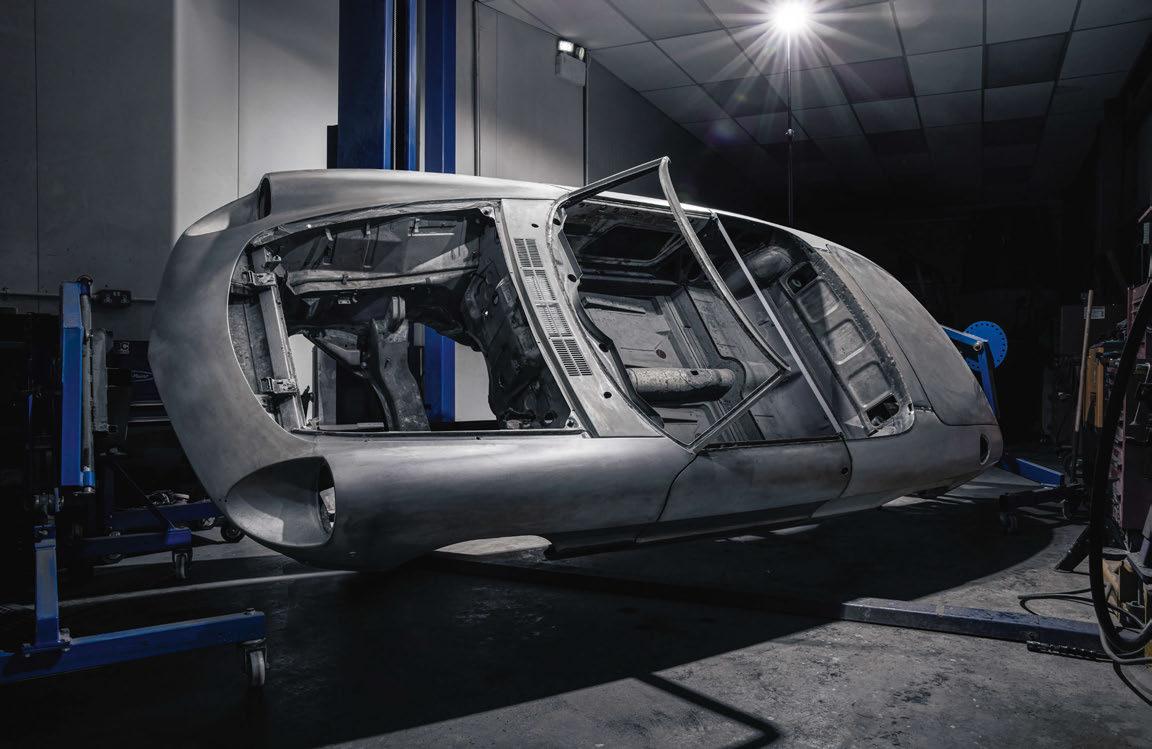
AFTER TWO YEARS of cutting, welding and shaping by the wonderfully patient team at Kent-based Turner Classics, it is finally done. The metal bodyshell of my formerly tired and beatenup 1969 Spider Veloce is once again square and rust-free.
But that wasn’t before a final kick in the shins just before Christmas, when I was greeted in the garage on a winter’s night with a resigned smile and the comment: ‘You’ve got a rotten rear end.’ More Sid James than Italo Calvino, I thought, but I suppose it had to be said. After
Turner’s craftsmen had diligently worked around the car replacing and restoring sills, struts and floors, the back quarters and rear valance had finally been cut away to reveal… well, frankly, not very much. Some rust, what looked like straw packing, and quite a lot of nothing whatsoever.
Given the extraordinarily strong central box frame of these cars, it was fascinating to see how little support the famous curved cuttlefish boot actually had. A single central strut extended back to a curved inner frame that appeared flimsy and insubstantial
compared with the heavyweight front end.
As usual for this ’shell, much of the original metal had been covered with yet more appalling welds and badly corroded steel repairs, often four or five layers thick. Dave, the talented fabricator who has guided this project throughout, assured me the boot floor was sound, inner ’arches could be stripped and repaired, and, with a new spare-wheel well and outer rear quarters from those clever people at Alfaholics, there would be more than enough structure at the back
Opposite page and below It’s taken two years to get this far and only now has it been revealed that there wasn’t really very much of structural note in the Spider’s rear end….


to support my excess baggage. Even so, I made a mental note to pack more lightly in future. Fast-forward a few months and I found myself once again photographing automotive wonders in the fantastic Museo Storico Alfa Romeo, Milan, and chatting with its chief curator, Lorenzo Ardizio.
While asking me about my own restoration experience, two questions occurred to him. ‘Will you keep the car in the original colour?’ I answered yes and we discussed how rare silver Spiders were in Europe at that time. ‘Was
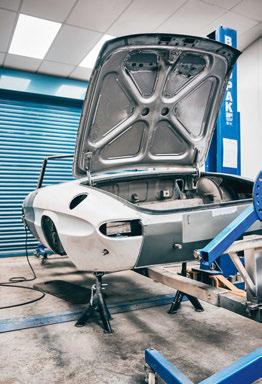
it very rusty?’ he then asked tentatively, which warranted nothing more than a Roger Moore-esque raised eyebrow by way of reply.
Perhaps Alfas, like so many cars of that period, were never intended to endure 50-plus years of use, and so much of the internal panelling and structure was never fully rust-proofed – something considered and now rectified in my own car.
Lorenzo also described a cheap, ridiculous but all too common aftermarket ‘fix’ to solve rust issues, which involved simply hacking crude holes in the inner ’arches to improve air circulation inside the sills and frames and allow water to drain out. In reality, this meant that untreated internal spaces were regularly pressurewashed on the sodden strade of northern Italy, with cars subsequently parked in foggy Milanese back streets to drip-dry.
More modern attempts to rust-seal undersides and floors by coating them with wonder products exacerbated problems of trapped moisture, and so the cars quite literally rotted from the inside out. Buyer beware: always lift the mats, peer inside those cavities, and never stand too near an Alfa with a glass of water.
These are the cars –and ’bikes – run by Octane’s staff and contributors
JAMES ELLIOTT
Editor-in-chief
• 1965 Triumph 2.5 PI
• 1968 Jensen Interceptor
• 1969 Lotus Elan S4
ROBERT COUCHER
Founding editor
• 1955 Jaguar XK140
GLEN WADDINGTON
Associate editor
• 1989 BMW 320i Convertible
• 1999 Porsche Boxster
SANJAY SEETANAH
Advertising director
• 1981 BMW 323i Top Cabrio
• 1998 Aston Martin DB7 Volante
• 2007 Mercedes-Benz SLK200
MARK DIXON
Contributing editor
• 1927 Alvis 12/50
• 1927 Ford Model T pick-up
• 1942 Fordson Model N tractor
• 1955 Land Rover Series I 107in
ROBERT HEFFERON
Art editor
• 2004 BMW Z4 3.0i
DAVID LILLYWHITE
Editorial director
• 1971 Saab 96
MATTHEW HOWELL
Photographer
• 1962 VW Beetle 1600
• 1969 VW/Subaru Beetle
• 1982 Morgan 4/4
‘Buyer beware: always lift the mats, peer inside those cavities, and never stand too near an Alfa with a glass of water’
The next job at Turner Classics will be a careful media-blast of the whole car to clean and check every crack and crevice, followed by a little leading, priming and paint. As I write, the engine is upside-down and draining expectantly for inspection and rebuild. That could go two ways: another horror-show of botched repairs, or maybe, just maybe, given the complacent approach taken by the previous owner to bodywork repairs, nothing but a stripdown and clean.
It always ran well, so fingers are crossed and wood has been tapped, hoping no one has been in there since the summer of ’69.
BEN BARRY
Contributor
• 2007 Mazda RX-8
MASSIMO DELBÒ
Contributor
• 1967 Mercedes-Benz 230
• 1972 Fiat 500L
• 1975 Alfa Romeo GT Junior
• 1979/80 Range Rovers
• 1982 Mercedes-Benz 500SL
• 1985 Mercedes-Benz 240TD
SAM CHICK
Photographer
• 1969 Alfa Romeo Spider
ROWAN ATKINSON
Contributor
• 2004 Rolls-Royce Phantom
ANDREW RALSTON
Contributor
• 1955 Ford Prefect
• 1968 Jaguar 240
SAM CHICK
Photographer
• 1969 Alfa Romeo Spider
RICHARD HESELTINE
Contributor
• 1966 Moretti 850 Sportiva
• 1971 Honda Z600
PETER BAKER
Contributor
• 1954 Daimler Conquest
• 1955 Daimler Conquest Century
• 2005 Maserati 4200GT
• 2008 Alfa Romeo Brera Prodrive SE
DAVID BURGESS-WISE
Contributor
• 1924 Sunbeam 14/40
• 1926 Delage DISS
MATTHEW HAYWARD
Markets editor
• 1990 Citroën BX 16v
• 1994 Toyota Celica GT-Four
• 1996 Saab 9000 Aero
• 1997 Citroën Xantia Activa
• 1997 Peugeot 306 GTI-6
• 2000 Honda Integra Type R
• 2002 Audi A2
JESSE CROSSE
Contributor
• 1968 Ford Mustang GT 390
• 1986 Ford Sierra RS Cosworth
MARTYN GODDARD
Photographer
• 1963 Triumph TR6SS Trophy
• 1965 Austin-Healey 3000 MkIII
DELWYN MALLETT
Contributor
• 1936 Cord 810 Beverly
• 1937 Studebaker Dictator
• 1946 Tatra T87
• 1950 Ford Club Coupe
• 1952 Porsche 356
• 1955 Mercedes-Benz 300SL
• 1957 Porsche Speedster
• 1957 Fiat Abarth Sperimentale
• 1963 Abarth-Simca
• 1963 Tatra T603
• 1973 Porsche 911 2.7 RS
• 1992 Alfa Romeo SZ
EVAN KLEIN
Photographer
• 1974 Alfa Romeo Spider
• 2001 Audi TT
HARRY METCALFE
Contributor
• 20 cars and 15 motorbikes
To follow Harry’s adventures, find Harry’s Garage on YouTube.

WHILE OUR kill-joy, anti-car politicians and councillors do their best to render Britain’s towns, cities and villages as car unfriendly as possible, there’s been a blossoming of classic car enjoyment that harks back to the simple days. The days when you’d enjoy the pleasure of taking your classic car for an outing to meet up with others for a relaxed cup of tea or coffee.
In the 1990s and 2000s, we used to laugh at the idea of a bunch of anoraks parking up in a field and setting up their deck chairs. Hell no! We wanted to be historic racing, regularity rally driving, grand touring, Gumball Rallying, Beaujolais dashing, enduring the Tour de France or the 1000-mile Migle Miglia. All very fabulous, fabulously expensive and fabulously exhausting!
More recently, car and coffee drive-ins have flourished, with classic cars being parked up somewhere attractive and their occupants gathering around for a chat and to look at and enjoy a selection of the disparate classics that appear at random. The Ace Café on London’s North Circular started this idea some years ago and the 96 Club has been holding bacon-butty meets in Chesham Place in smart Belgravia for a while, too. No scrutineering, no expensive racing suit or ‘wet’ tyres
required, you just bowl up.
Early morning, a couple of Sundays ago, I did just that. Got the XK140 out of its lair, did a lap of central London to get it properly warmed through, then motored quietly down to an innocuous-looking mews under a block of flats, fronted by an industrial grey steel door. Normally it’s shut, but today it’s wide open, revealing a massive garage full of around 60 superbly presented vintage, classic and high-performance cars. Oh, and editor Elliott’s now-immaculate Triumph Mk1 PI, too, parked outside.
These are the Battersea premises of Graeme Hunt Limited (www.graemehunt.com), so no surprise it’s a treasure trove of immaculate automobiles
tucked away in this otherwise quiet cul-de-sac… until a V12 or a supercharged engine is fired up. Graeme, Bettina and William Hunt open their fabulous ‘Garages’ for occasional Coffee & Carburettors gatherings in Battersea, where good coffee and delicious croissants and pastries from ‘Paul the Bakery’ are served, along with interesting car people to chat to.
It’s definitely worth an early-morning drive down to this London hideaway, where parking is no problem. The next C&C is early morning on Saturday 7 June. Come along, but do email ahead via mail@graemehunt.com so Bettina can ensure there are enough pastries – putting the ‘carbs’ into ‘carburettors’ – to go around. See you there.




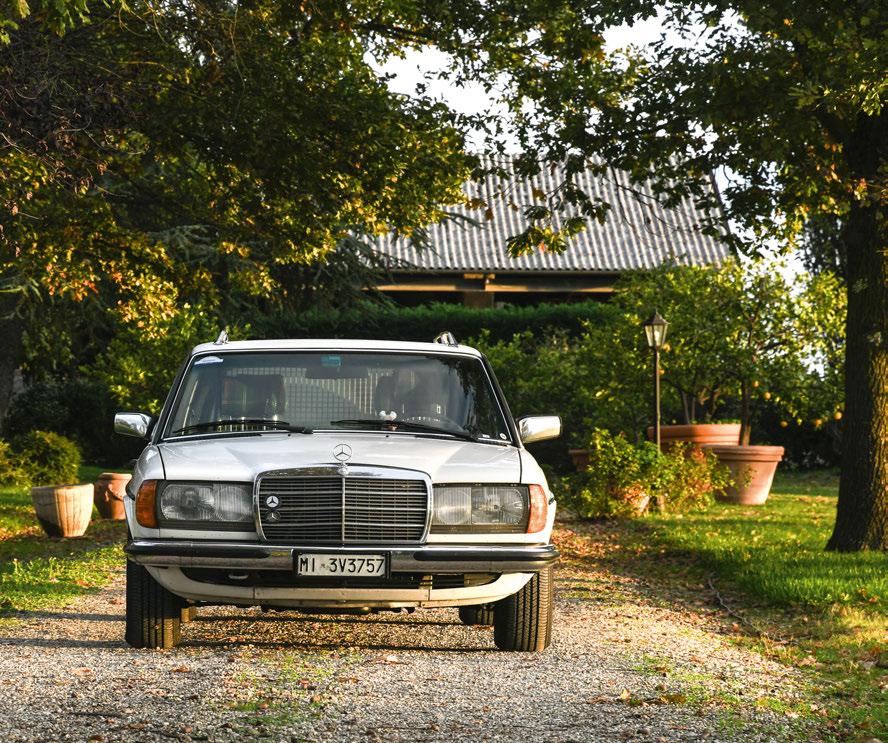
IT WAS LOVE at first sight. In spring 1990, I needed a new car because my first, a very cheap and very rusty Mercedes W123 200D bought from a farm close to Milan, had been written off after my brother was hit by a Lancia Delta. Thanks to the money from the insurance, topped up by my savings and a gift from my grandma Ester, on 13 June 1990 I become the legal owner of a 1985 240TD. This one.
Spotted at the Mercedes dealership in Milan, the 240 had had one owner from new, had covered about 240,000km, and
had the desirable air conditioning, sunroof and five-speed gearbox.
Geronimo, the family Golden Retriever, was particularly happy, as he suddenly had a lot more space… The 240 and I worked a lot together, and travelled for many summers with friends and surf boards. At the beginning it had to live outside, on the road in Milan, and escaped being stolen a couple of times. Eventually we moved from the city – a job for which the 240 is well-suited – and I could park it in a safer garage.
Over the years other cars came and went, but selling the 240 was
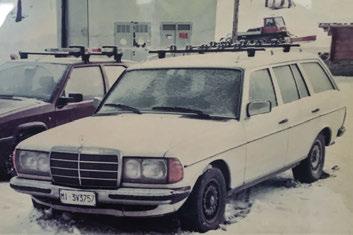
never an option. Its role changed from everyday workhorse to leisure vehicle, and its social status changed as it became a ‘youngtimer’. In 2005, when it was 20 years old – the age at which a car can be considered of historical interest in Italy – it was accepted into Mercedes-Benz Classic Days in Salzburg. What a debut! I then discovered the reason why a humble S123 was allowed there: it was the only diesel at the event, and back then Mercedes was very proud of its heritage as a diesel manufacturer.
In summer 2010 we drove all

Left and below
A slow-burning love story: Massimo has owned his Merc wagon for 35 years.
over Europe to visit car museums, which inevitably included a detour to Bremen and the factory where the 123 station wagons were made in period. I got quite emotional when I parked in front of Building 3, the exact place where mine first saw the light of day 25 years earlier. But our most important journey was on a foggy 25 January 2016, when we drove to pick up my newborn son
Cesare from hospital. Seeing him, just a few years later, spending an afternoon washing (the lower part of) the car is a wonderful memory. That year also marked its first appearance in Octane Cars I have four pages listing all the jobs done on the 240 over the years but most of them are normal services or small repairs, since it has never let me down. Every few years the fuel sender stops working and has to be replaced, while the air conditioning needs regular maintenance. I’ve changed the shocks all round twice, the clutch once, the tailgate struts twice, the windshield after a stone hit it, and the steering box. I’ve also had no fewer than seven three-pointed-star mascots stolen, with the record being three hours for a new replacement to be taken. I eventually solved this by making the fixing detachable. Today the 240 has done just shy of half-a-million kilometres but, as everyone says, that means it’s just run in! And should you ever wonder how it’s possible to love a slow 72bhp diesel station wagon this much, it can only mean that you have never owned an S123.

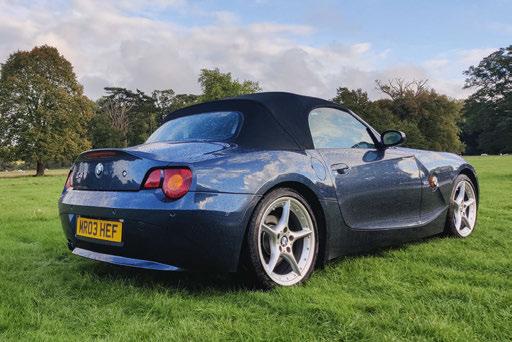
2004 BMW Z4 3.0i
Robert Hefferon
I’VE BEEN BUSY tinkering since getting my car back from the bodyshop after the insurance work and wheel refurb. And what better way to say I miss you (and to combat the workshop dust and spray drift) than with a clay bar and wax and a good hood clean –while being careful not to touch the new areas of paint until they harden fully.
On the mechanical front, I’d been carrying a can of WD-40 with me to extinguish a noisy idler bearing, and it had been doing the job for a few months, but I also found the time to swap that out and fit a new serpentine belt. Stupidly, when I replaced my CCV system, I’d not seated the dipstick O-ring correctly and pinched it, resulting in a small oil leak. It was a Sunday so I tried my luck at Halfords with a mixed pack of washers. It turns out that half a millimetre makes all the difference! I managed to tighten it down until a new O-ring from BMW arrived, which (thankfully) fits beautifully.
Every turn of the Z4’s ignition key is like pulling a slot machine handle, and so out of nowhere I was spun an airbag light. If you’re lucky there is actually nothing wrong and it can be reset with an OBD scanner, so man-logic supported buying – I mean investing in – one, which would
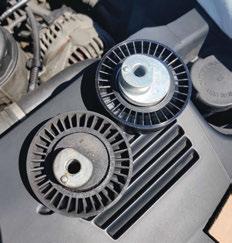

Above, from top Shiny paint to match refurbed wheels; idler pulleys, new for old; scanner extinguished warning light.
surely be cheaper than a trip to the garage. Thankfully I muddled through and reset the light. The clutch release bearing also started screaming at me one evening, perhaps due to the wet weather, but it soon quietened down and so I’ll forget that it happened, until it does it again.
However, the Z4 really continues to be a joy. I have a vague plan to refresh the rear suspension components, the brake hoses, discs and pads, and to relocate the roof motor and get the GM5 module refurbished, but first things first – it’s MoT time.

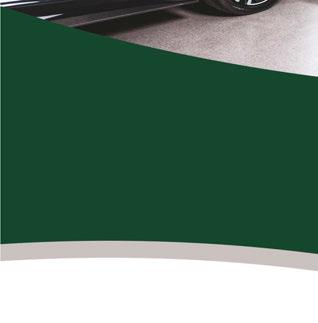



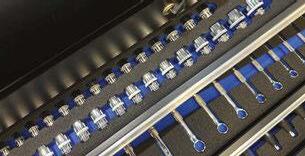





A BRIGHT AND sunny St David’s Day falling on a Saturday persuaded me to bring the Sunbeam out of the motor house for its first run of the year. I’ve given the older car precedence over the 1926 Delage this spring because the cars have to be parked nose to tail in the garage, which was originally built to house the horse and trap of the curate for whom my house was originally built around 1880, and I need to get used to the very different ways of the Sunbeam.
It’s an easy starter with full choke on its Claudel-Hobson carburettor and the ignition and throttle levers set at 20 to 4 – full ignition retard and tick-over – on the big nickel dial on the steering wheel. There’s no ignition key – just press the button on the dashboard and the engine settles to run with a distinctive ta-pocketta-pocket rhythm.
Backing down the gravelled drive, I had to reverse onto the lawn to turn the car to face the gates; like the Delage, the Sunbeam has a turning circle like the Queen Mary, and it takes a few back-and-forth movements to get it pointing in the right direction. Low-speed steering is
Left
Sunbeam is remarkably pleasant to travel in, with a smooth and comfortable ride and light steering.
up, needing part-choke for the first quarter-mile or so of the journey, but soon settles down to a steady beat. The gearchange is easy: simply declutch, pause slightly and move the stubby lever home. Just a slight click as the gears engage.
Long cantilever rear springs contribute to the smooth and comfortable ride. The 1924 model year was the first that the 14/40 Sunbeam was available with front-wheel brakes, which are reassuringly powerful.
The return journey, with the engine comfortably warm, is rewarding. I look forward to longer trips when the weather is warmer.
comparatively heavy but, once the car is rolling, the steering on the big narrow-tread tyres, inflated to 50psi, is as light as a modern with power assistance.
Though it’s some 40 years since I had a car with a right-hand three-speed gearchange, the memories slotted into place as easily as the straight-cut gears, and the clutch takes up the drive smoothly as I head down the lane.
Unlike the Delage, the Sunbeam takes a while to warm
It was a perfect weekend; the next day saw an excursion to Sunday lunch with friends, seated on Bedford cord upholstery in the back of a 1925 Hooper limousinebodied Rolls-Royce Twenty. Headroom and legroom were generous, tailored for the days when a country gentleman would drive up to London and call in at his hatter’s in Bond Street to take his silk topper out of store, ready to do business in the City. The ride to lunch was steady and smooth. Has a century made significant improvement in the comfort stakes? It’s debatable.
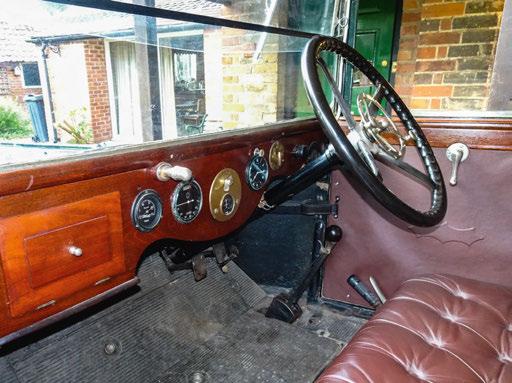
‘I’ve just been told that the unit where I keep my old Landie will likely be demolished for a new development this year. Cue a sudden urgency to get it running again’
Mark Dixon
‘Been enjoying the Boxster a lot in the recent sunny weather. Meanwhile, the BMW sailed through its MoT but is now awaiting a return visit for a new rear wheel-bearing’
Glen Waddington
‘Because I forgot to disconnect the Integra Type R’s battery over winter, it’s now refusing to hold a charge, which is not ideal ahead of a planned road trip. A new one is on order’
Matthew Hayward
‘Used sparingly over the winter, the Jaguar 240 began spring in good shape – apart from a horn that suddenly started sounding at random moments!’
Andrew Ralston
‘Having owned my 1965 ’Healey 3000 for 37 years, I think of myself as being as much of a classic now as the car, which I’m preparing for Drive It Day on 27 April’
Martyn Goddard
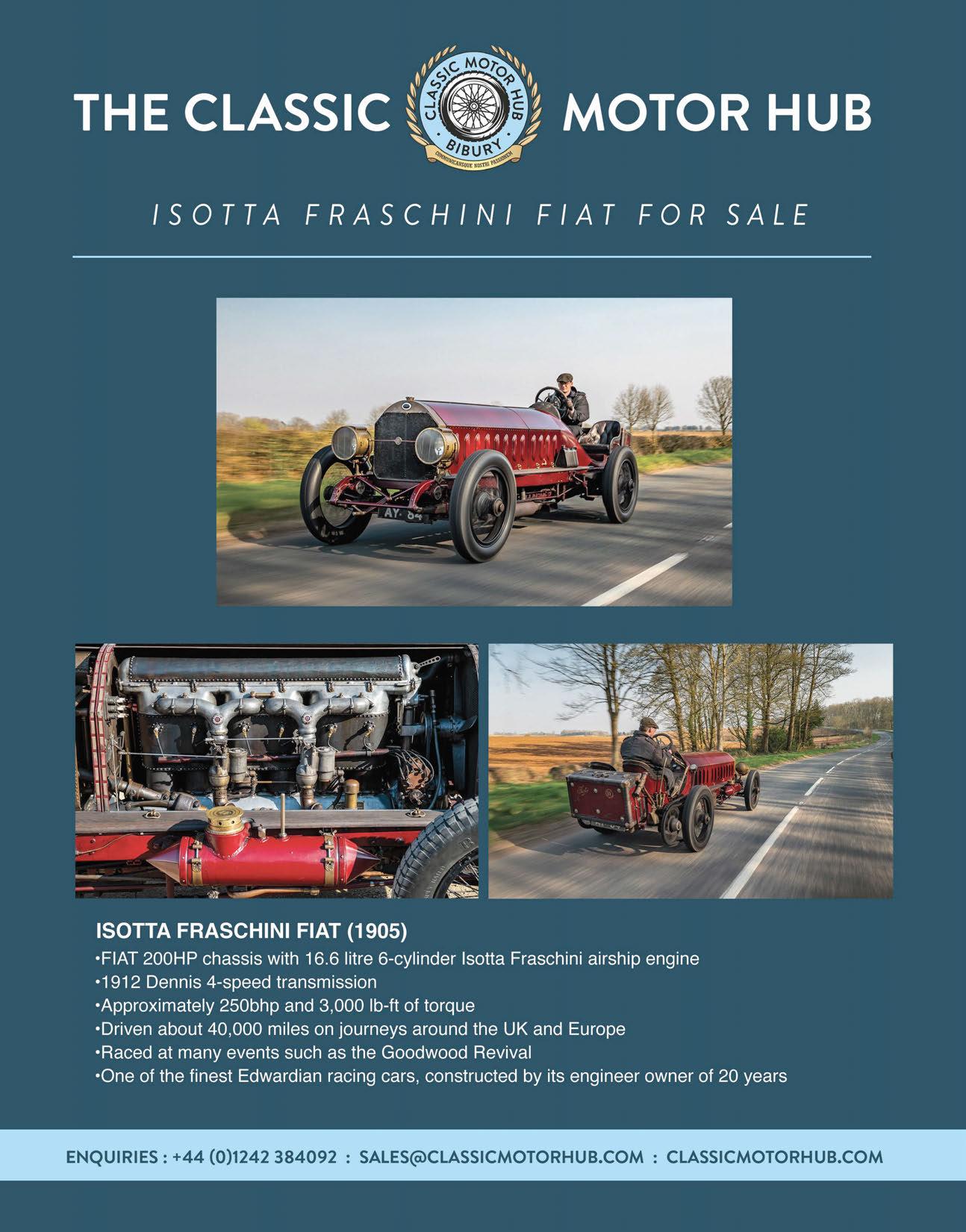
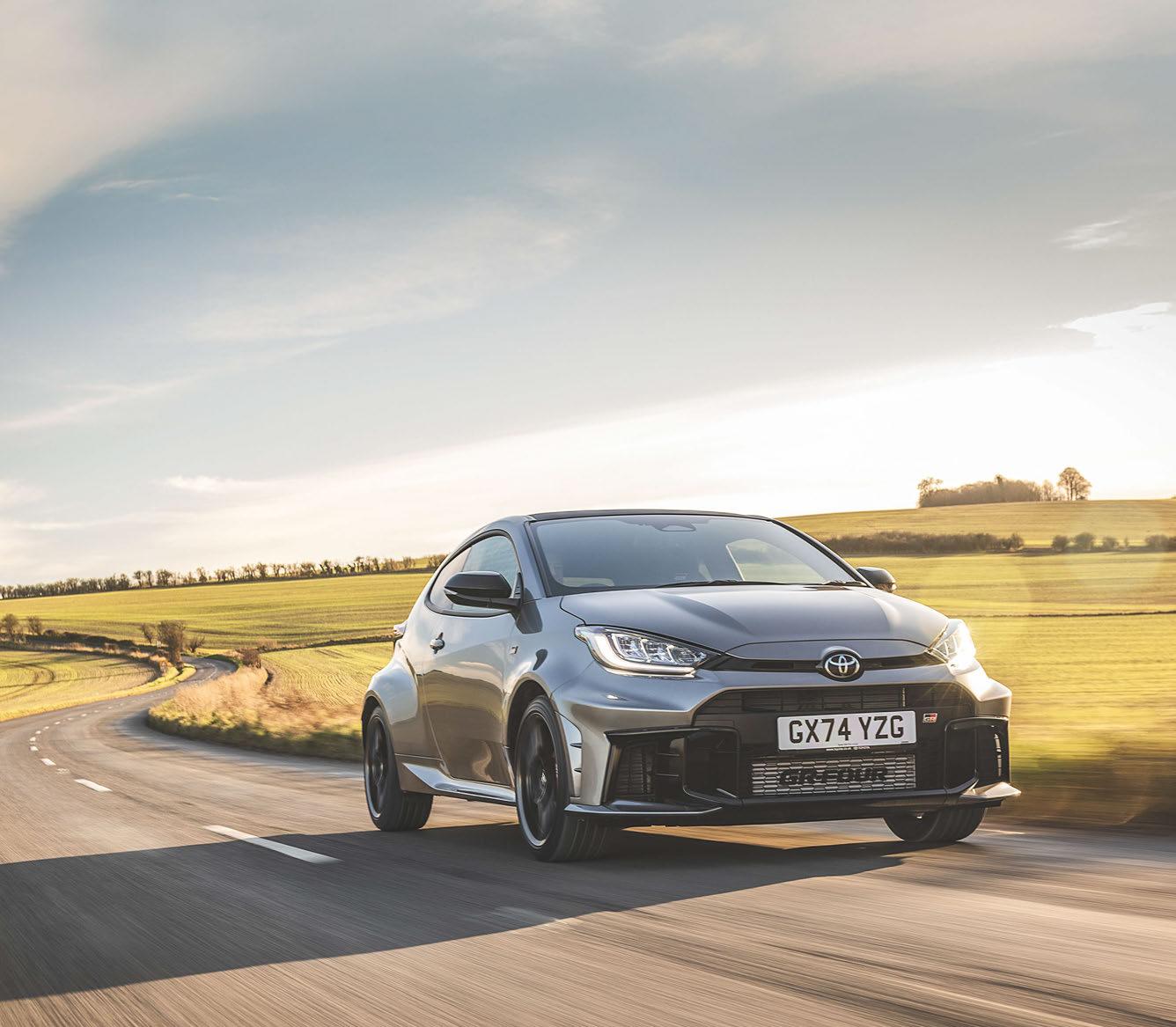
2025 Toyota GR Yaris
Matthew Hayward
NOT MANY CARS scream instant classic quite like the GR Yaris. For me it evokes memories of the ‘glory years’ of Group A rallying, and the legendary road cars that movement sprouted. Perhaps most obvious is the permanent four-wheel drive system with a controllable torque split, handled via a large rotary knob in the centre console. The extremely visible front-mounted intercooler looks like it came straight off a Mitsubish Evo TME, and there’s even a button on the dash for an intercooler water spray. Above all this, though, is
the inherent sense of purpose that permeates the whole car. I already had great admiration for the GR Yaris before getting behind the wheel. How so? Thanks simply to Toyota’s willingness to produce such a car! As a quick refresher, its threedoor bodyshell is bespoke and the car is built in the same Motomachi plant that gave birth to the Lexus LFA. Quite the stablemate. And, although it may look like the family hatch after which it’s named, it’s really a very different car – with lightweight panels, including a forged
carbonfibre roof, it was intended for homologation as a WRC entrant in 2021. Sadly those plans didn’t work out, thanks to rule changes the following year, yet Toyota boldly decided to build the road-going GR Yaris anyway. As much as I adored the first-generation car, there were a few small areas of criticism, and Toyota has set about fixing them with this updated 2025 model. Small tweaks can make a big difference, and the first thing I noticed was the 25mm lower driving position – improving one of the few issues I had with the

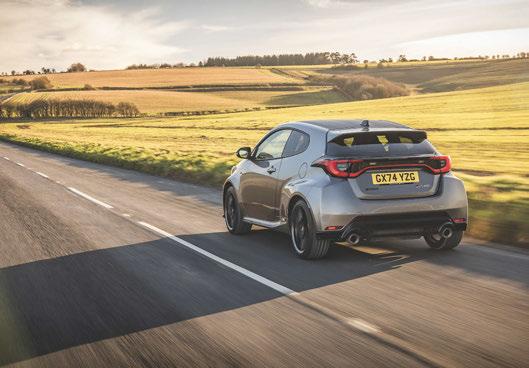
‘Once you get a feel for the chassis, it’s addictive fun and wildly capable’
original. The interior has been substantially restyled, with a new, much more driver-focused dashboard layout, housing a new digital gauge cluster. It retains a spread of proper buttons, too.
It’s powered by a strengthened version of the same 1.6-litre turbocharged three-cylinder engine – now up by 19bhp, producing 276bhp and 288lb ft – and, while it didn’t ever feel lacking in performance before, the delivery seems slightly crisper, and refinement is also slightly improved. We’re in the six-speed manual, although there’s now the option of an eight-speed
automatic for the first time.
On the road you can feel just how rigid that bodyshell is, and the new model’s subtle suspension tweaks have also firmed up the ride quite a bit. The car’s responses are more alert than before, but the wonderful neutral balance remains. On our greasy and on-the-verge-offreezing test route, with the drivetrain in ‘Normal’ mode, I found that its natural inclination is to understeer. Stick it in Track mode – which pushes up to 70% of torque to the rear wheels – and it really comes alive; you start to make a game out of how early you
can get onto the power out of low-speed corners. It seems to dig in and find grip with minimal fuss, thanks in no small part to a Torsen limited-slip diff at each end. Once you get a feel for the chassis, it’s engaging, addictive fun, and wildly capable.
When it was launched in 2020, the GR Yaris was hailed as a bargain at about £30,000. This updated version starts at £44,250, and is being brought into the UK in much more limited numbers.
Less of an outright bargain, perhaps, but it’s been subtly and thoroughly improved to become an even more impressive package.
This page and opposite It may look like a supermini but the GR is far from a standard Yaris, bred for a still-born rallying programme, let loose on the road instead, and now here in improved form.

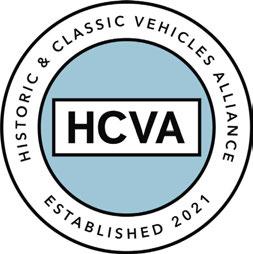
HERO-E is the world’s leading organiser of historic motoring events, delivering unforge able rally experiences across the globe for classic and vintage car enthusiasts. From one-day events to epic cross-continental journeys, our calendar celebrates the golden age of motoring with modern precision. e legendary Peking to Paris Motor Challenge is HERO-E ’s agship event: 37 days and 14,000km across the world’s largest landmass, a true adventure in the tyre-tracks of the original 1907 pioneers. As our chairman, Tomas de Vargas Machuca, says: ‘P2P forges character, resilience, and – most of all – friendships. e car is a tool that lets us see the world un ltered, discovering the enduring humanity among people.’
Our calendar features approximately 15 events per year, from short-format rallies such as the HERO Challenge Championship to multi-day classics such as the C Rally of the Tests and the tenday Badawï Trial. Every event is a driving adventure, categorised by di culty from Introductory (easy daytime driving on sealed roads, such as the Summer Trial and Sco ish Malts) via Intermediate (mixed surfaces, suitable for all, such as the HERO Challenges) and Advanced (longer competitive sections, mixed surfaces, varied conditions, exempli ed by the Classic Marathon and ree Legs of Mann) to Expert (challenging day and night driving, all-weather conditions – think C Rally of the Tests, LeJog).
New to rallying? Our Zero 2 Hero programme takes newcomers from rst event to fully edged competition, structured via e Novice Trial and Badawï Trail to culminate in the Peking to Paris 2028. We’ll help you nd the right car – and with a eet of 26 classic rally cars available for hire through our Arrive & Drive programme, full equipment in the HERO Store, bespoke tours from ITINERIS, and new membership packages, HERO-E is your gateway to the world of historic rallying. Start your journey. Live the adventure.

(0)1869 254979 www.hero-era.com





Organiser of Yorkshire Elegance, sponsor of the 1000 Miglia, plus vehicle sourcing, storage and tours. +44 (0)1924 427836 www.thefastlaneclub.com



World-renowned Aston Martin specialist and o cial Heritage Parts Partner established in 1983. +44 (0)1332 371566 www.astonengineering.co.uk
Jaguar preservation, restoration and servicing, specialising in cars from the 1950s and 1960s. +44 (0)1789 507611 williamheynes.com


Helping to keep your Jaguar on the road. +44 (0)1746 765432 www.sngbarra .com
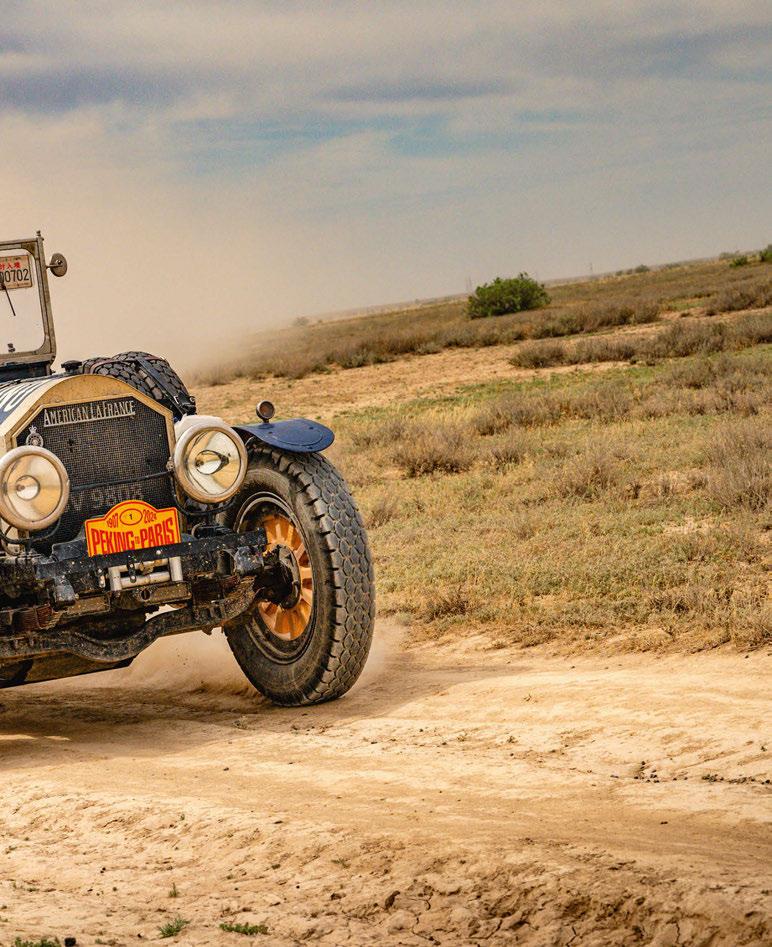



Worldwide leading wholesaler of Land Rover and Range Rover parts and accessories for all models.
+44 (0)1588 672711 www.britpart.com


Suppliers of top-quality automotive and inspection lighting, including Retrofit Classic LEDs. richard.armstrong@lumileds.com www.philips.co.uk

Autohistoric: specialists in the preservation and restoration of veteran and vintage vehicles. +44 (0)1825 873636 www.autohistoric.co.uk

Buga i Owners’ Club and Presco Speed Hill Climb: championing motorsport and hillclimbing since 1929. +44 (0)1242 673136 www.presco hillclimb.co.uk

Harding Auto Services: 1920s to modern day, road, race and custom. +44 (0)1483 487626 hardingautos.co.uk
The season is now in full swing, and it is striking how our sector suddenly becomes highly visible once the fleet of historic and classic vehicles takes to the roads. Whether it be a jaunt with friends, a ending an organised event or club meet, or heading out to a specialist for parts or support, seeing our vehicles being enjoyed is the tangible manifestation of everything that goes on behind the scenes in a skilled industry, and the owners and enthusiasts who keep our motoring heritage alive. It cannot be overstated how maintaining vehicles in a safe, roadworthy condition, and using them regularly, not only preserves the vehicles and the supply chain that supports them, but it also expands the awareness, knowledge and desire for the next generation to become involved. Being seen is being relevant. So the HCVA challenge to everyone this season is to do something di erent to extend the appeal of historic and classic vehicles.
For example, have you planned to go somewhere new, a end a di erent event, or a empt something altogether more ambitious, such as an organised road rally? How about inviting someone to help you with a maintenance task to learn a new skill? Inquisitive passers-by love an information board thoughtfully placed on the dash, so try keeping one handy under the seat. Or imagine the expanded reach if we all asked someone new to join us on an outing this summer, or took someone under 30 years of age to an event. And let’s all take lots of pictures and videos and get them up on social media, accompanied by some cool stories and experiences.
The collective impact of us all doing a li le bit more this year can be truly substantial in ge ing us noticed in a positive way.
The HCVA welcomes all businesses and individuals with an interest in shaping the future of our sector to join us at www.hcva.co.uk.
Dale Keller, CEO

Gone but not forgotten
Words by Richard Heseltine

A car enthusiast from childhood, and an unsung hero from Ford’s golden era of styling
HIS NAME HAS largely been airbrushed from history, but Eugene Bordinat Jr deserved better. As head of Ford Motor Company’s design department for the better part of two decades, a spell that lasted longer than any incumbent before or since, he oversaw the creation of some of the best-loved and most profitable cars ever made by the Blue Oval. Nevertheless, he remains in the shadow of period rivals such as Bill Mitchell (General Motors) and Virgil Exner Jr (Chrysler). And that’s probably because, unlike many of his contemporaries, he wasn’t a fame-chasing self-publicist.
Bordinat was born on 10 February 1920 in Toledo, Ohio. His father was plant manager for Willys-Overland and yet, despite familial links to the motor industry, Bordinat (pronounced Bord-in-nay) claimed in later years that he hadn’t been interested in cars until he saw a Duesenberg blast past him while he was delivering newspapers as a boy. He credited this brief encounter as the moment that he knew his life would revolve around cars. Following two years at the University of Michigan, Bordinat enrolled in a design programme, only to be shipped off to oversee the production of tanks for the war effort.
Scroll forward to August 1947 and he was hired to develop Ford’s comparatively small advanced design studio. Before long, he was
Left Eugene Bordinat, who in one decade while head of design at Ford signed off the first-generation Mustang, the Mercury Cougar and the Lincoln Continental Mark III.
attending meetings with most of the company’s senior executives. Labelled a ‘brown-noser’ by Henry Ford II, a man who in time would become his protector and sometime drinking buddy, Bordinat was a social animal who made it his business to become friends with those who wielded authority. Nevertheless, he almost came unstuck after renowned industrial designer George Walker entered the fray.
Walker installed Elwood Engel (later head of design at Chrysler) and Joe Oros (later responsible for much of the original Mustang) in the Lincoln-Mercury studio. With a degree of predictability, Walker invariably favoured designs conceived by his protégés. Ford dictated that executives had to retire at 65, and Bordinat was all too aware that Walker would reach pensionable age in May 1961. That, and Walker was grooming Engel to be the new design chief. In the six months leading up to this, both parties went to war and somehow it emerged that Engel had been creative with his expenses.
The upshot was that Bordinat became the de facto head of design. That decade would see him sign off the first-generation Mustang, the Mercury Cougar and the Lincoln Continental Mark III. He would often take prototypes home with him, claiming that he wanted to gauge other road users’ reactions. According to those who knew him, Bordinat expected Ford products to appeal in an instant. He had no interest in designs that would ‘grow on people’. Many of his former colleagues claimed that he was a lousy artist. However, they credited Bordinat with having an innate knack for discerning what the American public desired.
He was not averse to appointing people that he knew wouldn’t endear him to his betters, too. In 1956, he hired African-American designer McKinley Thompson at a time when prejudice was rampant. Bordinat’s argument was that he didn’t care about skin colour, he only cared about talent. As such, he would recruit whomever he damn’ well pleased. What’s more, a certain designer who became seriously ill had his wages increased on the quiet to cover his medical bills. That designer wasn’t alone in benefiting from such largesse.
Bordinat was, however, a magnet for internal politics. In 1968, Henry Ford II snubbed Lee Iacocca for the role of president and lured Semon ‘Bunkie’ Knudsen away from General Motors to take over the hotseat. Never happy as a mere underling, Iacocca sparred constantly with Ford II and Knudsen, with the latter doing little to win over Bordinat when he personally hired Larry Shinoda from GM as a senior designer. Disliked by many for his caustic putdowns, Shinoda nevertheless often got his way because he had the ear of Knudsen.
This power struggle ended abruptly in September 1969 after Iacocca and other senior executives threatened to quit unless Knudsen was given the chop. They got their way. Without Knudsen to protect him, Shinoda was fired by Bordinat in an instant. The 1970s would witness its fair share of boardroom coups, but Bordinat generally managed to stay on the right side of trouble. Or at least he did until Ford hired Phil Caldwell as its president in 1979, with Bordinat refusing to accept the opinion of an accountant on how his staff should design cars.
He was subsequently demoted before quitting. However, the Blue Oval offered to pay his salary in full until he reached retirement age rather than letting him accept a position at Chrysler. All he had to do in return was stay at home. Bordinat did just that. He batted away offers to write salacious exposés of his time at Ford, and left the design world for good. A lifelong smoker, he died of lung cancer in August 1987. He was 67. And, while not a legendary figure, Bordinat deserves a degree of veneration for pushing through so many landmark designs from Ford’s back catalogue. If nothing else, he had staying power.
and
Heritage Dealers “ Attention to Detail”
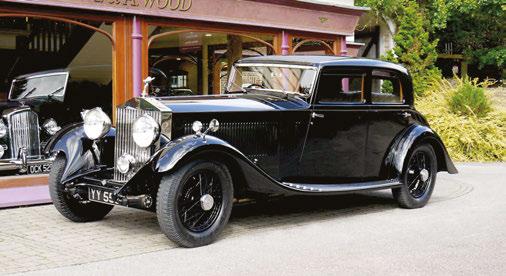
Rolls-Royce Phantom II Continental 1932 Sports Saloon by Park Ward
Black with Beige hide upholstery. Restored to a high standard.
Recent mechanical work carried out by P & A Wood. Very elegant and sporting coachwork.
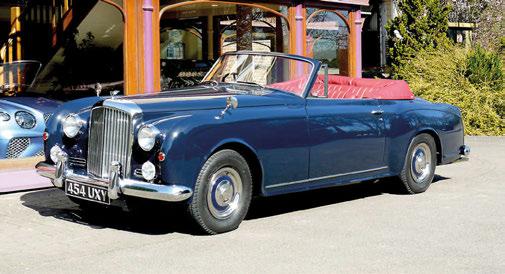
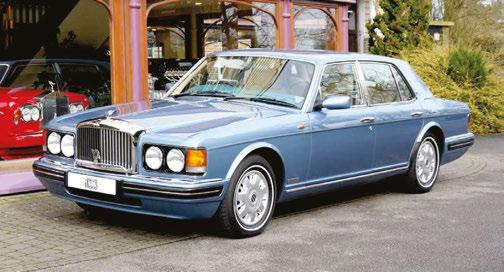
Bentley Brooklands LPT April 1997

Aegean

Rolls-Royce 20HP 1928 Brougham de Ville by Brewster
BGarnet and Black with Black Leather wings. Very unusual and attractive coachwork with very low mileage. Original and unrestored.
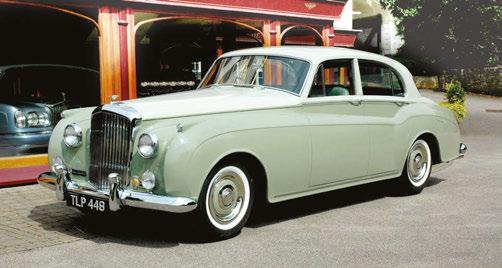
Light
Restoration by P & A Wood in 2005 to concours condition. Previous award winner at RREC Annual Concours.
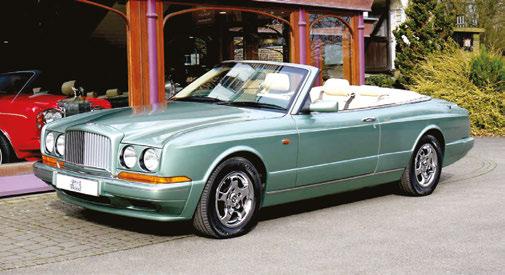
Bentley Azure August 1996
Aurora with Green hood and Magnolia hide contrast
Only 34,000 miles with full history. Maintained by P & A Wood for many years. Very attractive and rare colour scheme. Excellent condition.
Great Easton, Dunmow, Essex CM6 2HD, England
Telephone: 01371 870848 Fax: 01371 870810
E-mail: enquiries@pa-wood.co.uk www.pa-wood.co.uk

artist, co-founder of a videogame studio making Guitar Hero Live, and creator of Mille Miglia trophies shows his favourite things

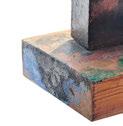












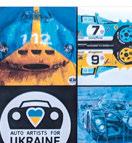



1. The carefree 1970s allowed me to bash nails into wood at nursery, creating my first wooden sculpture, which I’d love to claim was inspired by the airbox of a 1970s F1 car. It reminds me daily to keep doing what I love doing most.
2. Fast-forward to 2009: I bought an original, numbered JPS Lotus Europa Special from October 1972. The roundel celebrates Emerson Fi ipaldi’s World Championship win. It was a non-runner advertised by Paul Ma y, but the paperwork showed it had been serviced in my hometown. The classic car gods had spoken…
3. I love black numberplates, and DNP 235H is a treasured memento of my 1970 Lamborghini Espada in which I toured to Italy in 2018. The current Dutch owner gave me this to keep.
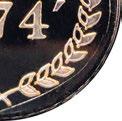







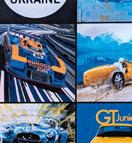



4. The flamboyantly fast Gilles Villeneuve was my childhood F1 hero, and this old 1:12-scale model of his elegant 1979 Ferrari 312T3 F1 car takes pride of place in my collection. My models take up too much space, but my excuse is that they’re a reference library for my work…
















5. FreeStyleGames, the videogame studio I co-founded, started out to make car racing games. However, our first release was ‘cult classic’ breakdancing game B-Boy in 2006. Our 20-person studio even had a crash course in how to breakdance! The videogame I’m most proud of is our BAFTA-nominated DJ HERO in 2009, complete with its unique turntable ‘joystick’ peripheral. The BAFTAs were fun, too.
6.The charity initiative co-founded by Adam Gompertz and myself featured 100 artists and raised over £55,000 for Red Cross relief for Ukraine in 2022 via social media, with help from Driven Chat Podcast, Goodwood and others.

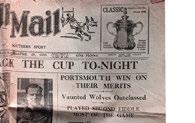
7. My grandpa was a proud Portsmouth FC fan and kept this 1939 newspaper for me from the day ‘we’ won the FA Cup. Portsmouth retained the cup for a record six years (due to WW2). The Football Mail came out at tea-time each Saturday, printed on pink paper, and was the last sports newspaper in the UK until it ended publication in 2022. I’m still a proud Pompey supporter and this scru y old newspaper is a fond reminder of my grandpa’s generous soul.
8. The sculpture I am most proud of was created for the Octane award at The Quail, A Motorsport Gathering in 2017, featuring a complex shaped single thinned section of oak that was bent and twisted using steam.




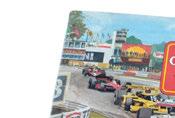





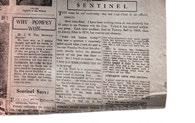










9. Many 1970s F1 drivers wore their own endorsed sunglasses, becoming mobile advertising billboards. These two Jacky Ickx branded pairs by R Sontonax are top of my collection / reference library, which also features pairs ‘by’ Jo Si ert, Jackie Stewart, Fi ipaldi, Lauda and so on.
10. I saved up book tokens to buy this: a small book, big on childhood inspiration. It showed cars from all types of motorsport, the circuits, and the bold graphics of the helmets (designs that lasted a career, unlike now). It featured the Grand Prix cars of 1978, the last year when each car was a vastly di erent shape from the others.

THE EX-1928 R.A.C. INTERNATIONAL TOURIST TROPHY CLASS WINNER - ‘WK 7162’
Chassis 60/4 is recorded as the fourth Brooklands built & was therefore assembled by Thomson & Taylor (Brooklands) Ltd
1928 R.A.C. International Tourist Trophy, Ards circuit, Belfast - class victory driven by K.S. Peacock ‘WK 7162’ boasts a documented Brooklands competition history from 1928 to 1934 Expertly restored & eligible for the Mille Miglia, Le Mans Classic, Goodwood Revival & VSCC
Words by Delwyn Mallett
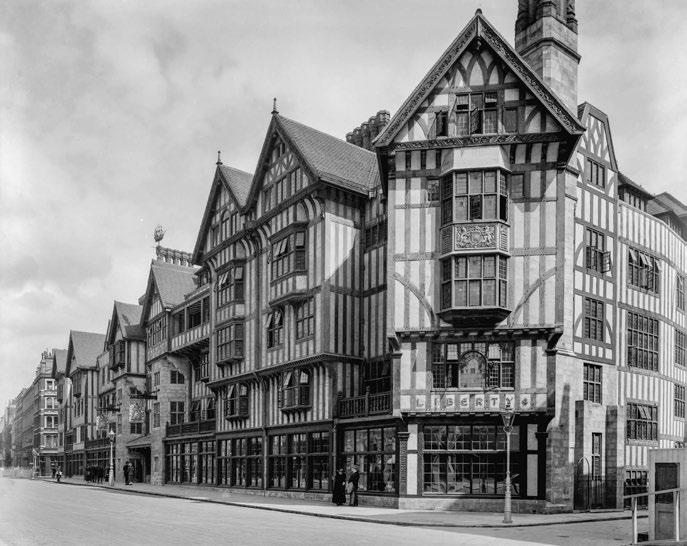
A style leader, housed in a building that was ironically old-fashioned
LIBERTY’S ANACHRONISTIC halftimbered store on London’s Great Marlborough Street has to be one of the more impressive examples of recycled industrial salvage. It opened in 1924, masquerading as a Tudor mansion and derided by architectural critics, but it’s also much photographed by tourists, of whom many must think it was once a royal abode.
The timber framing, lots of the interior woodwork and the floors were repurposed from two 19th Century Royal Navy battleships. The craze for mimicking the timber-framed dwellings of the Tudor period was sweeping the nation, to the despair of social commentators. It therefore seems perverse to have chosen to park a halftimbered building abutting the classical Portland Stone sweep of Regent Street. Originally planned to occupy a Regent Street site, not unsurprisingly it was turned down by the Crown Estate and the adjacent Libertyowned site on Great Marlborough Street was substituted, resulting in what appears to be two quite different shops.
Responsibility for the decision to commission a building in a style that harked back 400 years lay with board director John Llewellyn. Liberty had a reputation based on
being up-to-date and a fashion leader and this construction wilfully ignored the emergence of Modernism in Continental Europe.
That’s all the more surprising because Llewellyn, who joined the company in 1889, had been in charge of the silk department and steered its wildly successful printed fabrics that helped forge the company’s international reputation for innovation and modernity. The fact that Llewellyn lived in a Tudor recreation with a genuine 16th Century interior transplanted from a monastery may have coloured his judgment. He also argued that Arthur Liberty, the company founder who had died in 1917, was an admirer of the Tudor period and would have approved.
Having made the decision to ‘go Tudor’, Liberty purchased two pensioned-off Royal Navy ships of the line (a kind of suicidal tactic in which, broadside-on to an enemy ship, you blasted away, with the odds favouring the ship with the most guns). The 80-gun HMS Hindustan was launched in 1841 and HMS Impregnable (formerly HMS Howe) in 1860. Impregnable alone consumed 3040 100-yearold oak trees felled in the New Forest.
In all, 24,000cu ft of timber was used in the store’s construction, much of it fashioned by Liberty’s own furniture craftsmen. Whether
Left
As it opened in 1924, the Great Marlborough St facade of Liberty’s new store, designed by Edwin T Hall and E Stanley Hall.
by chance or design, the store frontage coincided with the length of Impregnable In 1874, after ten years working for Farmer & Rogers’ Oriental Warehouse on Regent Street, the 31-year-old Arthur Lazenby Liberty was rebuffed in his wish to become a partner in the business. Farmer & Rogers’ was a favourite haunt of the Pre-Raphaelite painters, some of whom were close friends of Arthur. Pledging their patronage, they encouraged him to open his own shop. With a strong conviction that, given the chance, he could ‘change the look of fashion and interior decoration’, he borrowed £2000 from his intended father-in-law and took over the lease of half a shop on the opposite side of Regent Street.
Liberty & Co opened for business on 15 May 1875 with four staff, including Arthur. Within 18 months he was able to repay his father-in-law and soon took over the lease on the adjacent half-shop. Farmer & Rogers’ had ceased trading, which must have provided Arthur with a satisfying surge of schadenfreude.
More than merely a purveyor of fancy goods from the Orient, Liberty rapidly became an artistic and design hub for the fashion-conscious well-to-do of London and beyond, producing its own fabrics and furniture and offering fashions from leading designers, becoming pioneers in liberating women from their whalebone-reinforced prisons. Liberty’s influence spread so far that in Italy the term Stile Liberty became the common title for its version of Art Nouveau. Liberty opened a Paris store in 1890 and, to the irritation of some French fabric manufacturers, Liberty’s ‘Art Silks’ were such a hit that soie Liberty was used as a generic term for soft fabrics. The shop gradually became the toast of fin de siècle Paris.
Favoured hangout of man-about-town
Oscar Wilde and London’s Beau Monde, The Café Royal was a short sashay along Regent Street from Liberty and, before gaining fame as a playwright, Wilde spent several years as editor of the influential The Woman’s World magazine. He declared that ‘Liberty’s is the chosen resort of the artistic shopper’, a position it maintained through the Edwardian period up to World War One.
When Arthur Liberty died in 1917, having been knighted and become a wealthy man with a country estate, he was much fêted in the world of the arts, and had achieved his wish to alter fashion and interior design. Liberty fabrics remain as notable today as they did when he first introduced them.
T-shirts, sweatshirts, prints and more. Inspired by art, design, sport and good times. See them all at www.t-lab.co.uk



WWW.T-LAB.CO.UK



by Mark McArthur-Christie
THERE ARE MORE myths about watches and water-resistance than there are fake Newman Daytona dials. Read the forums and you’ll believe the lump of solid stainless steel and bulletproof sapphire crystal on your wrist is the horological equivalent of a Fabergé egg. ‘You can’t swim in anything rated under 200m – there’s too much water pressure when you move your arm!’ ‘You can’t wear a diving watch in a sauna! The seals will fail with the heat!’
As someone who’s regularly committed the apparently mortal sins of wearing a watch in the shower (‘Soap destroys the gaskets!’) and pool-swimming in one rated to only 30m (‘You need at least 100m!’) without bother, I wanted to debunk a few of the myths around watches and water-resistance. So I talked to Boris Ankli at Doxa. Doxa has been making serious diving watches since 1967 and Jacques Cousteau wore one, so its people should know a thing or two.
If your watch is safe around water (some just aren’t), you’ll usually see a water-resistance rating on your watch caseback: typically 30m, 50m, 100m or 200m. Different depth ratings mean different types of construction, as Ankli explains. ‘It’s down mostly to the thickness of the components: glass, caseback, crown tube and gaskets. We also add safety elements to our watches, for example a screwed ring over the glass in order to secure it tightly in place.’
But it’s not simply about building a watch that’ll survive the nearly 20bar of pressure at 200m down; it needs to get there first. Ankli again: ‘It’s harder to have a watch be watertight in 10cm of water than three metres. That’s because there is not enough pressure to make the components press on the gaskets, so the water could sometimes infiltrate between the two components.’ Water-resistance is as much about precision and fit as heavyweight componentry.
If that’s the case, what about swimming in a 30m rated watch? Ankli’s answer is refreshingly bunk-free: ‘Yes, you can surface swim. A rating of 30m means that it’s supposed to be water-resistant up to 30 metres.’ This then raises the forum favourite of ‘dynamic pressure’, the notion that the action of swimming increases pressure on the watch and can breach the gaskets. Ankli’s response is typically, refreshingly robust. ‘To


us, the water pressure thing is not true,’ he says matter of factly. How about screw-down crowns? The Rolex ads of the 1980s always said the Submariner’s ‘Twinlock’ crown ‘works exactly like a submarine’s hatch’. In fact, water-resistance has more to do with gaskets than the crown screwing in tightly to the case. Ankli explains: ‘A screw-down crown in itself doesn’t make a lot of difference. Yes, it can add waterproofness but that’s because it enables you to add one more gasket that will seal the crown tube.’ The real function of a screw-down crown is to stop the crown moving – and so letting water past the gaskets – when you’re underwater.
Finally, that ‘can’t wear it in the sauna’ line. Part of Doxa’s battery of water-resistance tests is to heat its watches to 70°C and then apply cold water to the glass. If there’s condensation on the inside of the crystal, the watch isn’t water-tight. Given that’s around the temperature of most saunas, you’re probably OK wearing your watch; it’s almost certainly a lesser risk than leaving it in a locker to get stolen.
No matter the myths, having a properly water-resistant watch on your wrist is a smart thing to do, particularly as we’re heading for another classic British summer. We’d recommend at least 30m: that should keep the worst of the rain out.
You’ll be glad you bought one when you did
AT BASELWORLD back in 2017, Seikoholics got a proper treat; the firm released two limited editions of their Prospex dive watches: the SRPB09 Samurai, and this, the SRPB11 Blue Lagoon Turtle. It used the 4R36 movement, self-winding thanks to Seiko’s bi-directional ‘magic lever’, 41-hour power reserve, and running at 21,600bph. Being a Seiko diving watch you can throw away your torch, too; you’d struggle to find brighter lume on a watch.
There were only 6000 worldwide and, at less than £450 in the UK, they flew off shelves. Unlike most cheaper Seikos, these have headed upwards so today you’ll get around £100 more than you paid.
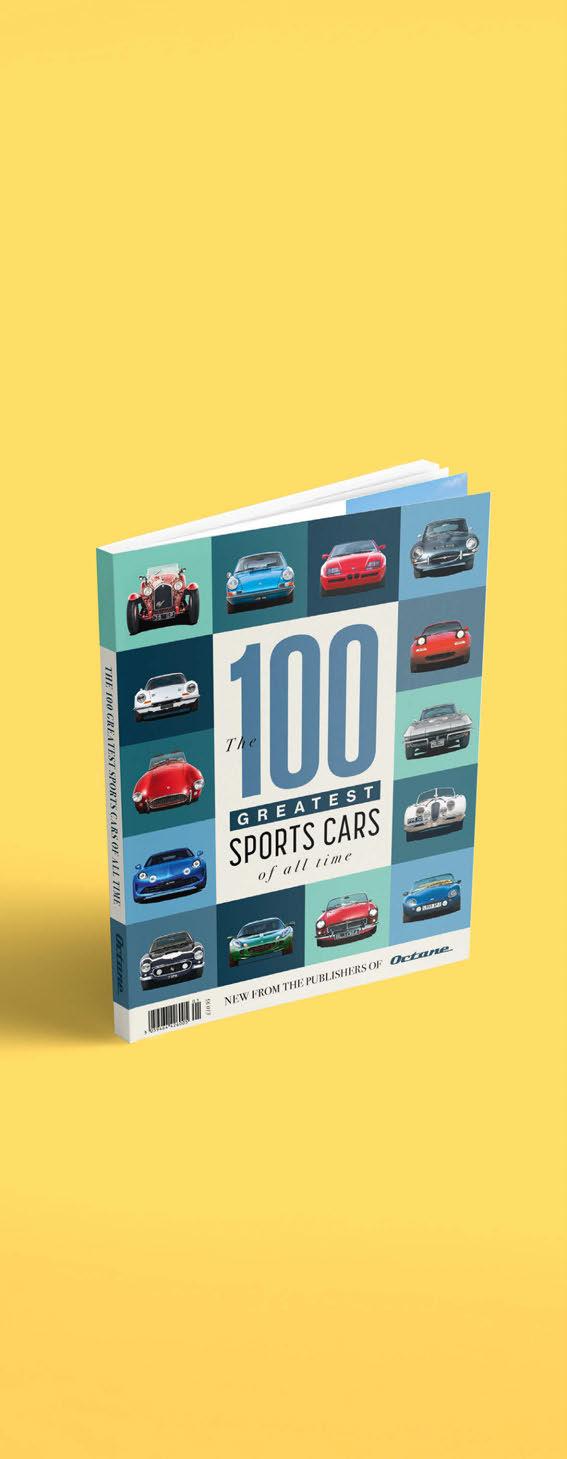

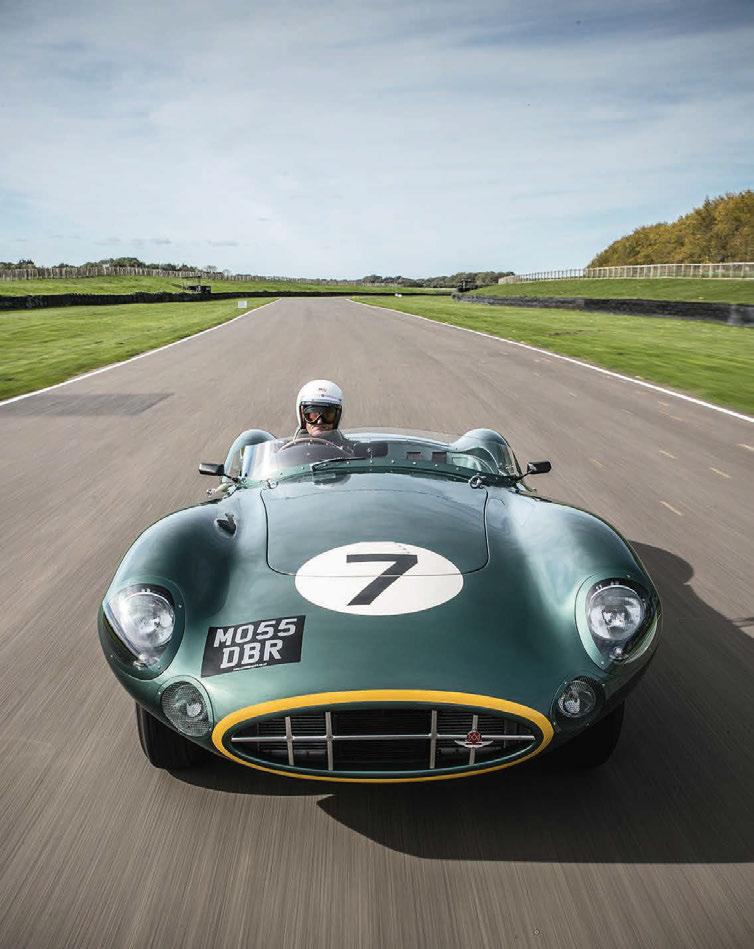

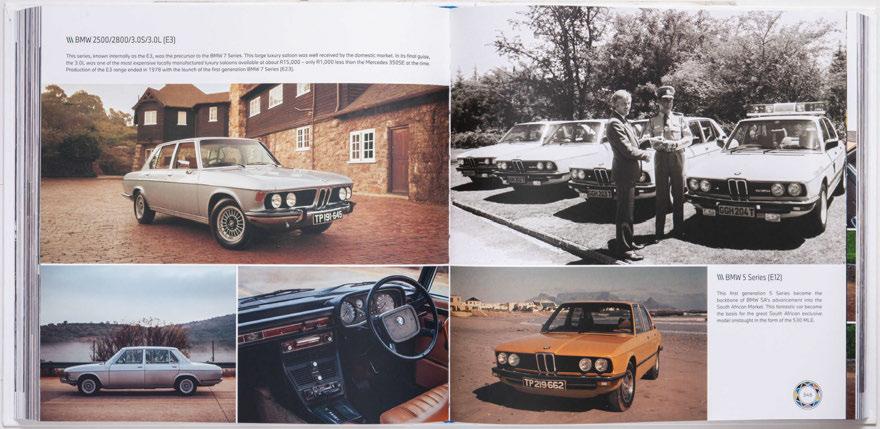
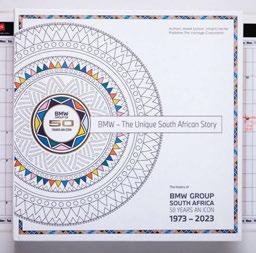
MAREK LETOWT and JOHANN VENTER, The Vantage Corporation, £144 plus shipping (see text), ISBN 978 1 234567 89 7
As anyone familiar with the writings of Robert Coucher in this magazine will already know, there are a lot of petrolheads in South Africa – but it still comes as a surprise to learn that the country’s BMW M Fest, held at Kayalami circuit every two years, is the largest of its kind in the world.
But then BMW has a very strong association with South Africa. The first BMW factory outside Germany was opened there in 1973, and it introduced an M-badged car – the ’76 530 MLE (Motorsport Limited Edition) – three years before the parent country’s M1. There was a string of BMW models unique to South Africa from the late 1960s, including the 1980s SA-spec 745i, the only 7-series to have an M Sport M88 engine.
This huge slipcased volume runs to 600 pages and covers what seems to be every possible aspect of BMW’s history in the country. It begins with a German immigrant called Gunter Ludwig, who arrived there in 1931 with his prize possession, a BMW R47 motorcycle. Becoming SA’s only
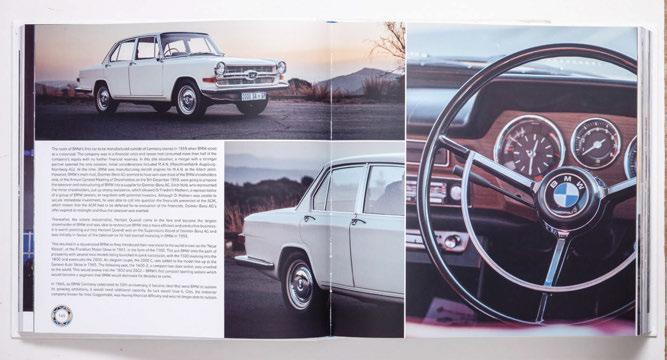
concessionaire for the brand, he sold the first new BMW bike in 1932. His business, Club Garage, moved into importing Isettas and Glas cars post-war, and then Gunter became part of a new company set up to build Glas-bodied BMW 1800s locally from June 1968. After that, things moved rapidly, notably with the 2500/2800/3.0 and the first-gen 5-series, as pictured above.
Before getting into the meat of all the various SA models, however, the book contains interviews with the succession of BMW managers shipped in to run the SA outpost; remarkably, it wasn’t until 2021 that a South African, Peter van Binsbergen, was appointed as CEO. One senses an occasional disconnect between the buttoned-up board members in Munich and their distant compatriots, who all seem to have fallen in love with their new posting and realised its unique requirements. Tim Abbott, CEO 2014-2020 and a Brit, recalls playing an April Fool’s joke by pretending to have bought a luxury office in Cape Town without authorisation. His German finance director summoned him to a 9am meeting, tore up his email in front of him and said he would be reported.
Literally dozens of BMW SA production car types are detailed, including those from aftermarket tuners and even the unique SA-spec Land Rover Defender 2.8i; plus everything used in motorsport from the early 1970s onwards. Then there are driver profiles, BMW art cars, and a fairly hefty section dedicated to the company’s corporate social responsibility and cultural engagement.
As you can see from the sample spreads here, images are used generously large and the overall design is bold and clean. The volume’s sheer size means shipping can be expensive, so email johann@vantagefineautoart.com to discuss the best way to do it. A Limited Edition of just 333 books is also available, priced at £324 each.
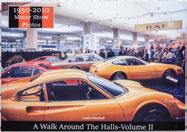
Selected from the author’s collection of 5000 amateur photos taken at motor shows, this follow-up to volume one (1960-1989) broadens the timeline to 1950-2010 and spans the globe, with shows ranging from Tokyo to New York, Geneva and more. The quality of most images in this compact softback is actually pretty good (a few look too good to be amateur snaps) and you’ll find some very rare cars among the betterknown exhibits, such as the one-off Bertone Borgward Hansa at Turin in 1952.
LEWIS MITCHELL, Motor Show Publishing, £19.95, ISBN 978 1 0369 0925 3

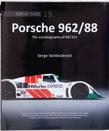
Porsche 962/88
The Autobiography of 962 011
This is the 19th in Porter Press’s Great Cars series, each dedicated to a particular chassis, and the Porsche 962 that’s the subject here really is one of the all-time greats: it raced 46 times and won outright nine times over a five-year period, including taking the 1989 ADAC Supercup in Germany. There’s a huge amount of info contained within its 320 pages, including chapters on its drivers, detail about every race, livery artwork and much else. It’s a quality production.
SERGE VANBOCKRYCK, Porter Press Int’l, £69, ISBN 978 1 913089 89 4

A Walk Around the Halls vol II Fast, Faster, Fastest The Bill Sadler Story Morgan Three-Wheeler

Given the title, you hardly need the explanatory subhead, and what a treat this is for fans of 1980s Eurotrash excess with no fewer than 24 German tuning and modifying companies individually profiled. Many of them will be at least vaguely familiar to UK readers – Irmscher, Brabus, AMG –but others much less so; how about Nothelle, for example? Rolf Nothelle’s ‘art director’ was also his hairdresser (you couldn’t make this up), who customised an Audi quattro by retrimming it in blue leather with seat bolsters sprayed matt silver and then scoured to a rough matt finish.
The author was born in West Germany and recalls as a child being in two minds about the value of a Koenig Testarossa Competition Bi-Turbo in the German version of Top Trumps: unbeatable performance stats but, as he thought then, ruined styling. Since then he’s come to appreciate the sheer exuberance of this Breitbau (wide body) era much more, and the popularity of RADwood and similar events shows that he’s far from alone. Some of the tuners featured have notable back stories – Gerhard Oettinger launched his first Okrasa performance package for VW Beetles in 1951 – while the engineering excellence of others led to them being officially recognised as independent car manufacturers by the German Federal Government.
The subject matter has been given Waft Publishing’s usual super-stylish design treatment, although that does mean the chosen text font is a little hard to read. It’s worth the effort.
CHRISTOPHER BUTT, Waft Publishing, €120, ISBN 978 9 464590 06 7
With just five of its 96 pages devoted to the 3 Wheeler and Super 3 models of the 21st Century, this attractive little book focuses very much on the pre-war cars, blending archive and contemporary pictures to tell their story. The V-twin JAP-engined three-wheelers are the ones that everyone remembers, but a variety of other power units were used, not least the Ford sidevalve four that powered the underrated F-series of 1930-1952. With excellent paper, print and design, this softback is great value.
STEPHEN CLARK, Amberley Publishing, £15.99, ISBN 978 1 3981 1811 9
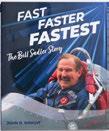
Dalton Watson books are always superbly produced and this biography of Canadian racer, inventor and car designer Bill Sadler is no exception. It’s absolutely stuffed with fabulous period pictures, ranging from Sadler’s first race car – a 1953 Hillman Minx fitted with a flathead Ford V8 – through to more recent years in historic racing; his beautiful Sadler sports-racers have appeared at Goodwood and many other circuits.
A natural engineer – Sadler designed and built his own fuel-injection system for a Triumph TR2 engine as early as 1954 – he had an intermittent second career in aviation, too, including a late-’60s spell with General Dynamics that reputedly involved working at the infamous Area 51 (sadly, not detailed here) followed by a period in the 1980s making ultralight aircraft.
But it’s for his cars that he’ll be remembered (he died in 2022), particularly in Formula Libre and Formula Junior –author John R Wright has done him proud.
JOHN R WRIGHT, Dalton Watson, £85, ISBN 978 1 956309 03 4
Compiled by
Chris Bietzk and Sophie Kochan
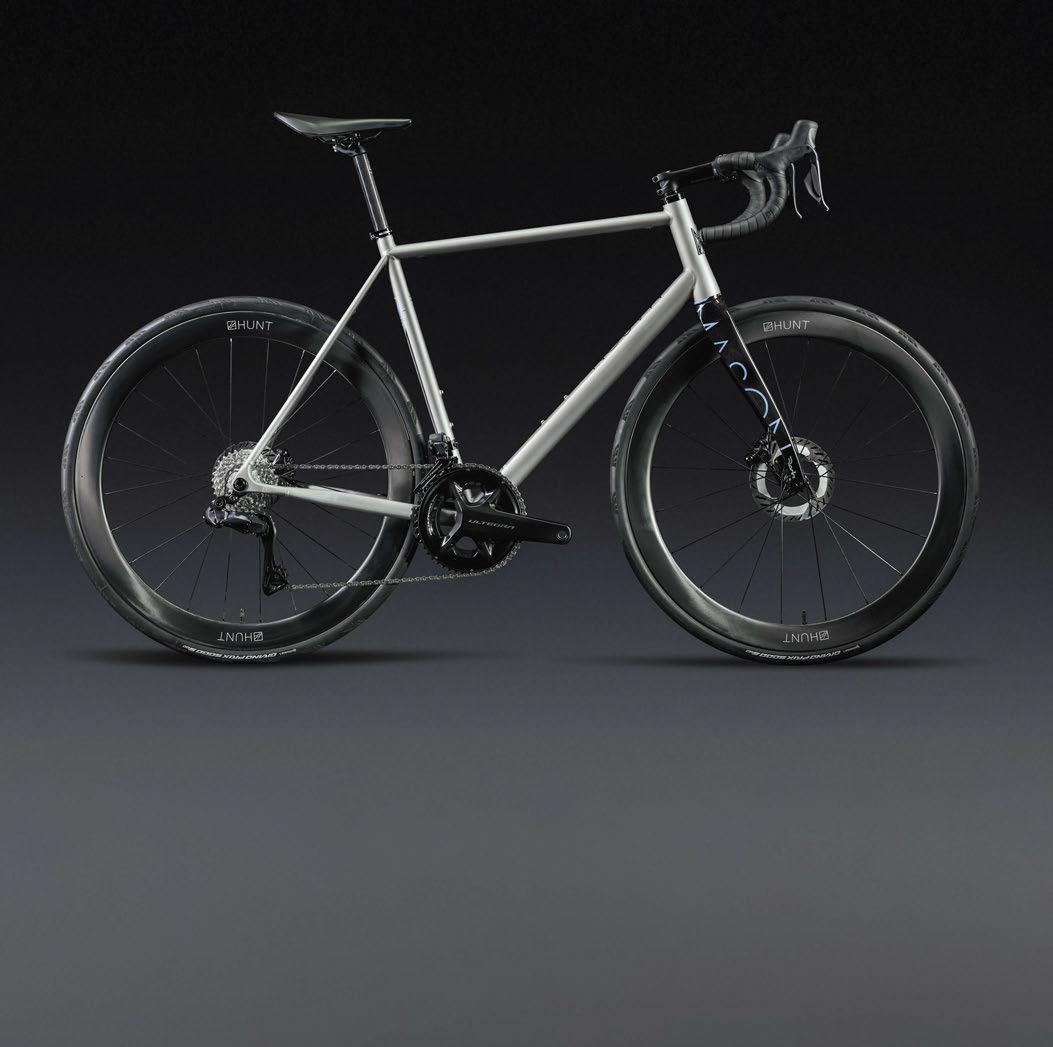
The titanium-framed, all-road Aspect was conceived, like all Mason bikes, in a converted barn in West Sussex, but company founder Dom Mason had to look overseas for a framebuilder able to execute the design to his satisfaction. ‘Titanium is a tricky metal to work with, and some of the details required really intricate welds.’ It took more than two years to find a builder – a small outfit in Tuscany – that was up to the task. The end product was almost impossible to fault, but some fusspot customers expressed an aesthetic preference for fully integrated cabling, and now they’ve got it, along with refined chainstays and seatstays, and geometry tweaked to deliver a sportier ride. Frameset only £4000; complete from £6200. masoncycles.cc
The latest addition to Hot Wheels’ premium ‘Elite 64’ range is a model of the magnificently impractical M6GT, Bruce McLaren’s shortlived (just three prototypes were built) supercar based on the M6B Can-Am racer. £24. uk.creations.ma el.com

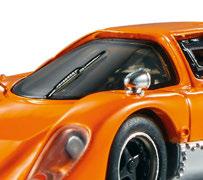



Promising greater realism, of course (the makers have gone as far as to record the engine note of team bikes), but also lots of da fun in arcade mode, plus new mini-moto and flat-track racing games. From £44.99. game.co.uk
A smart take on the browline design that dates back to 1947, but which came roaring back into fashion in the mid-1980s courtesy of Bruce Willis and Moonlighting. The sunglasses worn by his character, PI David Addison, turned out to be one of the breakout stars of the hit TV show – along with the BMW 635 CSi driven by Cybill Shepherd’s character, Maddie Hayes. £290. uk.tumi.com






It was 75 years ago that French entrepreneur Marcel Bich introduced the Bic Cristal, the world’s best-selling pen. As a dirt-cheap and disposable alternative to the other, more expensive ballpoint pens of the day, it would likely have succeeded without help – but it certainly didn’t hurt that Bich had the support of genius poster artist Raymond Savignac, who produced this ‘It runs and runs’ design in 1951 before going on to create the famous ‘Bic boy’ character a decade later. AUD $4000. vintagepostersonly.com




















A welcome departure for Mondaine, the brand known for making watches in the image of the iconic, Hans Hilfiker-designed Swiss railway clock. The 41mm Doppio Solar has a novel dished dial and a well-thoughtout handset, and a er being fully charged – by natural or artificial light – the watch will keep ticking for around eight months. £399. uk.mondaine.com
Jarro s, known for its huge archive of motorsport images, is now o ering items of racing memorabilia, too, and this one is a doozy: the gearknob from the Rob Walker Lotus 18 that was driven to a stunning victory in the 1961 Monaco GP by Stirling Moss. The knob was removed following the race by Stirling’s mechanic, Alf Francis, and was subsequently engraved and mounted as seen here. £POA. jarro s.com


Heel Tread last appeared in these pages when it designed a pair of socks featuring an array of notable Citroën 2CVs and 2CV variants, and the company has now produced a similar pair of socks for Mini fans. Look closely and you’ll spot everything from Monte Carlo Rally winners to a Moke and Mr Bean’s mop-actuated runabout. £12. heeltread.com



Focal has upgraded its high-end wireless headphones with more comfortable pads, improved active noise-cancelling technology, and, as the name (almost) suggests, magnesium drivers for a more precise and engaging sound than before. £999. focal.com
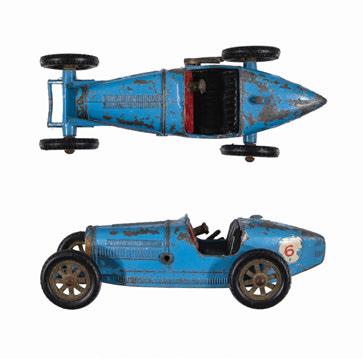
Mint-in-box might be what many collectors want, but we love old model cars with a few war wounds, as does London-based collections photographer Ian Lillicrap. Between assignments for galleries and museums, Ian has been taking pictures of play-worn vintage toys, and his memory-stirring images are now available to buy as fine art prints, with sizes starting at 14x14in.
From £360 (framed). photomerchant.art







Omologato hits double figures this year, and to celebrate it has produced a special edition of its 41mm Arnage 24hr GMT model, with an engraved caseback and a sunray dial intended to call to mind a friendly morning sky over the Circuit de la Sarthe. £795. omologatowatches.com






The Speedsport Gallery at Silverstone Circuit has turned up an a ractive watercolour by the great Géo Ham, who produced so many memorable posters for race meetings in the mid20th Century. The painting, which is roughly 13in tall, is an early version of the artwork that was used to promote the Pau Grand Prix in the early 1950s; that quickly sketched area on the top right is the most recognisable part of Pau’s town centre, where the Boulevard des Pyrénées o ers a knockout view of the mountains. £2750. speedsport-gallery.com














Built by Alfa Romeo dealers the Jankovits brothers in the 1930s, the 6C 2300-engined Aerospider began life, so the story goes, as an o -the-books, experimental GP car developed on behalf of revered Alfa engineer Vi orio Jano. That’s a long way from being proven fact, but what’s certain is that the mid-engined Aerospider was one of the most unusual cars of its time, and its arresting design has been nicely captured here by Tron. £190.70. grandprixmodels.com



Edited by Matthew Hayward

CCA scores eight world record prices during its restoration show auction
IT MIGHT NOT have been an especially quiet month in the world of international politics, or the financial markets – you can read more about tariffs elsewhere – but there has been quite a lull in big, blockbuster international sales following on from Amelia Isalnd in March. Closer to home, results from the Classic Car Auctions by Iconic Auctioneers sale made for interesting viewing, with a £2.5million total and an 85% sale rate.
Those are solid numbers, but dive deeper into the results and a total of eight world record auction prices show that some aspects of the market remain in rude health. Five of those records came under the banner of ’80s hot hatches. First up was a 1989 Ford Escort RS Turbo, a 5673-mile car that achieved £50,625. A low-mileage fast Ford might have been a sure thing, but perhaps more of a surprise was the pair of Fiats pictured above. A rare UK-market 1985 Strada Abarth 130 TC made £20,250, while the beautifully restored 1988 Fiat Uno Turbo i.e. achieved an even more impressive £30,375. In the French corner was a 1989 Renault 5 GT Turbo
Raider at £25,875, and finishing up the group was a fully restored Volkswagen Golf Mk2 GTI 16V taken away for £37,688.
Other sale highlights came in the form of a pair of Land Rover Defenders – one a 1992 ex-Camel Trophy Defender 110 for £34,875, and the other a 2010 Defender 90, originally supplied new to King Charles III, bringing in an above-estimate £67,500.
On a topical note, given our cover story, Dore & Rees sold a 1973 Aston Martin V8 for £78,400, which was one of the more successful Astons in the sale. A 1991 Virage failed to sell, as did the 2013 Aston Martin Bertone Jet 2+2 shooting brake–although this is now offered via private treaty. Manor Park Classics continued to rack up a number of strong modern classic results in its April auction, one of the most appealing being a 1999 Lotus Esprit GT3 at £29,325. The glorious-looking 1973 Audi 100 S Coupé seemed great value at £12,000 but, yet again, ’80s and ’90s hot hatches proved popular, especially a fun-looking 1997 Peugeot 106 Rallye at £14,088. Matthew Hayward
£7,330,643 ($9,465,000)
1955 Ferrari 375 MM Berlinetta Gooding & Company, Amelia Island, Florida, USA, 7 March
£7,330,643 ($9,465,000)
1959 Ferrari 250 GT LWB California Spider Competizione
Broad Arrow Auctions, Amelia Island, Florida, USA, 8 March
£4,689,598 ($6,055,000)
1989 RUF CTR ‘Yellowbird’ Gooding & Company, Amelia Island, Florida, USA, 7 March
£3,454,270 ($4,460,000)
1971 Lamborghini Miura P400 SV
Broad Arrow Auctions, Amelia Island, Florida, USA, 8 March
£3,326,478 ($4,295,000) 1954 Jaguar D-type ‘OKV 2’ Works Competition
Broad Arrow Auctions, Amelia Island, Florida, USA, 8 March
£2,838,543 ($3,665,000) 1990 Ferrari F40 Broad Arrow Auctions, Amelia Island, Florida, USA, 8 March
£2,644,918 ($3,415,000) 2018 Pagani Huayra Roadster Broad Arrow Auctions, Amelia Island, Florida, USA, 8 March
£2,048,553 ($2,645,000) 1997 RUF CTR2 Gooding & Company, Amelia Island, Florida, USA, 7 March
£1,963,358 ($2,535,000)
1963 Ferrari 400 Superamerica Series II Coupé Aerodinamico
Gooding & Company, Amelia Island, Florida, USA, 7 March
£1,897,525 ($2,450,000)
1968 Lamborghini Miura P400 S Gooding & Company, Amelia Island, Florida, USA, 7 March
It’s early days since Trump’s tari proclamation: watch this space
BEFORE OCTANE WENT to press, the US Government implemented tari s of 25% on the import of foreign-made vehicles, with a similar tari on parts, minus some exemptions for Mexico and Canada (USMCA), planned to be rolled out in the following month. e tari s a ect the element identi ed as ‘foreign made’ and, even if the brand is not American, if the car is built there from US-made parts, the tari s won’t apply. To put that in context, according to Reuters, Detroit Free Press and Telemetry Research, some OEM manufacturers will be minimally a ected: 100% of US Teslas and parts are US-produced, 80% of Fords and 75% of Hondas; Toyota, Hyundai and Nissan sit at around 50% imported but Porsche, Ferrari, Lamborghini, Pagani, Koenigsegg and McLaren have 0% US production.
President Trump’s proclamation, signed on 26 March, prompted questions within the automotive industry on both sides of the Atlantic. For me, that translated into a week of phone calls with dealers, auction companies and collectors. ere was a feeling that things can change rapidly, international deals are being negotiated, and interested groups are a empting to lobby the US administration. ere was a strong argument for historic vehicles being made exempt. e relevant White House Fact Sheet explained that the tari s were being implemented to boost US-based manufacturing jobs and R&D spending, neither of which would be a ected by cars built decades ago. Non-US-made parts could theoretically be impacted but many classic parts would already be in the US, and the demand for new ones was unlikely to be of the level that new investment in tooling and production would be viable. at said, logical arguments may be ignored if this degenerates into a trade war.
Assuming the tari s are implemented as planned, what does this mean for the sector? European manufacturers have a very strong voice within the EU and will be doing all they can to encourage exemptions, as will British manufacturers.
For the historic trade, it could have meant a separation of markets between the US and the rest of the world, with cars much less likely to cross the border between the two. As an example, a few hundred cars in the UK Hagerty Price Guide are classed as ‘global’, so rare and important that potential buyers are likely to search worldwide for an example to purchase. In general, they are priced in US dollars, given that’s the most powerful market and the place where most are sold, and UK prices are derived from a USD/GBP exchange calculation. is has happened in the past. One case is Cuba, where the purchase and sale of post-1959 cars was unlawful until 2011 and new cars only allowed to be imported in December 2013. Before that, exotic
foreign cars were impossible to x and lost their value; there’s an iconic photograph by Piotr Degler of a Mercedes-Benz 300SL Gullwing abandoned in a yard with a banana tree growing through it (below).
As that Gullwing was ro ing in Havana, the same car a couple of hundred miles away in Florida would have been worth hundreds of thousands of dollars.
e Brexit agreement could also have divided markets, but the Covid-19 lockdown clouded the result. What we can say is that the average UK Hagerty Price Guide value peaked in summer 2020, by August the following year it had fallen by 21%, and it has yet to regain pre-Covid levels. Hagerty’s US Market Rating peaked later, in mid-2022, and has never fallen below pre-lockdown values. ere’s a correlation between UK values and general productivity, which has struggled to recover.
We may have a taste of what’s to come at the Bonhams Goodwood Members’ Meeting sale in mid-April, but that’s early days and the lots are not usually at the very top end of the market. More telling will be Broad Arrow’s Villa d’Este sale in May, then the Bonhams sales at Bonmont, the Goodwood Festival of Speed and Zoute.
e White House published a ‘proclamation’ on 3 April, stating that cars 25 years old and more would be exempt from the additional US car import tari s. at’s good news, as it means a separation of markets across the Atlantic will be less likely. e exemption doesn’t currently extend to automotive parts for older vehicles and, although a future exemption is possible, it’s not likely due to the di culty in identifying the age of parts.
e HCVA has called a seminar to discuss the parts tari . More on that soon.

Below
The Cuban Gullwing, as featured in our barn-find special, Octane 167 – from the book by Piotr Degler. See carrosdecubabook.com.

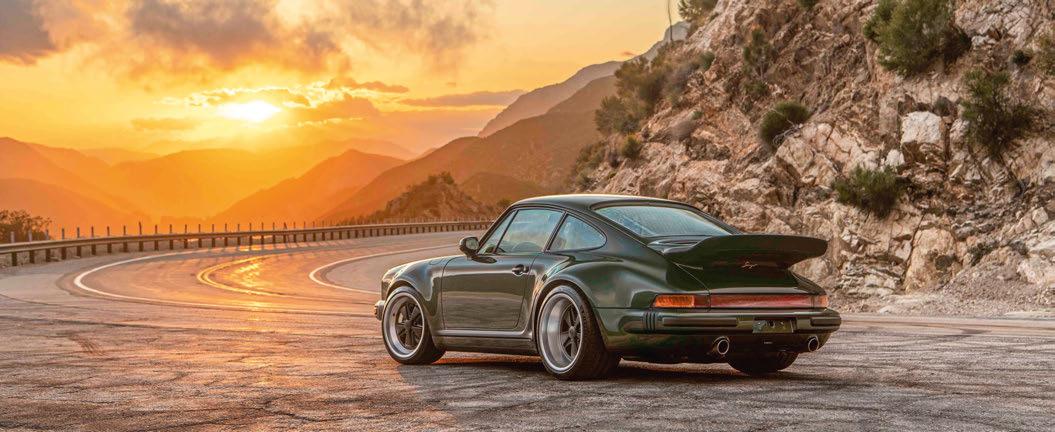
Bonhams Cars, Miami, USA
3 May
QUITE A FEW cars have earned the ‘widowmaker’ moniker over the years, but the original Porsche 930 is perhaps most legendary: they’re incredible machines, but must be given due respect. Singer’s Classic Turbo takes inspiration from the 930’s style, but offers a unique modern experience.
Like all of the company’s restomods, it’s actually based on the more modern 964 platform. This Dirty Oak Green example was the first of the series – known as the The Sun Valley Commission – and comes with a very high level of specification. At its heart is a 510bhp twin-turbo 3.8 flat-six Mezger engine.
Singer has gone to serious extremes with the brakes, offering a carbon ceramic set-up

with Brembo calipers and discs shared with the Bugatti Chiron. The suspension is completely bespoke to Singer, too, and while grip and stability are massively improved, the Singer has Bosch ABS, traction control and electronic stability control to keep everything nice and manageable.
Getting on the waiting list for a Singer is difficult enough and, with the wait for your own commission potentially several years long, it’s understandable that the secondary market has been very healthy. This example is the first Classic Turbo to be sold at auction, and has been estimated to make $1,750,0002,250,000 when it goes under the hammer at the Miami Grand Prix. cars.bonhams.com
RM Sotheby’s, Berks, UK 8 July
AS THE AGEING DB MkIII sauntered towards retirement, work on the DB4 began as far back as 1954. This is the second of two prototypes, known as DP114/2, and it was underpinned by a tubular chassis and bodywork styled in-house by Frank Feeley. After help stiffening the bodyshell was sought from Touring Superleggera, the project was abandoned in favour of a more substantial platform chassis. This prototype was used by Marjorie Brown, then-wife of the company owner, before eventually ending up in private hands. It has been restored a couple of times, most recently by Aston Martin Works. It retains the original engine and is estimated at £385,000-425,000. rmsothebys.com

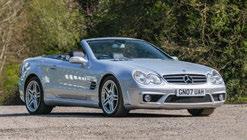
2007 Mercedes-Benz SL55 Iconic, Sywell, Northants, UK 17 May, iconicauctioneers.com
There’s something undeniably appealing about a big V8-engined Mercedes cabrio. This post-facelift R230 is fitted with the F1 Performance Pack, which includes uprated brakes, LSD, Nürburgringoptimised suspension and a ‘recalibrated’ 186mph top speed limiter. With a strong service history and 57,000 miles, it’s guided at £28,000-32,000.

1923 Bentley 3-Litre Historics, Farnborough, UK
3 May, historics.co.uk
A highly original early 3-Litre Bentley retaining its factory engine, gearbox and Open Tourer body by HJ Mulliner. A few modern additions, such as an electric fuel pump and cooling fan, add usability and, along with a recent £30,000 engine rebuild, mean it’s ready for many more years of long-distance touring. Expect to pay £120,000-160,000.
In 1896, a stone pillar was excavated in Lumbini and was found to bear an inscription identifying the little Nepalese village as the birthplace of Siddhartha Gautama – better known as the Buddha.
The discovery piqued the curiosity of William Claxton Peppé, a Brit who managed several estates just over the border in Colonial India, and he decided to have a go at being an archaeologist himself, identifying a mound in Piprahwa as worthy of investigation.
Peppé’s workers spent several weeks clearing away scrub and soil before hitting brickwork, eventually revealing a dome roof 130ft in diameter. It was not until 1898 that the team managed to dig to the centre of the structure, where they found a stone chest containing five decorative pots.
1990 Citroën ZX Rallye Raid Broad Arrow, Villa d’Este, Italy 25 May, broadarrowauctions.com
This ex-works ZX, chassis C05, was piloted by Ari Vatanen to fourth overall on its debut at the 1990 Pharaohs’ Rally. It went on to contest three consecutive Paris-Dakar events and was retained by Citroën until 2011. Restored over two years by Team SMG Challenge, it’s presented in its original Camel livery and is in excellent condition. It’s estimated to make €475,000-525,000.
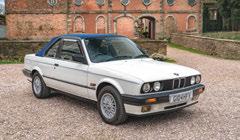
1989 BMW 320i Baur H&H, Buxton, UK 21 May, handh.co.uk
One of only 1806 factory-supplied E30 Baur Cabriolets delivered to the UK, as a slightly odd alternative to the full convertible offered by BMW at the time. This Alpine White 320i has covered a minimal 35,000 miles, and retains all the bits that normally go missing – such as the original tools, first aid kit and even the glovebox torch. It’s estimated to sell for £10,000-12,000.
The team, it turned out, had found one of eight stupas built to hold the ashes and bone fragments of the Buddha after his cremation around 400BCE.

As well as part of the Buddha’s remains, the pots contained offerings: carved semi-precious stones, beads, and flowers crafted from gold.
The authorities let Peppé keep one fifth of the offerings, and his historic haul has remained in his family ever since. Soon, though, it will be sold: Sotheby’s is set to auction ‘the Piprahwa Gems’ in Hong Kong on 7 May. The house has thus far not been inclined to speculate on how high bidding might go, but it will start at HK$10m (£1m).
Thought you’d like to know: print of The Great Wave by Hokusai (see Octane issue 262) sold for $425,000.
23-28 April
RM Sotheby’s, online
24 April
SWVA, Poole, UK 24-26 April
Barrett-Jackson, Palm Beach, USA 25-26 April
Worldwide Auctioneers, Auburn, USA
26 April
Broad Arrow Auctions, Costa Mesa, USA
Cheffins, Cambridge, UK
WB & Sons, Killingworth, UK 26-27 April
Bonhams, Stafford, UK (motorcycles)
28 April
Osenat, Fontainebleau, France
30 April
Manor Park Classics, Runcorn, UK
3 May
Bonhams, Miami, USA
Historics, Farnborough, UK
4 May
Iconic Auctioneers, Old Warden Park, UK (motorcycles) Hampson, Tattenhall, UK 9-17 May
Mecum, Indianapolis, USA
10 May
Barons Manor Park Classics, Southampton, UK 14 May
Brightwells, online 15-16 May Charterhouse, Moretonhampstead, UK
17 May
Iconic Auctioneers, Sywell, UK Morris Leslie, Errol, UK 18 May
Osenat, Fontainebleau, France
21 May
H&H, Buxton, UK 21-23 May
Mathewsons, online 22 May
RM Sotheby’s, Milan, Italy 23 May – 1 June
Hampson Marketplace, online 23-24 May
Manor Park Classics, Runcorn, UK 24-25 May
Broad Arrow Auctions, Villa Erba, Italy
30-31 May
Vicari, Biloxi, USA
31 May
Oldtimer Galerie, Lucerne, Switzerland
AUCTION DIARY IN ASSOCIATION WITH

A mix of the exotic and the everyday, the Montreal seems to be a good bet at last
BACK IN THE 1990s, I was a fully fledged Alfa Romeo obsessive with rusting semidismantled cars under tarpaulins on the driveway. At three different houses, I built sheds to contain the parts I collected; at my parents’ place was another wreck stashed in the garage. A low point was when my wife found the dishwasher stacked with oily Alfa bits. I had to accept that I might have a problem.
Alfa Romeos were cheap then, especially 105-series coupés and spiders, and the big 2600 Sprints. I owned nearly all the different variants and a few rarer Alfas, too, but one remained on my want list, always too expensive and parts too rare for me to justify: the Alfa Romeo Montreal.
You can see why it appealed to the younger me: Gandini’s sleek body combines early ’70s Italian cool with an extraordinary 2593cc V8 derived from the legendary T33 racer’s. The slatted headlamps, B-pillar grilles and turbina alloys make it instantly recognisable, and the interior, with cowled dials, big seats and that glorious wooden steering wheel, is a glorious place to be. For me, only the Lamborghini Miura came close.
The design has aged well, and still forces onlookers to stop and stare. The interior has fared a little worse, with the quirky dash binnacles and baggy fabrics not quite as cool as they could be, but one of the factors that put me off ownership in the 1990s has been
Like the AC/Shelby Cobra or Ford GT40, the flagship ZR-1 version of the Corvette C4 was a tale of Anglo-American co-operation – but without the co-operation. Indeed, books could be written on the comically rancorous culture clash between the Lotus engineers of Norfolk and GM’s Detroit home team, whose heads were bashed together in an effort to create the world’s fastest production car. Yet somehow they produced a piece of magic that today offers an entry level to supercar ownership at a price that belies its 180mph performance. Signs are, though, that the overlooked C4 ZR-1 is now gaining wider recognition, along with market momentum. Though it resembled the base C4, the ZR-1 was a different beast. At $58,995, it cost close to
double the price of a stock C, but that bought you the 375bhp 5.7-litre Lotus-engineered 32-valve LT5 V8, compared with the 250bhp of the standard C4. It came with a unique development of the ZF six-speed manual transmission, adjustable Bilstein FX3 dampers, wider rear bodywork, and exclusive badging. Just under 7000 were built, compared with approximately 358,000 standard C4s.
In 2020, a pristine early ZR-1 could be had for approximately $30,000 (£23,400), just over half its price new. Today, top notch examples sell for $50,000 (£38,600) or more, representing an appreciation exceeding 66%, with exceptional, low-mileage models recently trading upwards of $60,000 (£42,300).
That translates into a five-year average annual growth rate of about 10.8% – a considerable outperformance compared with returns of the HAGI Top Index of 5.0% annually, but lagging behind the S&P 500 average annual returns over five years of 15.1%.
rectified: parts are now easier to find. Body panels cost about twice those of its 105-series siblings, but you can maintain a Monty in road-going condition.
Although values have remained flat over the past year, the Montreal seems to be a good long-term bet with Hagerty Price Guide ‘excellent’ values having risen from £53,200 to £63,800 in the past five years and the top concours examples now over £90,000, a level they saw only during the lockdown ‘spike’. My view is that this is a model crying out for a restomod, something that has been suggested in rendered drawings many times over the past few years but, to my knowledge, never yet built.
John Mayhead
3925
2593cc 138mph
1270 kg
200bhp
When new, the ZR-1’s relatively high sticker price compared with the stock C4 gave it select appeal among the collector-enthusiast community in the US. The legacy today is that a high proportion are low-mileage and in exceptional condition. The 1993 40th Anniversary edition, of which only 245 were built (a 183-mile example just sold for $70,000), and rare colour variants (there were 25 1995 cars in dark metallic purple) command significant premiums.
Back in the day, Road & Track praised the ZR-1 as ‘one of the fastest sports cars in the world’ with ‘superior handling and braking’, while Car and Driver described the LT5’s power delivery as ‘water through a fire hose’. Today, notwithstanding its recent market momentum, it’s still a very inviting proposition in terms of bangs for bucks. HistoricAutoGroup.com


One of just 8 examples (5 UK RHD). Finished in Rolls Royce Royal Blue with Parchment and Pacific Blue hides and matching hood. Equipped with all factory V600 power, transmission, suspension, braking options and Nardi wood-rimmed steering wheel. Having covered just 3,800 miles and remaining in unblemished and concours condition, this exceptionally rare V8 Vantage Volante ‘Special Edition’, equipped with the renowned 600 bhp and 600 ft/lb’s of torque, twin supercharged V8 engine and associated upgrades, symbolises a pinnacle of Aston Martin achievement in period, being manufactured as the coach building era of production drew to a close, at the Newport Pagnell factory in 2000. This exceptionally rare and important car is available for viewing now at our Hertfordshire showrooms.

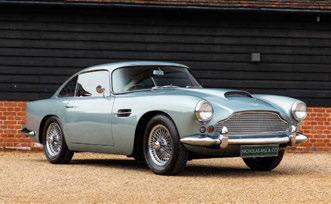
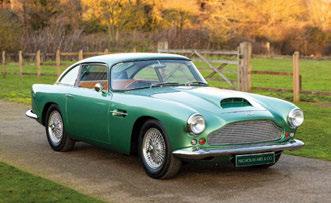
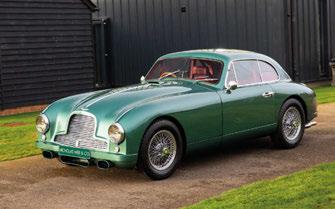
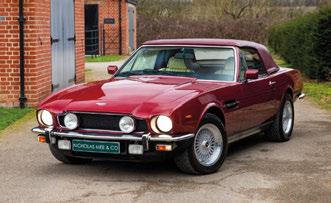
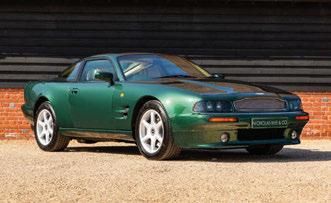




Nicholas Mee & Co Ltd, Essendonbury Farm, Hatfield Park Estate, Hertfordshire, AL9 6AF 0208 741 8822 info@nicholasmee.co.uk nicholasmee.co.uk
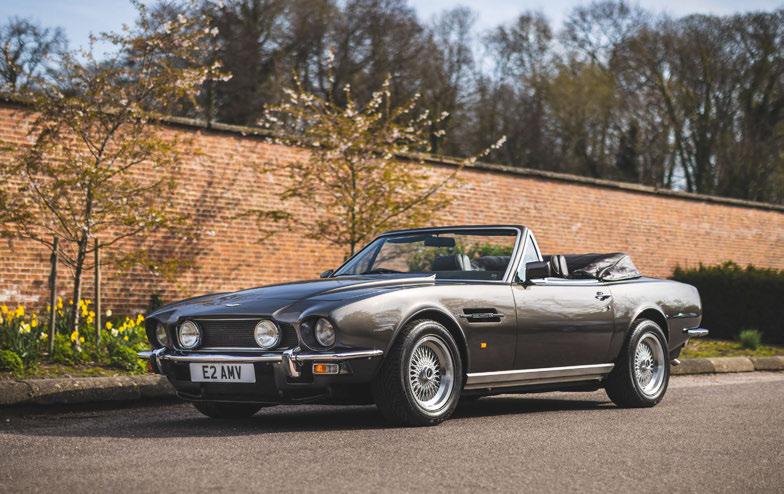
£179,000 from Aston Engineering, Derby, UK
AS YOU MIGHT have gleaned from our Spo ers’ Guide (page 60), it can be di cult to keep track of the many di erent versions of the V8 range, but there’s something special about this one. Towards the end of the production run, Aston Martin developed a new electronic Weber Marelli sequential fuel injection system, replacing the carbure or set-up. As well as being cleaner, and smoother in power delivery, it featured low-pro le intake manifolds that allowed a lower, sleeker bonnet – which is what was ed to the mechanically fuel-injected DBS V8 and very early V8 Saloons.
While there’s no such thing as the perfect spec, this must come close – especially in non-Vantage V8
Volante terms. e exterior is Cumberland Grey, just like Bond’s Volante early on in e Living Daylights is one has dark brown leather trim, a subtle combination. It’s nished o with a set of later-spec 16-inch Ronal cross-spoke alloy wheels. Aston Martin built 214 of these EFI Volantes, of which only 34 were right-hand-drive with automatic transmission. is one, o ered by Aston Engineering, has covered 69,813 miles and comes with a comprehensive history le – the most recent receipt showing a signi cant £29,000 spent to bring it up to scratch. It’s been well-maintained all its life; Aston Engineering says it has been owned by a ‘well-known TV personality’. astonengineering.co.uk
THE CLASSIC CAR market can be a mine eld, so my advice is to try to nd unusual models that are perhaps not so popular when you are looking. And never forget that you can’t part-ex at an auction, but you can at a retail outlet! ere are peaks and troughs, but the market has seen an upli globally and even the current tari wars could boost the classic car market. With that in mind, my current tips are:
• e 1970s and ’80s look good value at the moment for Italian exotica, such as Daytona, 308, Testarossa and even the beautiful Khamsin (a cracker when sorted).
• Aston Martin Vanquish, currently a gi and a be er tourer than the S variant.
• TVR ‘Wedge’ 350i: a wonderful soundtrack for the same price as a decent MGB!
• BMW Z1 – a modern show-stopper (more expensive than a 7-Series when new).
• From the ’50s the veritable Jaguar XK – stunning looks, good performance too, and amazing value, especially if you buy one someone else has paid to restore.
• 1950s-’60s Bentley Continentals are a snip, but be quick: two R-Types have sold at auction this year for €1.25m. A RHD car at £650-750k is exceptional value.

1963 AC MA-200 prototype POA
This unique factory prototype served as an engineering test-bed for the Ace’s potential replacement. It’s powered by a 4.7-litre Ford V8. acheritage.com (UK)

1981 Ferrari 308 GTSi
€79,500
A very similar spec to the car used by Tom Selleck in Magnum P.I., this well-maintained, German-registered example has covered 90,436km. mo-vendi.de (DE)

1954 SIATA 300 BC $149,500
Delightful matching-numbers example of this tiny, 1100cc Italian racer. Said to have been well-maintained throughout its life and recently restored. fantasyjunction.com (US)
FRACTIONAL OFFERS

Graeme Hunt
Set up his eponymous London classic car dealership in 2001.

2012 Lexus LFA
$20 per share
With just 500 built, and a solid reputation as Japan’s first (and so far only) supercar, the V10-powered LFA has quickly appreciated, both financially and culturally as a supercar icon. mcqmarkets.com
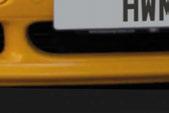
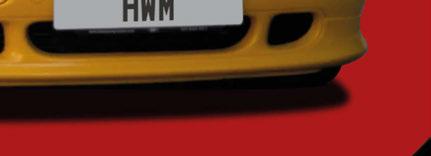
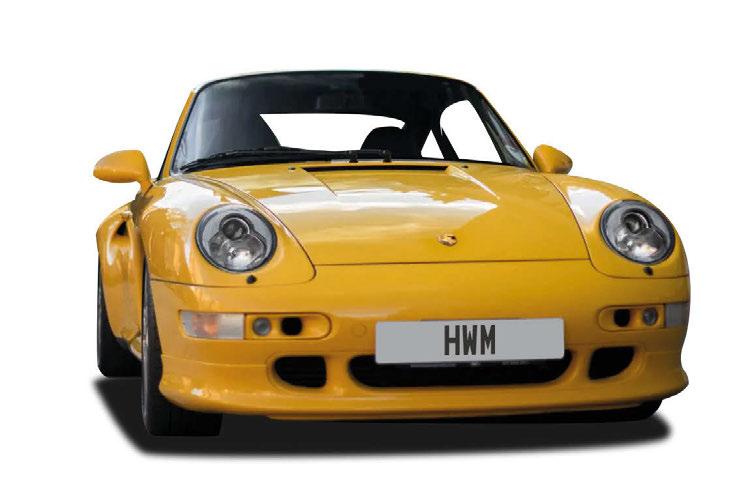
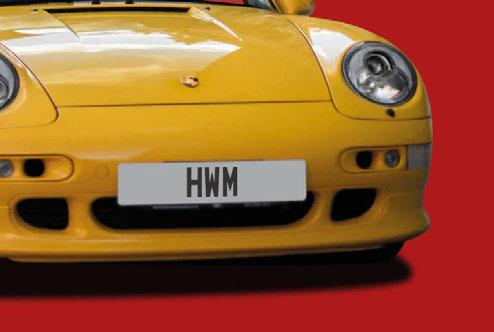
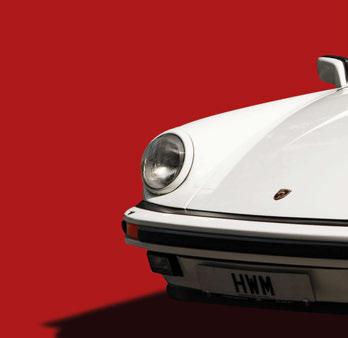





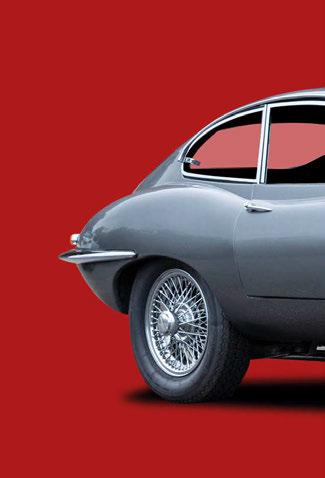

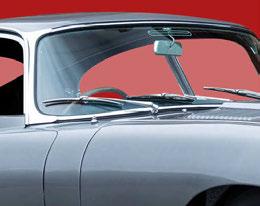















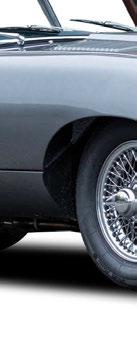

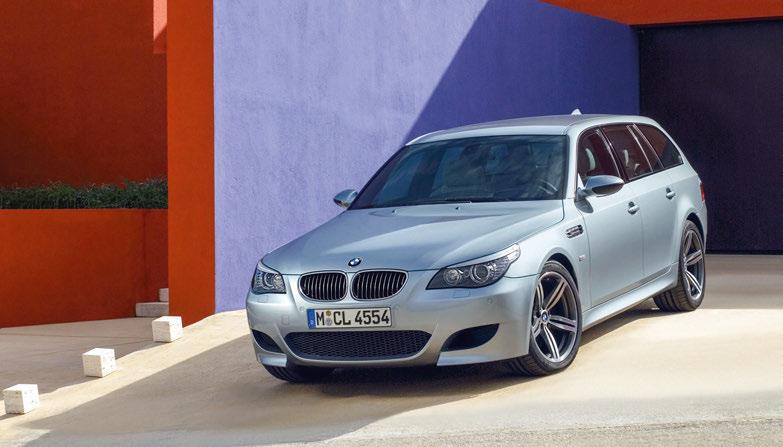
The family-friendly car with a motorsport-derived, screaming V10 engine up-front
THE IDEA OF wedging a highly tuned, naturally aspirated V10 engine under the bonnet of a four-door saloon might seem slightly silly. Bonkers, even. However, spend any time behind the wheel of an E60 M5 and it quickly feels like the most natural thing in the world. This is a thoroughbred throughand-through, with the M-division’s motorsport breeding shining brightly. From an ownership point of view it was never a car for the faint-hearted, but now it’s approaching the 20-year mark might it be a semi-sensible option? Go in with your eyes open, and it just could be.
Launched in 2005, this was BMW’s most extreme M5 to date, powered by the glorious S85 V10 engine. Developing 507bhp at 7750rpm, this F1-inspired naturally aspirated screamer was hooked up to a single-clutch, seven-speed SMG III automated manual transmission. Although officially limited to 155mph, once derestricted these cars have been known to hit 200mph on the autobahn.
The keys to the M5’s genius, however, were the brilliant chassis and phenomenal brakes – this was a four-door saloon that could hang with all but the fastest supercars. And, thankfully, it wasn’t hobbled by the run-flat tyres that most BMWs of the era had.
A year after launch, the US-market was treated to the option of a standard, three-pedal six-speed manual gearbox. While this was deemed vital for Americans to take it seriously as a performance car, the European market was denied the option. Road tests at the time confirmed that the SMG-equipped standard car was actually the preferable option, with the extra gear and quick shifts a better match to the high-revving, light-flywheel engine.
In 2007 a mildly facelifted car was introduced, in line with the rest of the E60 range. This meant better lights, electronics and iDrive interface, as well as different wheels and a slightly improved SMG system. More colour options were added, too. The same year also brought with it the introduction of the E61 Touring version – the second M5 to get an estate option following the early-1990s E34.
Production finally came to a close in 2010, with a total of 20,548 cars sold globally, and just over 1000 of those the Touring models. Subsequent M5s have all made do with a turbocharged V8 under the bonnet and, while more powerful and faster, none of them has ever lived up to the theatre of the V10.
While US-market manual cars are a rarity, perhaps more interestingly there’s now a market for manual-converted cars in the UK. Offering considerably shorter gearing (the standard ’box is geared for 200mph), these can radically change the character of the M5, offering a considerably different driving experience for those not enamoured with the old-fashioned SMG unit. For us though, the SMG is a key part of the car’s character. Sure, it’s slightly uncouth when you’re running around town, but wind it up into its most aggressive mode and it perfectly matches the fizzing energy of the V10.
Sizeable maintenance budget aside, the E60 can prove to be pretty good value if you buy well. And that is the key here. Buy a car that has been absolutely pampered, and keep up the work with a decent specialist rather than a main dealer. A bad M5 will not only break your heart, it might also bankrupt you in the process for good measure.
Matthew Hayward
For a while it wasn’t difficult to find early, high-mileage cars for under £10,000, but many of the rougher cars have now been broken for spares. Today, prices tend to start closer to £15,000 for an average example with around 100,000 miles. £25,000 will get you a very tidy machine.
As with all BMW M cars, there’s a huge premium paid for the best, low-mileage cars: a perfect example with under 50,000 miles could command upwards of £30,000.
The Touring models are seriously rare in the UK and prices reflect this. Expect to pay north of £25,000 for an average car and £35,000-plus for one of the best.
The S85 V10 engine is the heart and soul of the M5, and it’s also the car’s biggest liability. Big-end bearings can suffer damage, so preventative replacement of the shells is recommended for peace of mind. If they fail, it’s time for a new engine.
High oil consumption is normal for these engines, as is poor fuel economy. Throttle actuators regularly give up and cause power loss, but can be rebuilt by specialists.
The gearbox itself is strong, but slow shifts and any warnings on the dash could point to a failing SMG pump.
The clutch can also wear quickly if the car is driven around town frequently. If driven ‘correctly’ it should last up to 90,000 miles.
The suspension is generally hard-wearing but make sure the adaptive dampers, if still fitted, are working correctly and not leaking.
As with all E60 5-Series models, electrical problems are rife. iDrive units are especially prone to issues, and water ingress can also take out various modules, so make sure everything works correctly and there is no strange behaviour.
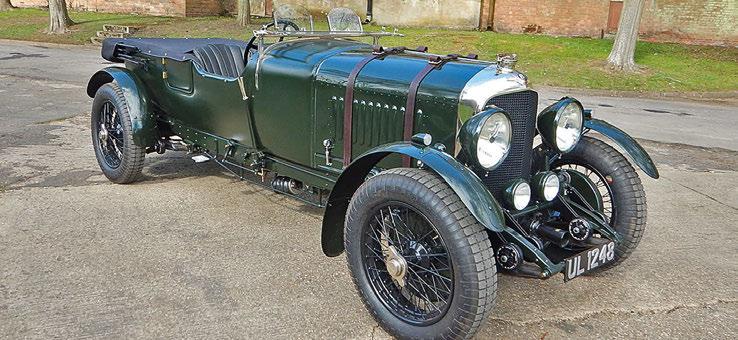
Impressive restoration by top marque specialist. Matching numbers, super nice on the road, Hay report.

One of only 77 built, highly original and with an international history. Mechanically sorted with matching numbers.
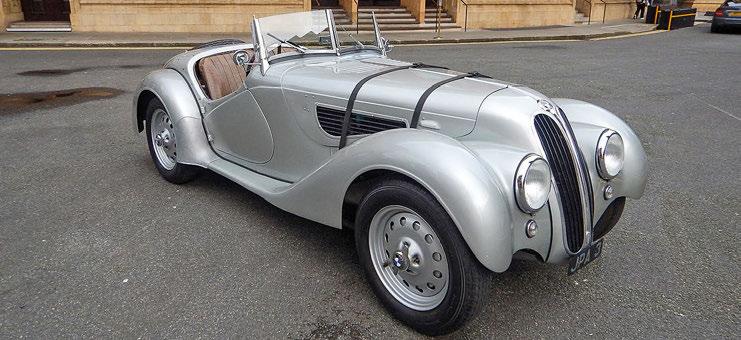
1939 Frazer Nash BMW 328 ‘JPA 3’ is fresh from a 400,000 Euro restoration and must be one of the best. In the right hands will win rallies. Also available
1933 Rolls-Royce 20/25 Roadster 1952 Frazer Nash Targa Florio
See Website for more details


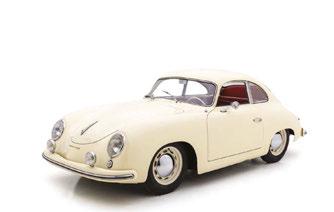
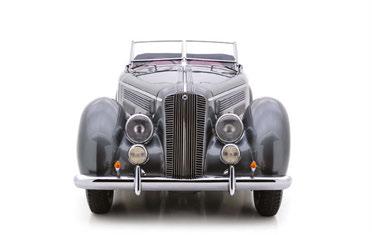

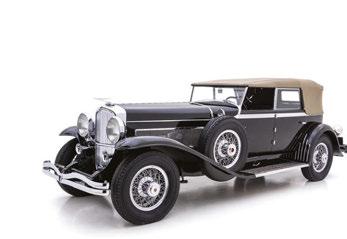



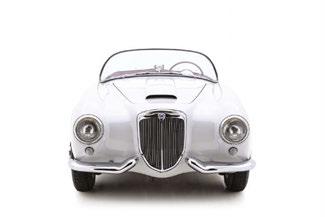










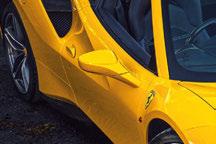



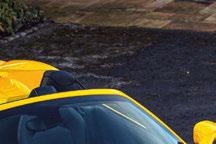
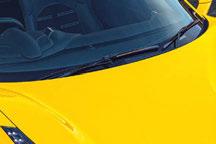




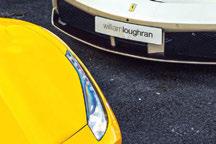
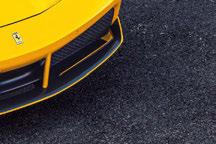


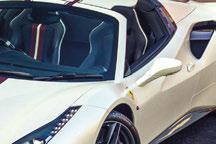














This is a stunning 1 owner car presented in Giallo Modena with nero leather interior. Supplied new and fully serviced by HR Owen in London this car comes with a high specification which includes full electric daytona style seats, cavallino stitched in giallo on the headrests, suspension lifter, carbon fibre drive zone with LED`s, Scuderia shields, alluminio brake callipers, carbon fibre exterior package, carbon fibre dash inserts, 20” forged diamond alloys and 4 pieces of luggage that match the interior of the car.












5,730 miles


This unique car has been ordered through the Ferrari Tailor made department which allows for greater choice of options. The car is presented in Bianco Lagos Opaco with nero fabric interior. The car has nearly £57, 000 of options including extensive red carbon fibre through out the interior and exterior of the car, suspension lifter, Scuderia shields, F12 TDF style seats with lifter, carbon fibre drive zone with LED`s, front and rear parking cameras and has full PPF coverage plus much more.
5,795 miles










































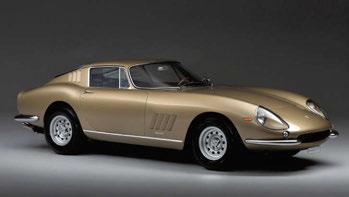












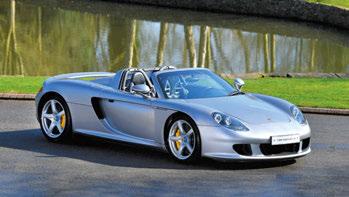
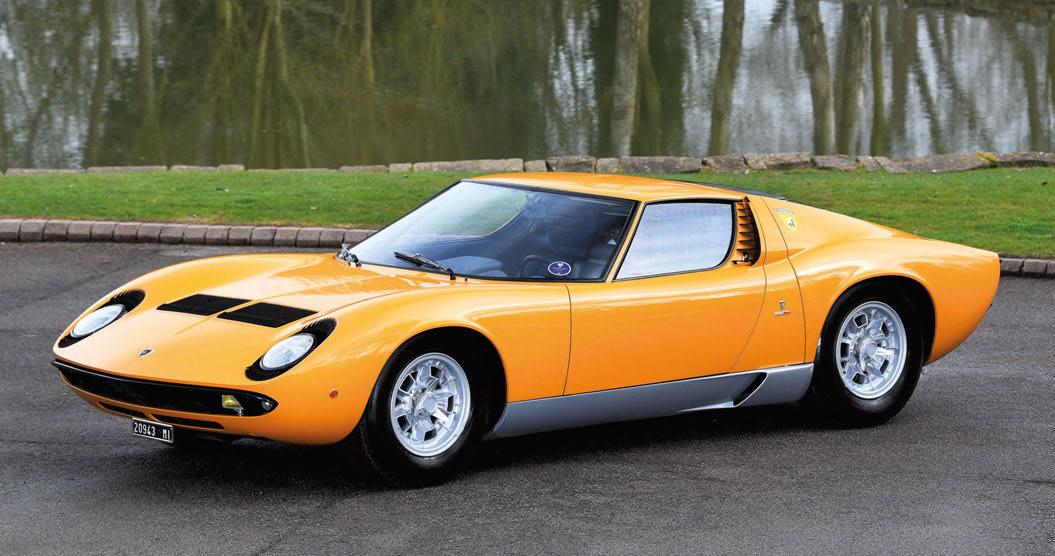
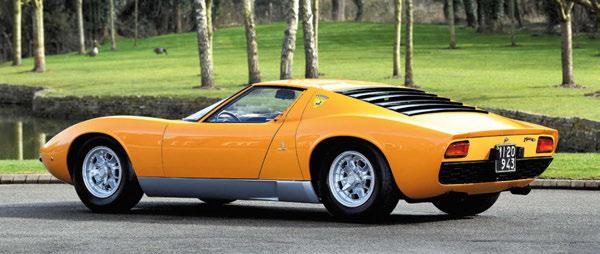




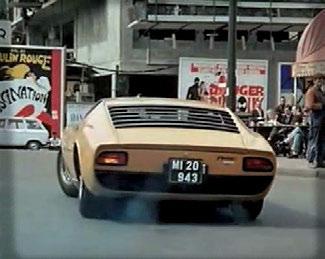

1929 Bentley 4.5 Litre Supercharged Le Mans
An exceptional late 4.5 Litre rebuilt to the highest standards with international rallies and competitive events in mind. Excellent history. Recent events include the Mille Miglia, Spa, & BDC Silverstone.
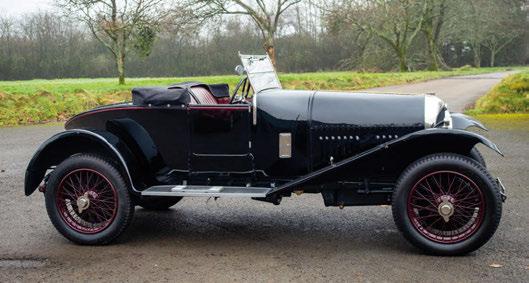
1924 Bentley 3 Litre Speed Model Rare original 2 seater. Full history.
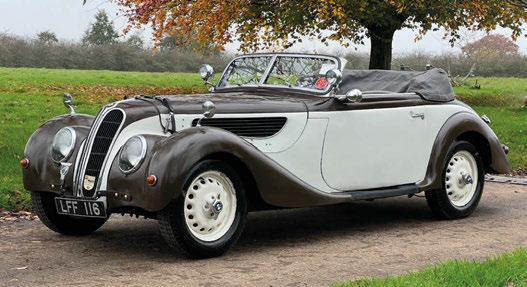
1938 BMW 327/28. One of the rare 327 cars fitted from new with the race-bred 328 engine.
We are always eager to buy important collectors cars.
cars


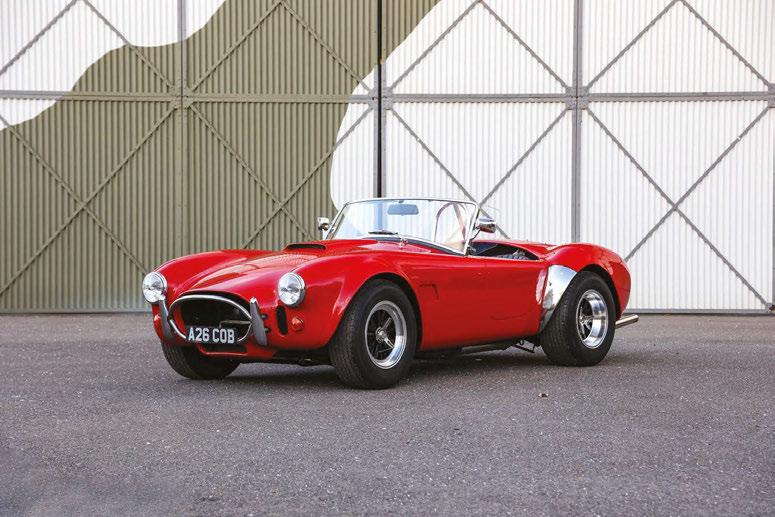
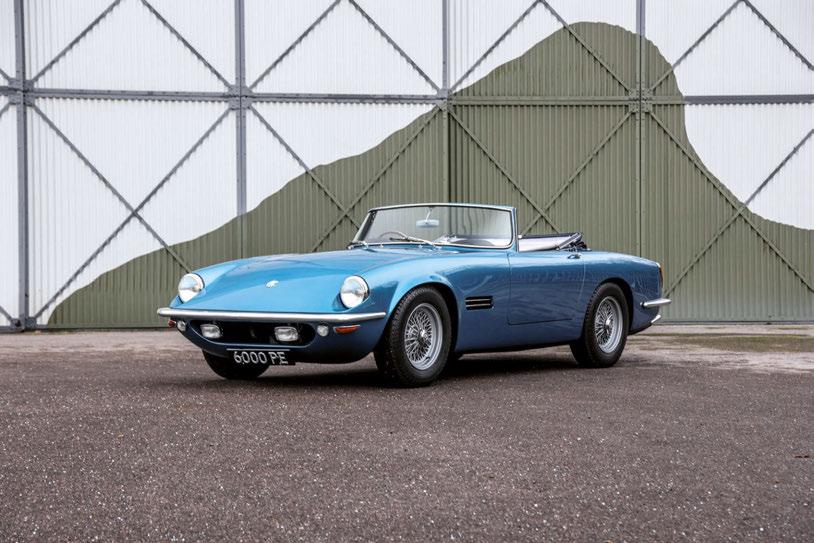

+44 (0)1923 220370 enquiries@ndrbentley.com
NDR Limited, MIll House, 119 Bushey Mill Lane, Watford WD24 7PD


1938 Lagonda V12 Le Mans
Exquisite in every detail. Excellent road/ race combination. WO Bentley’s mechanical masterpiece.
Bentley 3/8 Litre
An absolute hoot to drive. Not for the shy and retiring. Toured, raced and much enjoyed.
In excellent all round condition this is the ideal vintage Bentley for any tour or rally. This short chassis 4 ½ Litre with excellent handling would comfortably tackle any rally stage and tour home in comfort.
1931 Bentley Blower Birkin team car styling
With all hard work done, engine rebuilt with Laystall counter-balanced crank and shell bearing rods and ready to go. A real driver’s car: purposeful, robust, agile and capable of covering long distances with its comfortable ride and 35 gallon Le Mans tank.
Charismatic, powerful and a great long distance tourer.
One of a kind. The Bentley Black Train. Show stopping looks 8 Litre power Quite magnificent.






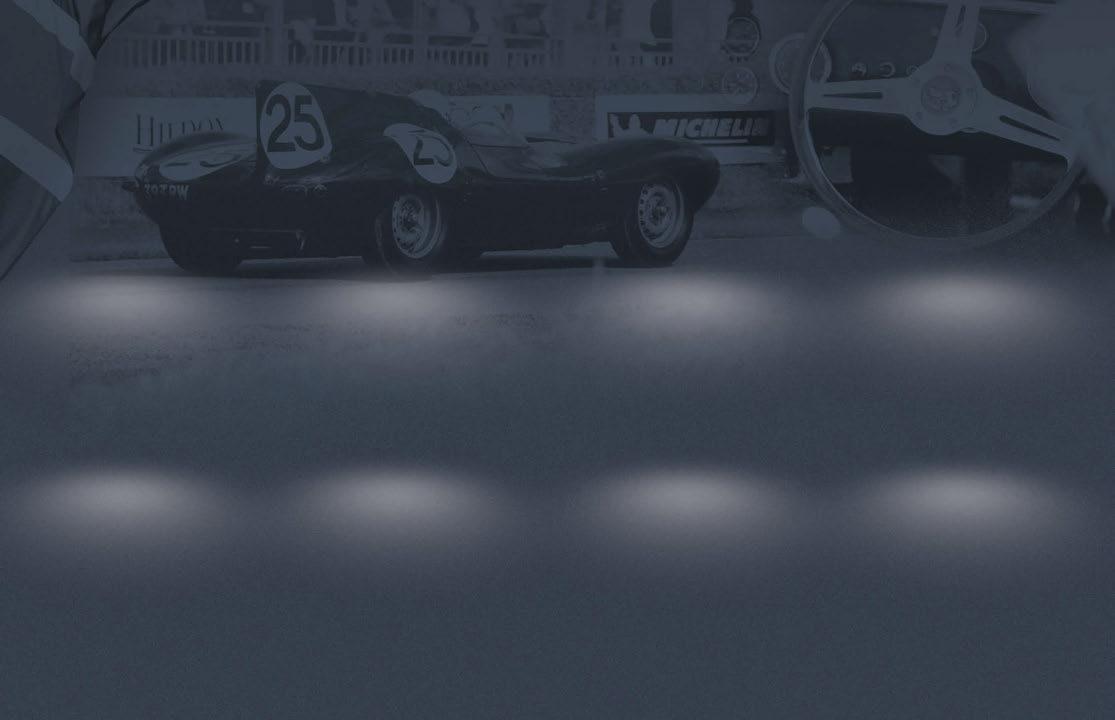


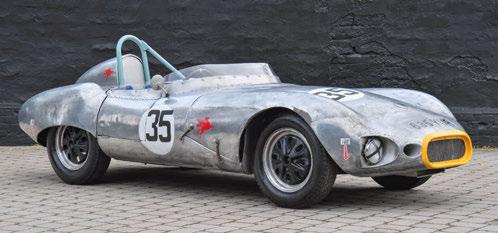
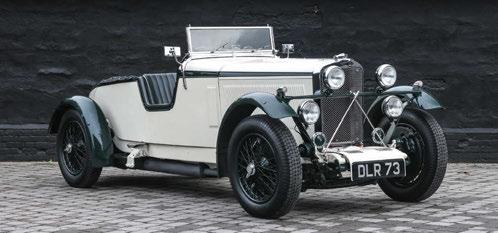

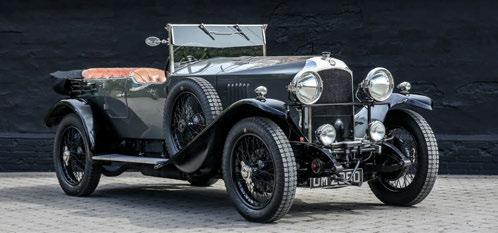
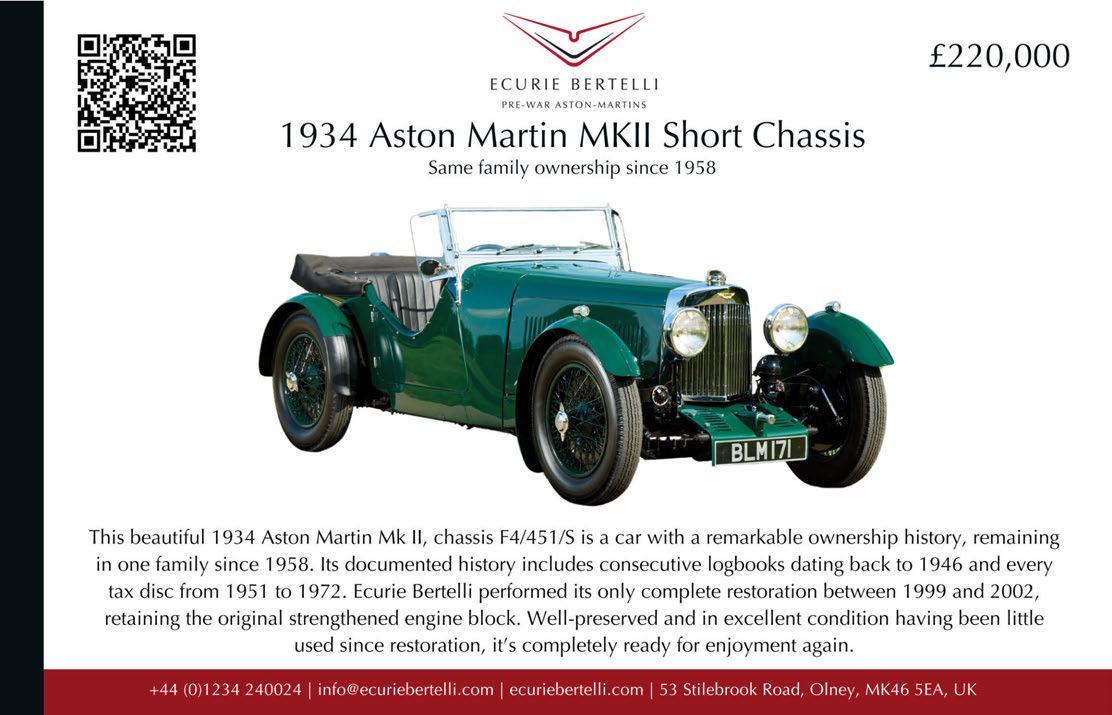
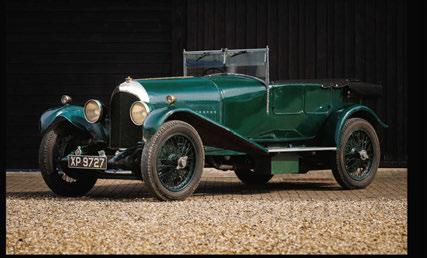

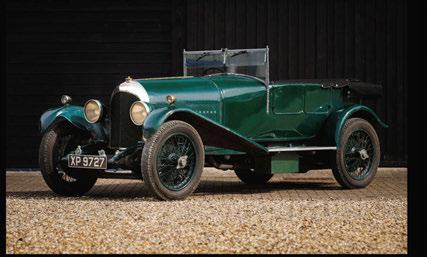
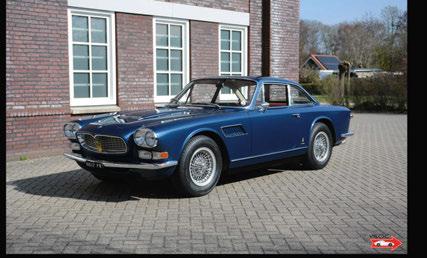




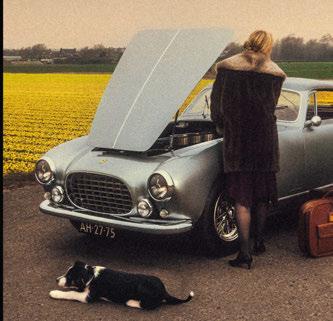


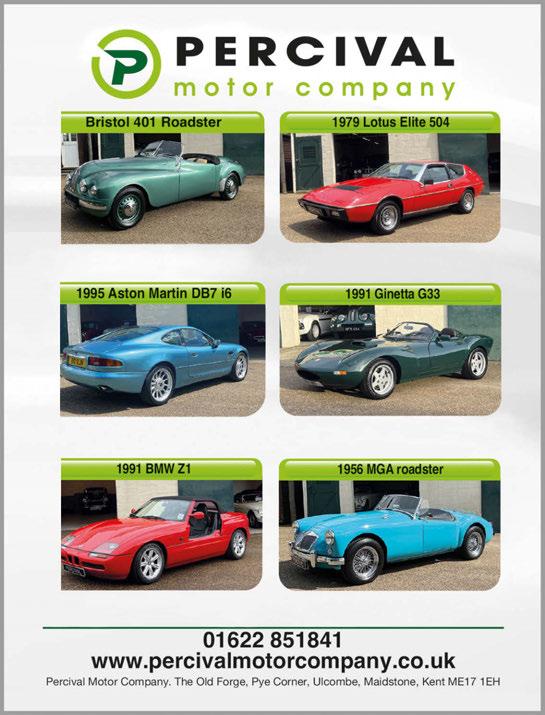












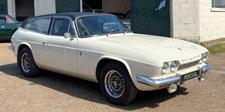














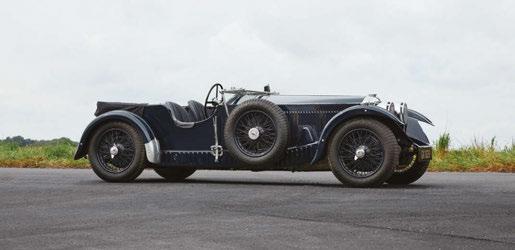
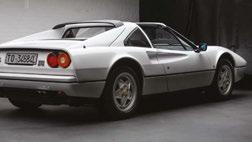
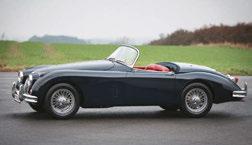























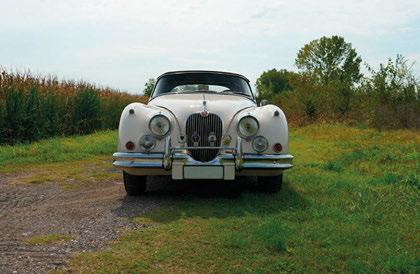
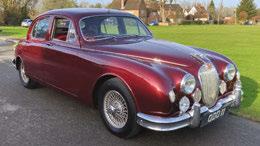
1959 JAGUAR MK1 3.4 MANUAL/OVERDRIVE
Original UK, Matching Numbers, RHD. Two previous owners since 1972. A very well cared-for example of this rare and very desirable model. Excellent original interior trim throughout. Lovely history. Original Buff Log Book. Driving extremely well. A rare opportunity.
£34,995.00
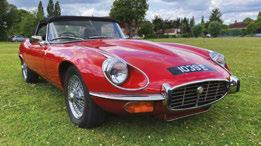
1973 JAGUAR E-TYPE V12 S3 ROADSTER
Carmen Red with Black trim. Excellent well-maintained example. WinSpeed maintained since 2015.
£78,500.00
1967 JAGUAR E-TYPE SERIES 1 4.2 ROADSTER
Carmen Red with Black trim from private collection. UK RHD Matching Numbers. Excellent history file with first-class maintenance. Terrific.
£119,500.00



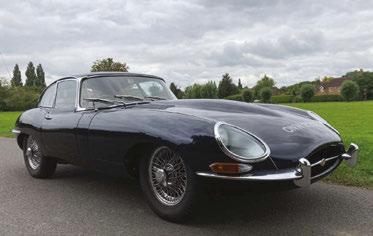
1964 JAGUAR E-TYPE S1 3.8 COUPE
Opalescent Dark Blue with immaculate Grey interior trim. A UK RHD car. 5-speed gearbox. Fully restored. WinSpeed maintained. Driving beautifully & Immaculate.
£109,500.00
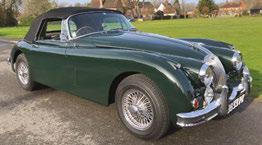
1960 JAGUAR XK150 `S` 3.8 DROPHEAD COUPE
One of the ultra-rare 69-only UK Right Hand Drive examples. Very desirable. 5-Speed gearbox and Power steering. Immaculate. Excellent long-term ownership. Maintained by WinSpeed since 2010. Driving beautifully.
£185,000.00

1970 JAGUAR E-TYPE SERIES 2 ROADSTER
Carmen Red with Black trim. WinSpeed maintained with good expenditure since 2013. Driving very well.
£78,500.00

Discover over 3000 listings of rare, hard-to-find and out of print mostly motoring and motor racing books. With a proven track record in sales on eBay and trusted by collectors worldwide, indulge your passion for automotive heritage and visit our eBay boutique.








Derby Plating
Derby Plating
Derby Plating
Est. 1979
Est. 1979
Est. 1979










Specialist electroplaters, polishers and metal finishers.
Specialist electroplaters, polishers and metal finishers.
Specialist electroplaters, polishers and metal finishers. Re-chroming to the highest concours and show standards
Re-chroming to the highest concours and show standards
Re-chroming to the highest concours and show standards
148 Abbey Street, Derby DE22 3SS
148 Abbey Street, Derby DE22 3SS
Tel: +44(0) 1332 382408
Tel: +44(0) 1332 382408
148 Abbey Street, Derby DE22 3SS
Tel: +44(0) 1332 382408
Email: info@derbyplating.co.uk www.derbyplating.co.uk
Email: info@derbyplating.co.uk
Email: info@derbyplating.co.uk www.derbyplating.co.uk
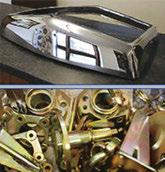

www.derbyplating.co.uk

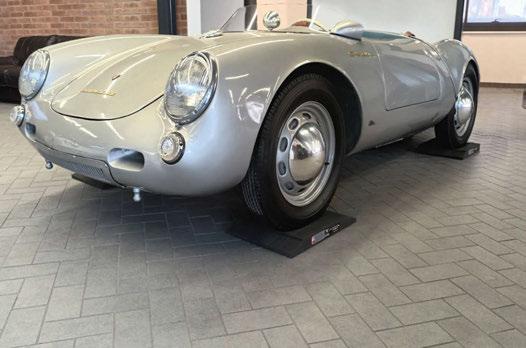


info@altairego.it
•




















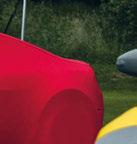



























�
�






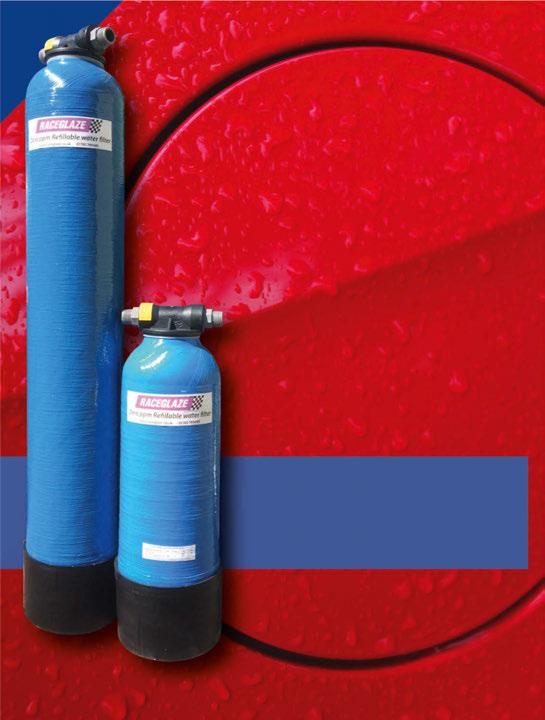






















Situated 5 minutes from the A3 on the Surrey / Hampshire / Sussex borders convenient for Goodwood Discreet secure insulated storage facility for any car or motorcycle. For further information Tel: 01420 472 273 E-mail: southlandsccs@gmail.com Web: www.southlandscherishedcarstorage.co.uk
Onsite service and repair available

























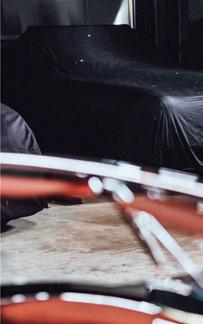










































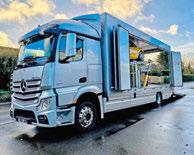








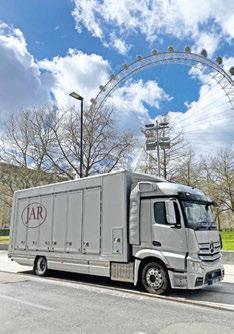


































644599
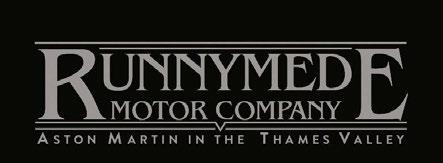
Established 1978
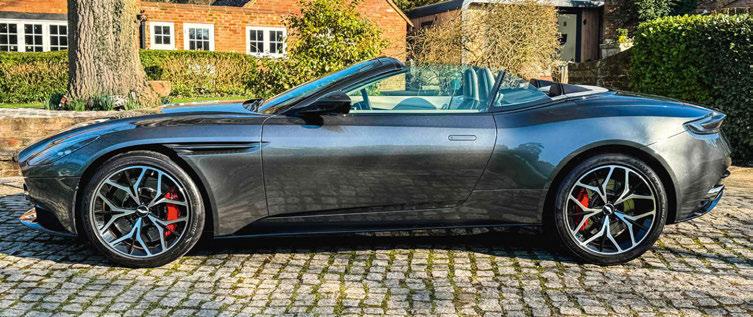
2018 Aston Martin DB11 V8 Volante in Magnetic Silver with two tone Obsidian Black and Mocha hide interior. High specification including Touchtronic transmission, high spec premium audio system with blue tooth, high spec cobra tracking, electric heated seats, fully adjustable electric steering column and 20” Diamond cut alloys. One owner and a mere 11,700 miles from new and in “As New” condition. Now offered for sale at a huge saving on list at £89,950
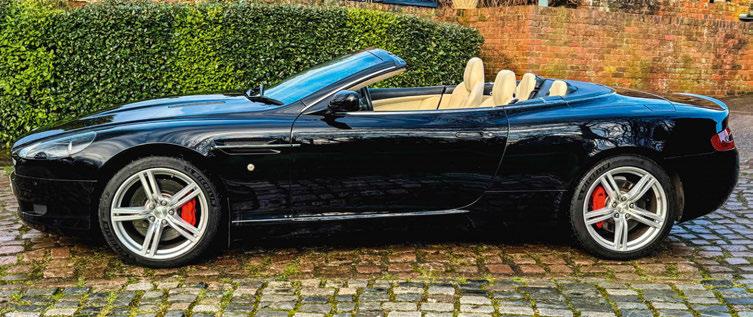
2008 model year Aston Martin DB9 Volante in Onyx Black with Cream Truffle hide interior. This is a beautiful example that has covered only 52,300 miles with a fully stamped up service history. It is in fabulous condition reflecting just how well it has been kept. The spec includes satellite navigation, climate control, electric heated seats, cruise control, front and rear heated screens and a fully adjustable steering column. Fully serviced and ready to be enjoyed at £32,950.
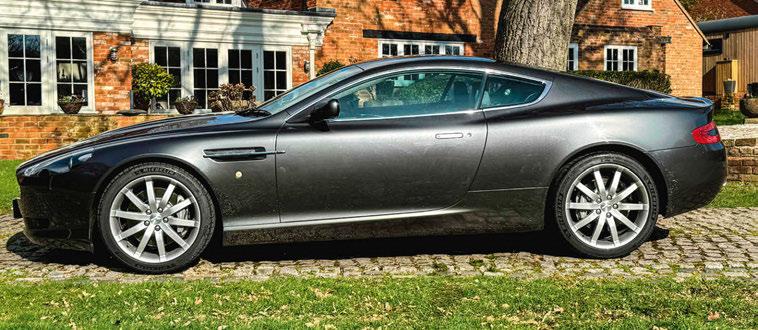
2005 Aston Martin DB9 in Meteorite Silver with Obsidian Black hide interior with Piano Black centre console. This is a beautiful example with only 27,600 miles with full-service history until February 2025. The spec includes Touchtronic transmission, Satellite Navigation, Climate Control and electric heated seats. In exceptional condition for a 20-year-old Aston Martin and not expensive for one in this condition at £29,995.



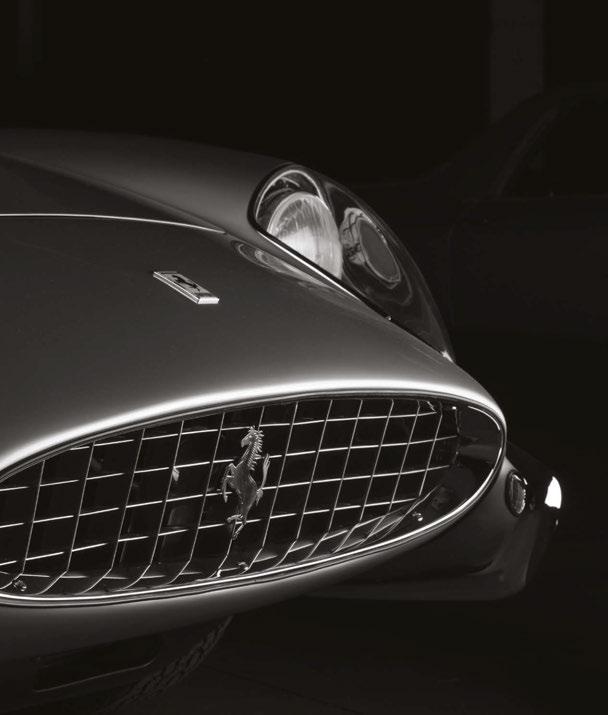




by James Elliott
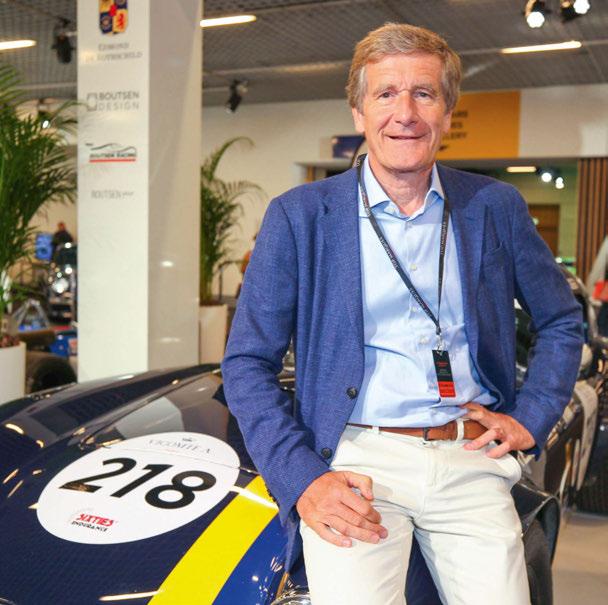
Monaco-based Belgian F1 star who has a thriving aviation company and also a classic car business
MY MOTHER WILL tell you that I started my professional career at three years old because that’s when I told my parents I wanted to be a Formula 1 driver. There was no link whatsoever in the family to cars and even today no one knows where that came from!
By the time I was eight I was sitting on my father’s lap and driving with him and, as soon as I was big enough to reach the pedals, I insisted on parking my parents’ cars at home, but got in trouble with the police for never going directly from street to garage – it was always a 5km trip!
As soon as I got my driving licence at 18 I enrolled in the André Pilette racing school in Zolder. I had no idea if I was any good, especially never having done karting, but I desperately wanted to be the best and the first time I sat in a single-seater everything made sense. At the end of the year I won the race school’s championship, which earned me a car to race in four events, though I had to pay for the transport and hotels. Those early days were so tough. At the same time as trying to get a racing career going I was studying mechanical engineering or doing ten months’ military service, so there was no time to find sponsors. My road car went from being a Triumph Spitfire Mk2 that I had fixed up to a Ford Escort Estate that I needed for its practicality. I built my own Formula Ford engine as part of my studies and was proud to win 15 out of 18 races with it. It was an exciting but frustrating time – something was happening, but if I didn’t find the money, I couldn’t go racing.
Left
Ever since his mammoth crash at Le Mans aboard the Toyota GT-One in 1999, Boutsen has had a different perspective and cherishes every day.
After Formula Ford I moved to Formula 3 and was helped and supported by Jackie Ickx, which was a jumpstart in international racing for me. In my second year in F3 I lost the championship only when I got a puncture in the final race, but by then I was racing full-time and struggling to survive, spending 80% of my time looking for sponsors.
Having done all my own mechanical work in Formula Ford, in F3 Robin Herd approached me and I worked in the March factory for no salary in return for him running me in his cars. I then had two good seasons in F2, but I just kept climbing the stairs until I got to the top, never looking at the summit, just doing my thing as best I could and not even thinking about the next thing until I got there.
Even as a works driver in F1 I never relaxed. I am fantastically happy with my F1 career – all ten years [1983-93] and three wins of it – but I was always acutely aware it could stop at any moment, for financial reasons, or maybe by not being good enough. I always had a Plan B.
I raced in Touring Cars and other disciplines, too, but I always had a fondness for endurance racing because it is more about teamwork, which is something I like, plus you spend a lot of time in the car. Back then you could combine it with a life in F1 and I did ten Le Mans and was second twice, with Peugeot in 1993 and Porsche in 1996. But looking back on it, the highpoint of my career was winning my first Formula Ford race because that’s when I finally knew I had talent.
I have always had a passion for flying and as soon as I had a bit of money in F1, I bought my first plane and used to give everyone lifts –the most F1 drivers I ever had in my plane at one time was ten. In 1997, I had a Cessna Citation and Heinz-Harald Frentzen said he’d like to buy one, but didn’t know how to, so I did it for him. Then Keke Rosberg wanted to upgrade his plane, then Michael Schumacher came to me… There was no plan to go into aviation, but it just developed and when I retired from racing it became my main business.
In 2018 I started a classic car business with my now-partner Tomoyo Kurosaka. She had a client who wanted an F1 car so we started working together (along with my second son Cedric) and so far we have sold 70 or 80 cars into Japan, but the Yen is very weak at the moment so business is docile. We also do car storage: Monaco, where I live, is very small so we have opened a warehouse 15 minutes away.
The aviation business keeps me very busy, but I am just starting to do more things in the classic car world, like concours [Octane interviewed Boutsen while he was judging Sydney Harbour Concours d’Elegance] and a bit of racing. A friend persuaded me to do the Tour Auto in his 911 and we’ve since won that in a Cobra and I can’t stop! I have been to Goodwood with a Toyota GT-One and would love to go back there with the Cobra for the Royal Automobile Club TT. I don’t feel compelled to race, but I enjoy it when I do it.
My sister and her husband’s racing outfit Boutsen VDS is currently restoring the only single-seater I kept – the 1989 Williams FW-12C that gave me and the Renault V10 our maiden victories in Canada. We are struggling to find parts because Renault scrapped everything. I also have a concours condition August 1957 Fiat Cinquecento, the perfect car for Monaco! I am resisting buying more classics until I am sure what I want and the market is right – at the moment I fall for every car I see!
Overall, I’ve been extremely lucky to be able to do what I did in racing as well as what I do today. I had a horrendous accident in 1999 at Le Mans [in the Toyota GT-One] that nearly cost me my life. It took me four years to recover and to live normally again, so since then I have treated every day as a gift.

















2015 BENTLEY CONTINENTAL GT3R 1 OF 1




One of 300 GT3-Rs worldwide. All were black or white with the exception of this car finished in anthracite for a British VIP Bentley customer. As new throughout. 4,000 miles. Full Bentley service history.


LEGACY MACHINE SEQUENTIAL EVO
Groundbreaking dual chronograph
Unprecedented range of timing modes
Patented Twinverter binary switch and internally-jewelled clutch shafts
Zirconium case, FlexRing damping system
80m water-resistance, 585 components mbandf.com

